Top 100 NBA Players of 2019

The Crossover is proud to offer our list of the Top 100 NBA players of 2019, an exhaustive exercise that seeks to define who will be the league's best players in the 2018-19 season.
Given the wide variety of candidates involved and the deep analytical resources available, no single, definitive criterion was used to form this list. Instead, rankings were assigned based on a fluid combination of subjective assessment and objective data. This list is an attempt to evaluate each player in a vacuum, independent of his current team context as much as possible. A player's prospects beyond the 2018-19 season did not play a part in the ranking process.
Injuries and injury risks are an inevitable component of this judgment. Past performance (postseason included) weighed heavily in our assessment, with a skew toward the recent. First-year players were not included. A predictive element also came into play with the anticipated improvement of certain younger players, as well as the possible decline of aging veterans. Salary was not taken into consideration. Otherwise, players were ordered based on their complete games. You can read more here on the limitations of this kind of ranking. To see our 25 biggest snubs from this year, click here.
Please feel free to look back to SI.com’s Top 100 Players of 2018, 2017, 2016, 2015 and 2014. A special thanks, as always, to those resources that make researching a list like this possible: Basketball-Reference, NBA.com, ESPN.com, Cleaning the Glass, and Synergy Sports.
Complete Top 100 Breakdowns: 100-51 | 50-31 | 30-11 | 10-1
100-51
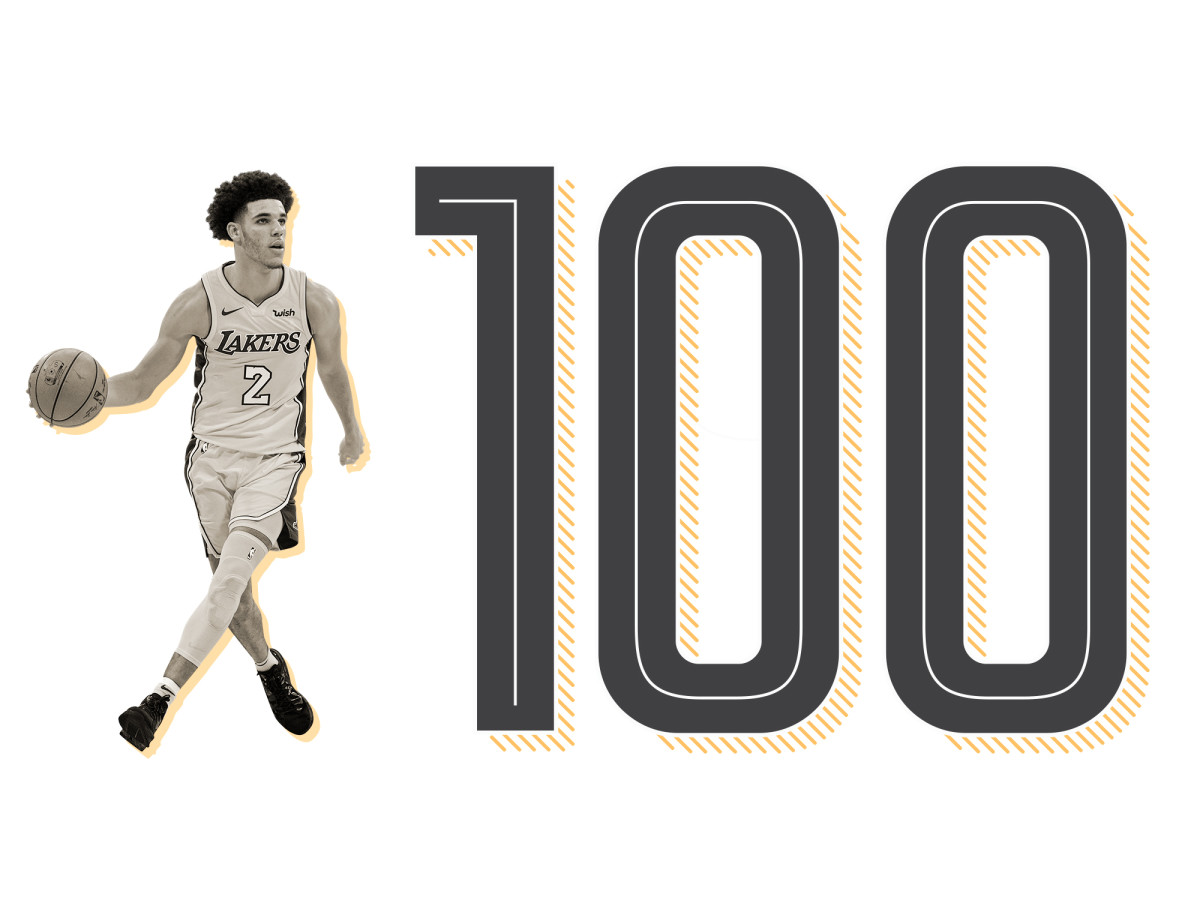
Lonzo Ball
Los Angeles Lakers
Ball (10.2 PPG, 6.9 RPG, 7.2 APG) was the league’s easiest target last season: He faced significant pressure as the No. 2 pick, he faced extra scrutiny on a high-profile franchise that had one eye on LeBron James, he faced derision for his unsightly jumper and fading confidence, and he faced second-hand disdain thanks to the ramblings of his infamous father and his immature brother. “Baptism by Fire” would be an appropriate name for a documentary about his first season, which began with Patrick Beverley eating him for dinner and ended with knee problems that ultimately required summer surgery.
At his best, the 20-year-old Ball plays a beautiful weirdo brand of hoops that would merit a full chapter if “Free Darko” ever released a sequel. His passing and vision—hailed as elite by pre-draft analysts—lived up to the hype. He proved to be a capable pace-setter and a strong rebounder for his position. Most impressively, he was a plus defender right out of the gate thanks to his good size and instincts. On paper, Ball’s role in James’s new cast is intriguing. A successful blueprint would utilize him as a secondary passer and off-ball cutter, rather than as a full-time lead guard launching misguided threes in volume. Although Ball is hardly a textbook modern backcourt prospect, the dawn of “LeBronzo” promises to carry his distinctive game to new heights. — BG
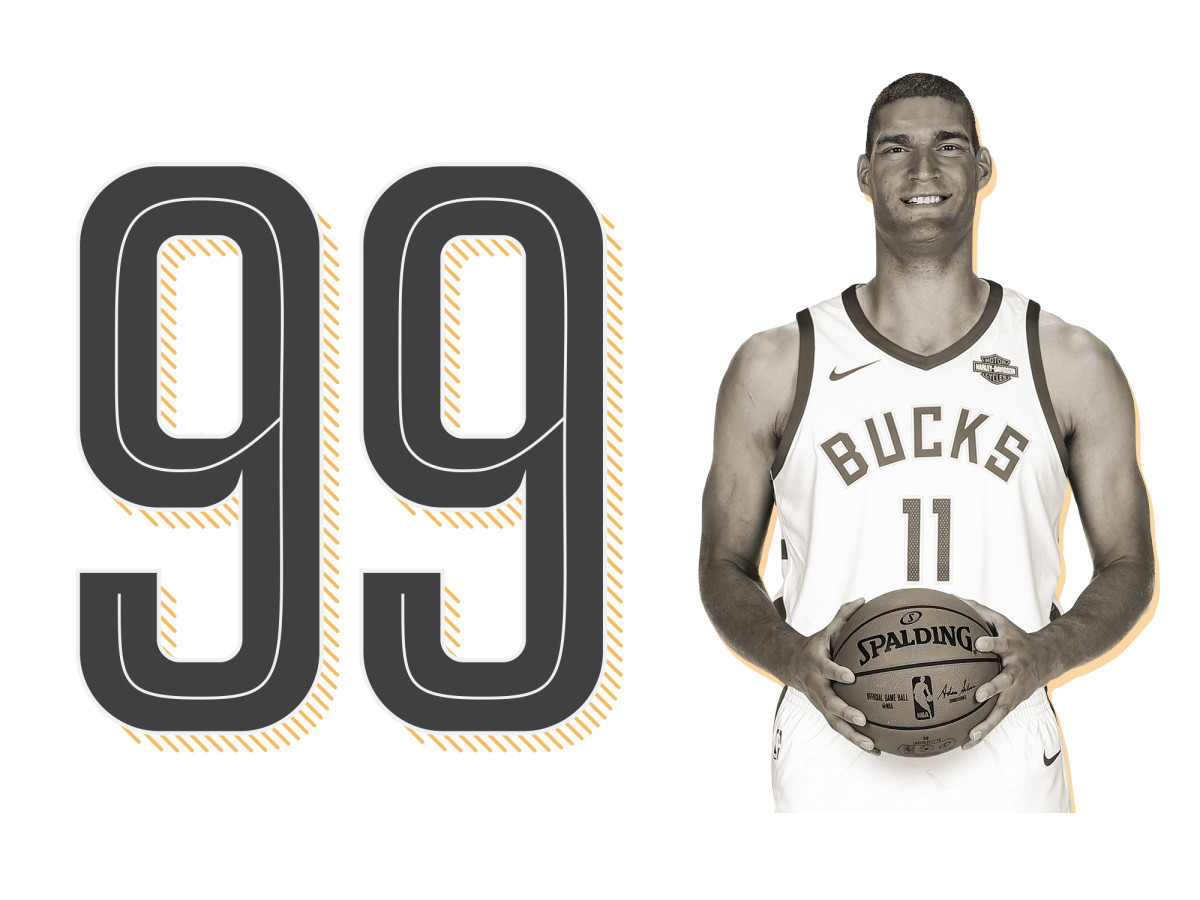
Brook Lopez
Milwaukee Bucks
Just because the Lakers had no use for Lopez (13.0 PPG, 4.0 RPG) doesn’t mean the same is true for other teams. It’s not hard to find room for a seven-footer who can score inside and out, and most important: one who doesn’t need much preamble to set up his scoring opportunities. Posting up Lopez is an option, but far from the only one. You could set him up for rolls to the rim or rely on his cuts to complement other offense. Or, if you prefer, you can station him outside to open up the lane. Lopez isn’t a lights-out three-point shooter, though last season he converted the same percentage of his threes (34.5%) as Marc Gasol, Anthony Davis, and Blake Griffin—all bigs with some light stretch to their games.
All told, Lopez still scored 20 points per 36 minutes for a team that had no incentive to play him or rely on him in any way. That will be different in Milwaukee, as it would be on any number of teams looking to actually win games this season. Lopez’s defense is clearly imperfect, though he at least has the benefit of sheer size; it’s hard to clear the ball over a center with that kind of reach, even if he runs into trouble defending in space. — RM
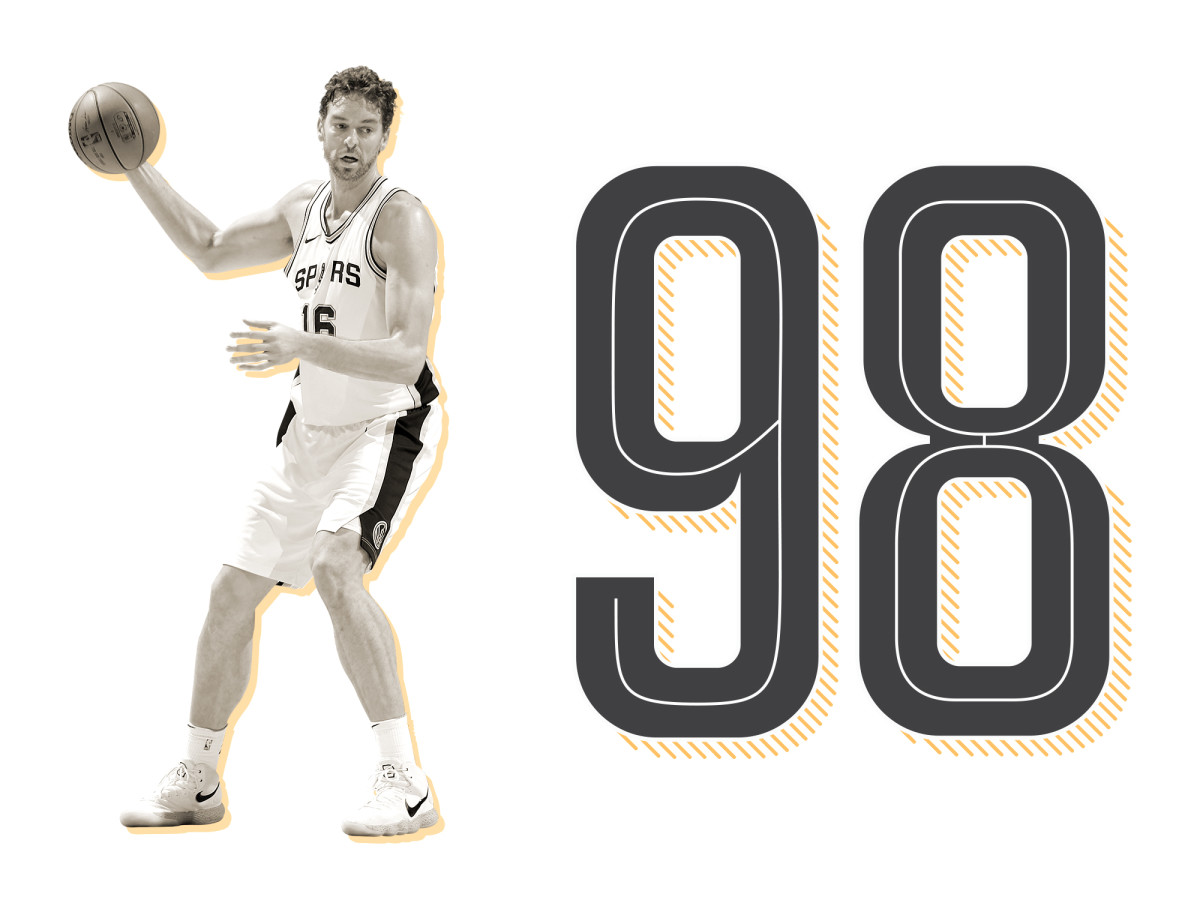
Pau Gasol
San Antonio Spurs
Age may have restricted how and when Gasol can be of help, but coaches tend to find a place for those who understand the symphony of the game. Gasol (10.1 PPG, 8.0 RPG, 3.1 APG) is more than the collection of his skills and liabilities; his enduring value comes in knowing what opportunities might materialize, and having the presence of mind to assist in their creation. Any offense that moves would benefit from dropping Gasol in the middle of it all, where he presents a scoring threat even as he connects the dots for his teammates.
The cost comes in mobility—both in a literal sense and a tactical one. On his best days, the 38-year-old Gasol navigates the floor at a brisk shuffle. Switching isn’t an option. Longer rotations can be a challenge. San Antonio managed a top-five defense in spite of this, but Gasol would present much greater problems for many lesser teams. His, like many in this range, is a borderline case. What value Gasol still has depends on how effectively a team manages the narrowing limits of his game. — RM
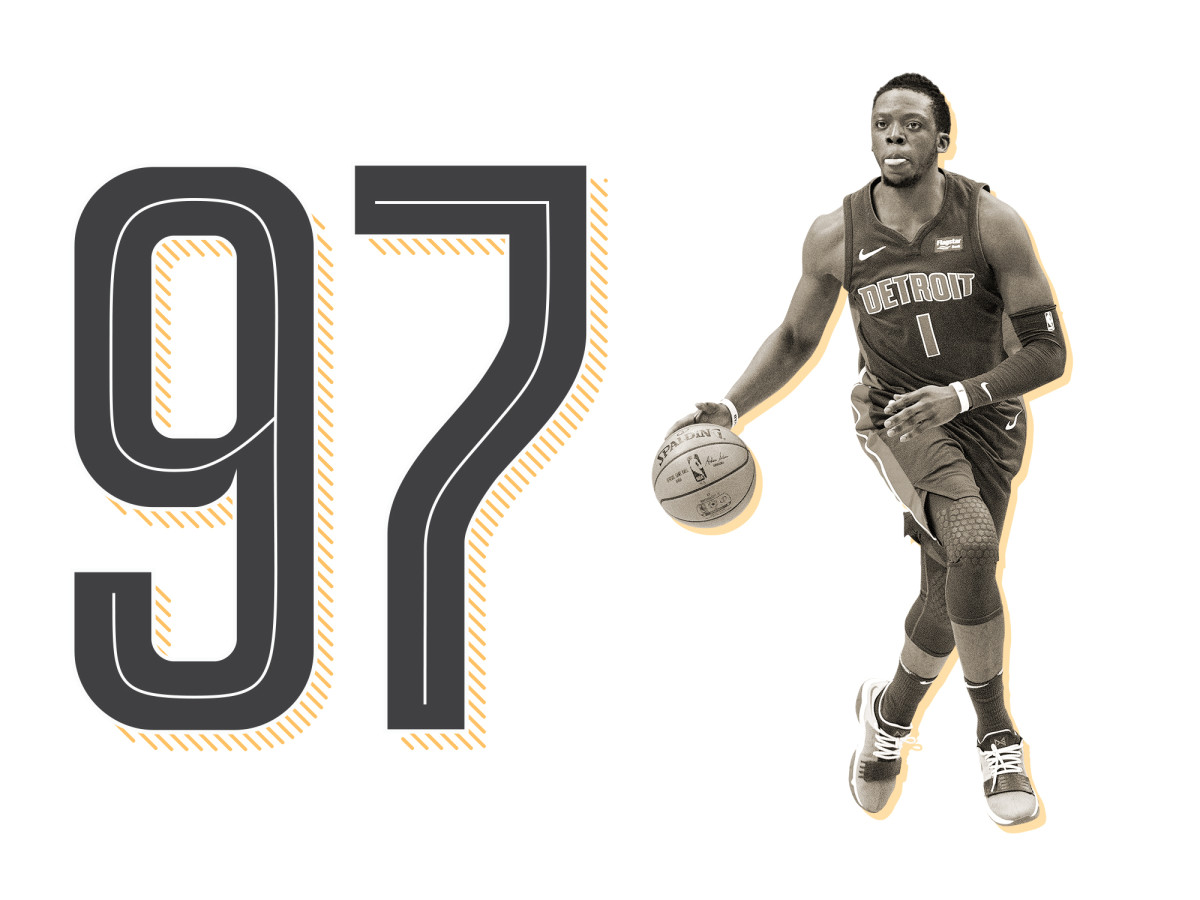
Reggie Jackson
Detroit Pistons
Stan Van Gundy bet the house on Jackson (14.6 PPG, 2.8 RPG, 5.3 APG) and lost. In 2015, the longtime coach targeted the stubborn, capable point guard as the centerpiece of a win-now spending spree aimed at fast-tracking the Pistons back to the postseason. The plan worked momentarily, as Jackson turned in a career year en route to the 2016 playoffs. But Jackson’s spotty health plunged Detroit back into the lottery in 2017 and 2018, and Van Gundy was fired in May. The final stats on the Jackson/Van Gundy marriage: $80 million, one playoff trip, zero playoff wins, two season-altering injuries, numerous post-game rants, and one desperate Blake Griffin trade that will likely clog Detroit’s books for years to come.
While Jackson, 28, is a bit of a forgotten man at this point, it’s worth noting that Detroit played at a 49-win place last season with him in the lineup. To piece his reputation back together, Jackson will need to prove that he can still get to the rim consistently, shoot the three far better than he did in 2017-18, and stay healthy for a full season. With Griffin and Andre Drummond now capable of handling some of the playmaking load, Detroit can make the playoffs without Jackson turning back the clock to his 2016 form. Expecting Jackson to be a franchise point guard was always asking too much, but he has enough talent and experience to be recast effectively in a smaller role if he’s willing. — BG
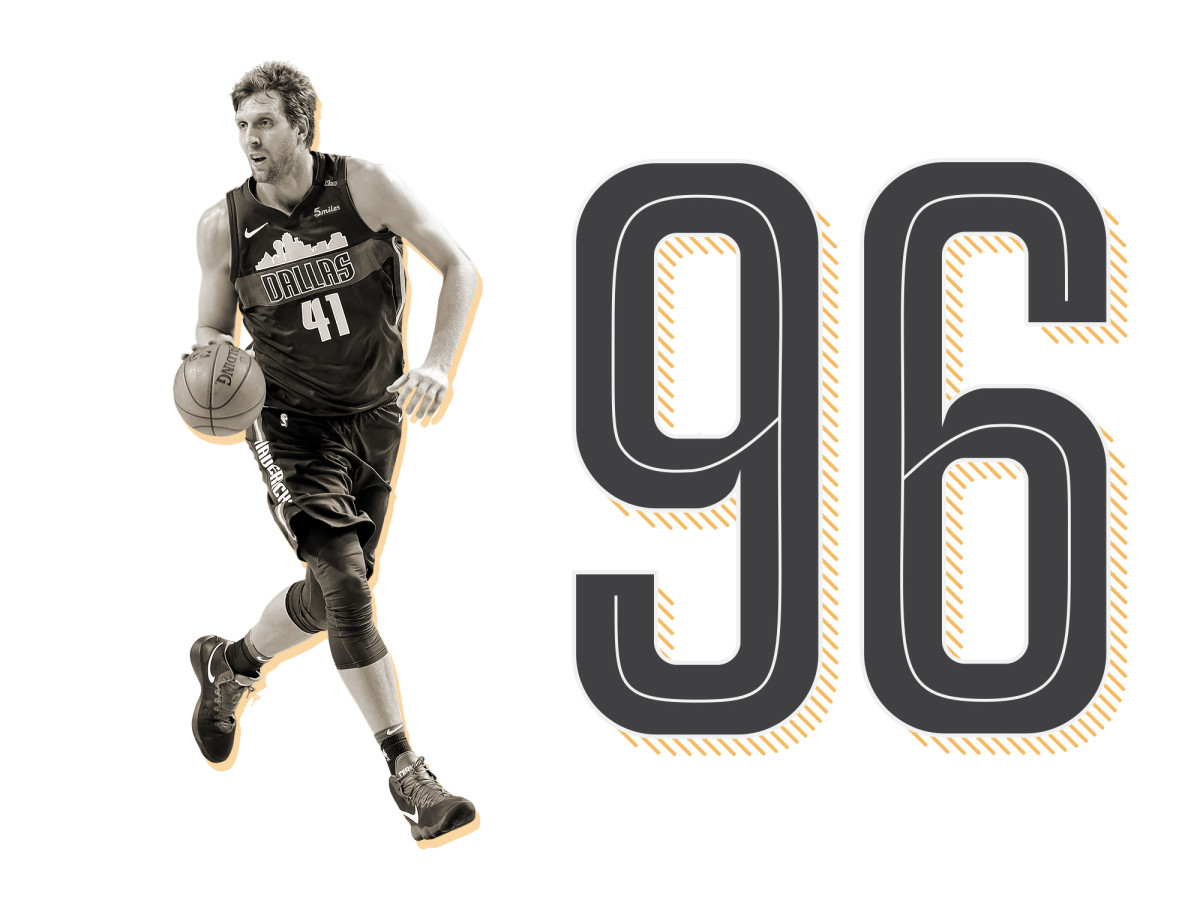
Dirk Nowitzki
Dallas Mavericks
To understand how Nowitzki clings to this list past his 40th birthday, one need only watch how defenses regard him. Every screen he sets has an adhesive effect; those defenders involved know that their first priority is to slow the progress of the ball handler, but to do so requires that they reluctantly peel away from Nowitzki (12.0 PPG, 5.7 RPG). There is more than reputation at work. Just last season, Nowitzki rated as one of the better spot-up shooters in the league, per Synergy Sports—more efficient, shot for shot, than even Klay Thompson and J.J. Redick. Opponents won’t dare leave Dirk because they know just how punishing his open looks can be.
Nearly everything else in Nowitzki’s game has faded with time. One can practically hear his creaking joints when he tries to back down some younger, springier center, and there is no disguising his slow-motion coverage of the pick-and-roll. It speaks volumes, however, that a walking—err, lumbering?—target like Nowitzki still works out to be a helpful contributor in so many lineups. There is something to be said for standard bearing and institutional knowledge, but even more when those things come from a low-turnover, sweet-shooting big who is more than willing to accept a lesser role. Dirk’s value to an organization has aged more gracefully than his footspeed. — RM
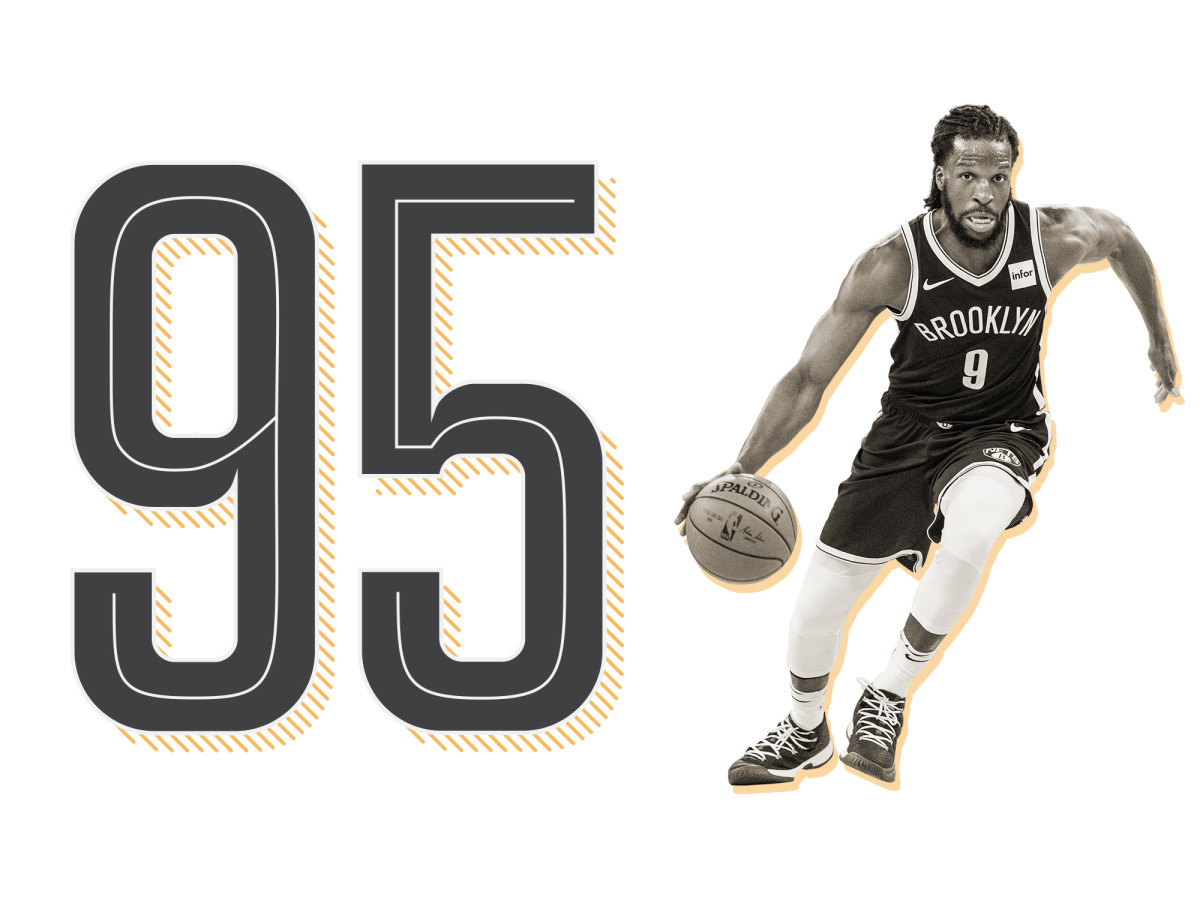
DeMarre Carroll
Brooklyn Nets
Let’s credit Carroll (13.5 PPG, 6.6 RPG, 2.0 APG) with genuine nobility. Remember, it wasn’t so long ago that the 32-year-old forward was leaving Toronto as a huge disappointment due to an exorbitant four-year, $60 million contract, a debilitating knee injury and a pair of meek postseasons. After he was salary-dumped to the dead-end Nets, Carroll could have counted his money and jogged through a losing campaign. Instead, he responded to the trying circumstances with purposeful 3-and-D play. In addition to posting career-highs in points, rebounds and assists, Carroll regained his footing on the defensive end, ranking No. 64 league-wide in Real Plus-Minus.
With better health, Carroll has largely returned to the form he displayed for the 2015 Hawks. On offense, he subsists on catch-and-shoot threes and cuts to the basket. On defense, he rotates through multiple perimeter positions and rates well on hustle stats like deflections and recovered loose balls thanks to his high-activity style. If Carroll can keep things rolling to open 2018-19, he should generate healthy interest from playoff teams at the trade deadline or during buyout season. — BG
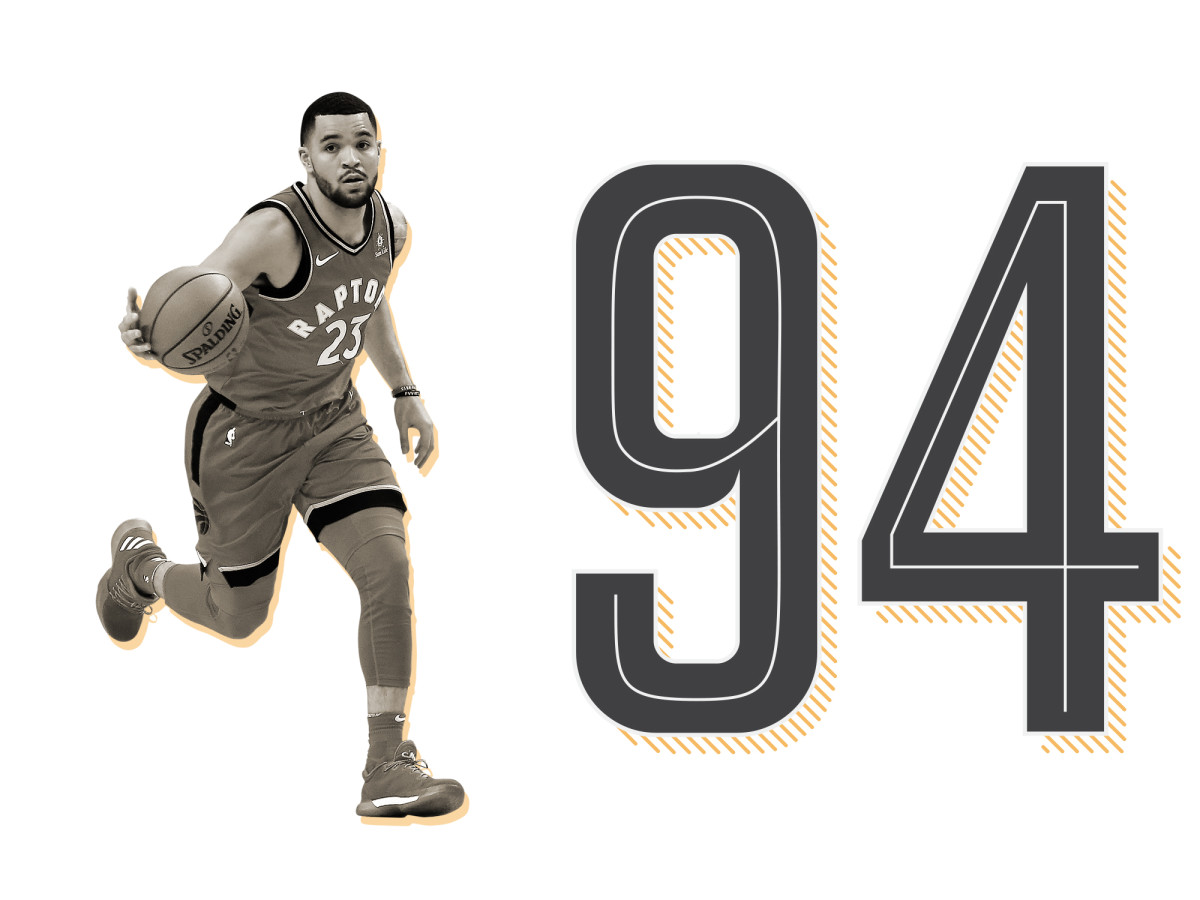
Fred VanVleet
Toronto Raptors
It’s no exaggeration to say that VanVleet (8.6 PPG, 2.4 RPG, 3.2 APG) was an impact stats god last year. The 24-year-old Raptors guard, who finished third in 2018 Sixth Man of the Year voting, was off the charts in virtually every lineup configuration. When he played with his fellow young reserves, who led the NBA among bench groups in net rating, Toronto was +17.1. When he joined a veteran-heavy and starters-dominated group as a floor-spacing third guard, Toronto was +24.9. Remarkably, VanVleet ranked No. 28 in the NBA in Real Plus-Minus and in the top 100 by both Win Shares and WARP. All this for an undersized, undrafted player who has yet to record a single start in two seasons.
The magnitude of VanVleet’s success in a limited role naturally raises some questions. How well would his contributions hold up if he was forced to play more than 20 minutes a night? How would he fare if he was asked to lead a less-talented bench group? How well would his game translate to the playoffs? The early returns on that last question were not pretty. As he worked back from an untimely shoulder injury, VanVleet couldn’t recapture his dependable three-point stroke and wasn’t about to single-handedly solve Toronto’s annual problems with composure and defense. The Raptors’ ugly ending poured some cold water on their much-hyped bench play, but it didn’t erase VanVleet’s substantial progress. The sweep against Cleveland didn’t kill VanVleet’s earning power either, as he cashed in with a well-deserved two-year, $18 million contract in July. — BG
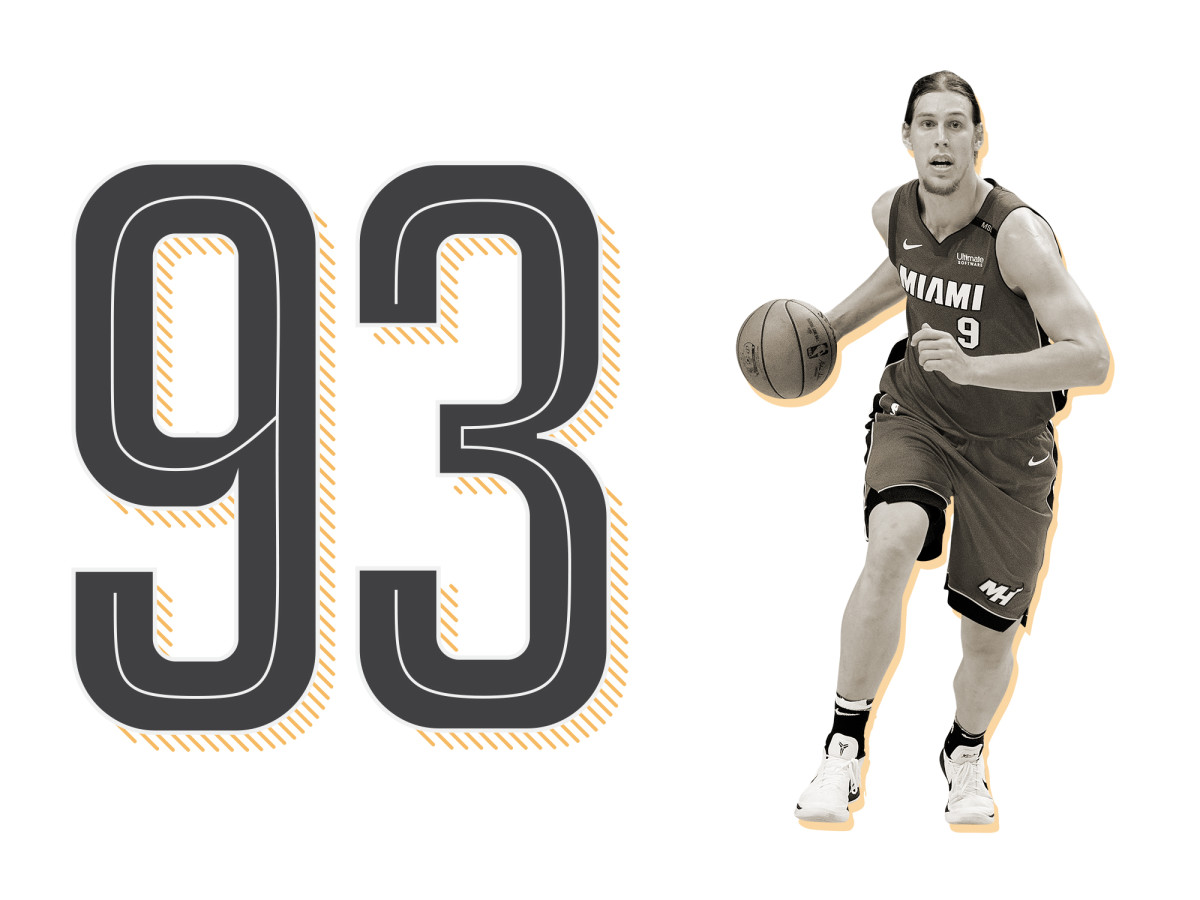
Kelly Olynyk
Miami Heat
Olynyk shoots just well enough from the perimeter to earn a close-out, which is exactly the point. The shot itself is a setup; helpful as it is that Olynyk can take and make threes, his funky, off-kilter drives are the true underpinning of his game.
Each of his forays into traffic is an improbable enterprise. Olynyk (11.5 PPG, 5.7 RPG, 2.7 APG) is about as far from the driving prototype as NBA players come; he isn’t especially quick, or explosive, or creative with the ball. His running form most closely resembles that of a giraffe. Yet when given room to navigate, Olynyk has a knack for sliding between defenders, coursing into the paint for layups of all kinds. Miami played its best basketball last season with Olynyk on the floor, in large part because those ball skills matter. When a big can create space and capitalize when called upon, they allow more possessions to follow through to their natural conclusion. — RM
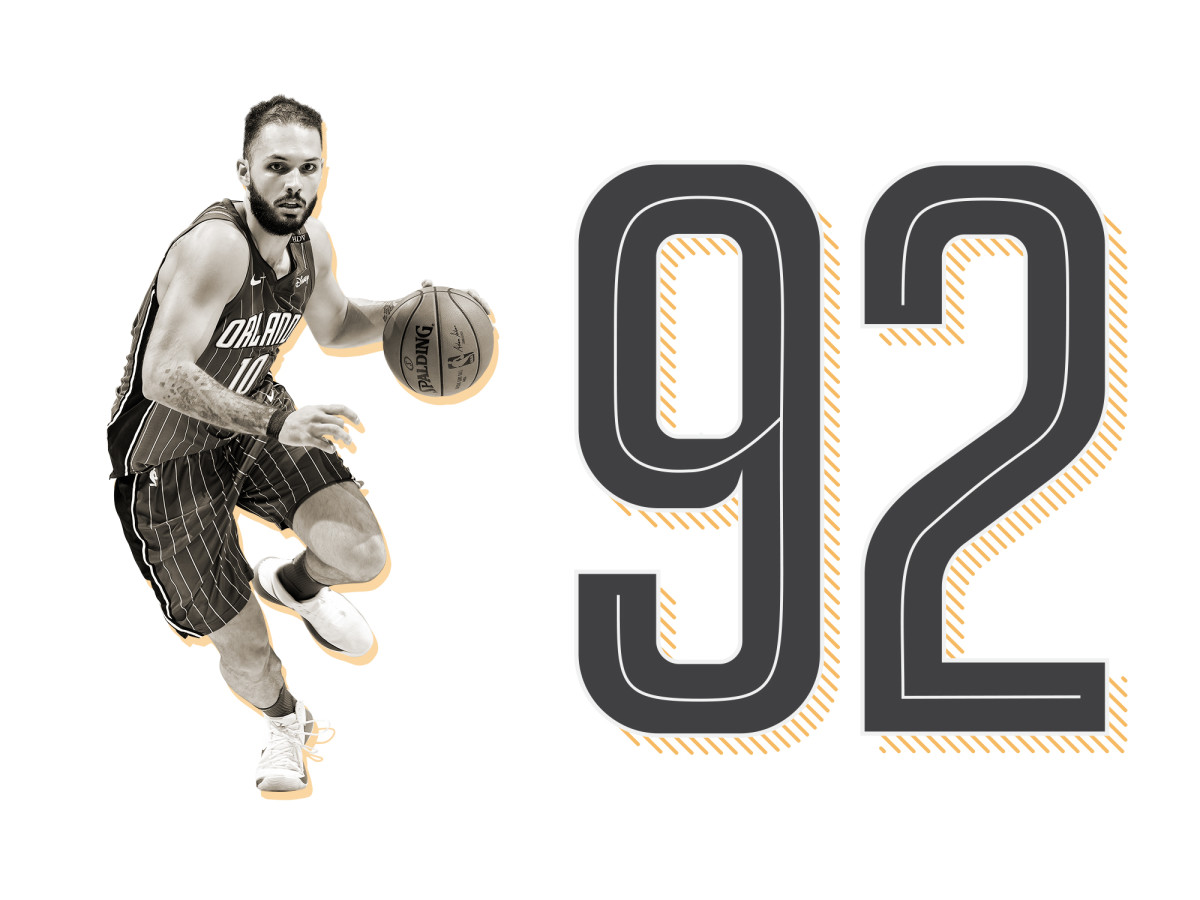
Evan Fournier
Orlando Magic
Thinking for too long about Fournier (17.8 PPG, 3.2 RPG, 2.9 APG) in Orlando can lead to intense feelings of sympathy and hopelessness. The 25-year-old guard is a proven shooter and cheeky ball-handler who is stuck in a constant struggle to score enough points to offset his porous defense, all while playing for an organization that doesn’t offer much in the way of supporting talent or structure. His 2017-18 campaign marked a career year in scoring and efficiency, but it ended prematurely due to injury and didn’t improve the Magic’s playoff prospects in the slightest. If a relatively anonymous Frenchman goes for 22 in a loss in front of a listless crowd, does he make a sound?
Although Fournier appears to be a lost cause on defense due to his lack of physicality and questionable will, he’s filled out his offensive repertoire nicely. After four years with the Magic, he’s a trustworthy catch-and-shoot option from the wing, he understands how to relocate into space to find a quality look, he’s shifty coming around screens and splitting defenders, and he’s developed some off-legged floaters and runners to catch bigs by surprise. Although his sizeable contract makes it difficult to construct viable trade scenarios, it’s easy to envision him thriving in an Eric Gordon-like role for a playoff team that needs instant offense off the bench. As is, the Magic are asking too much of him offensively and he’s not asking enough from himself defensively. — BG
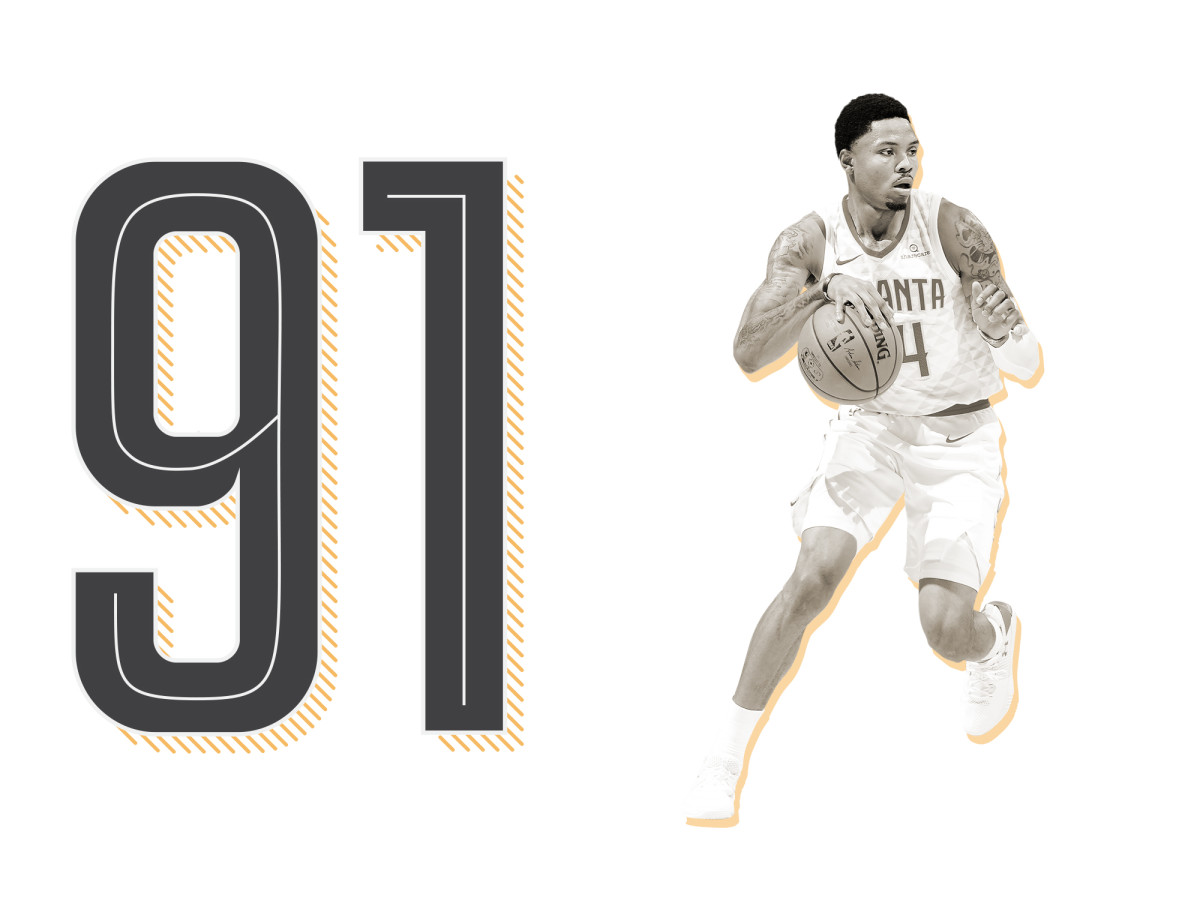
Kent Bazemore
Atlanta Hawks
Bazemore (12.9 PPG, 3.8 RPG, 3.5 APG) is the NBA’s anti-Forrest Gump: He has an uncanny knack for always just missing out on the action. The 29-year-old guard, who went undrafted in 2012, arrived on the scene with the Warriors just before Stephen Curry and Co. rocketed to dynasty mode. He then had a brief cup of coffee with the Lakers in 2014, a period of deep irrelevance after the ill-fated Dwight Howard experiment but before Kobe Bryant’s farewell tour. From there he landed in Atlanta, where he played a bit role on a team that made the 2015 East finals before finally breaking out in a starting role just as the team’s core was disbanded.
Thanks to the four-year, $70 million contract he inked during the 2016 cap spike, Bazemore has gone from toiling in the G-League to becoming the highest-paid player on one of the league’s worst rosters in less than five years. Although he’s clearly overpaid and unequipped to be a playoff team’s best, second-best or third-best player, Bazemore is a solid 3-and-D wing with good size and motor. In an ideal world, he would be cast as a fifth option in a contender’s starting lineup and asked to space the court, pick his spots to attack off the dribble, and bring energy on the defensive end. If Trae Young grows quickly into stardom, Bazemore will be a handy complementary piece. If not, he’ll continue to be grist for the trade rumor mill. — BG
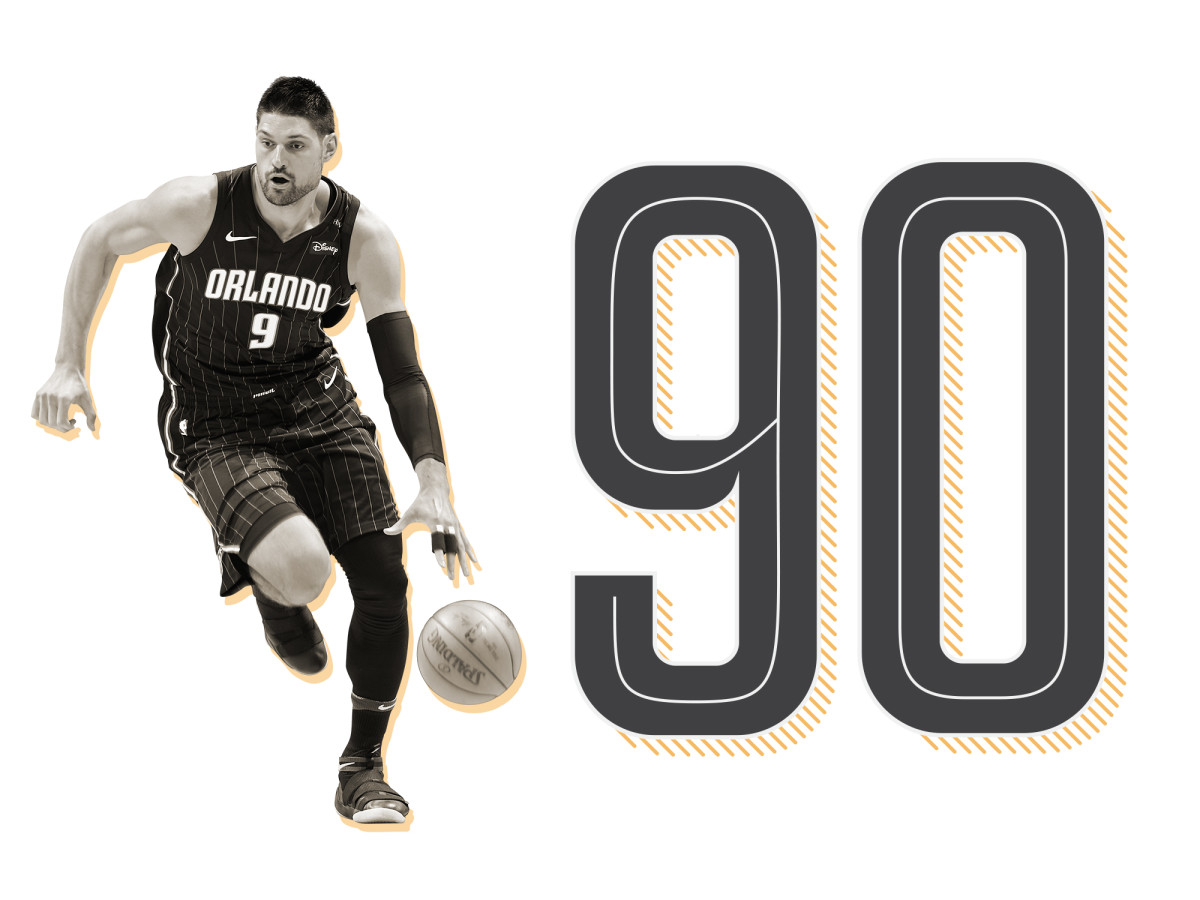
Nikola Vucevic
Orlando Magic
The closest Orlando came to competence last season was in Vucevic’s time on the floor. So continued a four-year run of inflated usage, in which the seven-footer was overstretched and miscast as a primary offensive option. No playoff team would use Vucevic (16.5 PPG, 9.2 RPG, 3.4 APG) in this way, but the Magic—even after five straight years in the lottery—are short on viable alternatives. Vucevic’s steady, accessible scoring is welcome on a team with so many stalled possessions.
Extricating Vucevic’s broader value from those circumstances is challenging, though one can safely assume he would be better served by doing less. Just because Vucevic can score a bit from everywhere (including beyond the arc, in a recent development) doesn’t mean he should try to quite so often; for Vucevic to attempt about as many shots per minute as LeBron James, Kevin Durant, and Giannis Antetokounmpo is a monumental stretch. Were he on a remotely functional team with amenities like floor spacing and playmaking, Vucevic could slot into a healthier role as a supporting scorer and dependable rebounder. — RM
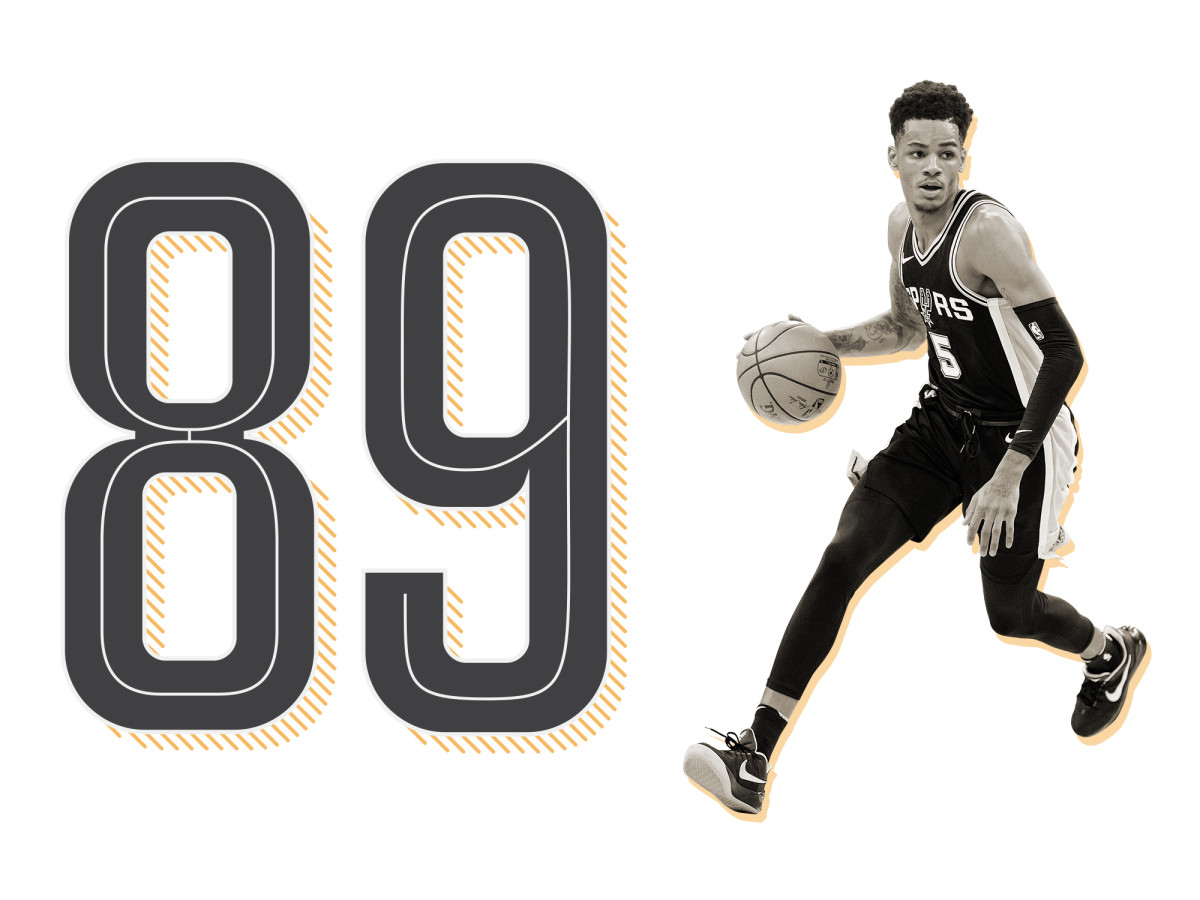
Dejounte Murray
San Antonio Spurs
Murray (8.1 PPG, 5.7 RPG, 2.9 APG) is the NBA equivalent of a writing whiz who aces the verbal section of the SAT with ease but gives up and guesses “C” on all the math questions. By virtually every defensive metric, the second-year guard is phenomenal. At 21, he earned All-Defensive Second Team honors by placing in the top 10 in Defensive Real Plus-Minus, Defensive Rating, and steal percentage while playing for the NBA’s fourth-ranked defense. Murray is a prototypical backcourt stopper in both physique and psychology: long, quick, aware, irritating, diligent, and fully committed to the glass.
By virtually every offensive metric, though, Murray is a borderline mess. He’s been an incompetent and unwilling shooter at the NBA level, and he is regularly neglected and dared to shoot. Unlike many guards who struggle from beyond the arc, he hasn’t yet perfected a compensatory weapon like a step-in mid-range jumper or an in-between floater. While Murray is generally unselfish and a willing passer, he’s not adept enough in the two-man game to function as a lead distributor. In sum, the Spurs’ offense was generally better when the ball was in someone else’s hands. With Kawhi Leonard, Manu Ginobili, Tony Parker, and Kyle Anderson all departing this summer, the man dubbed “Baby Boy” as a Seattle-area prep star must grow up in a hurry. — BG
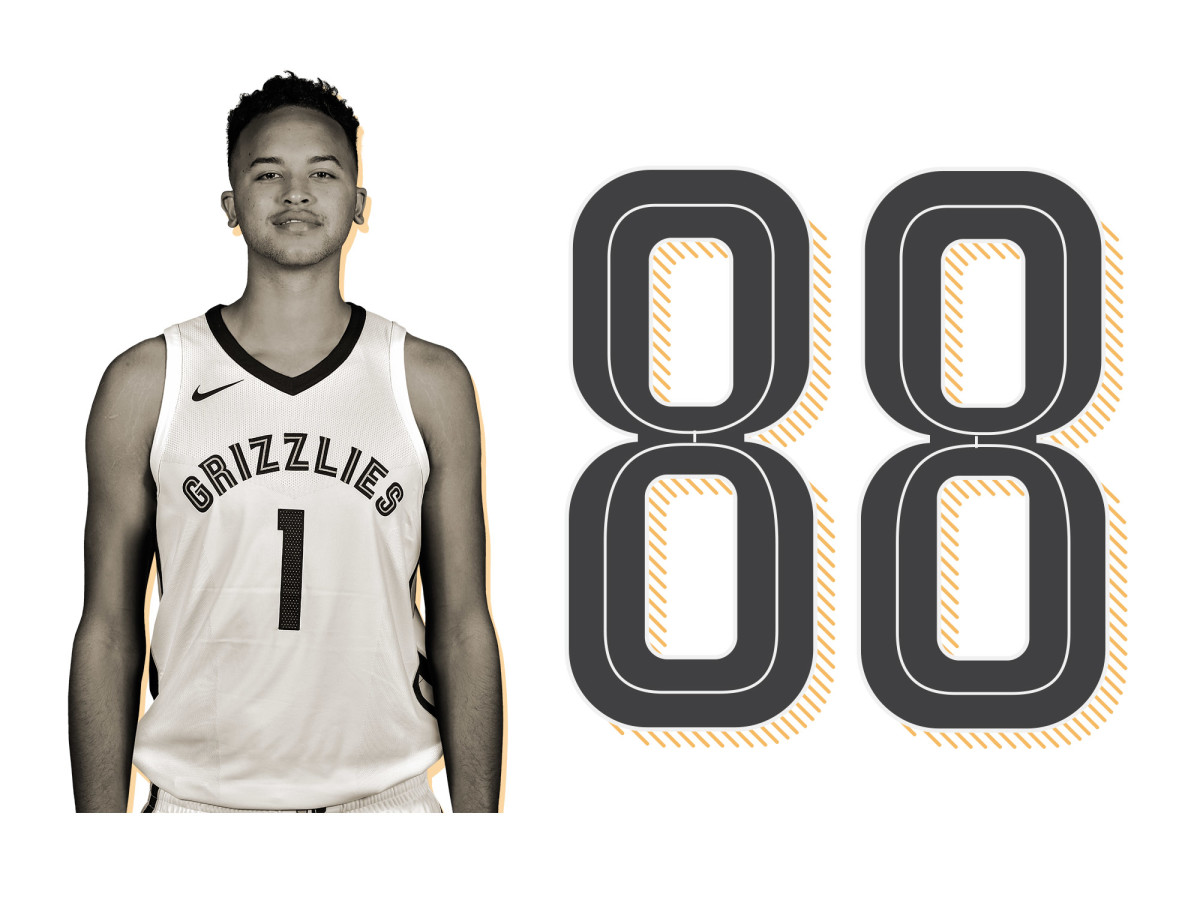
Kyle Anderson
Memphis Grizzlies
“Slo Mo” might not be the best nickname in pro sports, but it’s certainly the most accurate. Anderson (7.9 PPG, 5.4 RPG, 2.7 APG) is deliberate in virtually everything he does, whether it’s pushing the ball in transition, executing a frame-by-frame Eurostep, or acclimating to life in the NBA. Although it took four seasons and Kawhi Leonard’s extended absence for Anderson to break through as a full-time starter, he acquitted himself very nicely once he got there. The 24-year-old forward posted career-highs across the board last season, and his efficient play and all-around contributions landed him in the top 75 by Win Shares, Real Plus-Minus and WARP. Seeking a value play to make up for the Chandler Parsons debacle, Memphis poached Anderson with a four-year, $37 million contract in July.
Anderson’s biggest weakness—poor outside shooting—is a critical one, but he has developed workarounds: He has a strong understanding of team spacing, he stays active off the ball, he moves hard into passes to launch unexpected attacks on the paint, he sprays drive-and-kick passes to all corners and he has a quirky and well-honed array of turnarounds, floaters and runners. San Antonio’s recent actions suggest, however, that they perceived a hard ceiling to his utility given his floor-cramping nature and limited raw athleticism. The Spurs sharply cut his minutes when facing the Warriors in the playoffs, and then decided not to match the Grizzlies’ offer even though they had a major hole on the wing. For Anderson, Memphis represents a fresh start, a larger role, and a chance to prove that his subtle and nuanced style can translate outside San Antonio’s structured environment. — BG
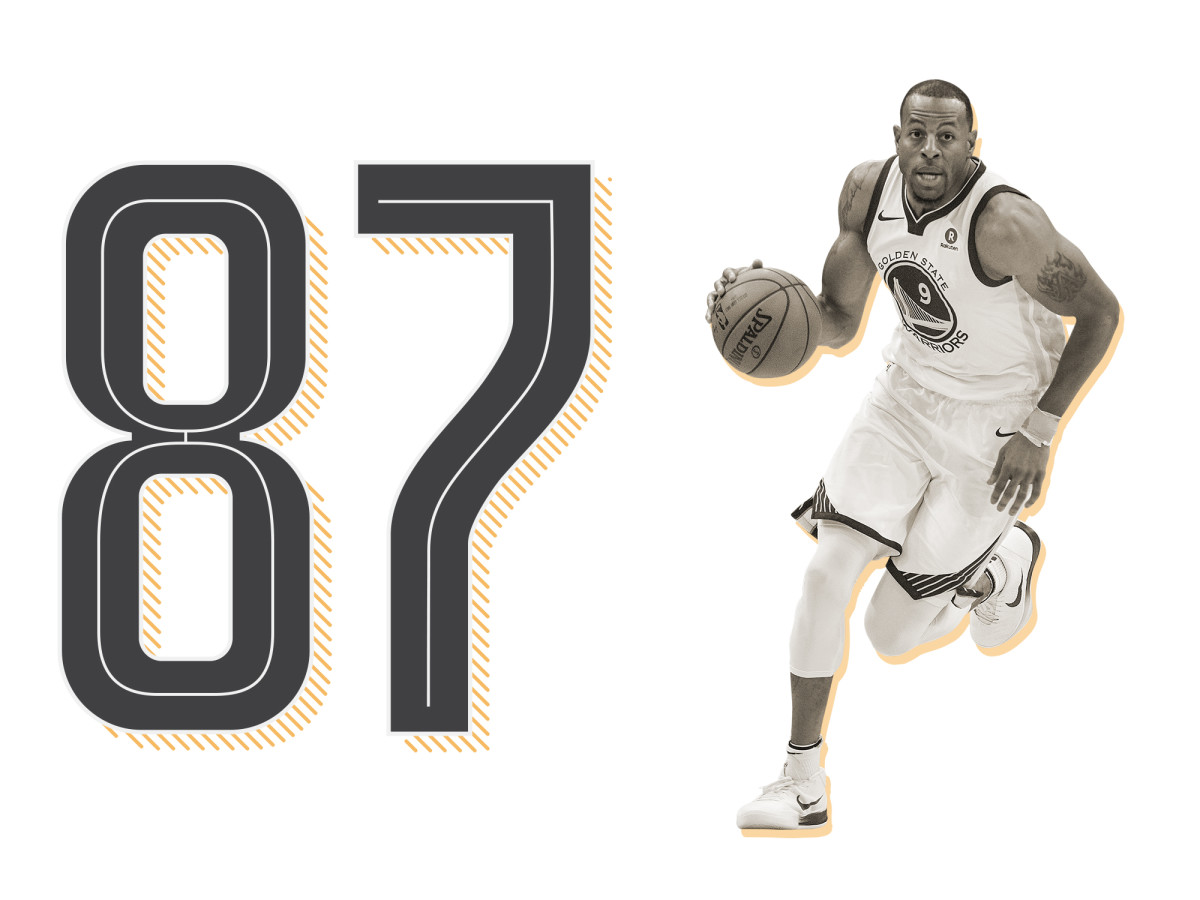
Andre Iguodala
Golden State Warriors
Steve Kerr delivered a fitting postscript to Golden State’s grueling seven-game triumph over Houston in the West finals: “We would have won the series in five if Iggy played.” That assessment spoke to the importance of the Warriors’ prized sixth man, but also to the precarious position the defending champs face when he’s not on the court. Indeed, the 34-year-old Iguodala (6 PPG, 3.8 RPG, 3.3 APG) has arguably become the biggest potential pothole on the road to a fourth title in five years. Last season, he continued to show clear signs of aging by posting career-lows in minutes and points, missing 18 regular-season games and six crucial playoff games, and failing to display must trust in his three-point shot.
Nevertheless, the Warriors remain virtually unbeatable when their full “Hamptons 5” lineup is assembled, going 19-3 combined in the last two postseasons. During the 2018 playoffs, they posted a 123.7 offensive rating and a staggering +24.8 net rating, as Iguodala’s excellent feel, commitment to the pass, precise defense, and opportunistic shot-making continued to make him an ideal fifth option. While there’s no question that Iguodala’s reputation and body would suffer if he played for a weaker team, aspiring contenders like Houston, Boston and Philadelphia would all kill to have a second-unit wing with his intelligence, experience and unselfish approach. — BG
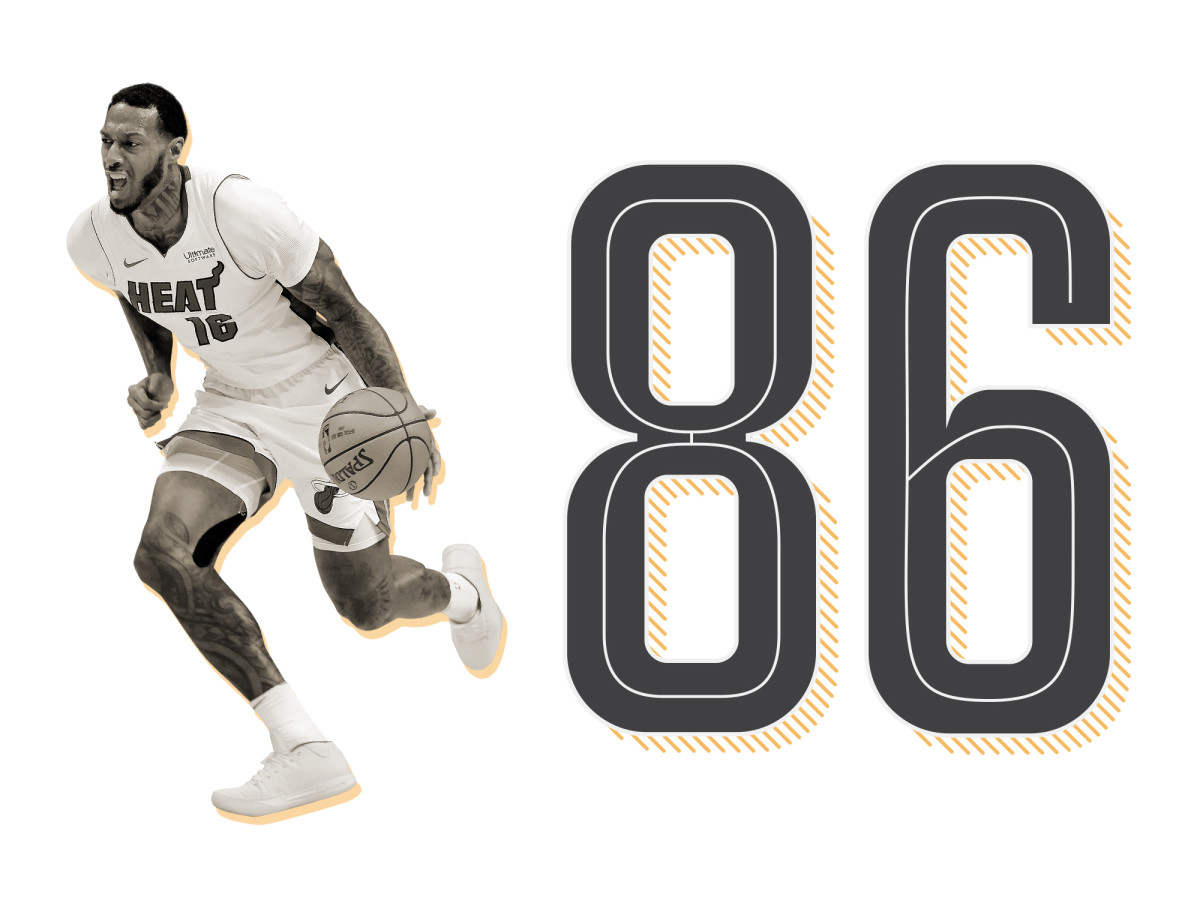
James Johnson
Miami Heat
For a player as active as Johnson (10.8 PPG, 4.9 RPG, 3.8 APG), a sports hernia—the injury he nursed through much of last season—can prove quite taxing. So much of Johnson’s game is anchored in how he moves; it’s his ability to change speeds and directions that makes him so dynamic on offense, and it’s the ease with which he slides laterally that brings value to a defense. If Johnson’s all-around play seemed a bit flat last season, that’s because it was—down to his every step.
Offseason surgery hints at a return to form. Competing in the modern NBA all but demands a player like Johnson—a big who can capably switch, handle, pass, and shoot. Some of those skills are less reliable than others in Johnson’s case, though their intersection alone makes him valuable. You live with his wilder swings because of all that his versatility unlocks. The means to beat the trap, to trigger the break, to control matchups, and to move a guard off the ball are all there for Johnson, provided he’s healthy and focused. — RM
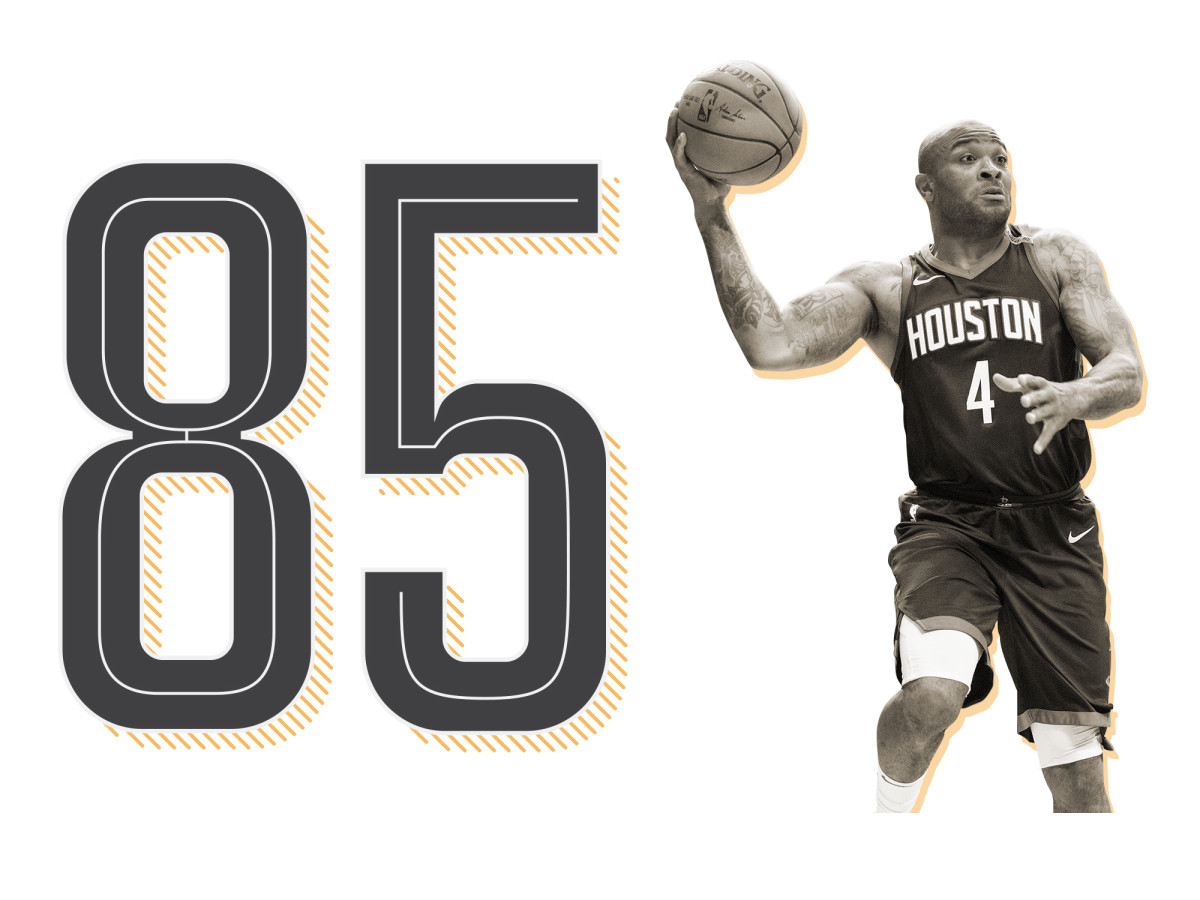
PJ Tucker
Houston Rockets
Former Rockets wing Shane Battier was famously dubbed the “No-Stats All-Star” for his vital defense and glue-guy game; Tucker (6.1 PPG, 5.6 RPG) is his pudgier heir apparent in Houston. By traditional individual measures, the 33-year-old forward was an afterthought, ranking outside the NBA’s top 300 in PER while placing seventh on the Rockets in points and sixth in touches. But the impact stats told a much different story: Tucker improved the Rockets’ efficiency on offense and defense during the regular season and the playoffs, he boasted a stellar +10.8 net rating, and he ranked No. 87 league-wide in Real Plus-Minus. By February, he had forced his way into the starting lineup, holding that spot throughout the Rockets’ run to the West finals. Not bad for roughly $8 million per year.
Tucker, like Battier before him, has carved his niche through pure feistiness. Although he is listed at just 6’6”, he was regularly deployed as a center when coach Mike D’Antoni sought to maximize his lineup’s spacing and switchability. To compensate for his lack of length and shot-blocking ability, Tucker consistently forced opponents to work hard for post position, contested rebounds with abandon, and delivered hard fouls as needed. True to his tough-minded reputation, the former second-round pick also led the Rockets in drawn charges and recovered loose balls. While Tucker might never claim glory like James Harden and Chris Paul, he surely possesses his superstar teammates’ gratitude. — BG
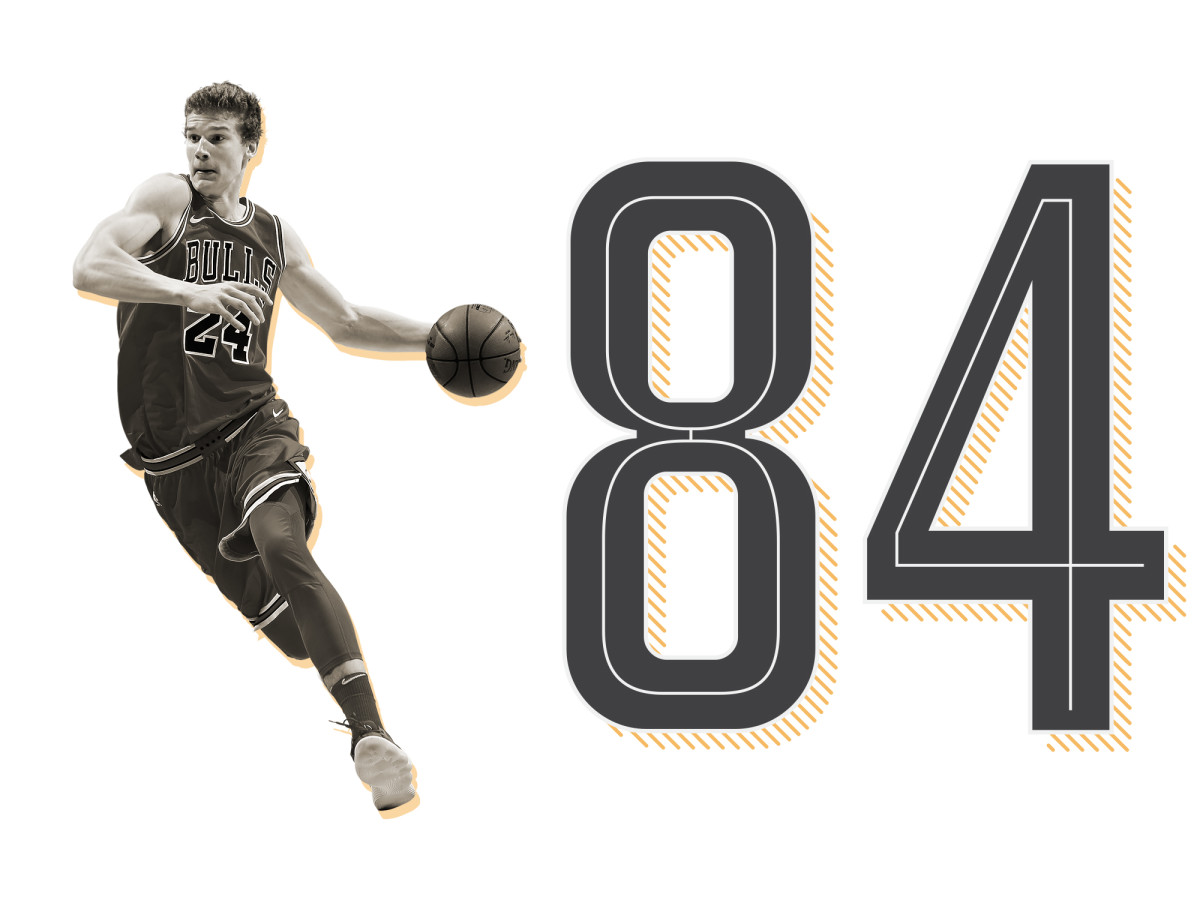
Lauri Markkanen
Chicago Bulls
As Ben Simmons, Donovan Mitchell and Jayson Tatum bucked the norm by playing leading roles on teams that advanced in the playoffs, Markkanen (15.2 PPG, 7.5 RPG) lived a more conventional experience for a lottery pick. The 21-year-old Finnish forward endured months of losing and tanking with the Bulls, he struggled to adjust to his defensive responsibilities, and he missed 14 games due, in part, to minor back injuries. Despite those hurdles, Markkanen was an easy All-Rookie First Team selection because he proved to be a legit marksman with a quick, natural release and range that extended multiple steps beyond the arc. Indeed, the 7-footer drilled 145 threes last season, the most in NBA history by a rookie taller than 6’9”.
As the season progressed, his signature pick-and-pop game was supplemented by fake-and-drive action that allowed him to use his length to finish in one-on-one scenarios. While not yet much of a playmaker, Markkanen can handle well enough to locate pull-up shots or get going downhill. On the defensive end, he switched and hit the boards better than expected, but he still ranked outside the top 300 in Real Plus-Minus due to strength limitations and awareness issues. Markkanen is reportedly adding weight in anticipation of playing more center, a tough ask given that he had the lowest block rate among 7-footers who logged at least 2,000 minutes in 2017-18. The good news is that he projects as such a potent offensive weapon that he only needs to become a passable defender to emerge as the face of Chicago’s youth movement. — BG
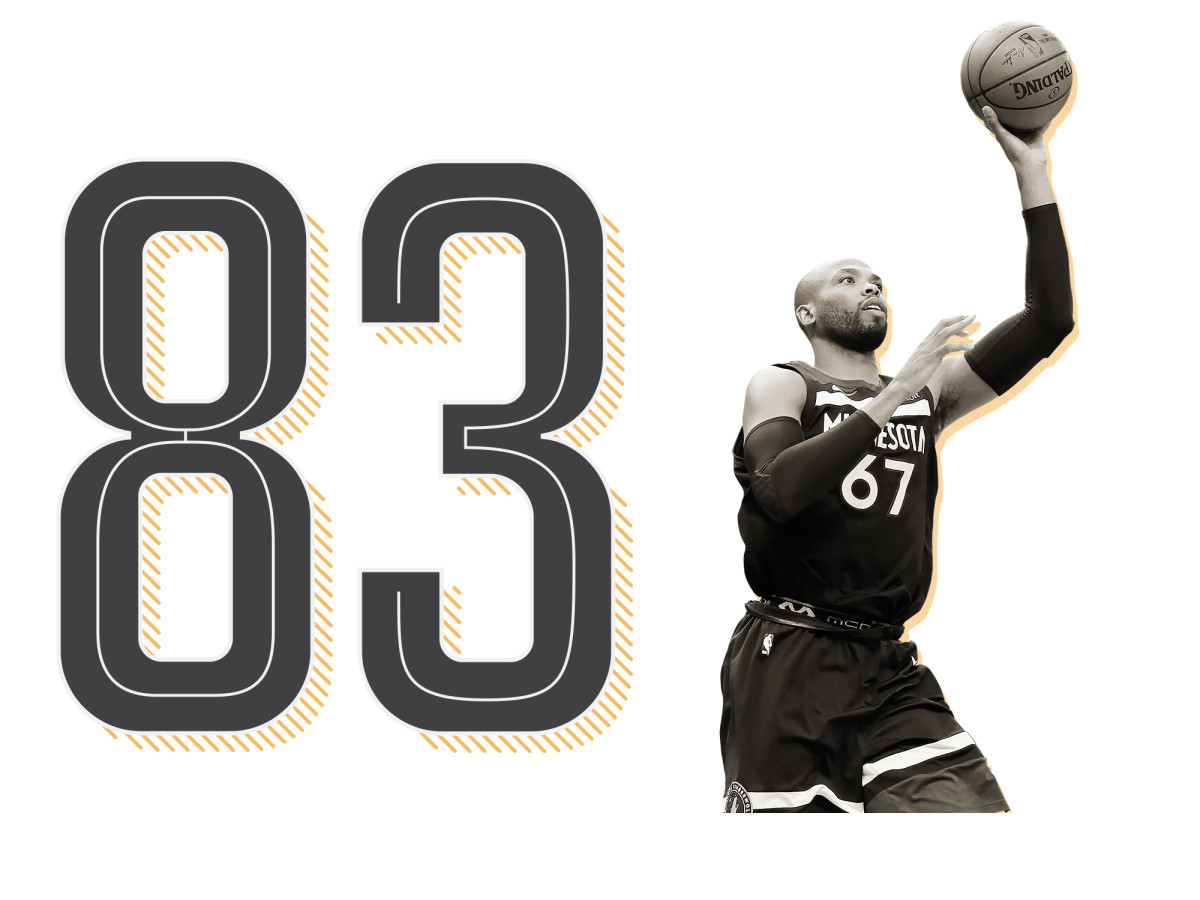
Taj Gibson
Minnesota Timberwolves
Coaches tend to lean on Gibson (12.2 PPG, 7.1 RPG) because he makes their lives easier. It’s a relief to have one player on the court who always knows what’s going on, both in the conceptual sense of what a team hopes to accomplish and within the second-to-second frenzy of an NBA game. Don’t underestimate the power of that stability. Nothing about the way Gibson plays basketball is especially modern, but there is a timeless advantage in reliable execution.
Gibson has made a career of it. There is never a question of whether he’s game to compete, ready for the moment, or adequately prepared. Some matchups suit Gibson better than others, but that’s just life as a role player. You make do. Smart positional defense will at least keep Gibson in the mix, allowing the rest of his game to pop for opportunistic value. He isn’t an elite rebounder, though Gibson often comes up with the board that matters. His game might not accommodate bulk scoring, but Gibson, who just turned 33, is coming off the most productive and efficient scoring season of his career. He’s a few rungs removed from the league’s truly elite defenders, but Gibson might well come up with the stops to save your season. — RM
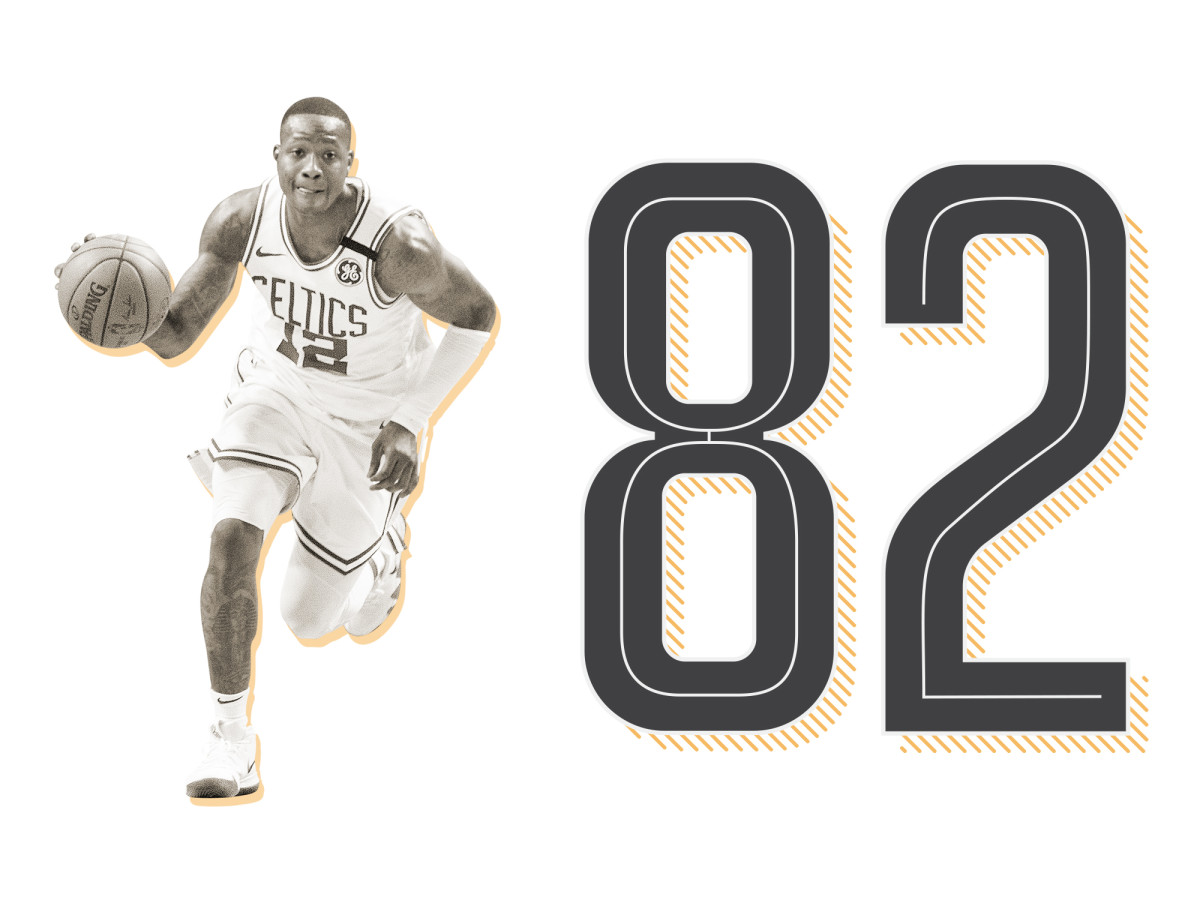
Terry Rozier
Boston Celtics
Few players enhanced their reputations during the 2018 playoffs as much as Rozier (11.3 PPG, 4.7 RPG, 2.9 APG), who stepped in for the injured Kyrie Irving and guided the Celtics to within one game of the Finals. There were two keys driving the 24-year-old guard’s postseason success. First, a supreme self-confidence. Despite never starting in his first two seasons and being known primarily as a defensive pest, Rozier sent Milwaukee packing from the first round, nailed seven threes in Game 1 against Philadelphia to set the tone in the conference semis, and held tough when LeBron James cranked it up in the East finals. Rather than freeze on the big stage, he tormented Eric Bledsoe, carried himself like a star on the postgame podium, and donned “Scary Terry” t-shirts bearing his own likeness on off days. This was a textbook case of being ready—physically and psychologically—when called upon.
The second element of Rozier’s success was easy to miss amid the swagger and hoopla: He played with exceptional control, posting a 5:1 assist-to-turnover ratio in the postseason. While Rozier suffered bouts of streakiness and famously ran cold in Game 7 against the Cavaliers, his careful stewardship throughout the playoffs was crucial to Boston’s efforts to muster enough scoring and to prevail in close games. Going forward, Rozier is an obvious trade chip: He’s equipped to become a full-time starter because he’s trustworthy with the ball, he’s improved his three-point shot, he’s tenacious on defense, and he’s gotten a good taste of the limelight. — BG
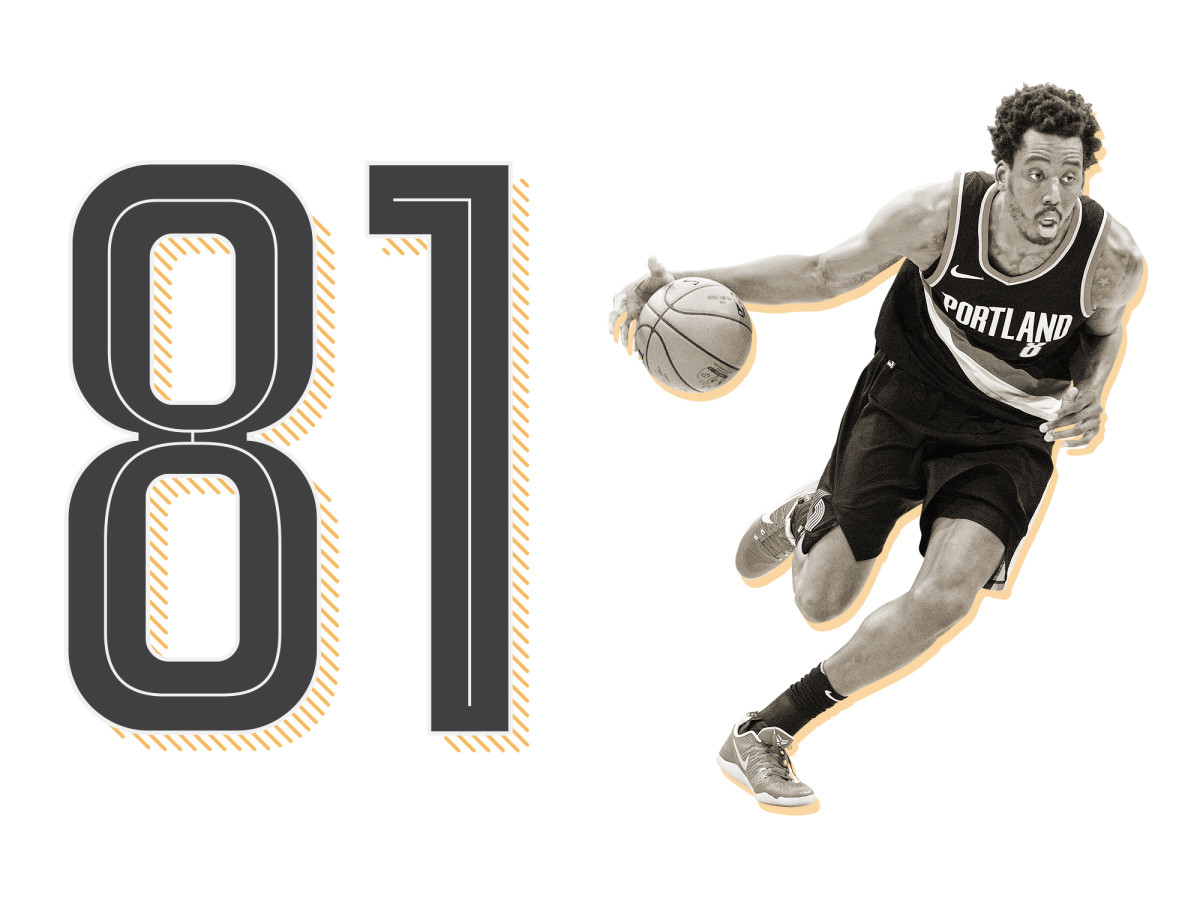
Al-Farouq Aminu
Portland Trail Blazers
Aminu (9.3 PPG, 7.6 RPG) is the elastic band that holds a top-10 defense together. If you prefer a conservative defensive style—as the Blazers do—then Aminu can muck up passing lanes and slow down top-scoring forwards. If you’d rather rely on switching, he’ll float from opponent to opponent without missing a beat. At the same time, Aminu would look right at home blitzing and recovering against the pick-and-roll, where his length makes a chore of even the most basic outlet pass. One can be a specialist and still have a highly transferable skill set.
Of course, not every team is equipped to score around (and at times, in spite of) a marginal threat like Aminu. Every dribble he takes tends to get him deeper into trouble; a lack of practical ball skills leaves Aminu with little recourse in the face of real defensive pressure. Average three-point shooting and offensive rebounding offer some means to contribute, though many of his best looks tend to come by design. Relative to the alternatives, Aminu’s streaky jumper is the kind of attempt a defense can stomach. — RM
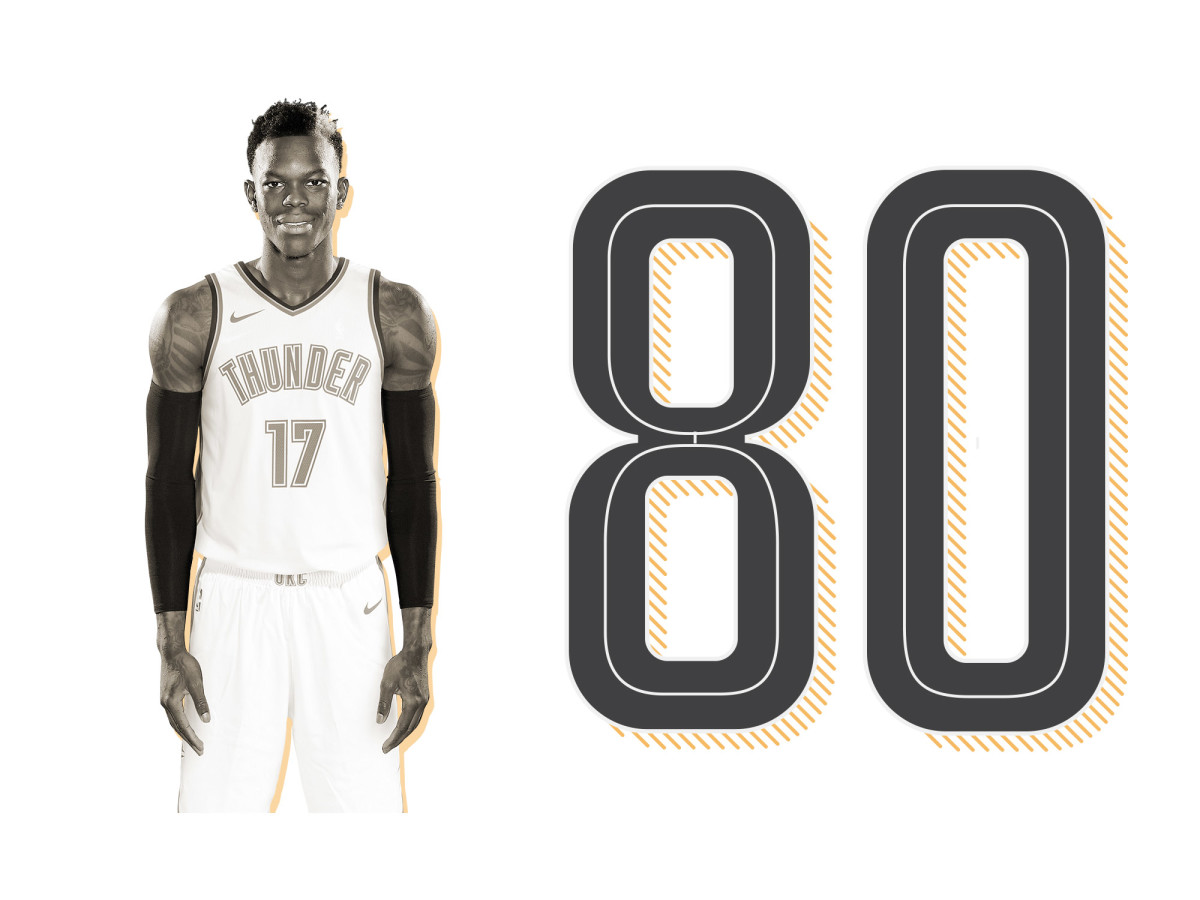
Dennis Schröder
Oklahoma City Thunder
Schröder’s 2017-18 season was a cry for structure. The only thing standing in the way of his using possessions like a superstar was common sense—a luxury, as it turns out, reserved for teams with better alternatives than Atlanta. Absent those, Schröder did as he pleased.
The results were predictably fruitless. Schröder (19.4 PPG, 3.1 RPG, 6.2 APG) put up some of the emptiest numbers in the league last season, considering how little they did for Atlanta’s bottom line. This is emblematic of larger concerns. We know Schröder can beat his man off the dribble and score, but can he bring an offense to balance? Does his passing make his teammates better? Can his length and quickness translate to real defensive benefit? The jury is still out, even within the league. It means something that Schröder is capable of producing at this level, though that “something” varies wildly depending on case and circumstance. — RM
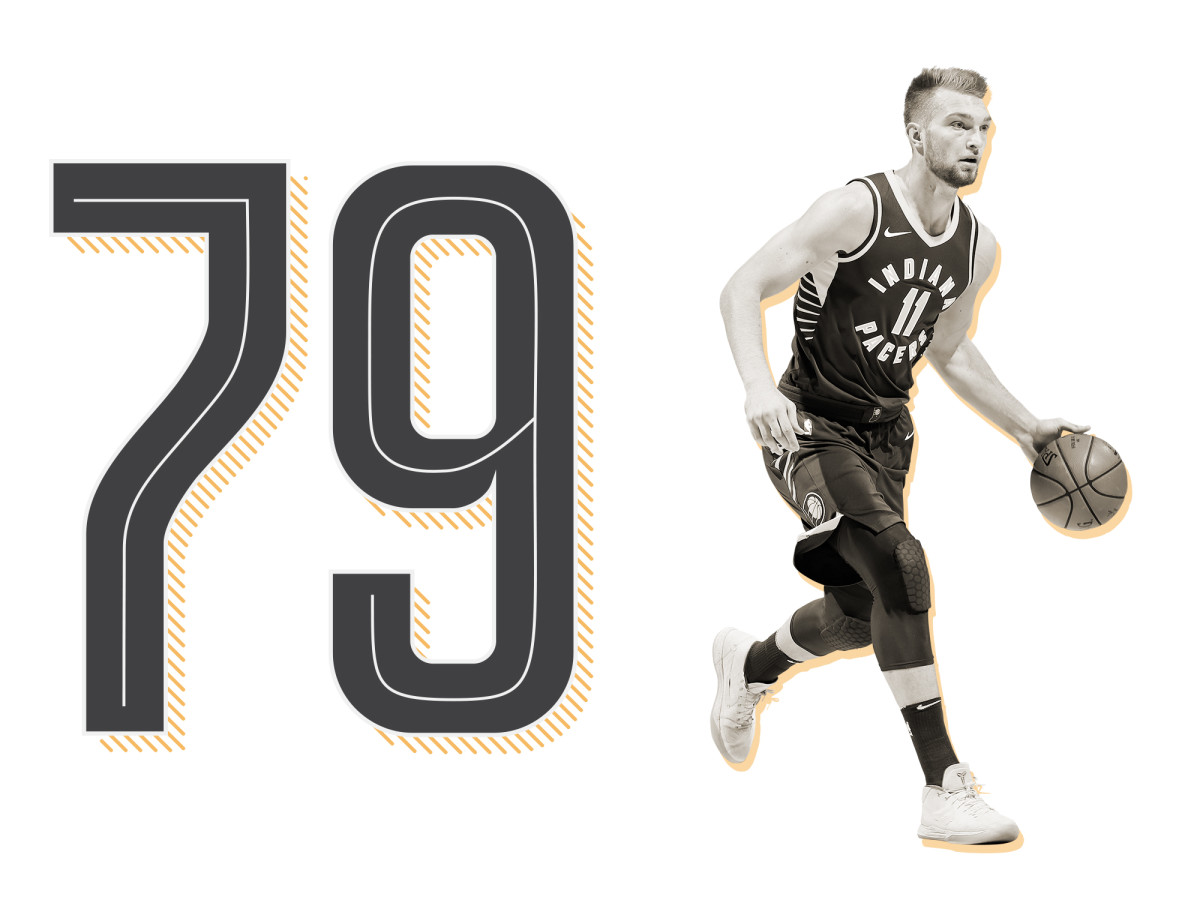
Domantas Sabonis
Indiana Pacers
All Sabonis needed was room to play his game. The Thunder didn’t have it; after drafting Sabonis in 2017, Oklahoma City parked him out on the perimeter and grew frustrated when he struggled. A change of scenery jump-started his career. With a trade to the Pacers came gentler expectations – the kind that allow a 22-year-old to try and to fail and to find himself. Sabonis (11.6 PPG, 7.7 RPG, 2.0 APG) was allowed to played to his strengths and develop in his own time.
The entire demeanor of Sabonis’s game changed. Gone was the petrified rookie, replaced instead by an intuitive scorer and playmaker. Making decisions off the pick-and-roll and working out of the post gave Sabonis his bearings. These were spaces he knew how to navigate, full of reads he had encountered before. An easy chemistry formed between Sabonis and Victor Oladipo. The Pacers came to rely on him, so much so that Sabonis became the pressure release when Indiana’s guards ran into traps in the postseason. Sabonis isn’t perfect (concern over his lackluster defense is perfectly valid), but the feel he’s shown suggests he’s an uncommon talent. — RM
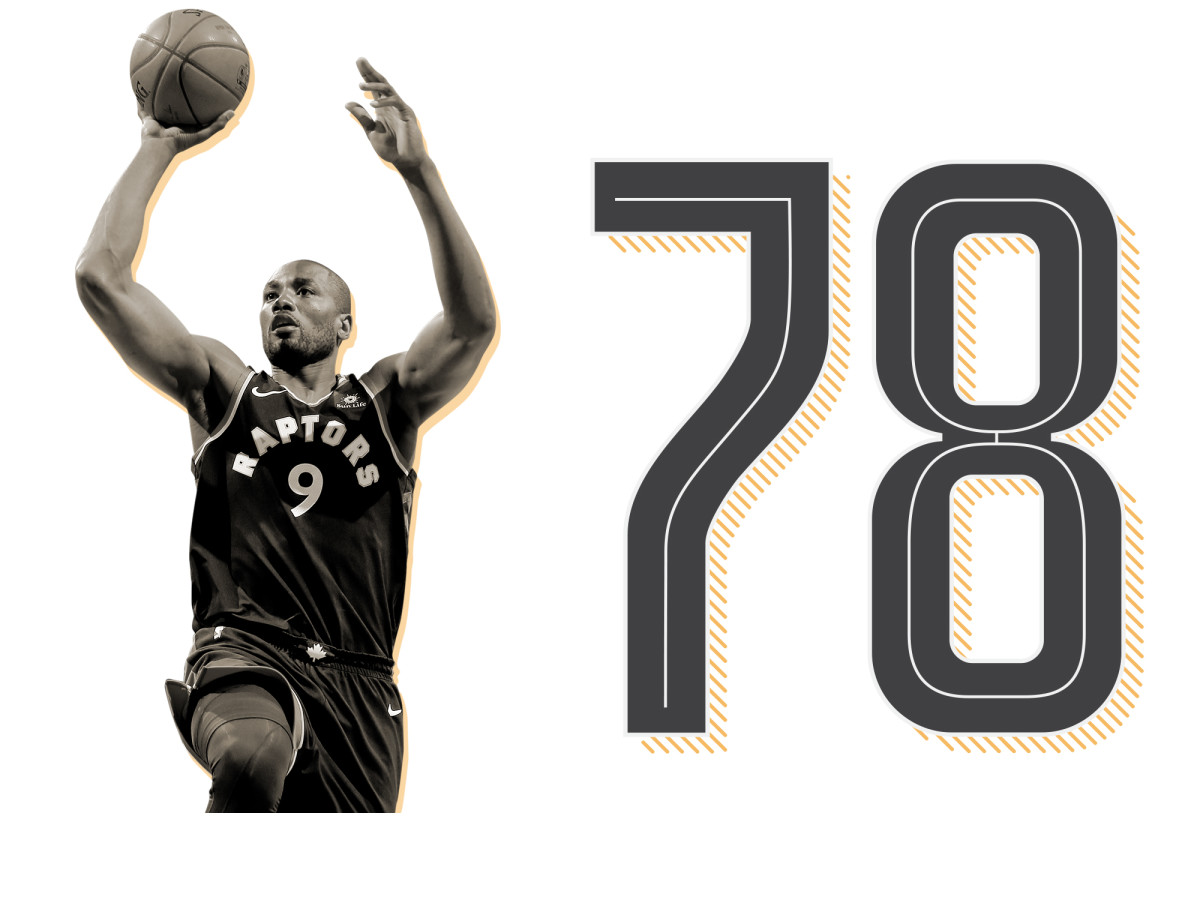
Serge Ibaka
Toronto Raptors
Once the most fearsome shot-blocker in the league and an ideal smallball center for postseason matchup purposes, Ibaka (12.6 PPG, 6.3 RPG, 1.3 BPG) has skidded into an identity crisis. At the root of Ibaka’s troubles is major slippage on the defensive end: Toronto’s defensive rating was better without him last season, and his block rate was less than half of his peak levels during his early-20s. Remarkably, Jonas Valanciunas and Jakob Poeltl both defended more shots within six feet and allowed a lower percentage on those shots than did Ibaka, whose three straight All-Defensive First Team selections already seem like a distant memory.
The 2018 playoffs weren’t kind to him either. When Ibaka, 28, was acquired in 2017, he was seen as the piece to help push Toronto over the top and as a rim-protecting linchpin of switchable smallball lineups that could slow down LeBron James. Instead, he largely no-showed in the embarrassing second-round sweep against Cleveland, struggling badly in Game 2 and getting benched in Game 3. At this point, Ibaka is essentially a replacement-level starter whose primary offensive value derives from his three-point shooting because his once-impressive finishing has tapered off. His career arc sadly mirrors that of his former team, the Thunder: He rose to prominence years before everyone expected and then crumbled years before everyone wanted. — BG
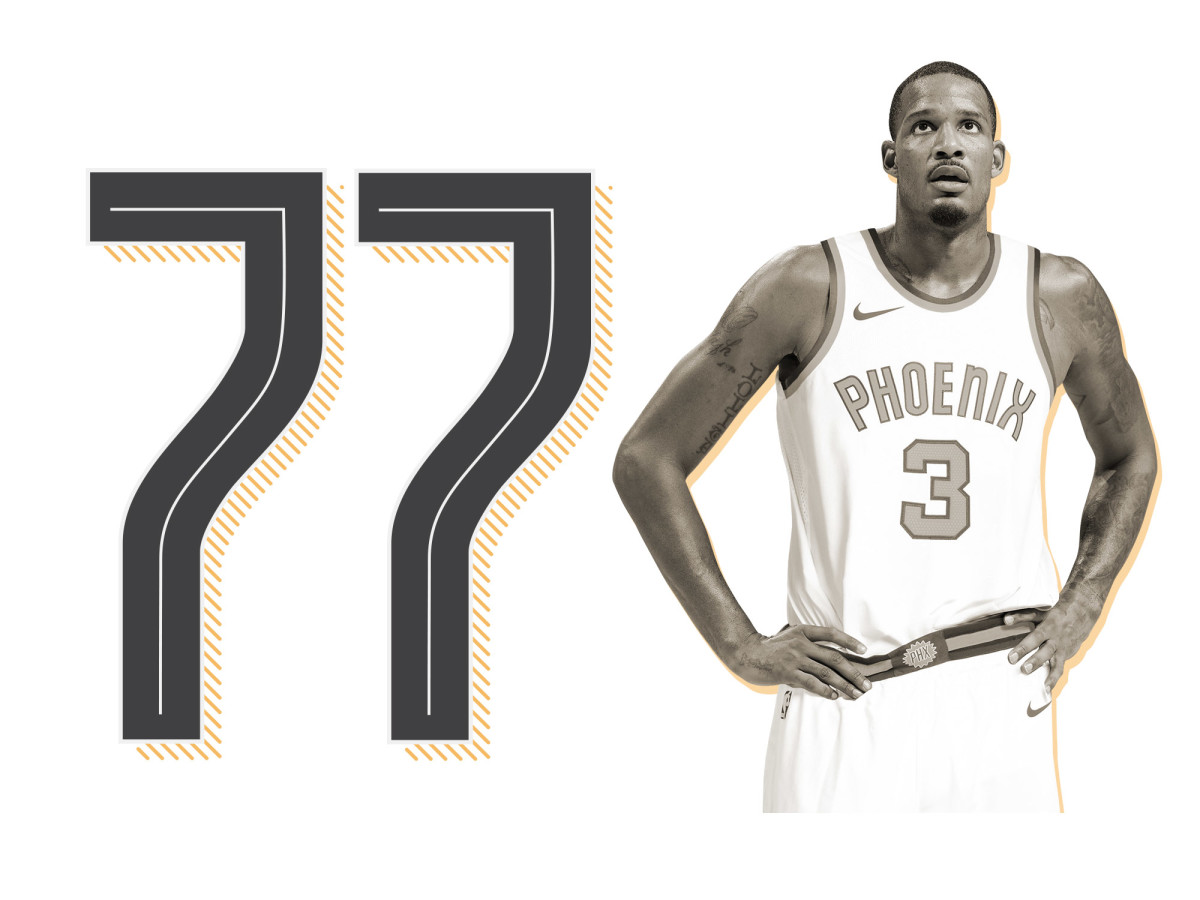
Trevor Ariza
Phoenix Suns
It’s easy to bag on Ariza considering how his season ended, but one bad shooting night doesn’t undo all that came before. Ariza (11.7 PPG, 4.4 RPG) was one of the most important players to one of the NBA’s best teams. In the Western Conference finals alone, he was Houston’s best chance of challenging Kevin Durant—a counter to Golden State’s reluctant isolations. Throughout the year, it was Ariza’s defense that gave the Rockets their elasticity. Tucker may have been the point of differentiation from big lineups to small ones, but Ariza was the constant between them.
The Rockets will miss him, and Ariza them. Scoring comes easily when James Harden and Chris Paul do so much of the thinking for you. Some 82% of Ariza’s field goals—and damn near all his threes—were assisted last season. His best work comes as a beneficiary, making it difficult to assess his value in a vacuum. Houston barely needed Ariza to dribble, much less create. Most other teams—Phoenix included—would be exposed to a different level of risk. Never underestimate the superstar safety net. — RM
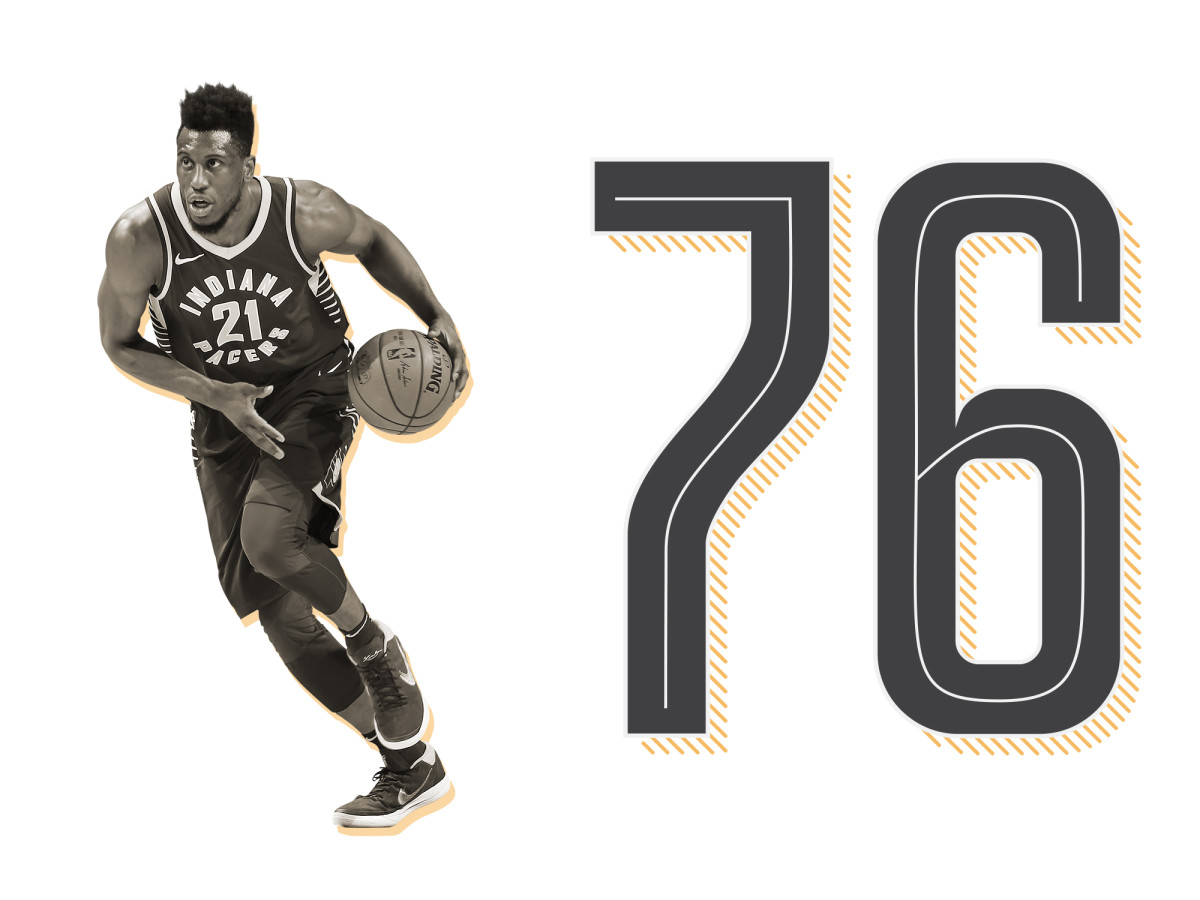
Thaddeus Young
Indiana Pacers
Young (11.8 PPG, 6.3 RPG) lives and works in the background, which seems to suit him just fine. His defense is a quiet sort—the kind predicated on denying position and making timely rotations. When Indiana’s opponents bail out midway through a set play, Young is often the unstated reason why. It’s subtle, but opportunities have a way of vanishing when Young runs interference, assuming that they materialize at all.
Young is the defender who phases out Kevin Love, pushing LeBron James to the brink of a first-round elimination. The integrity of Indiana’s entire system hinges on Young’s ability to cover ground. You don’t have to switch pick-and-rolls when a player like Young can cover the gaps. His steal rate was the highest among bigs precisely because he understands how to play the space between show and recover. You won’t get much more than random, opportunistic scoring out of Young, but his court sense brings an added functionality to so many of his team’s pursuits. The Pacers may have been the best story of last season and Young, impressively, their second-best player. — RM
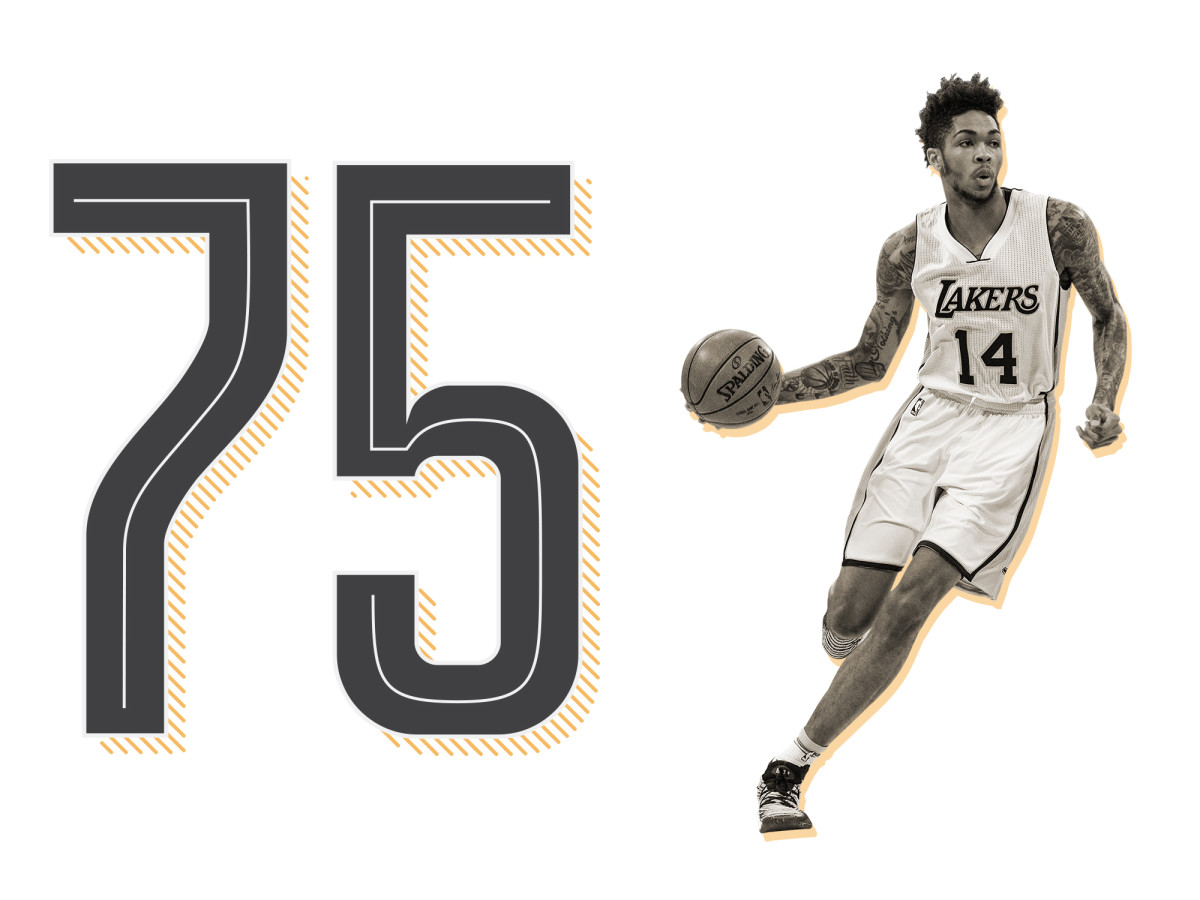
Brandon Ingram
Los Angeles Lakers
Even though Magic Johnson scooped up virtually every available wild card in free agency, the Lakers’ biggest X-factor remains Ingram (16.1 PPG, 5.3 RPG, 3.9 APG). The 2016 No. 2 pick made clear strides in his second season, emerging as a full-time starter, ratcheting up his scoring and efficiency, improving as a finisher, and becoming more comfortable and less predictable with the ball in his hands. At times, Ingram brought to life the pre-draft projections that he would be a perennial All-Star wing: he displayed the handle and shake necessary to create good shots, he attacked the basket more assertively, and he deployed his spindly length to find seams through the defense and exploit size mismatches.
The surest way for the new-look Lakers to make noise in the playoffs would be for Ingram to establish himself as a reliable No. 2 scoring option and a plus defender. To get there, he must continue to extend his range, engage his attack mode with greater consistency, and play more disruptively on the defensive end. He also needs better health, as he was sidelined for a quarter of L.A.’s 2017-18 season. LeBron James’s arrival, of course, should make his life easier: Ingram will face more favorable defensive matchups, receive cleaner catch-and-shoot looks, and play within a more structured and explosive style. After two seasons getting his bearings, it’s time for Ingram’s training wheels to come off for good. — BG
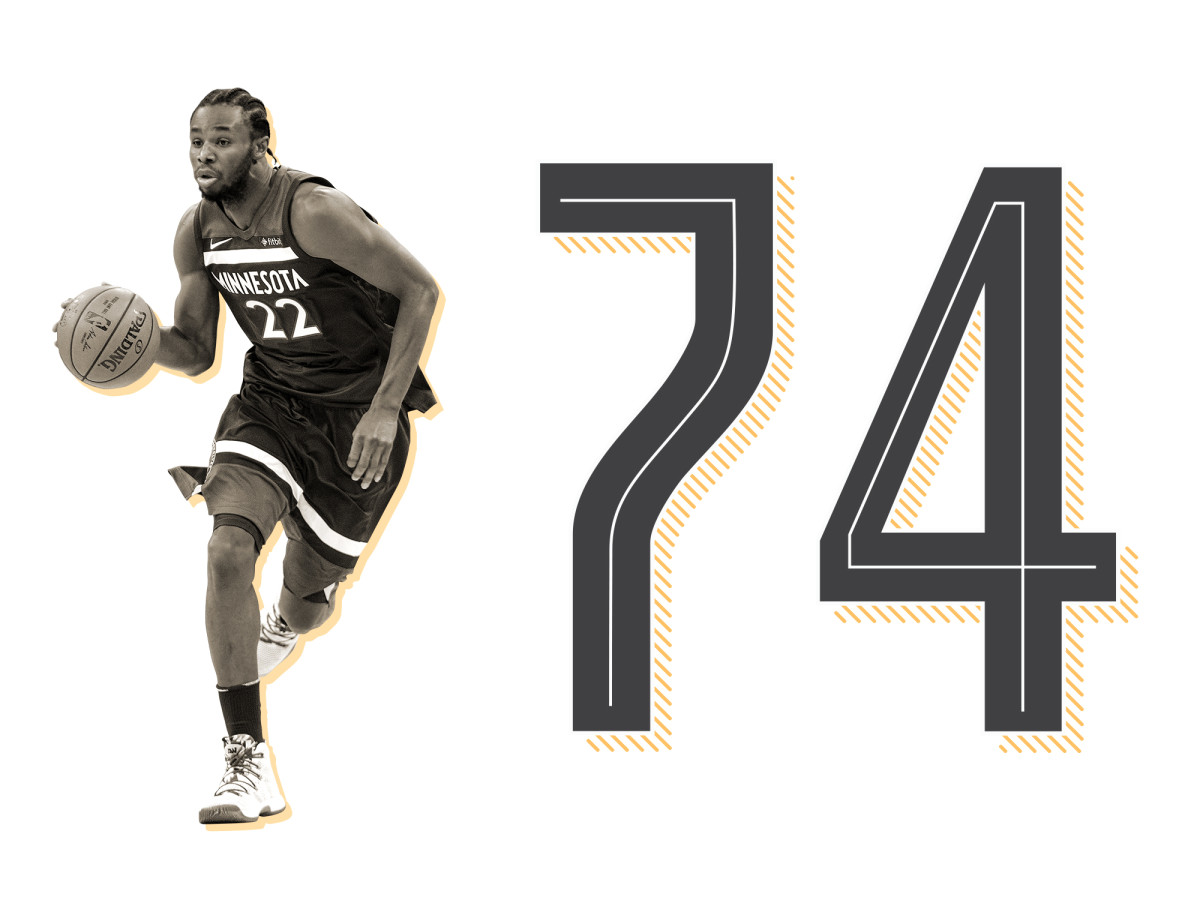
Andrew Wiggins
Minnesota Timberwolves
While Wiggins (17.7 PPG, 4.4 RPG, 2.0 APG) has been guilty of playing some of the NBA’s emptiest minutes, he sure does play a lot of them. Indeed, the 2014 No. 1 overall pick has logged a league-leading 11,841 minutes and missed just one game over the last four years. Instead of using that tremendous developmental opportunity as a ramp to superstardom, the 23-year-old wing has sputtered. The major advanced stats agree that his max rookie extension and his reputation as a high-flying scorer both far exceed his on-court value, as he ranked outside the top 200 in PER and Win Shares, outside the top 300 in Real Plus-Minus, and outside the top 500 in WARP.
As each season passes, Wiggins’s lack of follow-through becomes more aggravating. He’s attempting more threes, but he hasn’t yet established himself as a knockdown shooter. He has the body and athletic tools to be a premier defender, but his awareness lags and he’s often passive. He can sky for posters, but he shrinks on the glass. He’s been surrounded by better teammates over the last two seasons, but he hasn’t made meaningful strides as a playmaker. He appeared primed to improve his scoring efficiency as a complementary option to Jimmy Butler, but he settled into wallflower mode instead. Taken together, these burgeoning concerns beg the question: Is Wiggins, the Ironman, also a Tin Man? — BG
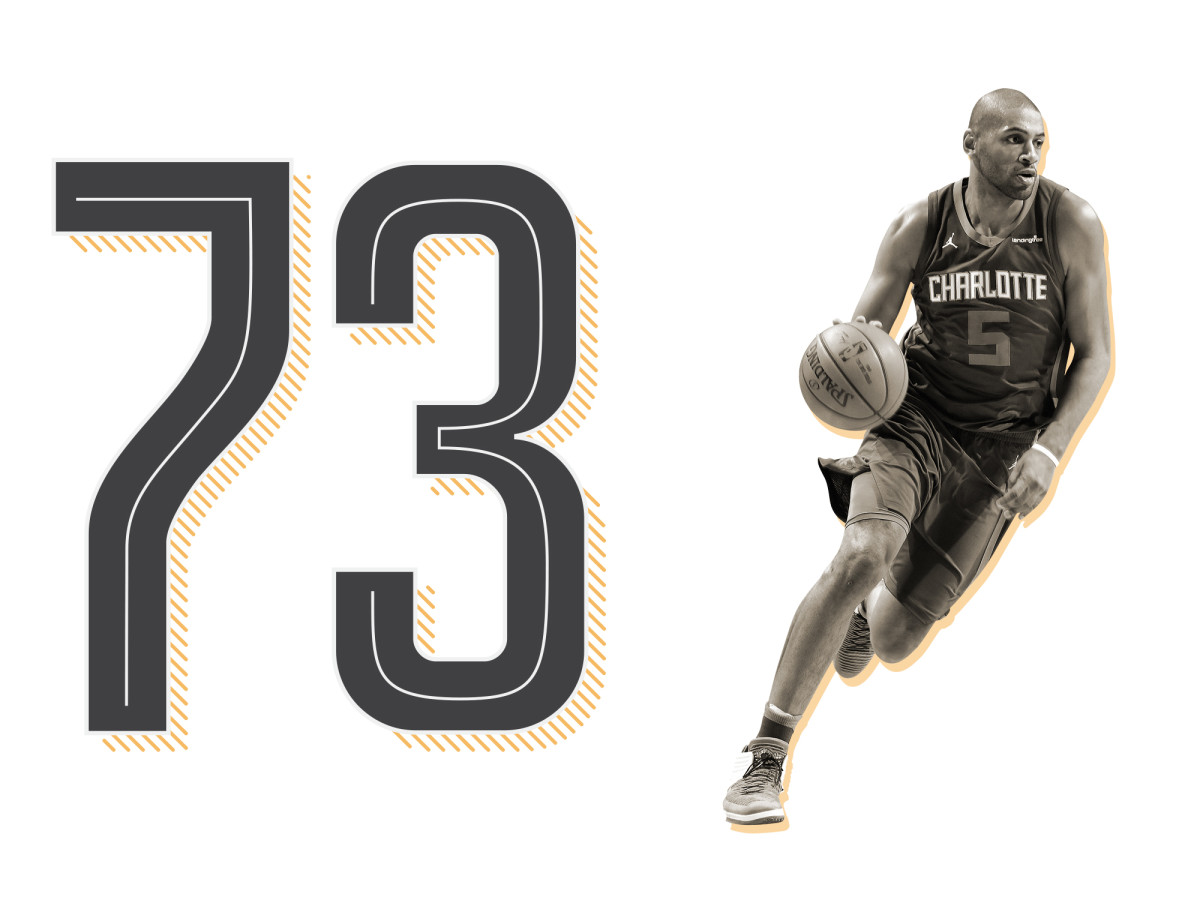
Nicolas Batum
Charlotte Hornets
So often, the idea of Batum—a lanky, playmaking wing—is more appealing than the reality. You might think of Batum as a strong defender, but his investment on that end comes and goes. One night he might rise to the challenge of guarding an All-Star, and on another he might go through the motions without putting up much resistance. Batum’s shot looks nice, but he’s made just 34% of his threes over the past three years. What promise he offers as a ball-handler is undercut by the fact that he doesn’t get to the rim or draw fouls. (Batum 11.6 PPG, 4.8 RPG, 5.5 APG) may be regarded as a scorer, but last season he barely scraped into double digits while posting an Evan Turnerian true shooting percentage (52.1%).
Injury might provide more of a qualifier if not for the larger trends involved. On some level, Batum was surely less comfortable after undergoing surgery on his left elbow last October. His slide, however, extends back through multiple seasons. No one can dispute Batum’s bonafides as a facilitator, though over the last few years he’s become increasingly reliant on that area of his game—less a swiss army knife than a corkscrew. — RM
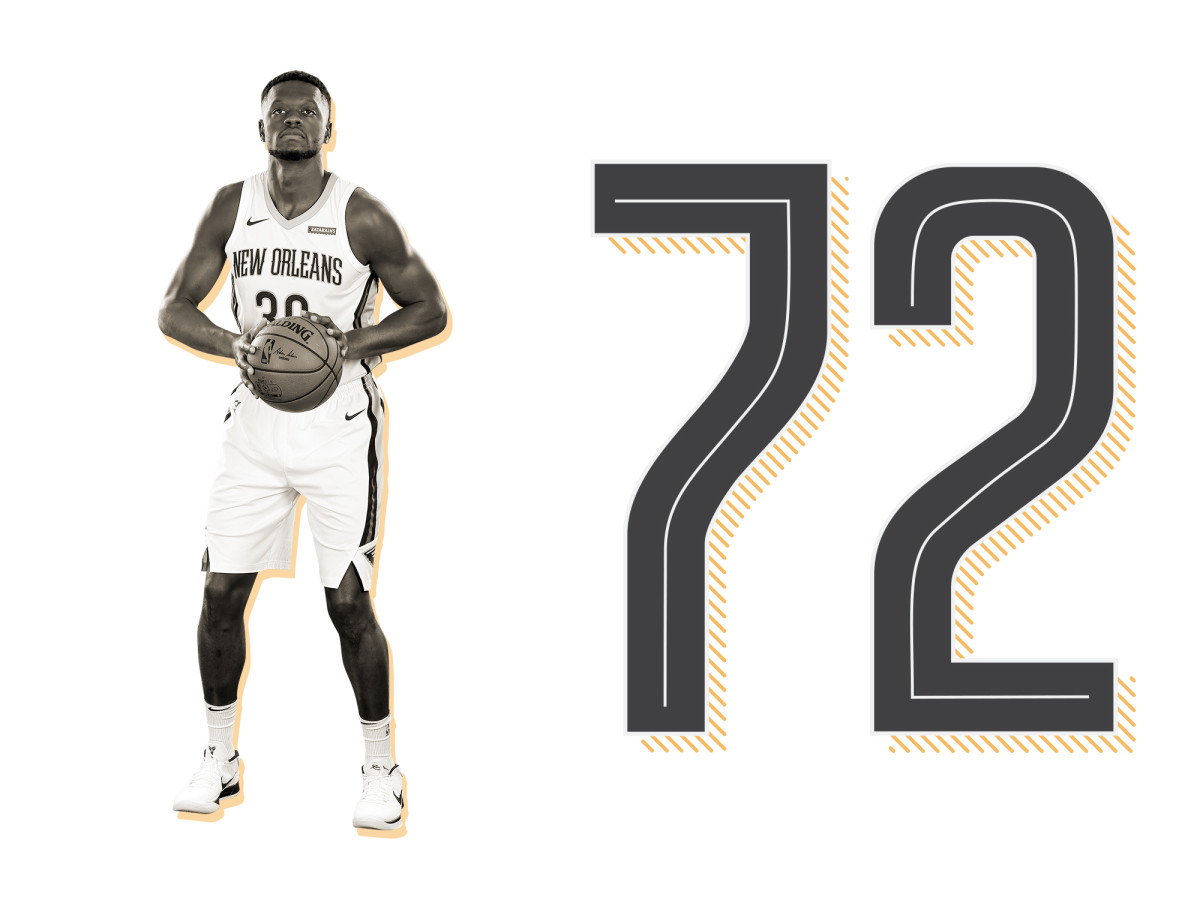
Julius Randle
New Orleans Pelicans
Amid an unspectacular Lakers season, Randle did something notable: He tempered his game. There’s still a battering ram quality to how he plays, though every drive is more pointed than before. Young players have a hard time showing restraint without sacrificing physicality. Randle (16.1 PPG, 8.0 RPG, 2.6 APG) has managed to tightrope the line between them—not without the occasional misstep, but to the point of becoming an altogether more trustworthy player. Randle’s coaches and teammates no longer have to worry about him veering wildly out of control. Concern, instead, is reserved for the opponent.
There’s nothing fun about standing ground against a player this strong, particularly when he has eyes for the rim. Randle can bully his way through other bigs, some traditional centers included, and has the ball skills necessary to create new angles for himself. Batten down the hatches and Randle can simply reroute. Randle will show his age at times (he defends very much like a 23-year-old), though often in ways that hint at what could be. For a third straight year, Randle ramped up his production and efficiency through less-than-ideal circumstances. What might he accomplish for a franchise more invested in his progress? — RM
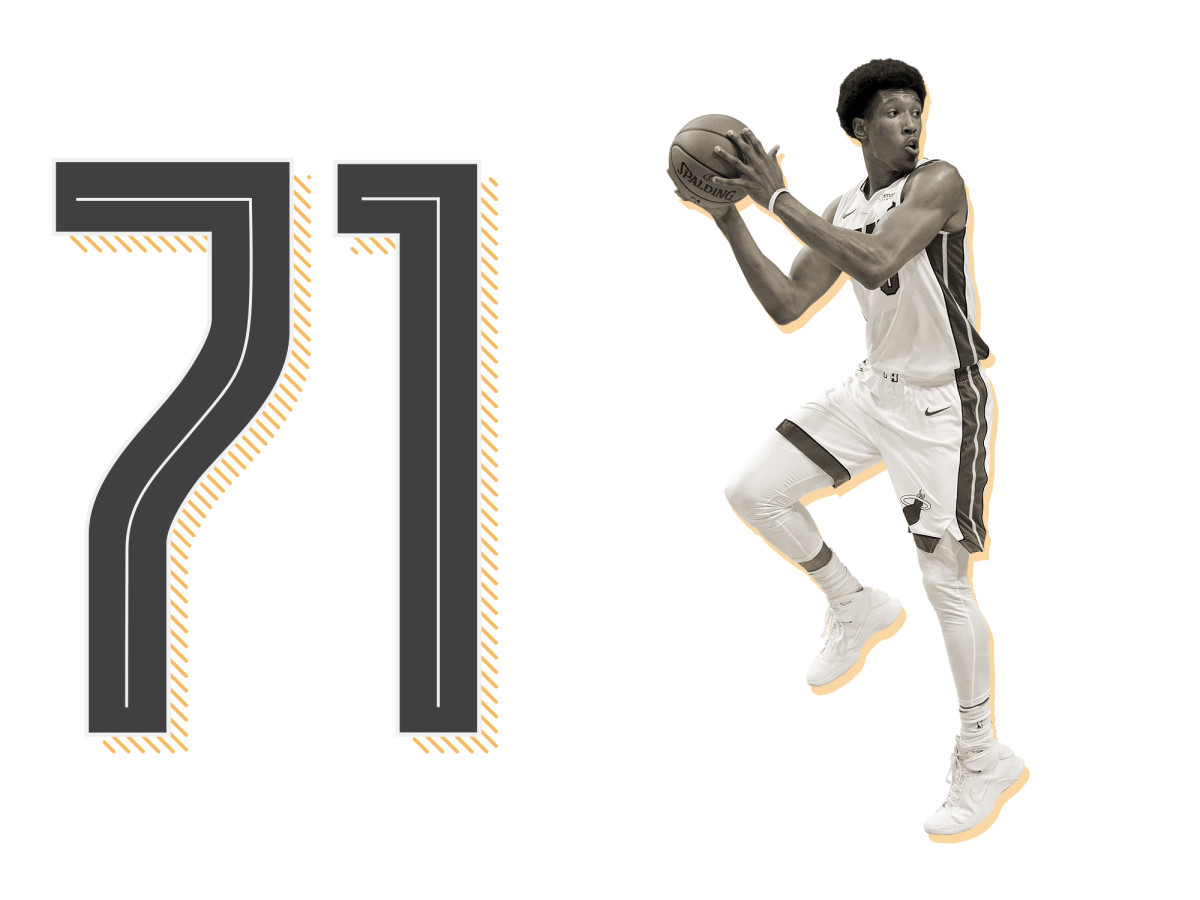
Josh Richardson
Miami Heat
An incomplete list of things that, for an NBA player, would be easier than scoring on Richardson: Moving a washer/dryer up three flights of stairs; eating a Carolina Reaper; reaching fluency in Mandarin; perfecting hummingbird pose; performing the third movement of Beethoven’s “Moonlight Sonata”; making soufflé that doesn’t collapse; fending off a swarm of bees; beating Hollow Knight to completion; renovating a four-bedroom house by hand; and running a marathon … in crocs. His defense makes even the simplest parts of basketball into something arduous.
No matter where you go on the floor or how you choose to operate, Richardson (12.9 PPG, 3.5 RPG, 2.9 APG) will be all over you, bodying up and swiping at every turn. Many defenders could manage that for minutes at a time, but what separates Richardson is his endurance. You may tire out, but he never seems to—even as his usage on offense steadily increases. It’s amazing how far Richardson’s offense has come during his three years he in the league. He started out, as many second round picks do, just trying to hit open shots and avoid making mistakes. Now he actually helps the Heat run offense. Richardson did well in his first season in a more operative role and only stands to get better. The arc of a player’s development isn’t determined by age, but by how long they’ve been working in some particular capacity. — RM
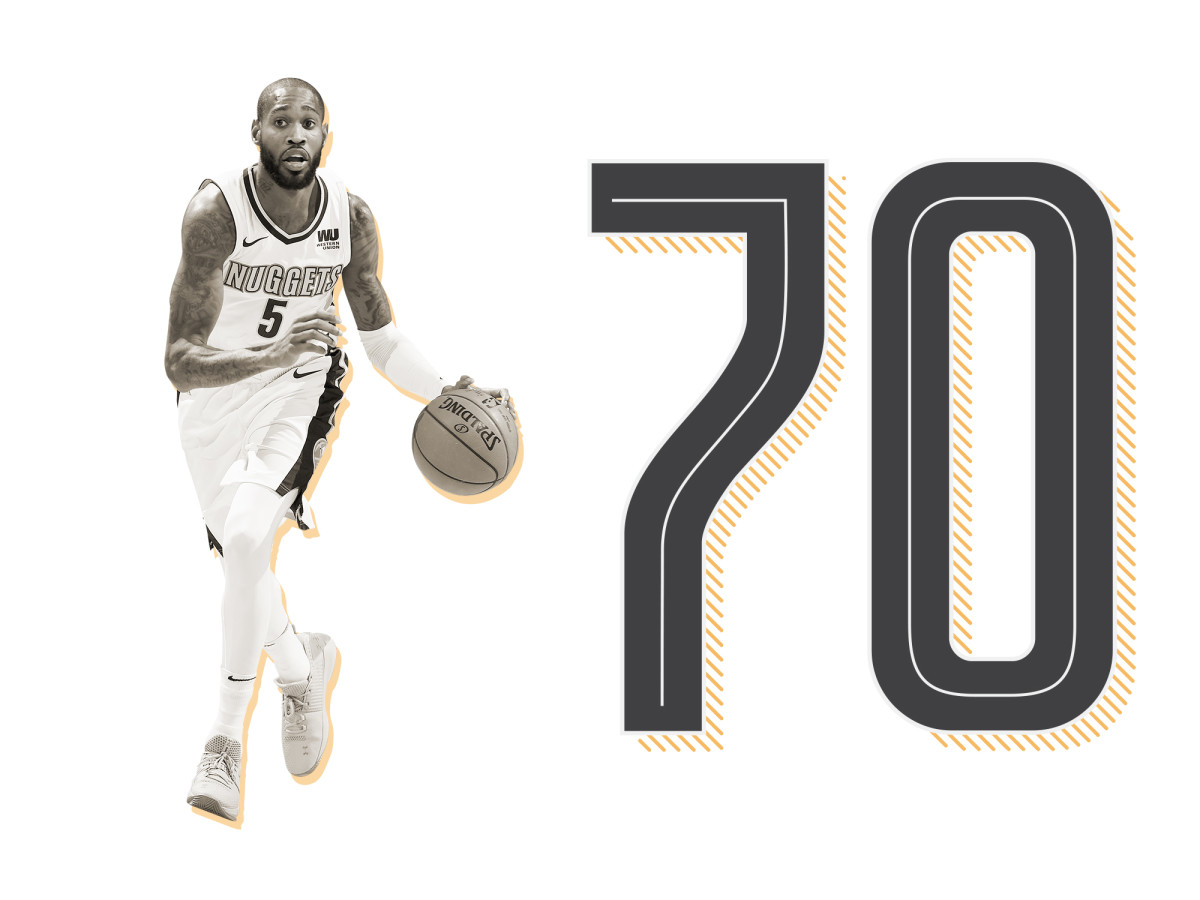
Will Barton
Denver Nuggets
Organized basketball is a desperate grasp for control, but sometimes teams are better off leaning into the chaos. Barton (15.7 PPG, 5.0 RPG, 4.1 APG) is a conduit for it—a scorer with a bottomless capacity for surprise. Just when you think you know what Barton might do, he takes the opposite pivot, spins off in a different direction, and converts the kind of shot other players would never think to attempt. The scouting report on Barton is to throw out the scouting report.
Barton’s ability—which is considerable—is exceeded by his daring. Gambits like his run the risk of backfire, but they also allow good teams to stretch beyond themselves. A little shake goes a long way. The clearest sign of Barton’s maturation is his understanding of when to let loose. His is the bargain a team can live with. There was never any question of who was better for the Nuggets last season between Barton and the safer Wilson Chandler. One fills minutes capably and predictably. The other actually makes things happen. — RM
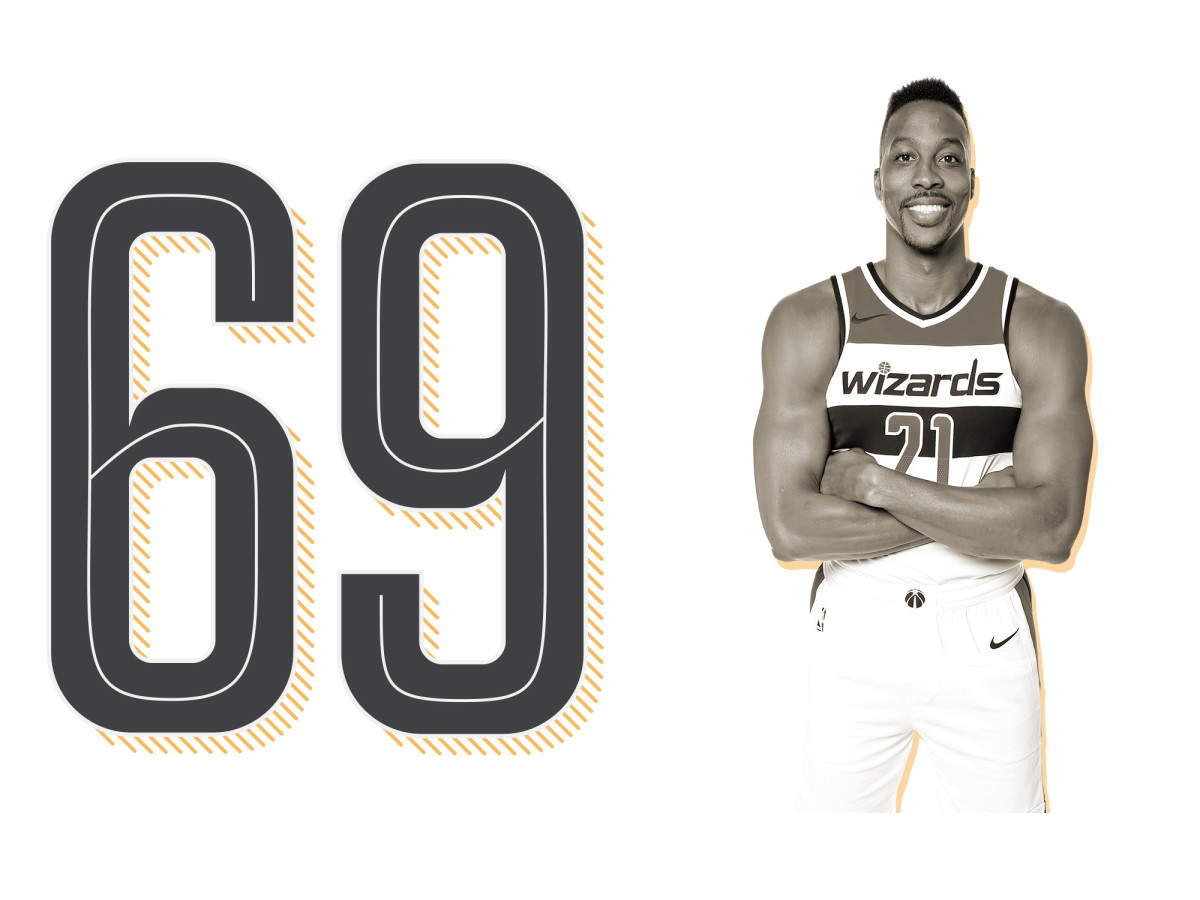
Dwight Howard
Washington Wizards
Like a July 4th cookout or a family trip to the waterpark, a change of address for Howard (16.6 PPG, 12.5 RPG, 1.6 BPG) has become a rite of summer. The eight-time All-Star center has landed in Washington via Charlotte and Brooklyn, continuing a cycle of new GMs dumping him as quickly as possible and desperate GMs talking themselves into a gamble that will almost certainly backfire.
The 32-year-old Howard is far removed from his prime years and probably leads the league in worn-out welcomes, but his reputation shouldn’t completely eclipse his performance. Last season, he missed just one game, he made Charlotte better both offensively and defensively when he was on the court, and he was one of only five NBA players to average 12 points and 12 rebounds. While Howard’s defensive impact, mobility and effort have atrophied—thereby limiting his utility in the postseason—he still ranked among the league’s most productive rebounders and finished 70% of his shots in the basket area. It’s too late for the former No. 1 pick to become the player and teammate everyone has hoped for, but he remains a worthy option as a starting center. — BG
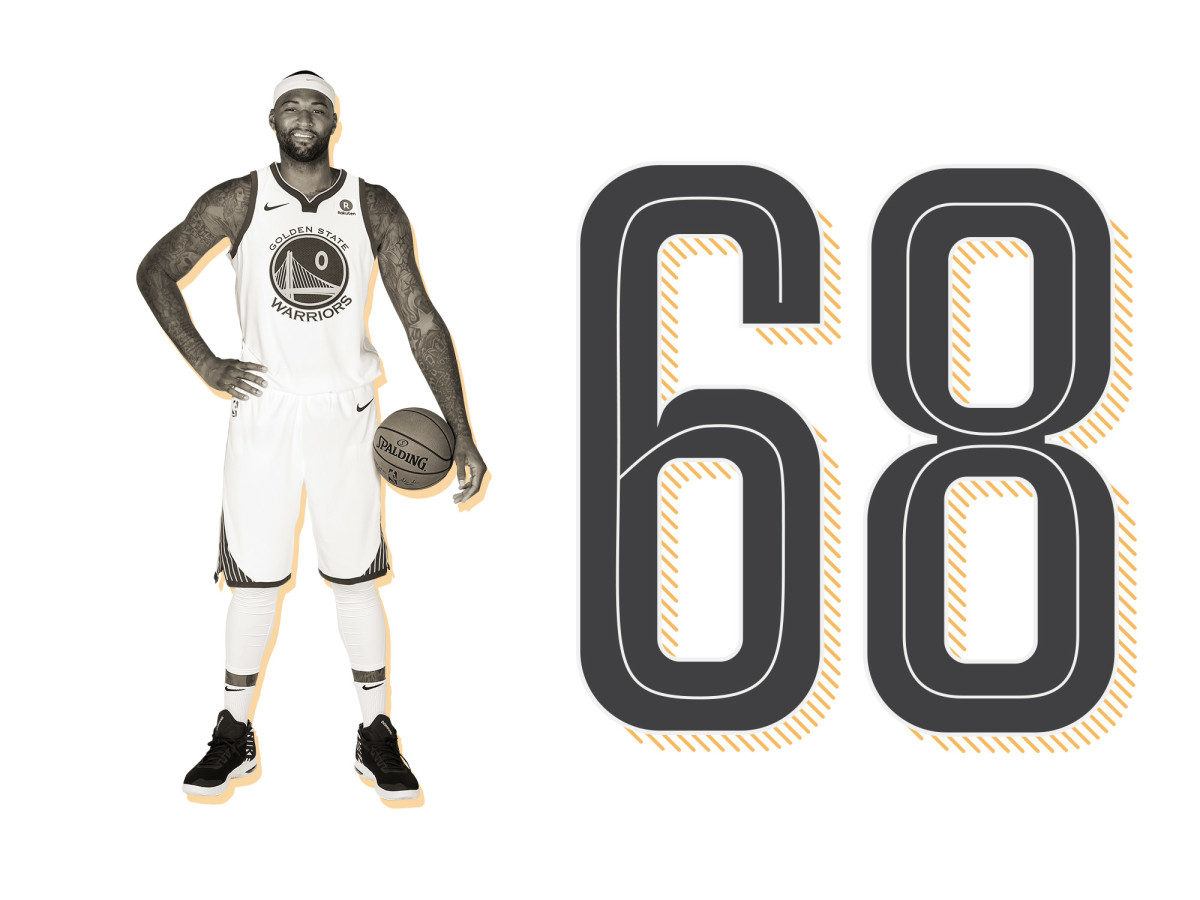
DeMarcus Cousins
Golden State Warriors
Cousins (25.2 PPG, 12.9 RPG, 1.6 BPG) should be regarded as the NBA’s biggest “What if” of 2018. If the two-time All-NBA center hadn’t blown his Achilles, do the Pelicans still take off down the stretch? Or, do their Twin Towers push the Warriors even harder in the playoffs? Come summertime, does he re-sign in New Orleans on a max deal? Or wind up as the superstar sidekick that LeBron James never found in LA? Or take DeAndre Jordan’s place with the Mavericks? Or become the new face of the Bulls? Remarkably, the actual fallout from Cousins’s injury trumped all those alternate histories: He signed a one-year bargain deal with Golden State, becoming the fifth All-Star in the champs’ projected starting lineup and inciting angry responses from 29 competing fan bases.
Stepping back from the injury-induced whirlwind, it’s worth noting that Cousins’s year-plus stint in New Orleans didn’t provide definitive answers to the major questions that dogged him in Sacramento. Nine seasons in, he still hasn’t played in a playoff game. His raw stats—on par with prime Shaquille O’Neal—haven’t translated to elite team performance. And, at 28, he is still plagued by emotional outbursts and ejections. Nevertheless, Cousins was correct when he called his summer signing a “chess move,” as the Warriors can slow-play his rehabilitation, lighten his load, and afford to hold him to a higher personal standard.
If healthy, Cousins would have placed in the top 25, but SI’s Top 100 is a one-year exercise, and this ranking assumes Cousins will miss roughly half the season, play reduced minutes upon his return, and perform at roughly 60% of his capabilities due to his age and the serious nature of his injury. — BG
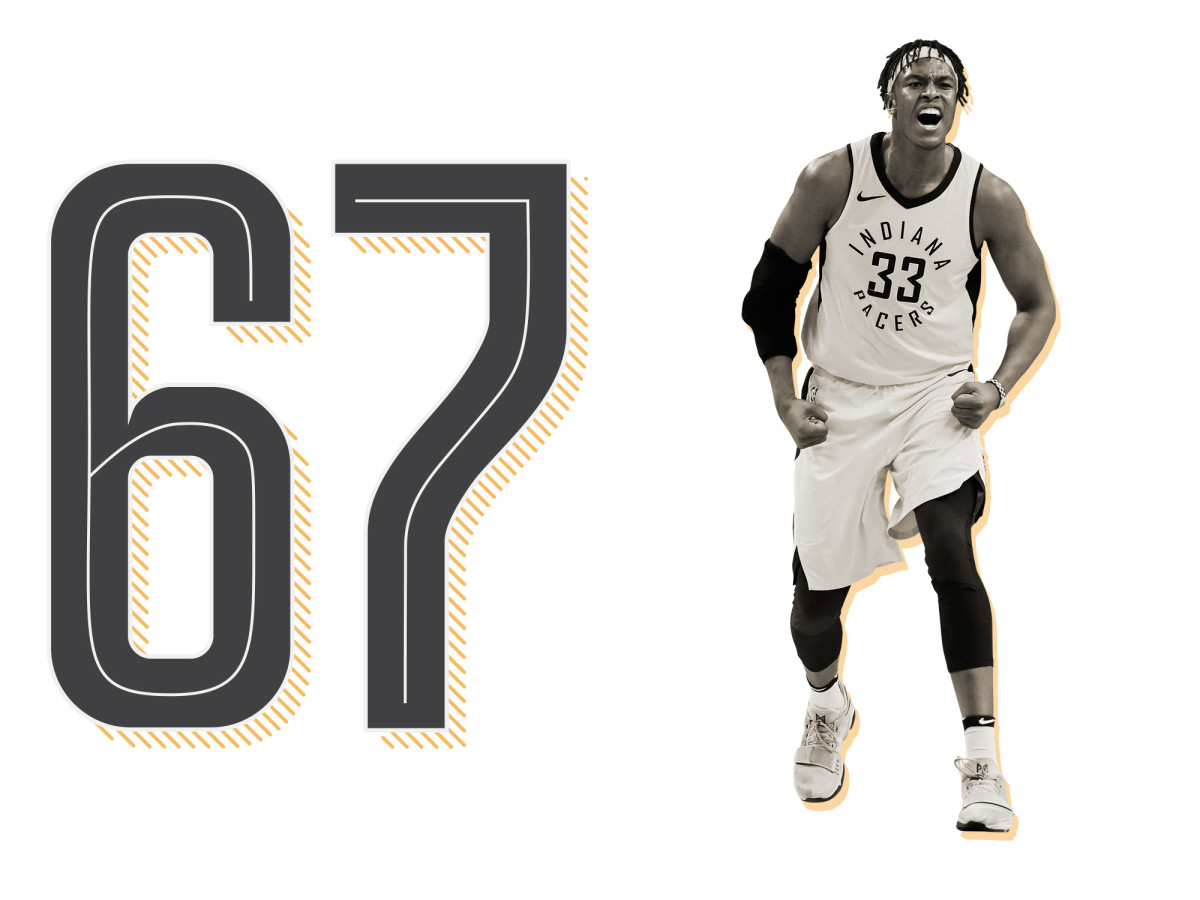
Myles Turner
Indiana Pacers
Indiana is still waiting on Turner. To date, the 22-year-old has been a tantalizing but only moderately effective NBA player. The shooting he brings to a lineup is nice, though Turner (12.7 PPG, 6.4 RPG) has yet to graduate from pick-and-pop specialty. He has the presence to protect the rim, if not the expertise to guarantee it; too often he’s positioned a half-step removed from where he should be or stuck a half-second behind the action, as is so common for bigs of his age and experience level. So many of the necessary skills are there. Any delay, then, comes from learning how to best apply them.
This ranking is a balance. Turner has the profile of a player who could take a big step this season but still faces a burden of proof in pulling it all together. Development is rarely linear. There will be fits and starts, breakthroughs and frustrations. Maybe last season could have gone differently for Turner if he weren’t dealing with an elbow injury or gradually recovering from a concussion. All we know for certain is what we saw: another decent season with some marginal improvement and all the hallmarks of a player still finding his place in the league. — RM
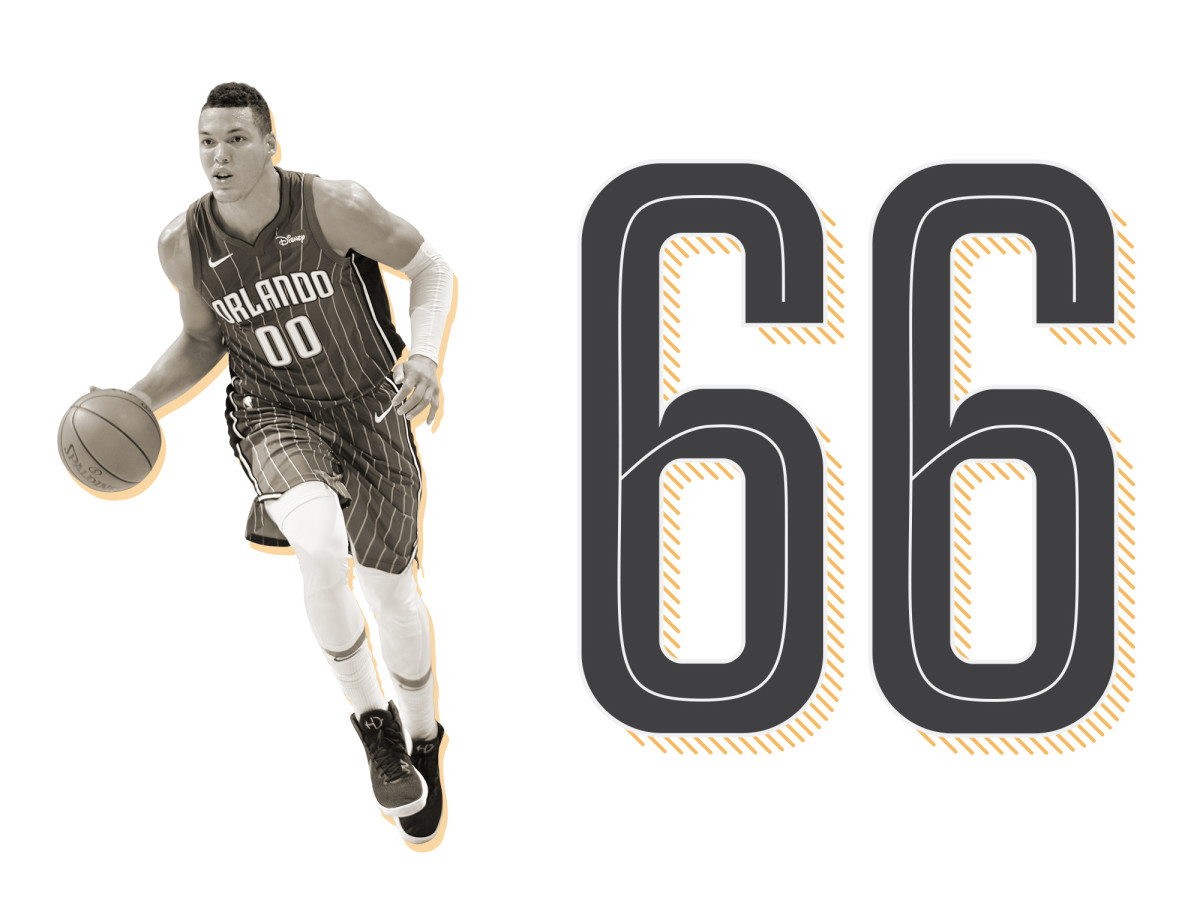
Aaron Gordon
Orlando Magic
Why wait until he retires? The NBA should invite Gordon (17.6 PPG, 7.9 RPG, 2.3 APG) to speak at the annual rookie symposium right now, as the 2014 lottery pick can already attest to the good, the bad and the ugly of professional basketball. Gordon, 22, is about to play for his fifth coach in five seasons. He’s endured four seasons with 35 or fewer wins and multiple core-altering trades. He’s deployed a hoverboard and a drone in a pair of memorable Slam Dunk Contest appearances. He’s been played out of position and seen his name listed in possible trade scenarios in a leaked photo of his front office’s whiteboard. And Rob Hennigan, the GM who drafted Gordon, spent years on the hot seat before he was finally fired.
Aside from his evident explosiveness, defensive versatility and good-natured disposition, Gordon still presents more questions than answers. He’s best suited to playing the four and has ramped up his perimeter shooting, but he’s not yet consistent enough to be a true stretch option. He has the agility and motor to be a plus defender, but he’s not a traditional rim-protecting presence and is better suited to life outside the paint. Most of all, he’s emerged as a higher-volume scorer, but he’s done so with below-par efficiency on a team that hasn’t played meaningful games after Thanksgiving. On the bright side, Gordon has a new four-year, $80 million contract to show for his hard knocks, a pact that will keep analysts guessing about his value until Orlando finally finds a path back to relevance. — BG
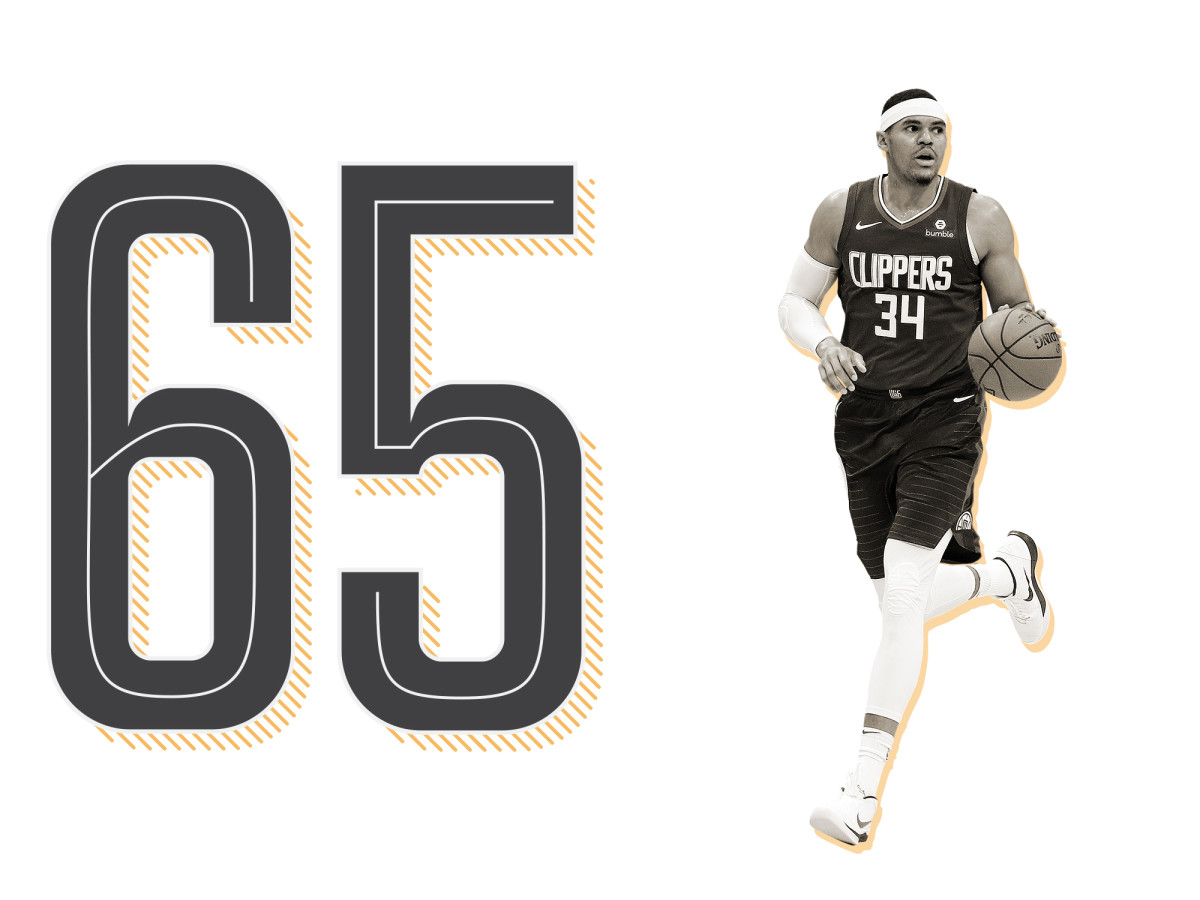
Tobias Harris
Los Angeles Clippers
Harris (18.6 PPG, 5.5 RPG, 2.4 APG) has played for four teams in seven seasons, but he’s developed into far more than a journeyman as he’s entered his prime. In fact, the combo forward’s inclusion in a midseason trade for Blake Griffin provided an excellent opportunity to appreciate his potent and flexible offensive game. While Griffin is more imposing, more decorated and far more famous, Harris plugged seamlessly into the Clippers’ starting lineup at less than half of Griffin’s price. L.A. went 17-15 after the trade, as Harris displayed improved perimeter shooting and the ability to score without hijacking the offense.
Like many stretch fours, the 26-year-old Harris often finds himself in mismatches defensively, as he lacks length and lateral quickness. He’s made some progress in terms of awareness on that end, though, and his growth as an off-the-dribble threat helps offset his defensive deficiencies. Although under-qualified to be an alpha scorer due to his limited playmaking for others, Harris would add value to any team hoping to modernize its offense. Unlike Griffin, he’s an easy piece to fit. — BG
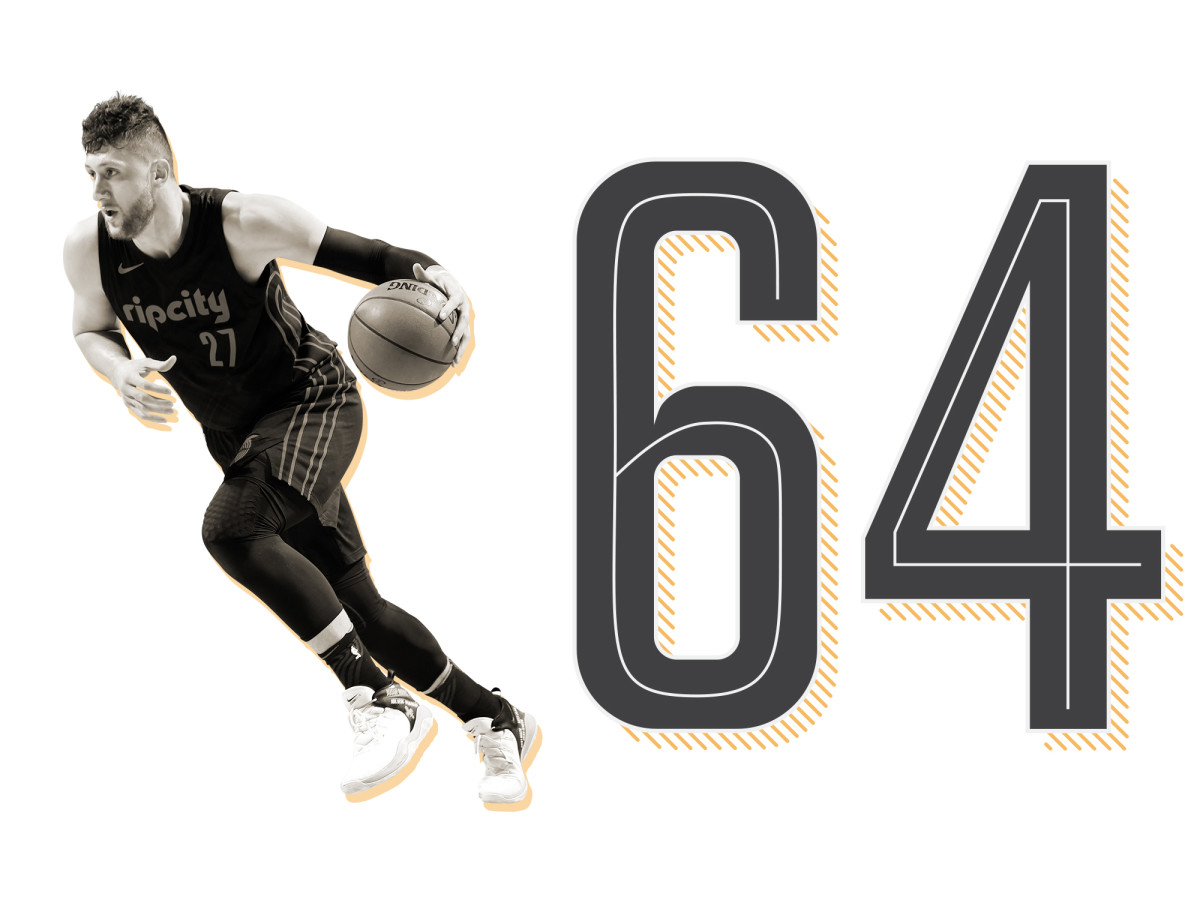
Jusuf Nurkic
Portland Trail Blazers
Although Nurkic (14.3 PPG, 9 RPG, 1.4 BPG) just completed his rookie deal, he has rewritten virtually every aspect of his scouting profile. During two-plus seasons in Denver, the Bosnian 7-footer couldn’t finish, couldn’t protect the ball, couldn’t handle big minutes, couldn’t stay healthy, couldn’t serve as a functional backline defender, and couldn’t get along with his coach. Following a 2017 trade, the Blazers embarked on an “Extreme Makeover: Starting Center” mission, encouraging Nurkic to trim down, communicating his role to him clearly, empowering him to pursue his own offense, and entrusting him with major defensive responsibilities.
Nurkic, 24, responded in a big way in 2017-18, playing in 79 games and logging more than 2,000 minutes, well above his previous career-highs. He wasn’t just eating up minutes: Nurkic helped Portland improve from No. 21 to No. 8 in defensive rating, he dramatically increased his FG% around the basket, he cut his turnover rate, and he learned to swallow his pride when pulled for match-up purposes in late-game situations. All that progress didn’t help him avoid being torched by Anthony Davis in the playoffs, but it did earn him a four-year, $48 million extension this summer. Next up on the to-do list: ease up on the low-percentage runners, floaters and flip shots that drive Blazermaniacs berserk. — BG
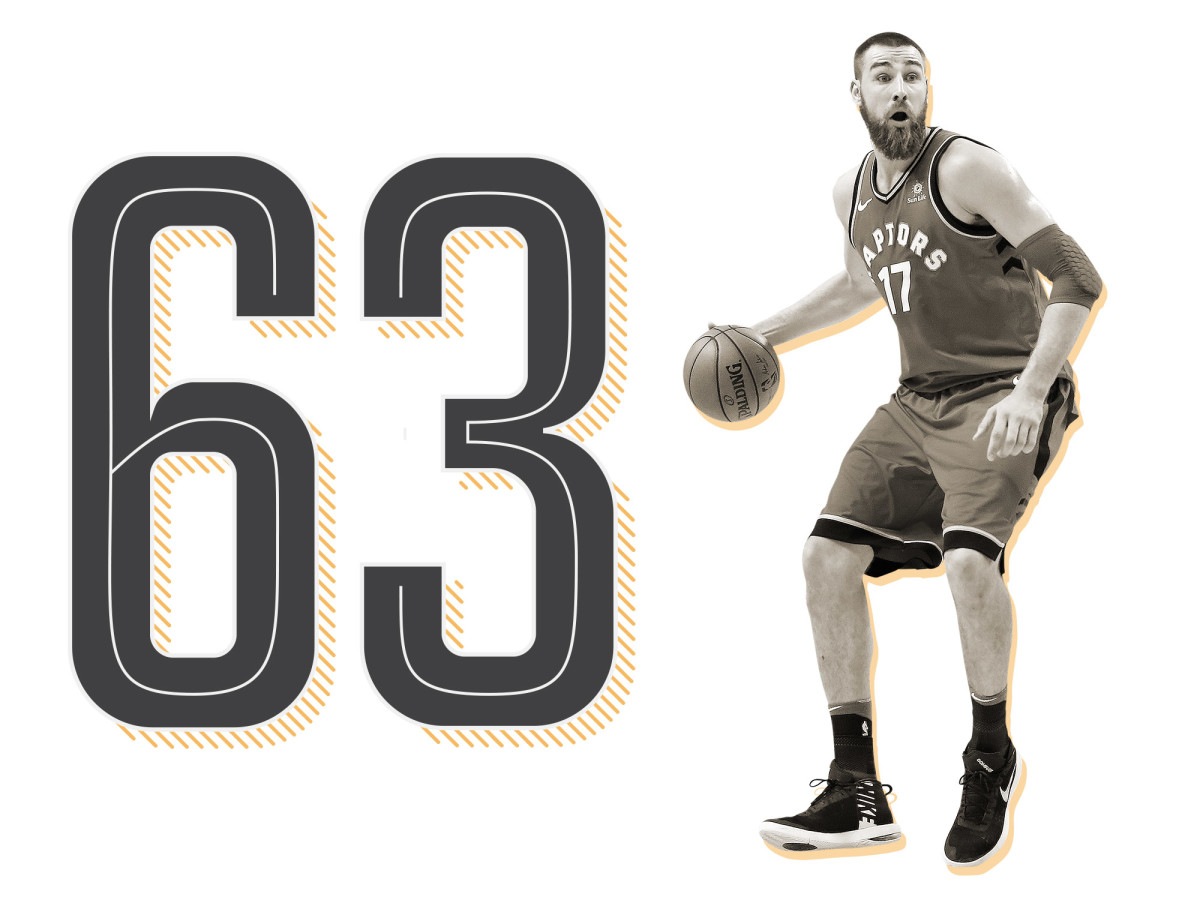
Jonas Valanciunas
Toronto Raptors
As the NBA has plunged deeper into the smallball era, perception of Valanciunas (12.7 PPG, 8.6 RPG) has seesawed wildly. Once viewed as a potential All-Star, the Lithuanian center became a case study for natural selection on the hardwood: What chance did a lumbering 7-footer have of staying on the court during the playoffs? Rather than overhauling his game to become a full-fledged stretch five, Valanciunas has evolved in softer fashion: exerting maximum effort in fewer minutes, seeking out and exploiting undersized defenders for high-percentage scoring opportunities, dabbling with the three ball, and gradually improving his feel and confidence when forced to defend away from the hoop.
The result? Valanciunas, 26, proved to be a skilled battering ram in the 2018 playoffs, notching six double-doubles in 10 games, outplaying Washington’s Marcin Gortat in the first round, and pounding the Cavaliers for 21 points and 21 rebounds in Game 1 of the second round. Yes, the Raptors eventually went down in ugly fashion, but Valanciunas was hardly their weakest link. With excellent durability, well-honed post moves and greater comfort in his refashioned role, Valanciunas has managed to stave off stylistic extinction and trade rumors alike. — BG
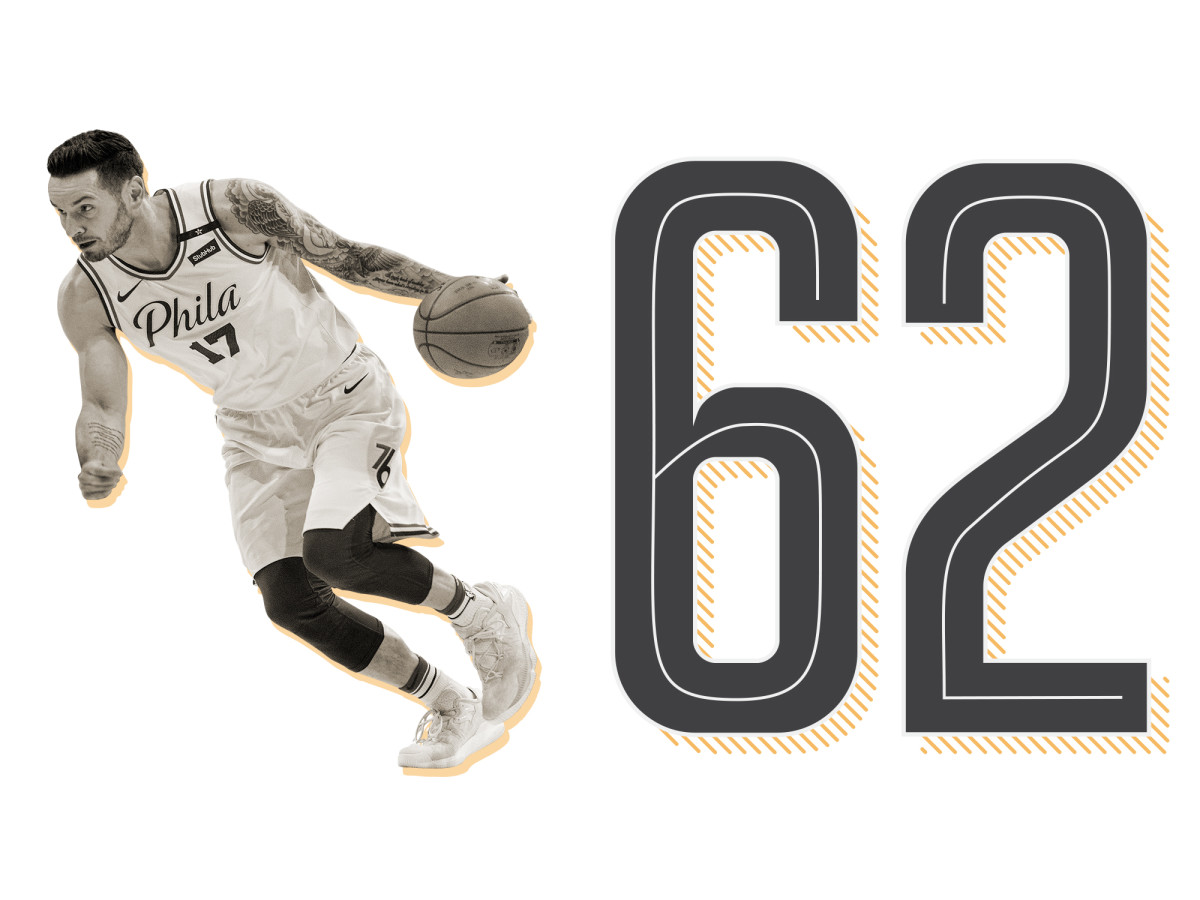
JJ Redick
Philadelphia 76ers
It makes perfect sense that Redick (17.1 PPG, 2.5 RPG, 3.0 APG) would leave the most comfortable fit of his NBA career at age 33 and go on to have his best season yet. Philadelphia made Redick a focal point; he might not have led the Sixers in shot attempts or usage, but Redick’s movement without the ball gave the entire offense its shape. Not many shooters could bear the weight of that kind of role. It works for Redick because of how fluidly he transitions from sprint to shot, making some of the hardest shots in the game look easy.
Redick could bring that skill set anywhere, modulating his role as necessary to fit whatever his circumstances require. There is an immutable baseline value for a career 42 % three-point shooter who can hold his own defensively. Redick is more than that. The way he takes the ball in a dribble hand-off and reads the next play in sequence opens up the scope of the entire offense. His screens—yes, screens—throw defenders completely out of sorts. It all comes from the versatility of Redick’s form and release, which allow him to touch so many more aspects of an offense than you might expect. — RM
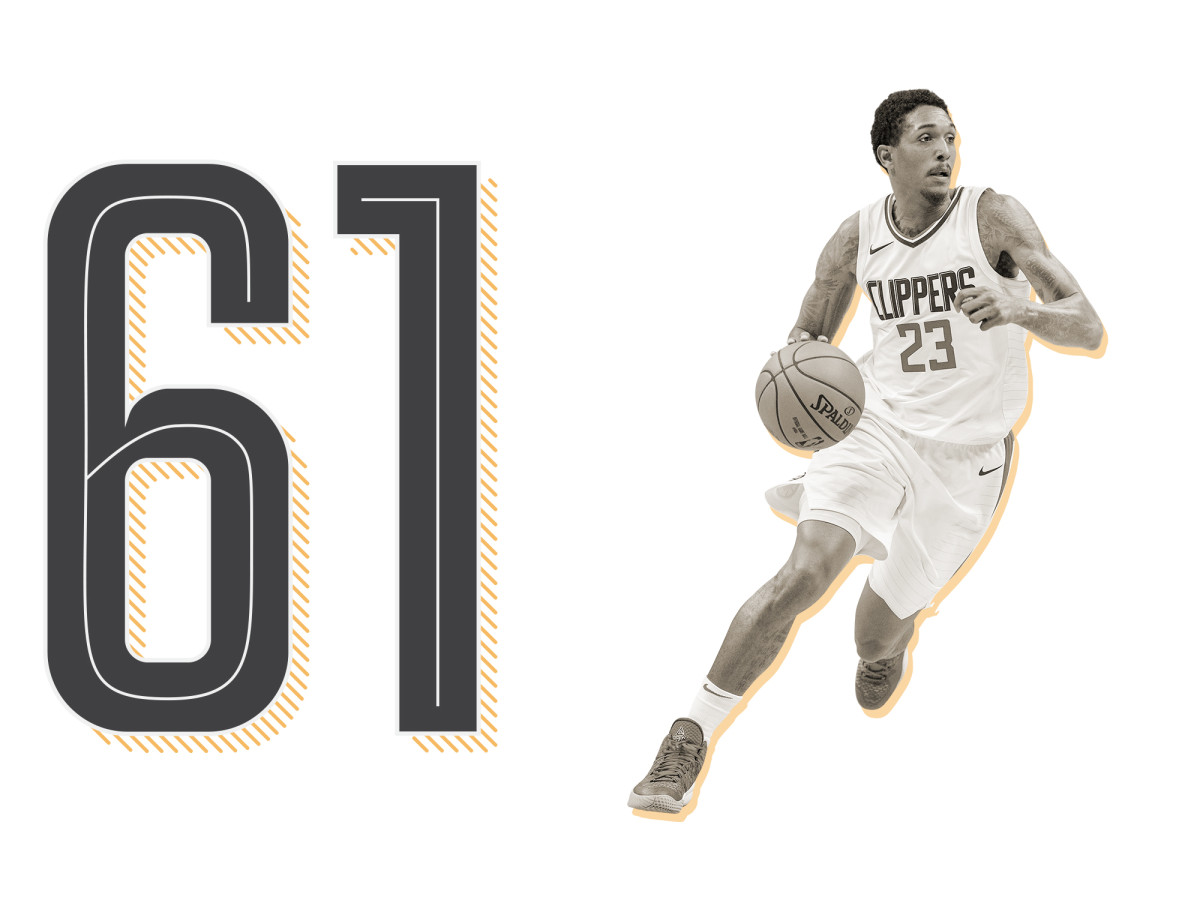
Lou Williams
Los Angeles Clippers
Williams (22.6 PPG, 2.5 RPG, 5.3 APG) was the easy choice for Sixth Man of the Year last season not because he exemplified the award, but because he transcended it. Bench players don’t score more than 20 points per game (Williams is the first to do so in nearly 30 years). They don’t work as a team’s primary scoring option (Williams not only led the Clippers in assist percentage and overall usage, but used roughly as many possessions as Anthony Davis, Victor Oladipo, Donovan Mitchell, and DeMar DeRozan). Yet Williams, miraculously, pulled it off—transforming from a novelty scorer into the leader of a top-10 offense.
Let’s give credit where it’s due. Williams may be a crummy, undersized defender, but he’s enough of a dynamo to overcome that. Years of clever play have allowed Williams to craft his own unique style through experimentation. One can find incredible latitude when his primary job is to get buckets, and through it Williams has tested thousands of permutations of fakes and footwork to find what works best for him. The more the league leans toward switching defenses, the more valuable players like Williams—who can dutifully run a pick-and-roll or dance their way through an isolation—become. — RM
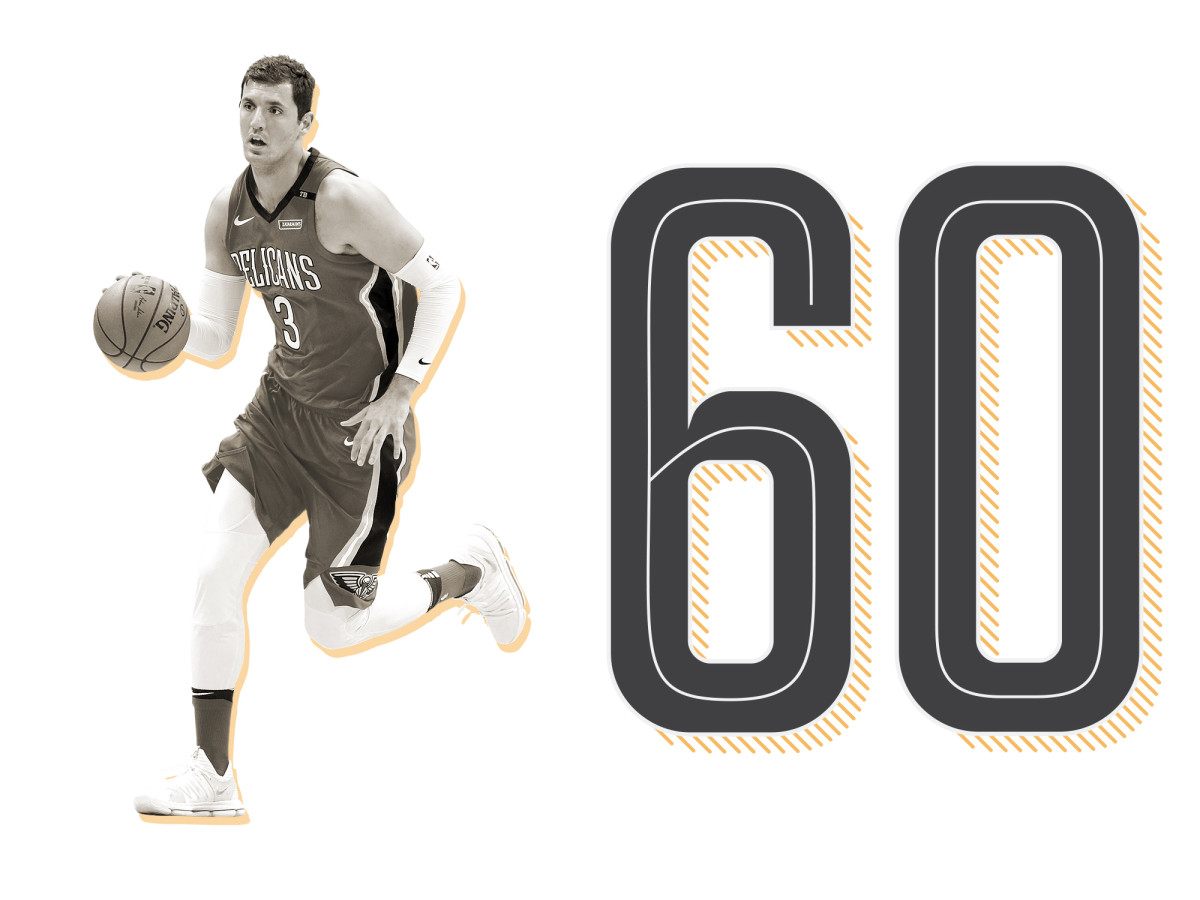
Nikola Mirotic
New Orleans Pelicans
Was Mirotic (15.6 PPG, 7.4 RPG) the biggest winner of the 2018 trade deadline? One minute, he’s in the hospital thanks to a Bobby Portis punch and dreading a return to the aimless, hapless Bulls. The next, he’s joyriding with the Pelicans’ Anthony Davis in one of the NBA’s most exciting offenses, exploding for 30 points in a playoff game while sweeping the Blazers, and cashing Gillette endorsement checks after shaving his trademark beard. What a glow up.
The Pelicans were magical when Davis and Mirotic shared the court, posting a +12 net rating in more than 500 minutes. By comparison, New Orleans was +5.9 in roughly 1,100 minutes with Davis and DeMarcus Cousins. In many ways, Mirotic was the anti-Cousins: He was comfortable playing fast, he was accustomed to life as a complementary option, he rarely turned the ball over, he handled switches, and he moved effectively in space on defense. What’s more, he was strong enough on the boards that New Orleans was able to play its preferred smaller lineups, even in the playoffs. For a winning team, the streaky Mirotic is more than a stereotypical stretch four: He does enough dirty work to justify a major role even when he’s slumping. — BG
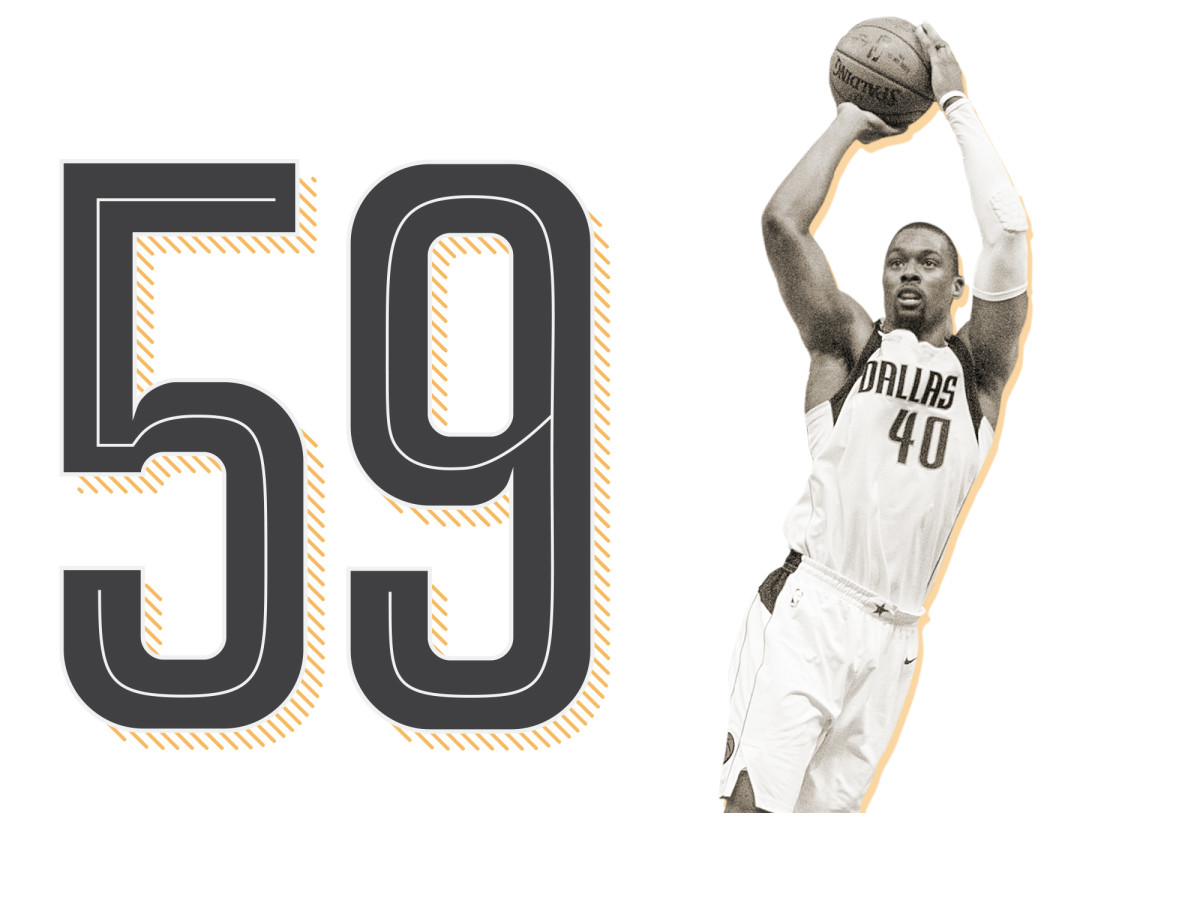
Harrison Barnes
Dallas Mavericks
Barnes (18.9 PPG, 6.1 RPG, 2.0 APG) is not a first-option scorer, as he’s been cast in Dallas, or a fifth option, as he was in Golden State. His game fits neatly in between, where it can funnel some moderate number of possessions toward mildly efficient ends. It’s nice, though, that he can at least dabble on both extremes of the usage spectrum. The strength of Barnes’s game comes through its variety. Not many spot-up shooters would look just as comfortable working in isolation, or curling around a screen, or posting up a mismatch. And while he’s not exceptional enough in any one category to actually give a team some direction, he’s flexible enough to bend in support of those around him.
Teams can play Barnes at the three (as seems to be his preference) or the four without much compromise. There is virtually no risk of him getting played off the floor by a mismatch. Small ball and bully ball alike suit him just fine; if anything, Barnes might be even better at stonewalling bigs trying to work their way to the rim than he is shuffling to stay in front of opposing wings. What matters most, though, is that he’s never a target. Featuring Barnes—whether as the lead in an offense or the focus of an opponent’s game plan—will often lead to underwhelming results. — RM
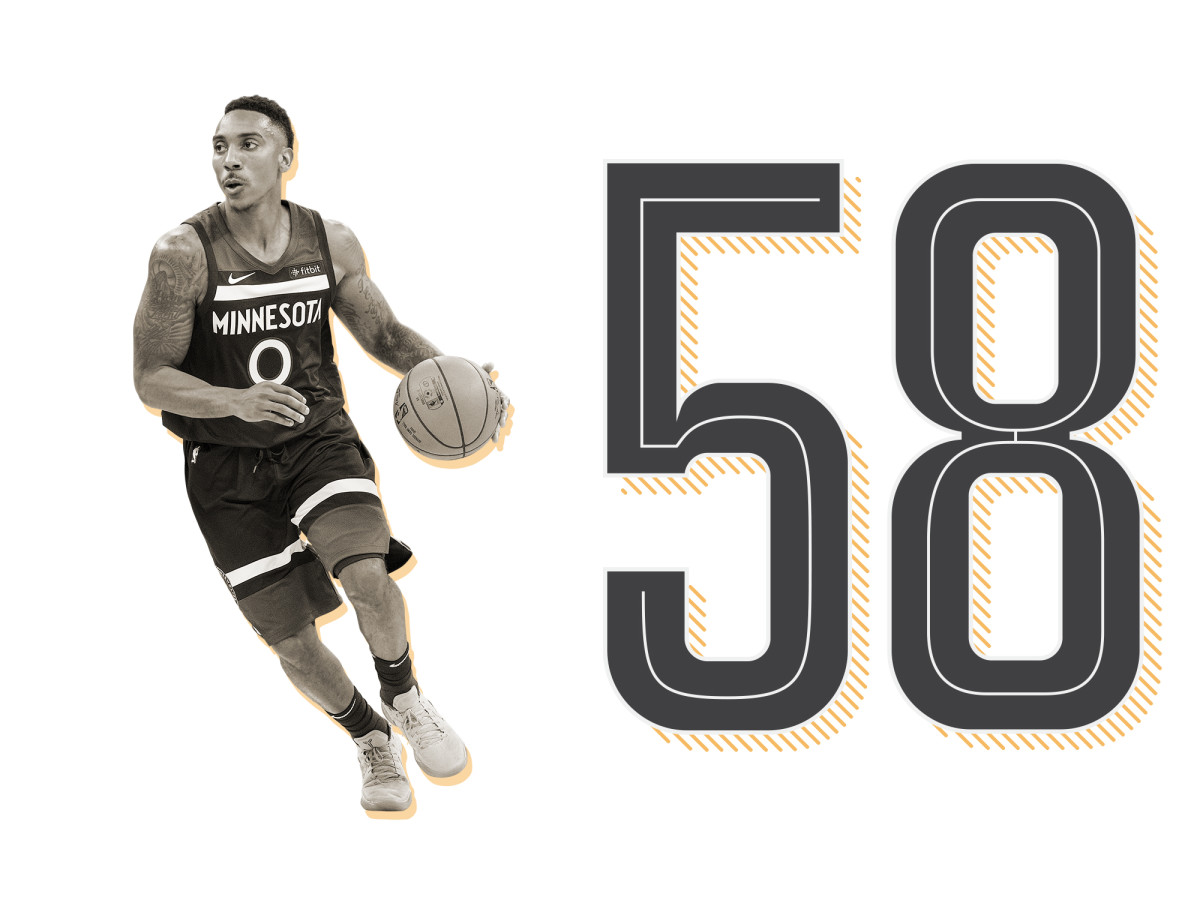
Jeff Teague
Minnesota Timberwolves
Teague (14.2 PPG, 7.0 APG) is good. Not very good. Not elite. Not average. Not bad. The nine-year veteran is a Trader Joe’s prepackaged dinner, a 3.0 grade point average, a starter home, an L.L. Bean backpack, a scoop of vanilla ice cream with no cone or toppings. He satisfies basic needs and rarely excites. In dark days, his thorough competence inspires faint hope. In better times, he inevitably leaves fans wanting more.
As his 2017 arrival in Minnesota proved, the 30-year-old Teague is the right point guard to end a 13-year playoff drought and the right point guard to exit meekly in round one. The Timberwolves boasted the NBA’s fourth-best offense last season, as Teague spread the ball around to his star teammates and filled in the gaps with his own scoring when needed. But he hit a familiar hard ceiling in the playoffs, outmatched and, at times, embarrassed by Houston’s premier backcourt. True to form, he received little attention for his role in Minnesota’s best season since 2004; Likewise, his name was nowhere to be found in the rumors of discontent that have engulfed his higher-profile teammates. As it was in the beginning, so shall it be in the end. “Good” doesn’t make headlines. — BG
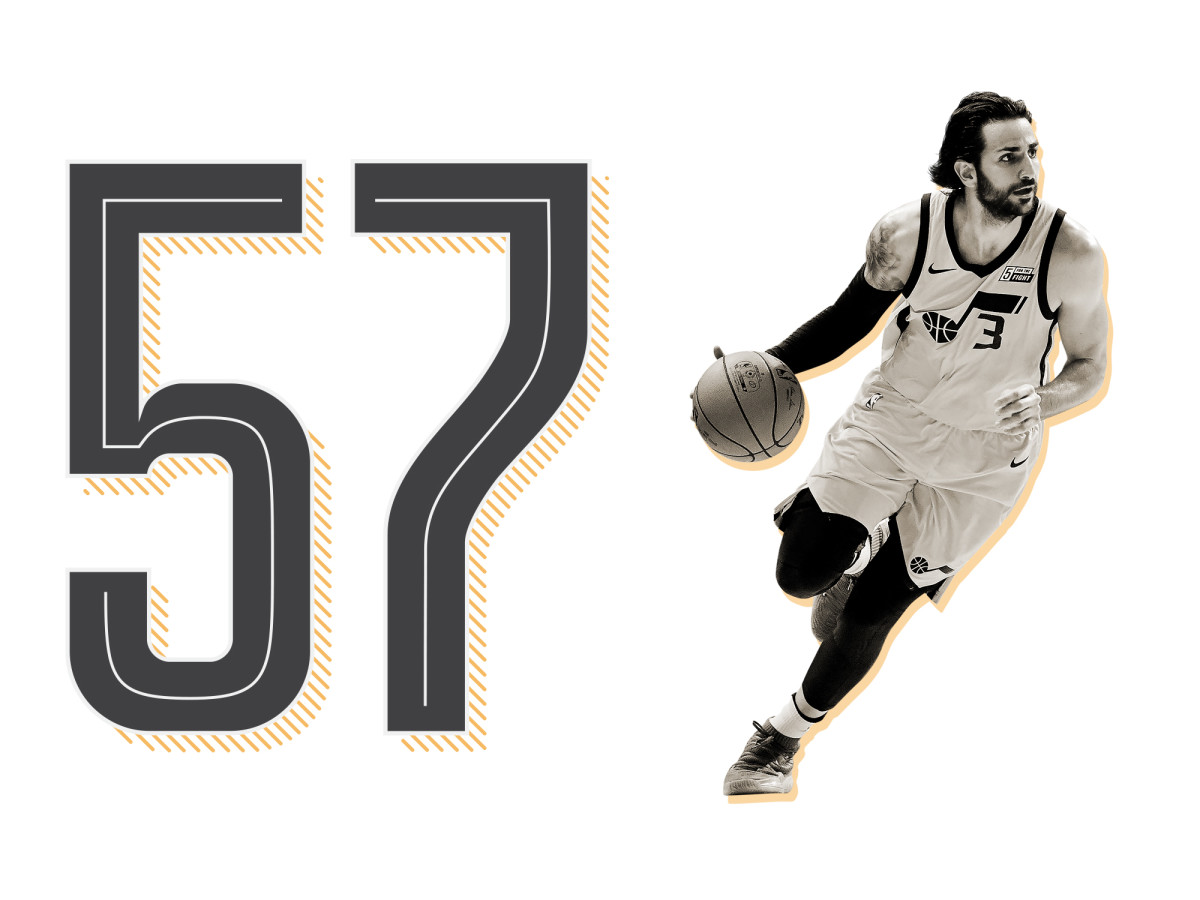
Ricky Rubio
Utah Jazz
Rubio (13.1 PPG, 4.6 RPG, 5.3 APG) is prone to weeks-long mirages of effective shooting, in which it appears—for some fleeting moment—that his long-range accuracy has turned a corner. The back half of last season was the most prolonged and compelling fantasy yet: 41 games in which Rubio made 41% of his threes, coinciding with Utah playing genuinely dominant basketball. That figure will not hold. But to be fair, it doesn’t have to. Given where Rubio is coming from (31.5% shooting on three-pointers over his first six years in the league), even modest, reliable improvement could be transformative.
When you’re already one of the best defenders, passers, and rebounders at your position, a smaller step forward can feel like a stride. There are two factors at work (and thus two parallel reasons to believe in his progress last season): Rubio has now posted a career-high effective field goal percentage in three straight seasons, showing a clear developmental arc; and separately, only now is Rubio playing for a coaching staff that seems to really understand him. You can’t just plug Rubio into any system and hope for the best. Utah gets that, and has found ways to push their point guard without missing the boat on what makes him so valuable in the first place. — RM
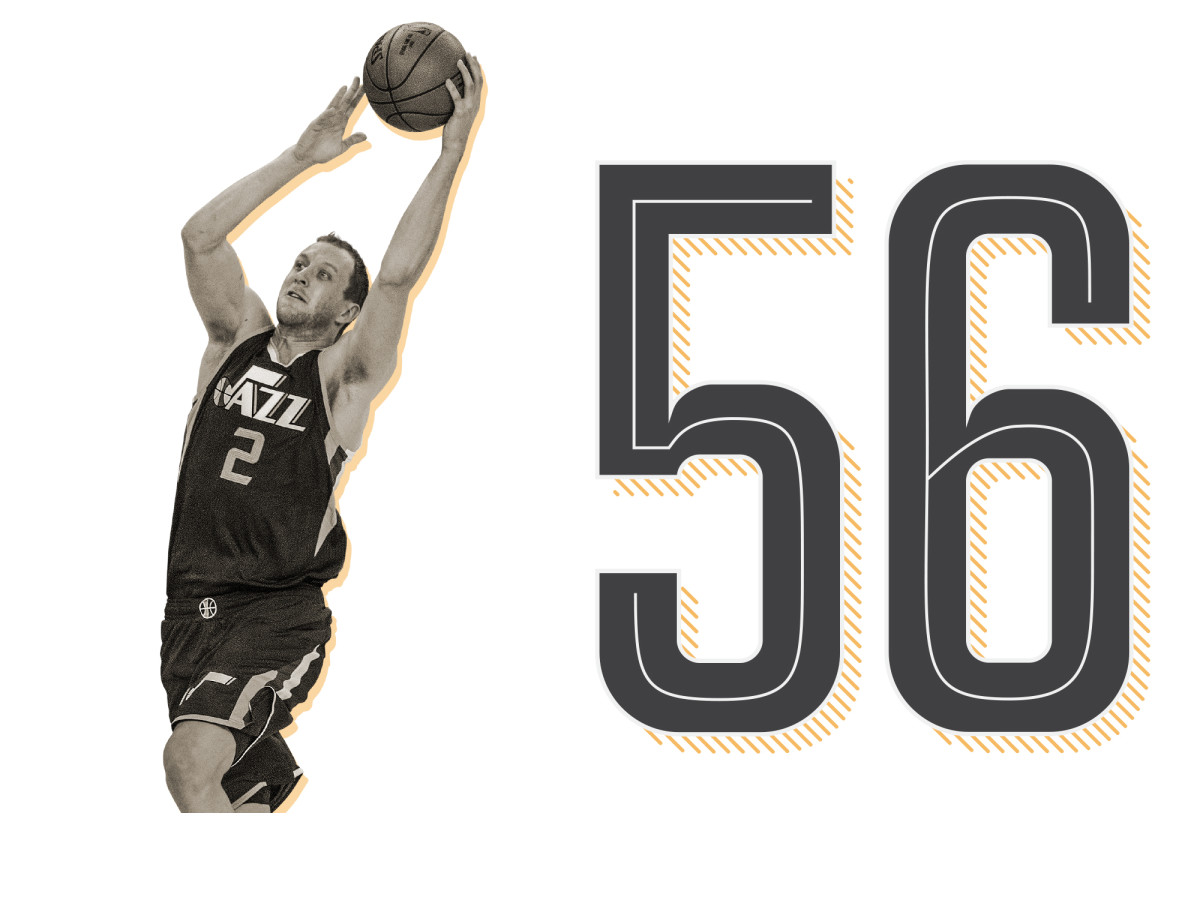
Joe Ingles
Utah Jazz
If you were to ask a basketball coach to describe their ideal role player, they might unknowingly profile Ingles (11.5 PPG, 4.2 RPG, 4.8 APG). Think about it. They’d want someone who’s easy to play with, like a pass-first wing player who also happens to be one of the best three-point shooters in the league. Beyond that, they’d want someone with enough of a handle to initiate some offense and enough vision to make smart plays. Defensive commitment is a given, and the ability to guard multiple positions is a perk. The player would need to be intensely competitive, but it’s best if they’re also unassuming. Coaches would want the kind of player who understands his team’s principles enough to know when to break them—a delicate blend of reliability and creativity.
It’s not hard to find more athletic or higher-scoring players. The trick is finding many who are as good as Ingles when it comes to supplying the things that teams actually need. — RM
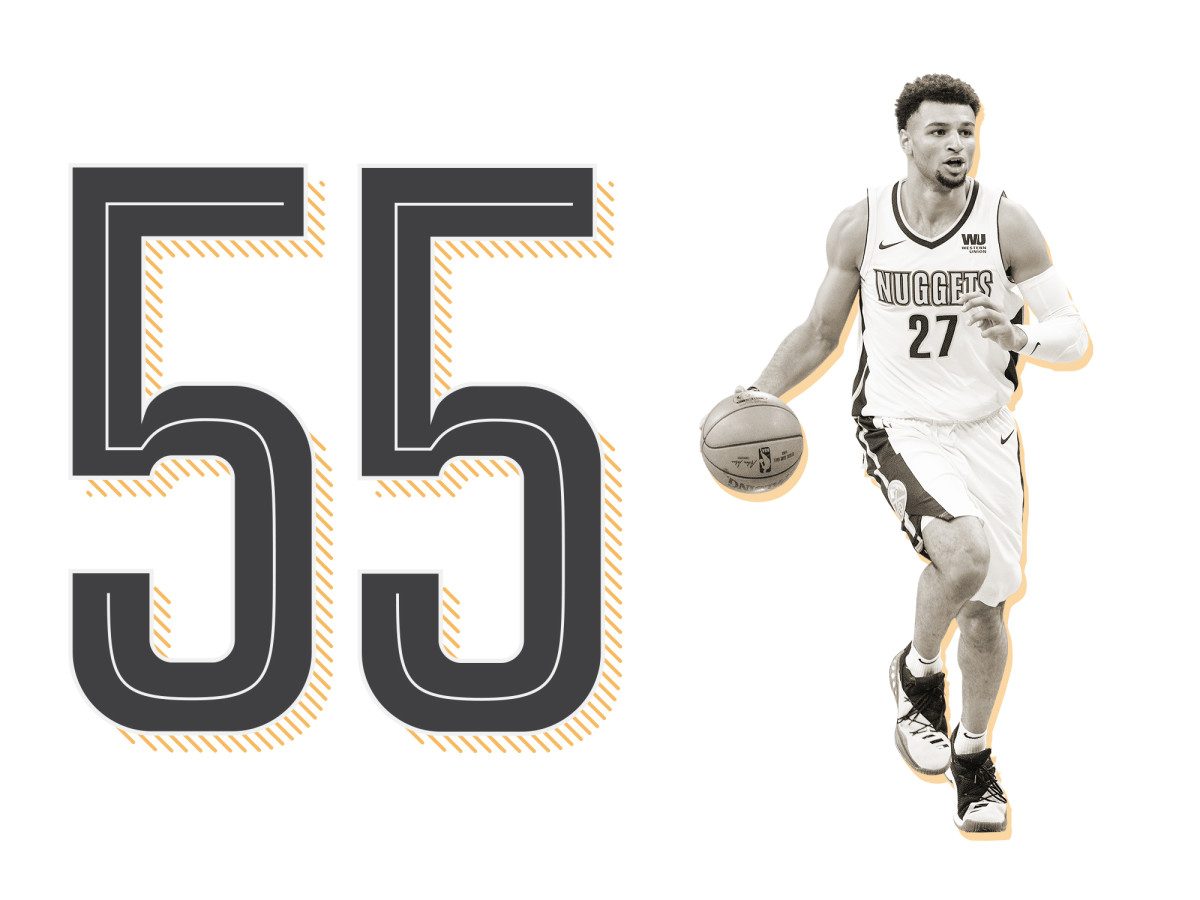
Jamal Murray
Denver Nuggets
While Murray (16.7 PPG, 3.7 RPG, 3.4 APG) wasn’t necessarily expected to have an instant impact when he was drafted at age 19, he’s already emerged as a full-time starter and the 2016 class’s leader in games, minutes and points. Now 21, the Canadian product is a prime example of the Stephen Curry Generation: young guards who are encouraged to launch three-pointers at a rate that would have been unimaginable 10 years ago. In his second year, Murray attempted more than five threes per game, a threshold that Curry himself didn’t reach until his fourth season at age 24.
Denver’s archer is just getting started. After barely missing the playoffs last year, Murray looks like a strong candidate for 2019 Most Improved Player: His per-game stats and efficiency substantially improved in Year Two, he helped lead the Nuggets to 46 wins and the NBA’s No. 6 offense, and his natural scoring instincts proved to be a strong fit with Nikola Jokic and Gary Harris. The hope is that Murray can hone his off-the-dribble three-pointer, a development that could help him join Curry in the 50/40/90 shooting club once his all-around game blossoms. A lack of size and physicality compromise his defensive value, but Murray is fiercer and more competitive than most people realize. Aside from top pick Ben Simmons, he may have the highest ceiling of any player in the 2016 draft. — BG
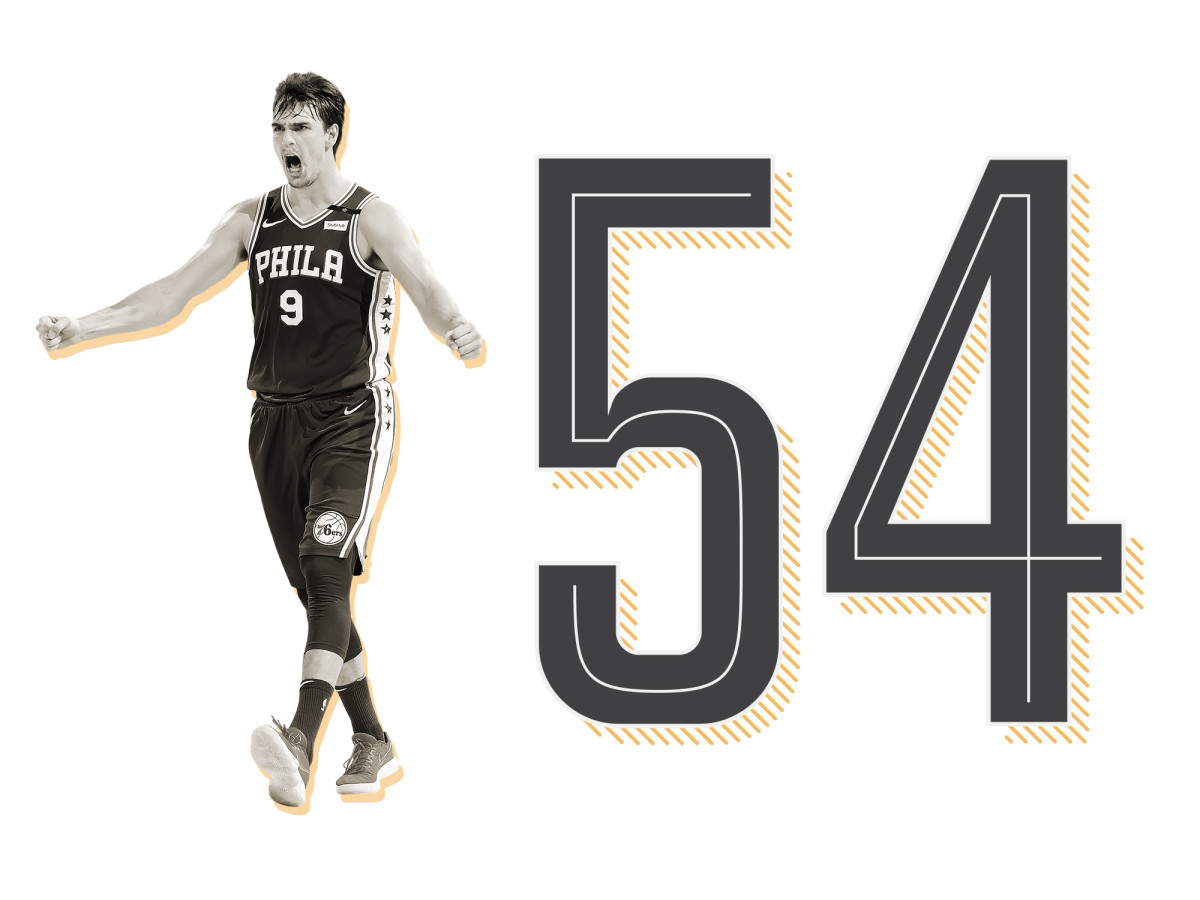
Dario Saric
Philadelphia 76ers
For Saric (14.6 PPG, 6.7 RPG, 2.6 APG), instinct is a propulsive force. The 24-year-old has a preternatural sense of where to be and when. By the time Ben Simmons commits to making a pass, Saric has already raced through the backdoor on his way to the rim. He has a knack for turning up around any loose ball. If the defense is careless enough to box out without securing the rebound, Saric will be the first to it. Should an opponent get careless with a dribble hand-off, Saric might sniff out their negligence and poke the ball away.
It’s not easy for a team to build off of that kind of situational awareness, but we saw in the postseason just how fruitful it can be. Saric was completely undaunted by his first playoff run. He stuck to his game—a dynamic mix of cutting, shooting, and playmaking—and found room to contribute across the board. There were always higher priorities for the Sixers than to get Saric involved, and yet he constantly worked his way into the mix. For all the careful planning that goes into an NBA game, sometimes it’s up to players like Saric to help a team find their flow. — RM
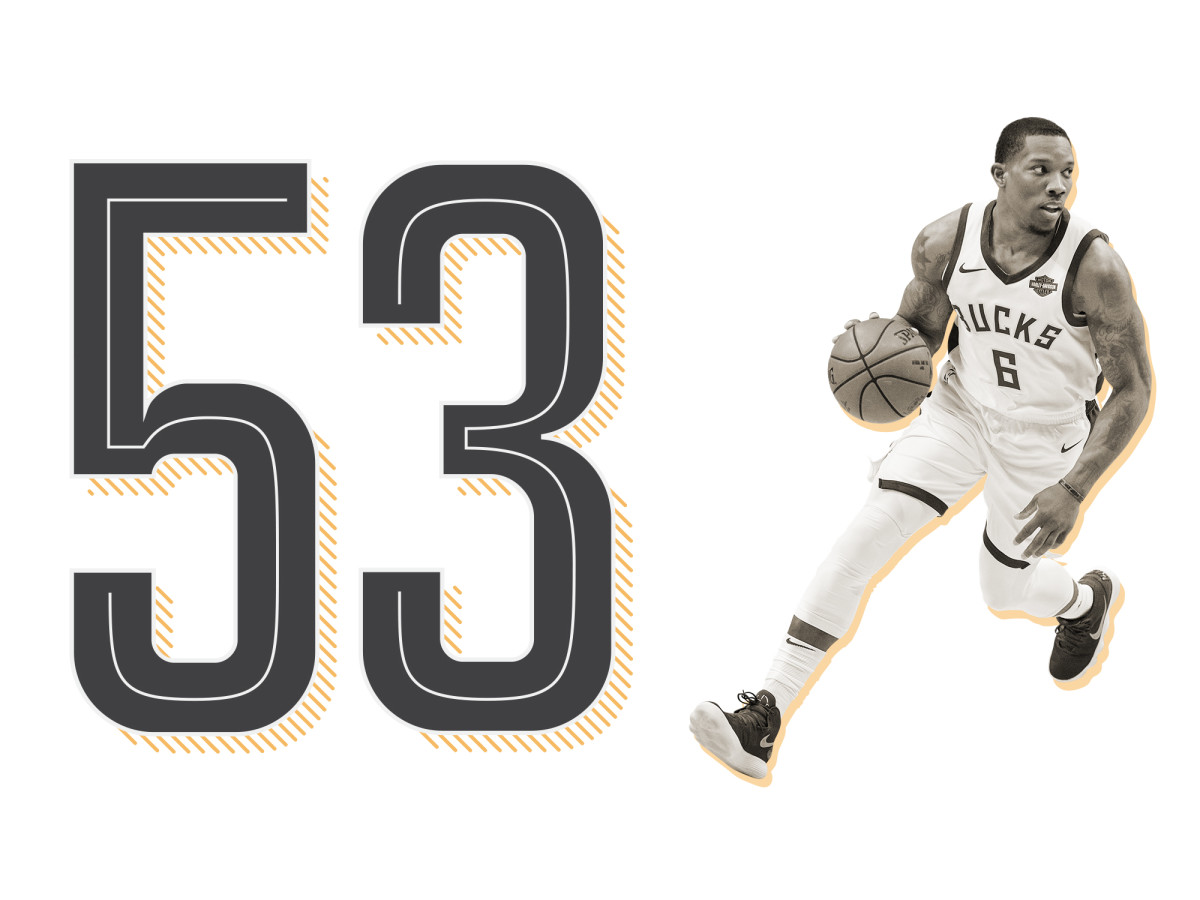
Eric Bledsoe
Milwaukee Bucks
In the beginning, Bledsoe (17.7 PPG, 3.8 RPG, 5.0 APG) requested a trade from the Suns on Twitter—“I don’t wanna be here”—and then tried to deny it by pretending he was merely bored at a hair salon. In the end, he was outplayed and outtalked in the playoffs by Celtics guard Terry Rozier, who confused Bledsoe with a long-forgotten NFL quarterback who shared his surname. In between those memorable memes, the powerful, scoring-minded point guard managed to squeeze in a nice season, providing stability and talent to a Milwaukee backcourt that desperately needed both.
Following a November trade to Milwaukee, Bledsoe quickly found his fit alongside Giannis Antetokounmpo and Khris Middleton, boosting his new team’s offensive rating by nearly eight points when he took the court. While his defensive impact was muted given his propensity for risk-taking and brain farts, Bledsoe’s presence kept the Bucks’ season from being derailed by Malcolm Brogdon’s long-term injury. On balance, his Milwaukee experience revealed that his eye-popping stats from his Phoenix days were inflated, but that he was capable of being an above-average starting point guard on a winning team. Even if it’s not yet clear whether he’s a long-term answer in Milwaukee, the 28-year-old Bledsoe proved to be a heck of a midseason acquisition. — BG
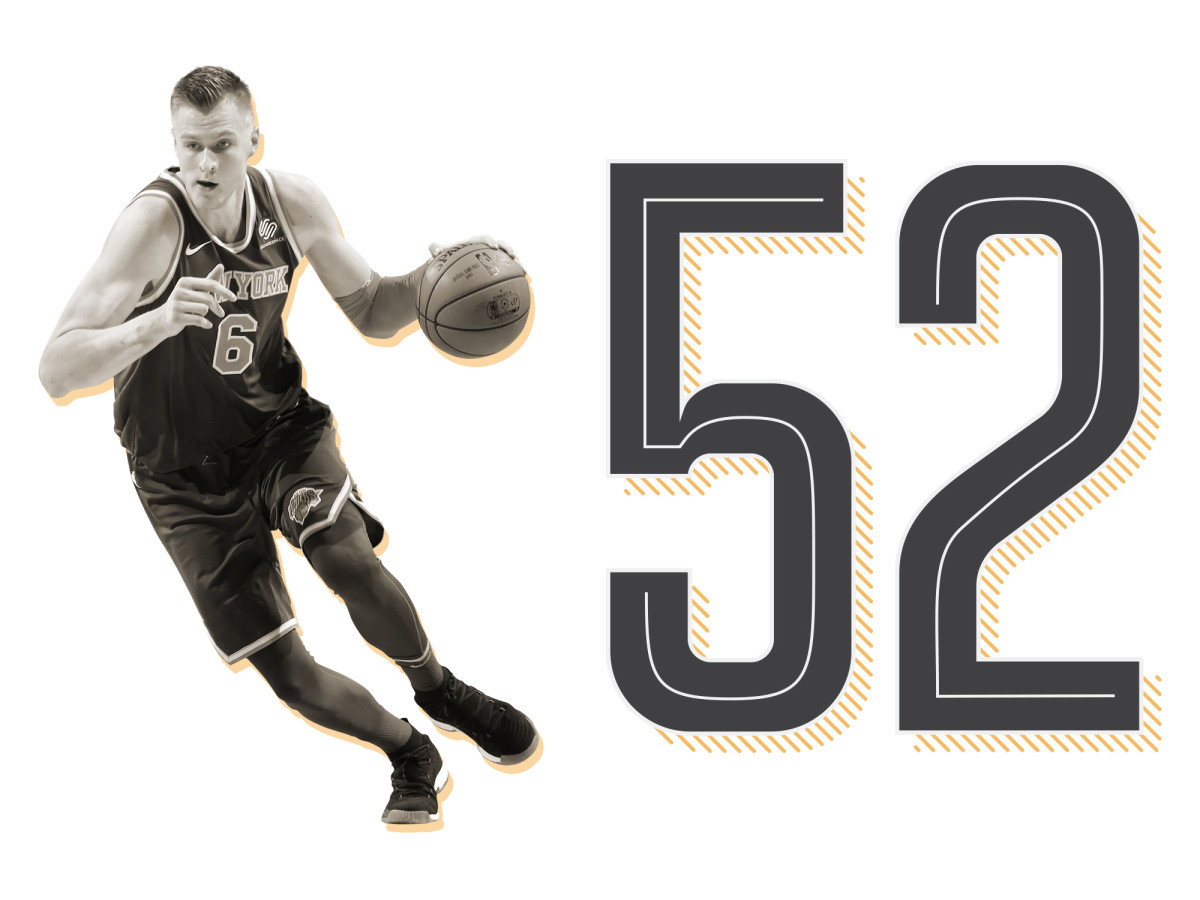
Kristaps Porzingis
New York Knicks
If healthy, Porzingis (22.7 PPG, 6.6 RPG) would have had a strong case as a top–20 player. By record and point differential, the 2017-18 Knicks were a playoff bubble team with the Latvian big man on the court. After he suffered a season-ending ACL tear in early February, though, New York was pitiful, ranking No. 28 in winning percentage and No. 26 in net rating. Porzingis was on track to solidifying his reputation as a franchise player, and his unfortunate injury was the difference for the Knicks between being competitive and noncompetitive, relevant and irrelevant, watchable and unwatchable.
The 23-year-old “Unicorn” lived up to his moniker last season, delivering a positive impact on both sides. He ranked No. 16 in scoring and No. 2 in blocks, shot nearly 40% as a high volume three-point shooter, and allowed just 48.7 FG% on shots attempted within six feet, a basket-protection rate that bested Rudy Gobert, Joel Embiid and Anthony Davis. Unfortunately, the greatest ability is availability, and it’s not yet clear when Porzingis will return to the court or if he will return to his peak level of play during the 2018-19 season. — BG
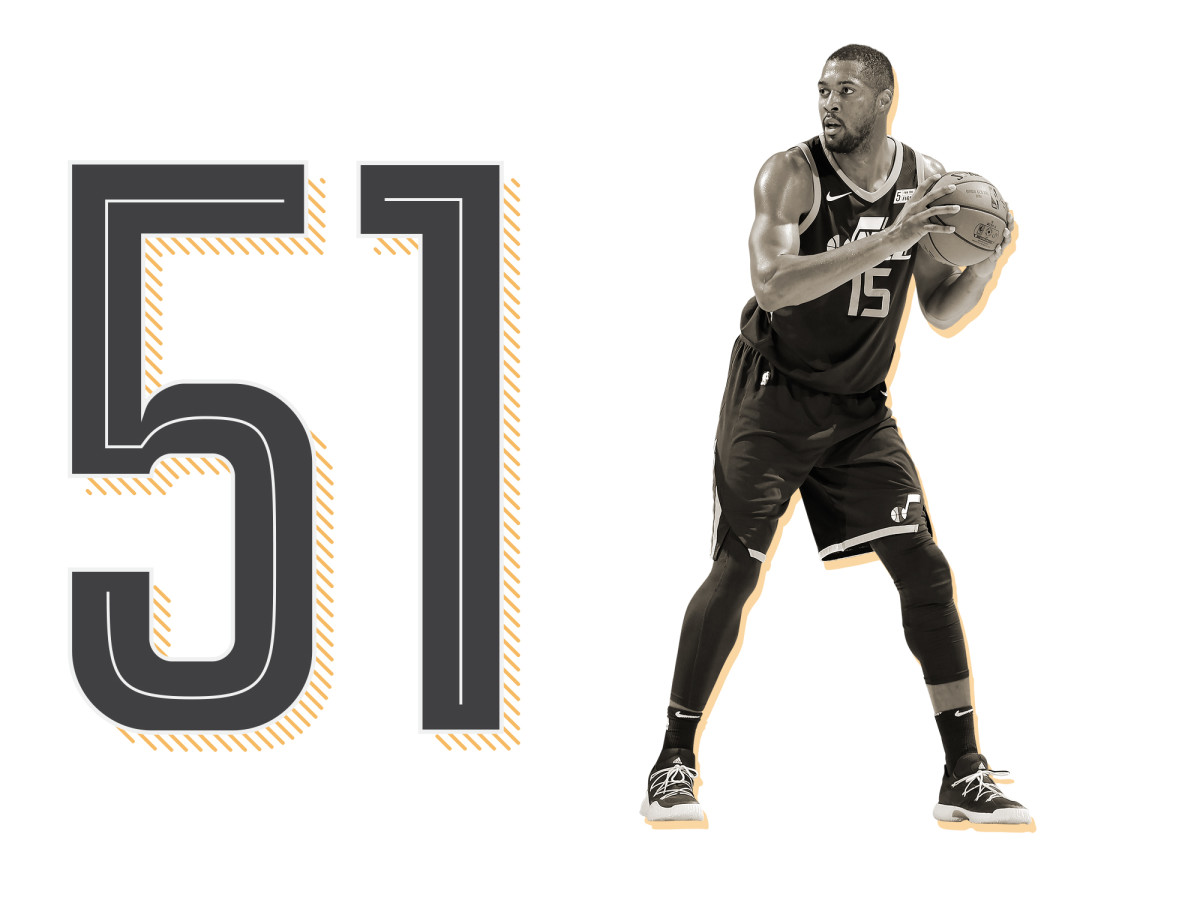
Derrick Favors
Utah Jazz
Rudy Gobert casts a long shadow, the kind that obscures just how good his frontcourt partner can be. If transported to another team, Favors (12.3 PPG, 7.3 RPG) could anchor a defense all his own with even greater optionality. Gobert is the sort of defender whose strengths are so specific and so pronounced that they all but commit a team to defending a particular way. Any schematic discussion regarding Favors is more open-ended; his team could drop against the pick-and-roll, pressure the ball, switch outright, or even rotate between those options as some highly effective defenses do. No matter the approach, Favors is the kind of big you can trust to execute it.
Or, if you’re the Jazz, you can roll out Favors and Gobert in tandem to stomp opponents down by 7.3 points per 100 possessions in the regular season and 10.9 points in the playoffs. Consider those data points with the necessary disclaimers (namely, that the Jazz limit the exposure of those big lineups in matchups they’re poorly suited for), but the reality of playing Favors at the four is less dated than one might think. For opponents other than the Rockets or Warriors, Favors can be punishing. Smaller forwards just don’t have much recourse when Favors rolls to the rim, but playing a more traditional big to counter Favors then plays right into the hands of the Jazz defense. Players don’t need to be dominant to help turn a specific matchup. They need only to have the right combination of skills at the right time, as Favors often does. — RM
50-31
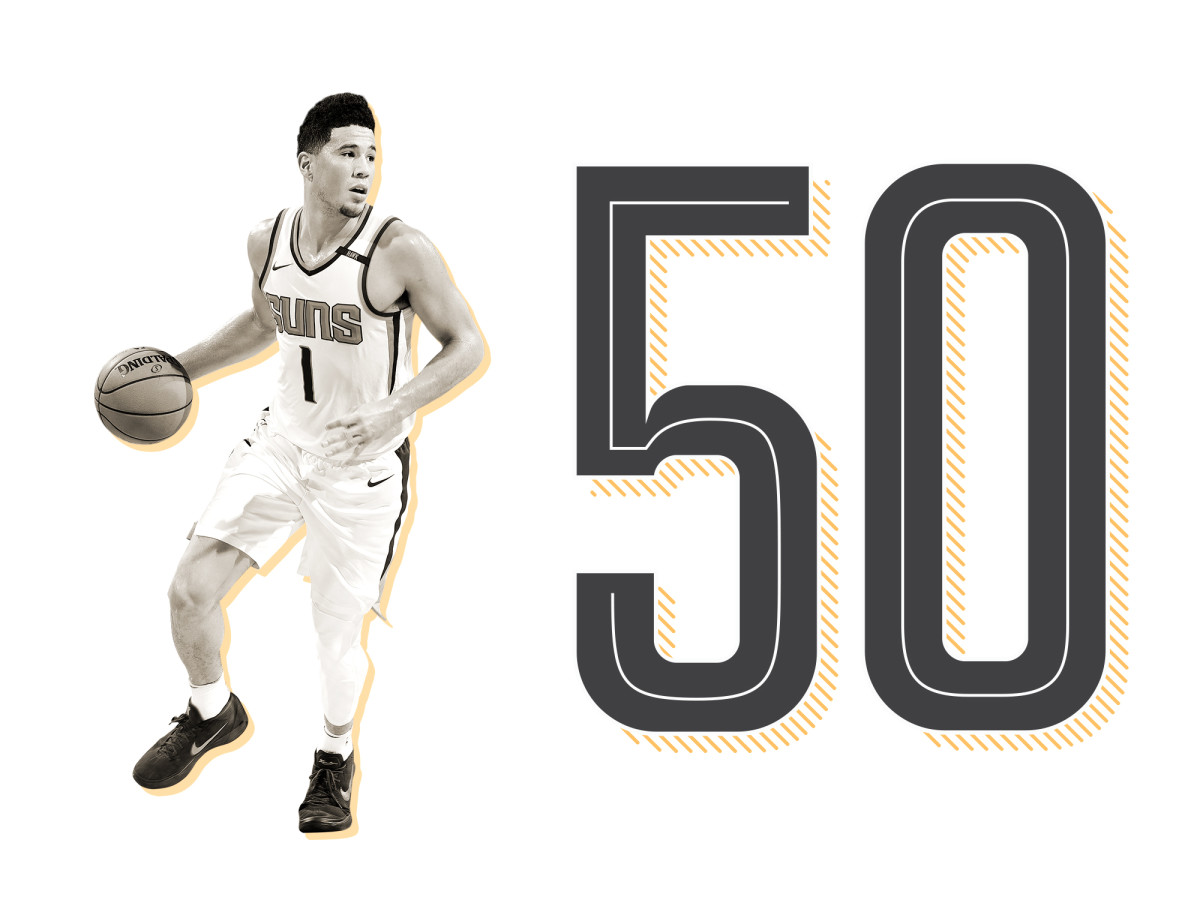
Devin Booker
Phoenix Suns
The Suns have thrown every conceivable monkey wrench at Booker (24.9 PPG, 4.5 RPG, 4.7 APG) during his three seasons: changing coaches, trading away veterans, tanking for months, and whiffing on high draft picks. The 21-year-old shooting guard has responded in admirable fashion, improving his overall efficiency and becoming one of the highest-scoring young prospects in recent memory. Indeed, only four active players averaged more points than Booker during their age-21 seasons: LeBron James, Kevin Durant, Carmelo Anthony and Karl-Anthony Towns. By forking over a five-year, $158 million extension this summer, Phoenix is betting that Booker can follow in that group’s All-Star footsteps and lift his team’s 30th-ranked offense to far greater potency.
The Kentucky product still needs to prove he’s worthy of his Drake namecheck on “Sicko Mode,” largely because he plays with pick-up game intensity on the defensive end. Phoenix has had a worse defensive rating with Booker on the court than with him off the court in each of his three seasons, and he ranked outside the NBA’s top 200 players by Real Plus-Minus in 2017-18. If he played one-on-one against himself, the game would continue for hours because he would never get a stop. If he played for a better team, he would be hunted mercilessly in the playoffs. With Deandre Ayton and Trevor Ariza arriving to help stabilize and legitimize the Suns, it’s time for Booker to fully commit to leading a downtrodden franchise back to respectability. While Booker reportedly underwent hand surgery this week, the injury did not impact his Top 100 ranking because he's not expected to miss a significant portion of the regular season. — BG
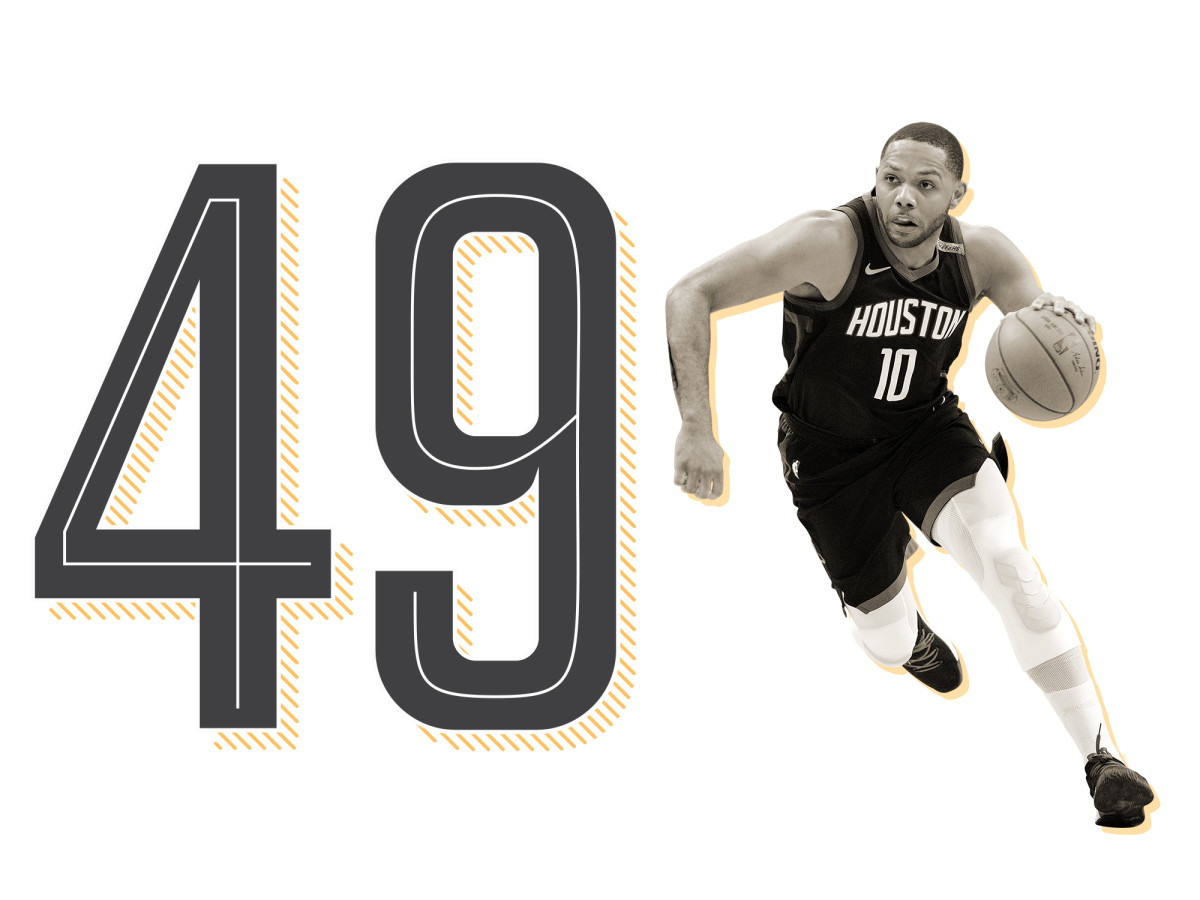
Eric Gordon
Houston Rockets
Houston has stretched every bit of Gordon’s (18.0 PPG, 2.5 RPG, 2.2 APG) game to its logical extreme. Gordon is remarkably strong for a guard, which means that the Rockets trust him to hold his own defensively against far bigger players. Opponents respect Gordon’s perimeter shooting, so Houston stations him far beyond the three-point arc to clear room for its pick-and-rolls—perhaps at the expense of Gordon’s three-point percentage. What used to be a more balanced shot profile has since polarized; in a fashion suiting Houston’s guiding principles, Gordon now takes well over 60% of his shots from beyond the arc. What mid-range shots he takes are largely provisional—products of when Gordon is asked to create some offense for himself. — RM
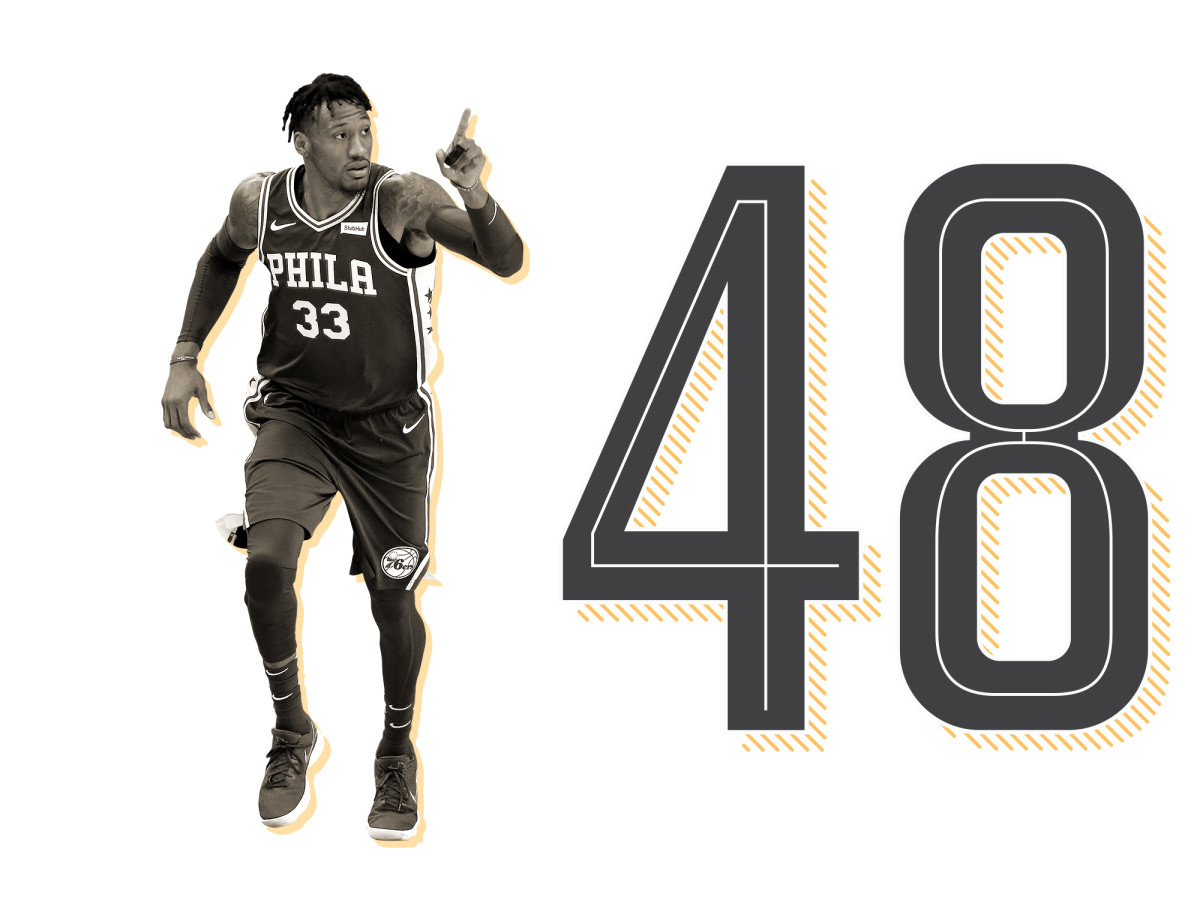
Robert Covington
Philadelphia 76ers
Covington (12.6 PPG, 5.4 RPG, 1.7 SPG) warps around the court like a podcast played at double speed, he relishes contact like a middle linebacker, and he shadows scorers feint-for-feint like a professional dancer. With a full season of good health and team success to his name, the 27-year-old Sixers forward has solidified himself as the NBA’s premier 3-and-D wing. His 2018 All-Defensive First Team selection was a no-brainer, as he ranked first in deflections, third in Defensive Real-Plus Minus, fifth in Defensive Win Shares and sixth in steals for the NBA’s third-best defense.
Although he is considerably older than star teammates Joel Embiid and Ben Simmons, Covington stumbled badly during their first trip to the playoffs. A notoriously streaky shooter who managed to hit 36.9% of his threes during the regular season, he was yanked from the starting lineup in the second round against the Celtics when his jumper and confidence deserted him. Despite a rough May and the narrow nature of his offensive portfolio, Covington is perfectly suited for trendy interchangeable and switchable lineups. He’s satisfied filling a supplementary scoring role, and his combination of strength, length and quickness allows him to credibly defend four, if not all five, positions in smallball looks. Here’s betting that his future postseason work is considerably stronger than his 2018 showing. — BG
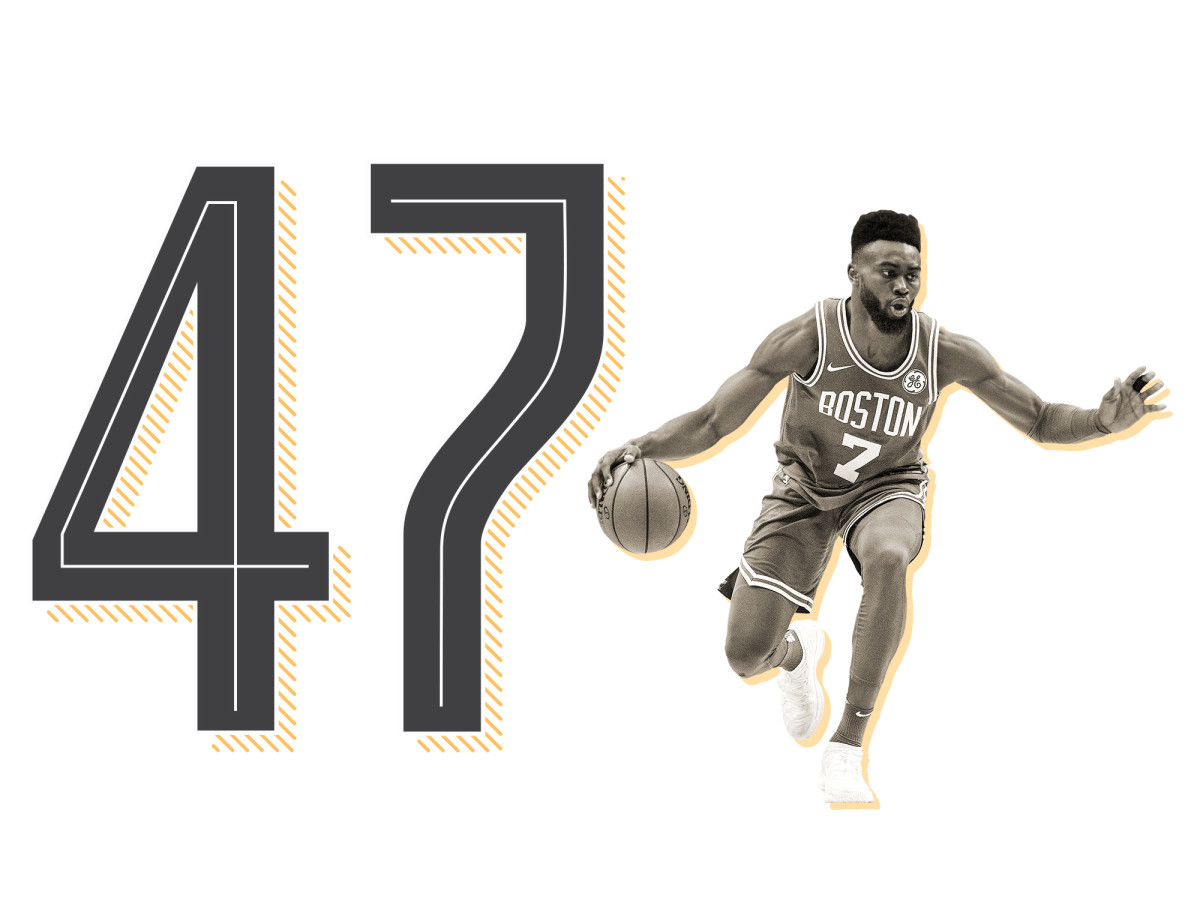
Jaylen Brown
Boston Celtics
Something about Brown (14.5 PPG, 4.9 RPG) is undeniable. Maybe it’s the way he takes borderline transition opportunities—the kind that other players might slow down and reset—and jams them down the opponent’s throat. It could be wholeheartedness in his soaring contests, each making the dutiful spectacular. More likely, it’s just the fact that Brown plays so hard on both sides of the ball that he’s never far away from some thrilling turn. What looks to be a standard, slow-developing possession can pop with a single cut or deflection. Even within Boston’s particular methodology, Brown knows only how to play in vivid color.
It’s no surprise that he’s caught the eye of so many teams around the league, all of which would be thrilled to have a stake in Brown’s future. It took Brown all of two seasons to stabilize as a three-point shooter and calm some of the jumpier aspects of his defense. What might he be capable of in Year Three? Playing out the developmental scenarios is part of the fun, particularly when considering the counterfactuals of the past year.
In a world where Gordon Hayward and Kyrie Irving don’t go down with season-ending injuries, Brown might be seen as more of an energy player than a potential star. Instead, he was force-fed royal jelly while essentially doubling his minutes. So many of the questions that come with young, high-motor players have already been asked and answered. We’ve seen that Brown can sustain his play in starters’ minutes. We know that he can withstand the scrutiny of playoff scouting. What’s beyond us is the future of a fascinating young player whose ceiling is at the mercy of any number of sliding doors. — RM
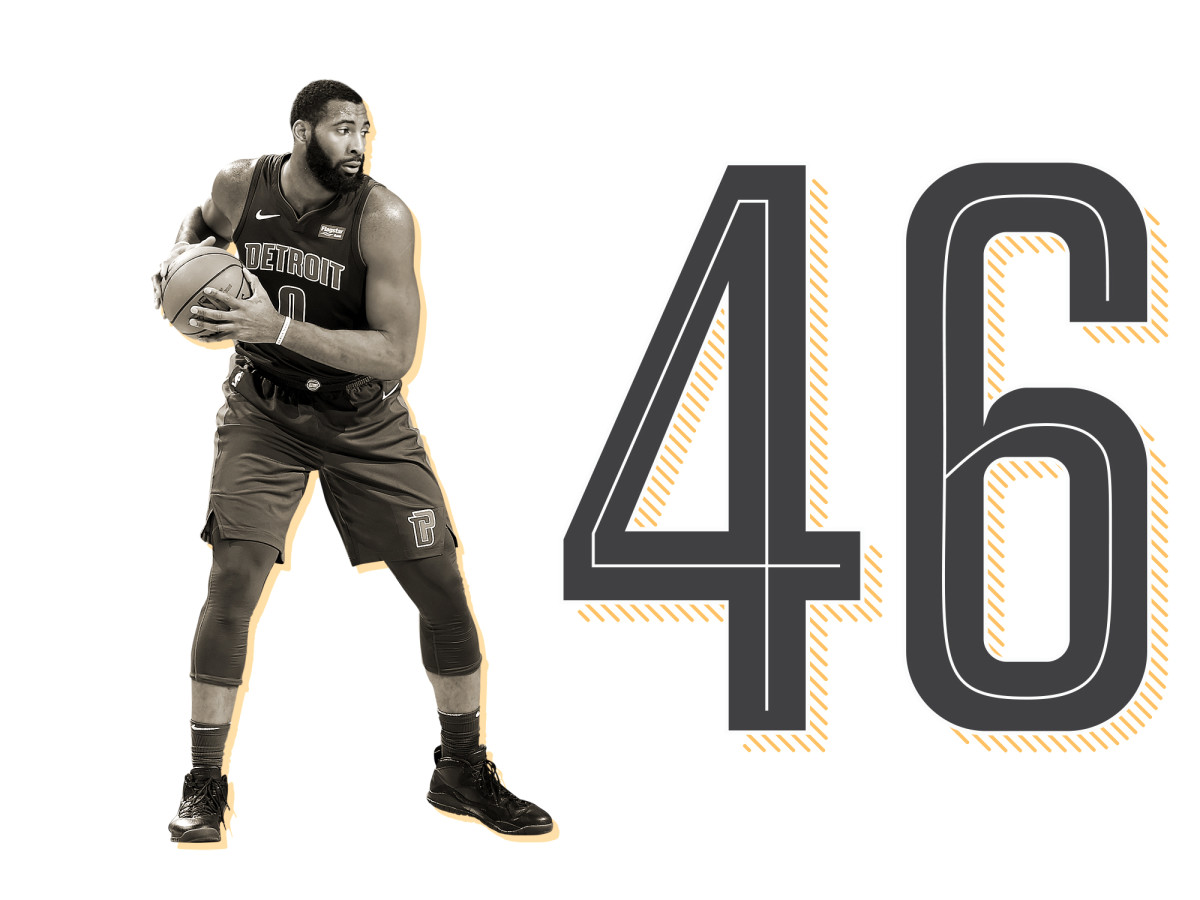
Andre Drummond
Detroit Pistons
Give Drummond (15 PPG, 16 RPG, 1.6 BPG) credit for seeking methods to evolve his game rather than settling for the dunk-and-rebound stereotype. Last season, the two-time All-Star center reclaimed his status as the NBA’s leading rebounder while also emerging as a capable distributor from the high post and a much-improved foul shooter. Then, in August, he vowed to add the three-point shot to his offensive repertoire after attempting just 30 total threes in his first six seasons.
Unfortunately, Drummond’s explorative forays haven’t always produced clear progress in terms of his individual value or his team’s success. While his assist rate improved dramatically in 2017-18, so did his turnover rate. And while all sorts of centers are plotting how they can transform into stretch-fives, Drummond hasn’t exactly demonstrated much touch: He shot an abysmal 31.4% on shots from 3-10 feet and 28.6 from the mid-range last year. Frankly, the Pistons’ offense would be better off if he was never allowed to shoot from outside three feet.
On the other end, the Drummond/Blake Griffin tandem fared well in a small sample size, providing some much-needed optimism for the wheel-spinning Pistons. Drummond, 25, might never fulfill his wildest dreams, but his size, durability, rebounding instincts and gradual refinements set him apart from replacement-level starting centers. — BG
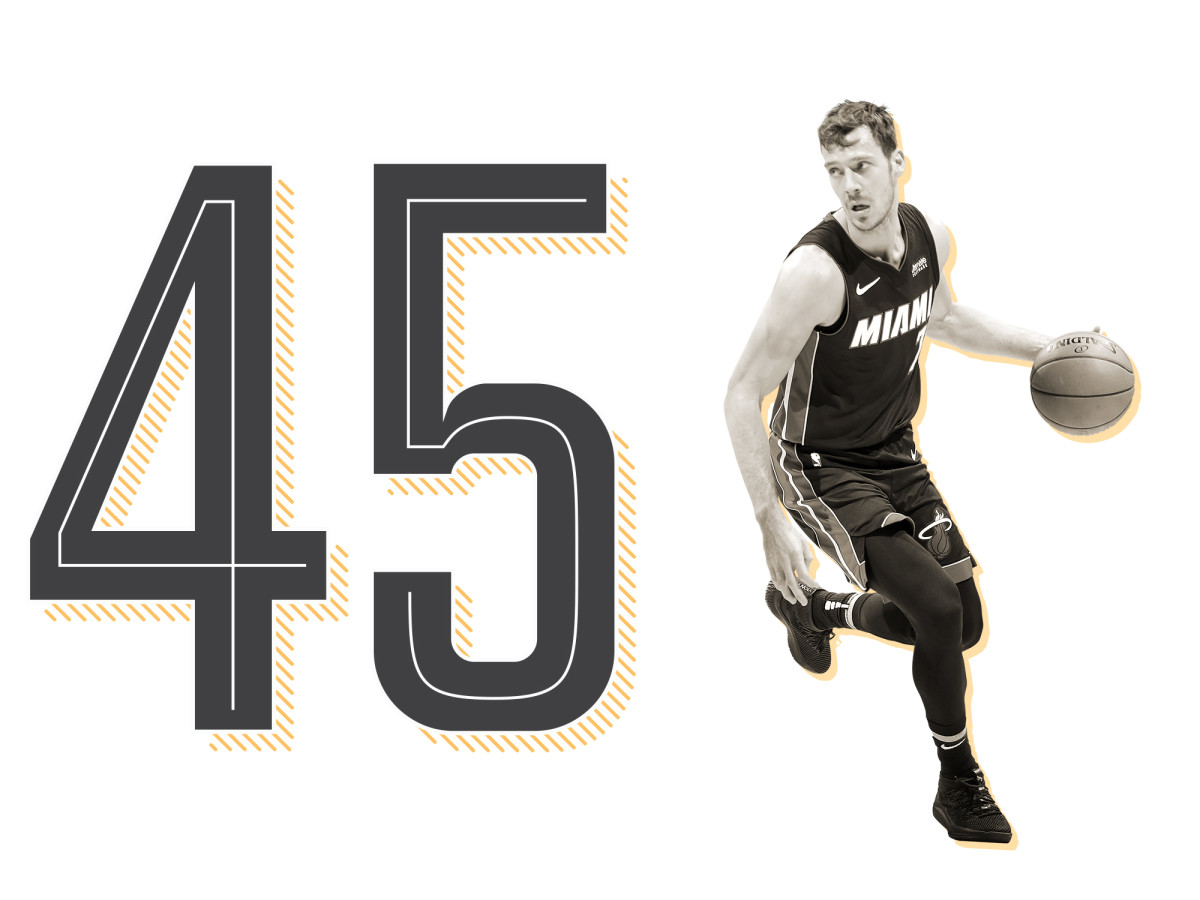
Goran Dragić
Miami Heat
Dragić (17.3 PPG, 4.1 RPG, 4.8 APG) plays a dramatic game, forever teetering on the edge of disaster. His signature is to go a step too far; no guard seems to find themselves double- and triple-teamed in the lane quite so often, and none, surely, has been so successful at improbably digging his way out. Some of Dragić’s layups require incredible contortions. His exit strategy often involves hovering in the air until he can sling some wild, wraparound pass. The result is often so impressive—and so improbable—that you forget that the peril was of Dragić’s own making.
Yet for all his theatrics, Dragić settles in as merely quite good. It’s not as if his dramatic flair has proven self-destructive; on the contrary, Dragić only turns the ball over at a modest rate relative to other point guards. Miami seems comfortable running its offense through Dragić rather than for him. There are always larger plans at work, and not much of a compelling reason to assign Dragić some outsized role. Two important aspects of Dragić’s game, however, are never up for debate. The first is his fight, which is exceptional even in a competitive league. Dragić is a feisty sort who will never hesitate to drive into traffic, even after his face has swollen to cartoonish extremes. The other is his all-around competence—faint praise, perhaps, but the kind that makes the NBA go. — RM
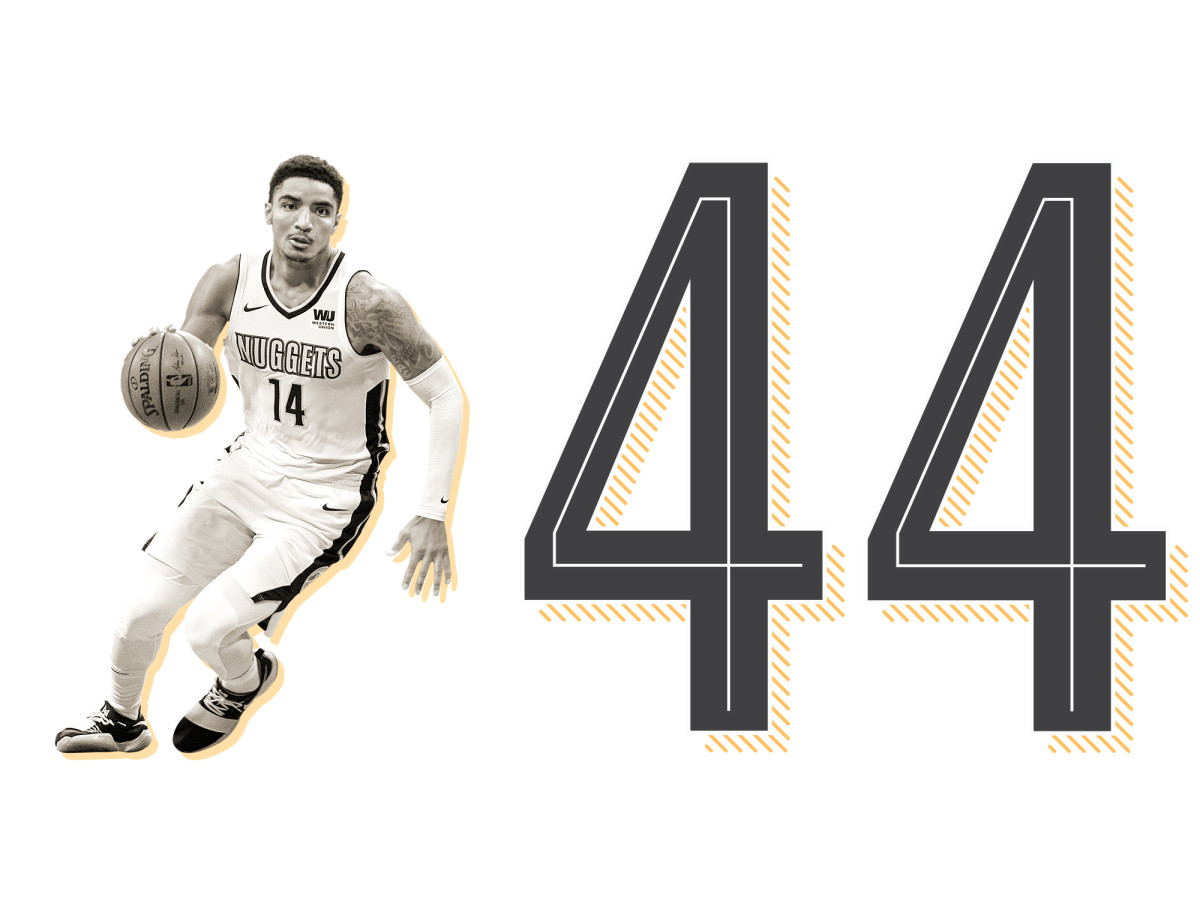
Gary Harris
Denver Nuggets
In the past year, Harris (17.5 PPG, 2.6 RPG, 2.9 APG) proved that he can not only produce within an offense but give it structure. Dribble hand-offs between Harris and Nikola Jokic were as fundamental to Denver’s flow as any other mechanism. Jokic makes Harris look good, but the opposite is also true; a beautiful backdoor feed is only as effective as the cutter who inspires it.
Part of what makes Harris so elusive is that you can never be sure where he’s going. Kyle Korver knows how to move without the ball but only has designs to move away from the basket. Andre Roberson is similarly unidirectional, albeit on the opposite track; the only time a defense even pays attention to Roberson’s movement is when he’s headed toward the rim. Harris is a dual threat and more. He could cut off a screen or reject it, move toward the ball or away from it, fake hard in any one direction before reversing course for the other, and take any angle he likes after finally receiving the ball. This is the predicament involved when a player shoots 72% within three feet of the rim and 40% beyond the arc. There is no safe assumption a defender can make —only the tireless work of chasing Harris everywhere he goes. — RM
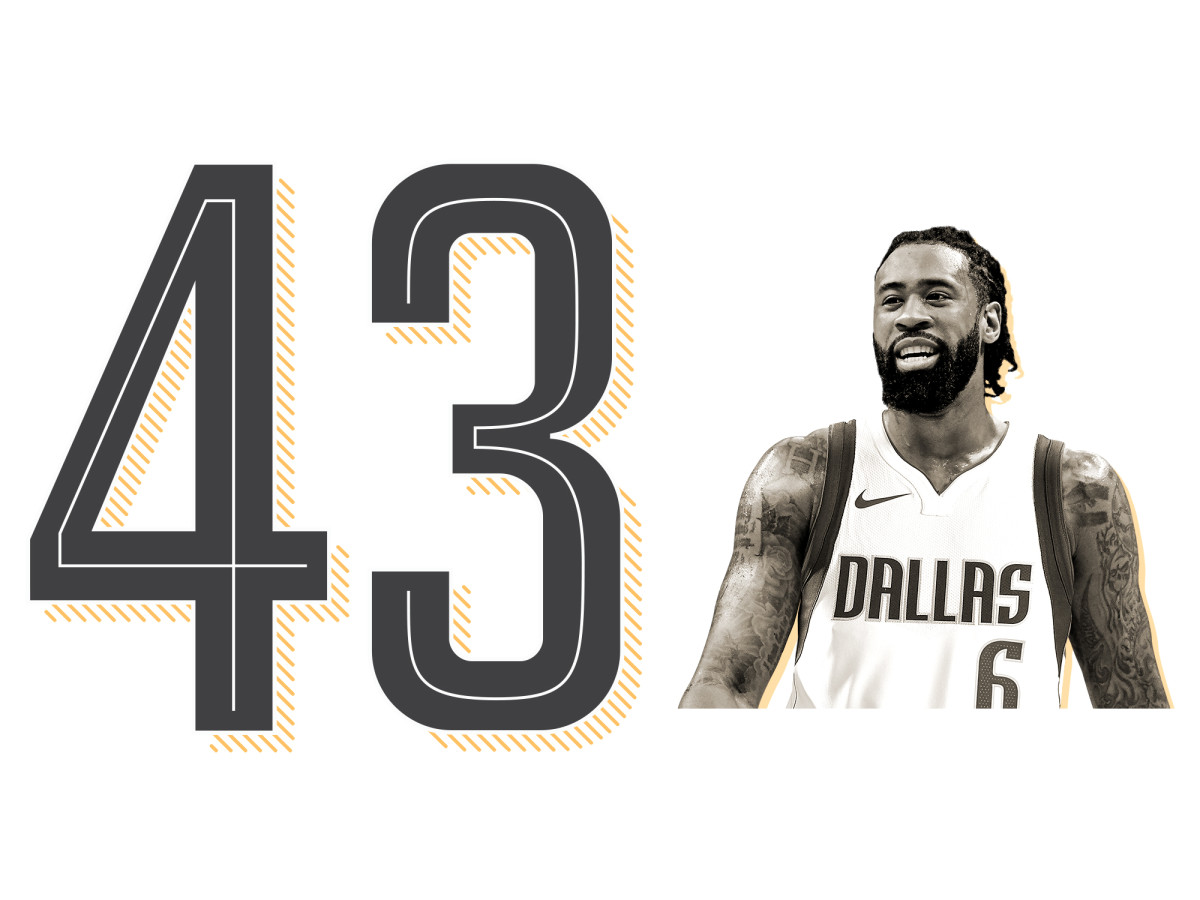
DeAndre Jordan
Dallas Mavericks
The departures of Chris Paul and Blake Griffin granted a perfect opportunity to reassess Jordan (12 PPG, 15.2 RPG), a three-time All-NBA selection who served as a third wheel throughout his prime years. The results were mixed: the 30-year-old center remains an elite rebounder and high-efficiency finisher, but his overall defensive impact and rim-protection numbers slipped noticeably.
Any faint hope that he might be able to expand his offensive game proved unfounded. After spending a full decade with the Clippers, Jordan drew limited interest and eventually agreed to a one-year, $22.9 million contract with the Mavericks.
While Jordan remains an above-average center with standout leaping ability and a deep commitment to hitting the boards, he’s lost some of the pop that made him so devastating. Last season, Jordan’s block rate fell by more than half from his 2016 All-NBA First Team campaign. What’s more, he defended just 346 shots from within six feet (down more than a quarter from two years ago) and allowed 60.4% shooting on those shots (up 8.5% from two years ago). Not surprisingly, the Clippers dropped to 19th in defensive rating from their top-five standing two years ago. When the Mavericks courted Jordan in the fateful summer of 2015, they pitched him on life as a franchise center. At this point, that’s no longer realistic. — BG
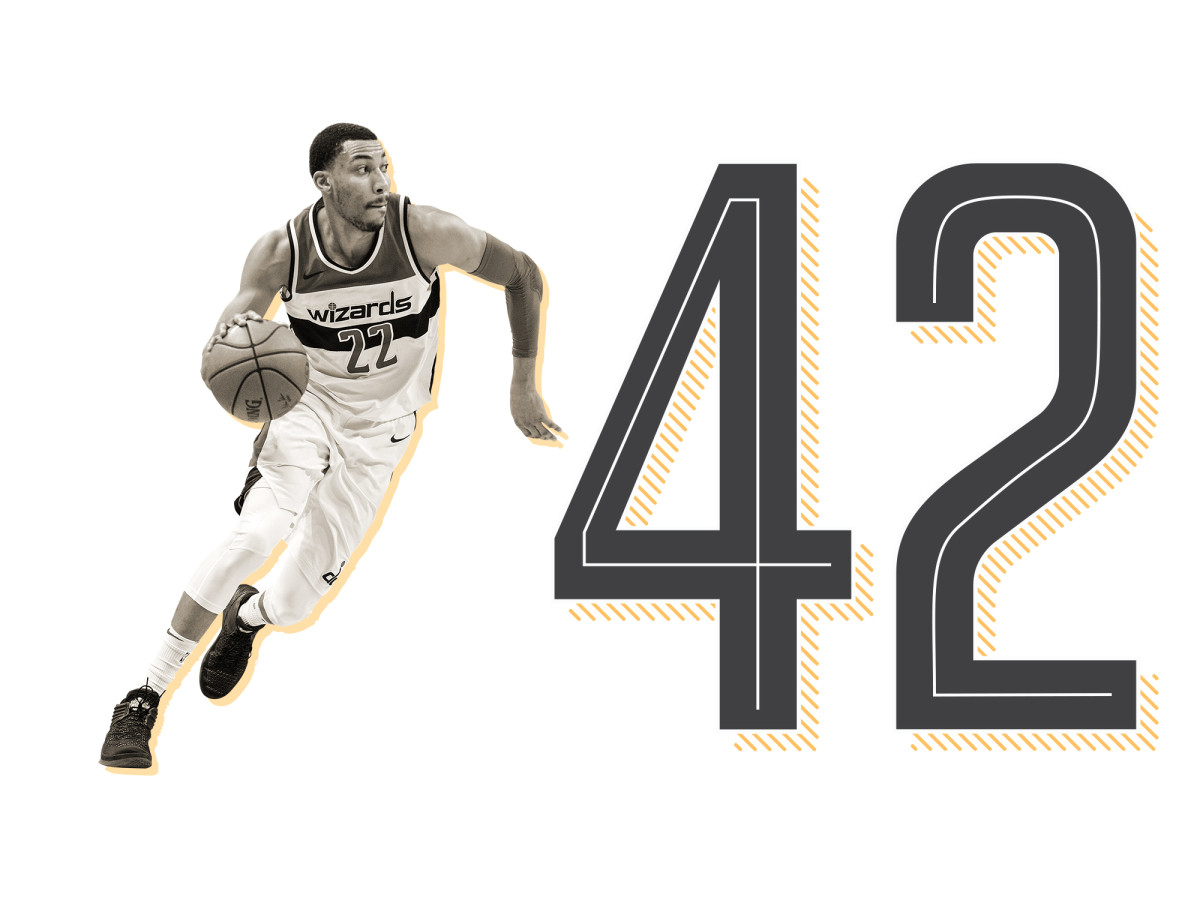
Otto Porter
Washington Wizards
Porter (14.7 PPG, 6.4 RPG, 2.0 APG) isn’t one to amaze—only to steady his team with quiet capability. The vast majority of his shots are created for him, though Porter adds value the moment the ball touches his hands. If open on the perimeter, Porter (who finished third in three-point percentage last season) is a lights-out shooter with a high release point. Should the defense give his shot the respect it deserves, Porter can drive in response without veering out of control. Restraint is the through line of his game. One can always trust in Porter to play within himself, gifting his coaches and teammates a certain peace of mind. Porter is the player you never have to worry about.
These are virtues best appreciated in contrast. If a team were composed entirely of players with Porter’s disposition, the offense might seesaw into eternity one non-committal pick-and-roll at a time. Yet in any more typical ecosystem, Porter would be welcome for his range, his patience, and his defense. Two-way, low-maintenance players are championship mortar. What Porter needs are the right bricks.
If an opponent really wanted to scheme away Porter’s offense, they could. There’s nothing particularly intricate going on in how he gets his points. But attaching a defender to deny Porter shots will still serve his intended purpose, making life that much easier on the creators around him. Reducing the game to 4-on-4 will favor any competent offense. Porter, meanwhile, can still assume critical defensive responsibilities and facilitate his team’s best lineups by flexing between positions. Nothing is wasted with Porter, even when he assumes a background role. — RM
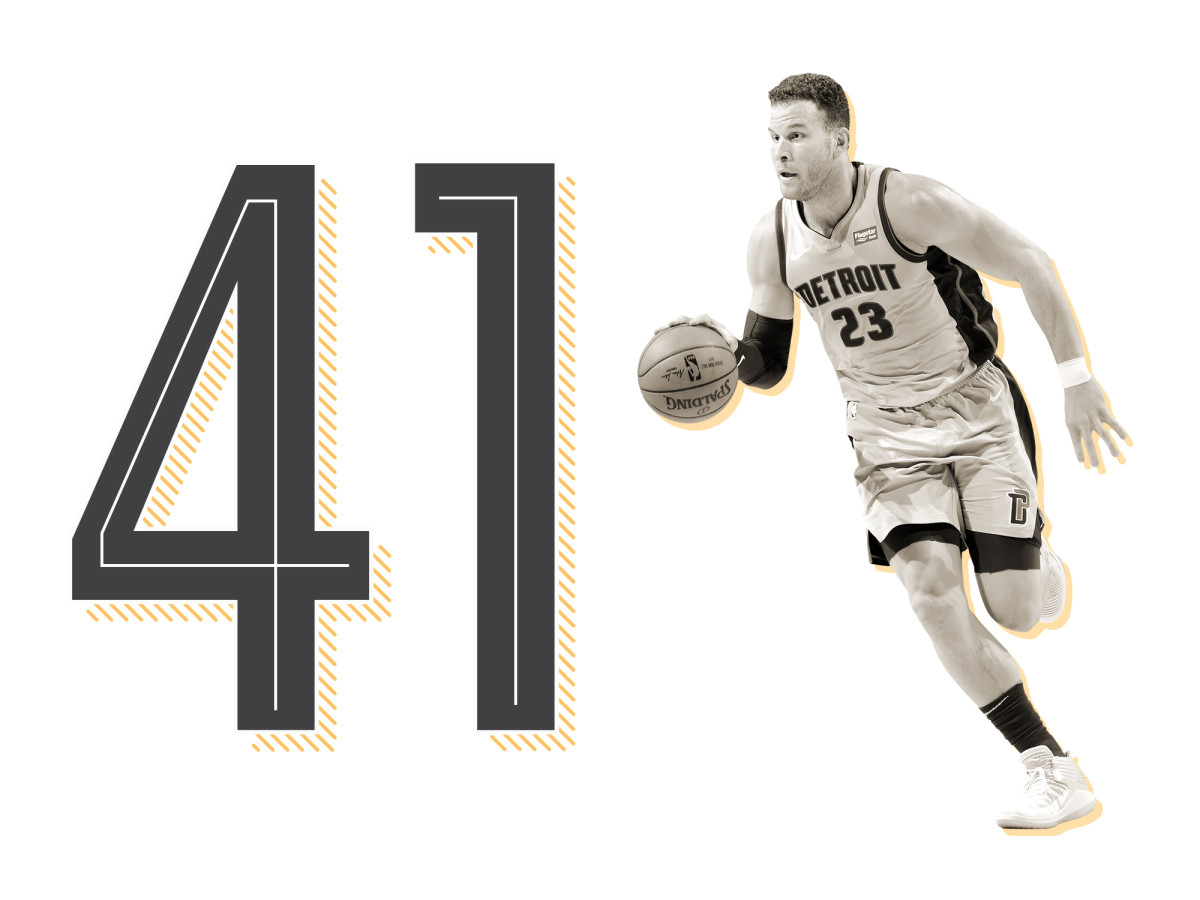
Blake Griffin
Detroit Pistons
Last season, Griffin (21.4 PPG, 7.4 RPG, 5.8 APG) posted a points/rebounds/assists line that was matched only by a pair of MVPs: LeBron James and Russell Westbrook. But that superstar-like productivity came draped with red flags: Griffin missed at least 15 games for the fourth straight season, his teams were 28-30 with him on the court, he ranked outside the top-50 in Real Plus-Minus, and his PER and True Shooting % reached career-lows. Unfortunately, a midseason trade to Detroit failed to reverse these trends. That blockbuster deal was harsh and illuminating, as it marked the first time that the Clippers had treated Griffin—whose dynamic athleticism has flatlined due to a series of injuries—as a $173 million contract rather than as a franchise player.
As Griffin has sought to modernize his game and protect his body by playmaking from the perimeter and shooting more threes, he’s triggered an identity crisis. After the trade to the Pistons, he took just 21% of his shots from within three feet, well off the 44% from his peak posterization days. Similarly, he attempted just 4.4 free throws per game after the trade, sharply down from 8.4 per game back when he was an MVP candidate. The overwhelming night-to-night physicality that once made Griffin so special appears gone for good at age 29, leaving him as a good-but-not-great scoring threat and an adequate defender. — BG
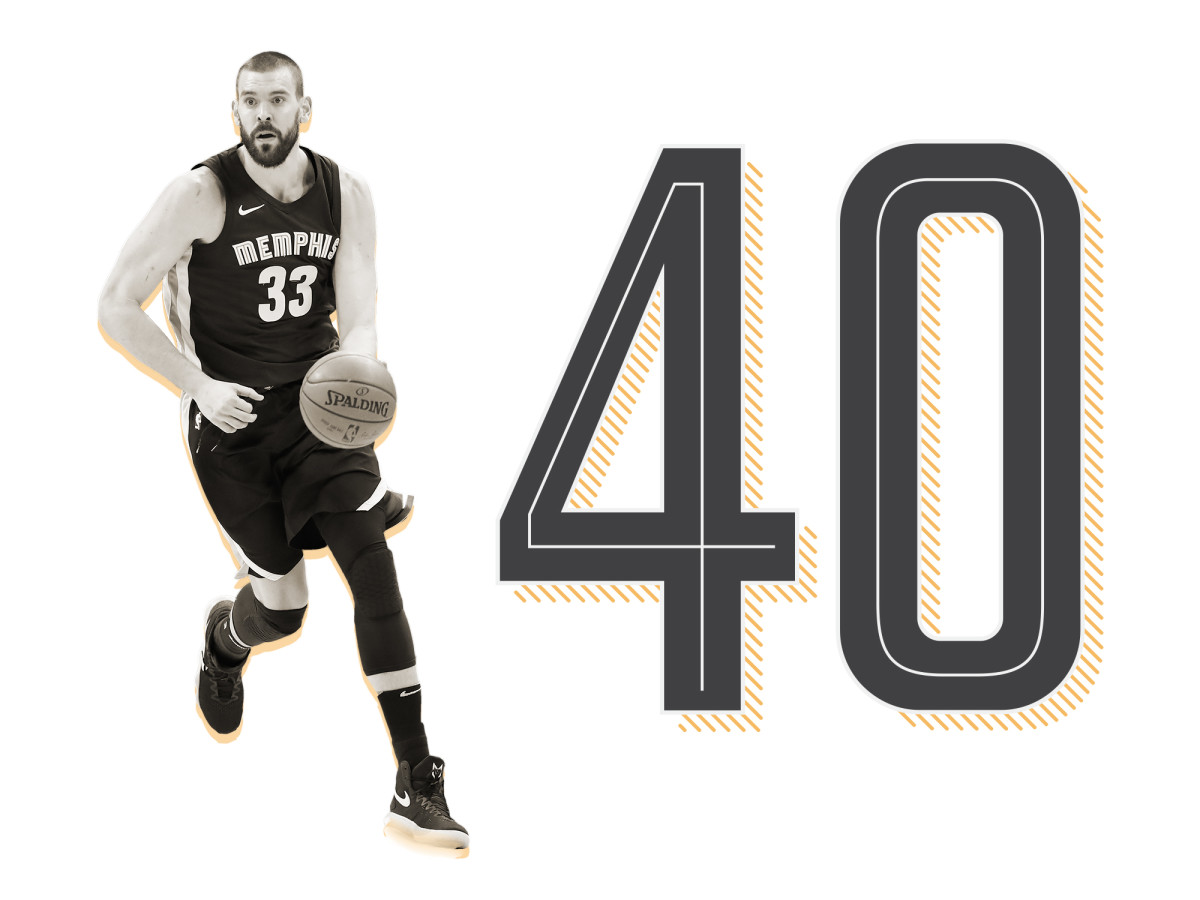
Marc Gasol
Memphis Grizzlies
Yes, 2017-18 was a junk season for the Grizzlies, and for Gasol, accordingly. Don’t read too much into his downward statistical trend (17.2 PPG, 8.1 RPG, 4.2 APG); once it became clear that Memphis had no shot to compete without Mike Conley, Gasol freewheeled his way through the season without all that much discipline or focus. Give him a real team and he’ll put forth a real effort. Take from that what you will. It might be nice if Gasol were the sort to rally the troops in spite of those circumstances, but there’s only so much playing with Jarell Martin and Ben McLemore a man can take.
Decline, however, is inevitable. Gasol’s defense has already slipped; the player who won Defensive Player of the Year by keeping one step ahead of the action is gone thanks to slowing feet and reaction times. Gasol is a 33-year-old center at an especially difficult time to be a 33-year-old center. Just last season, there were only four true bigs who played more than 2,000 minutes at age 32 or older: Gasol, Dwight Howard, LaMarcus Aldridge, and Marcin Gortat. Every year it will get a little tougher for Gasol to manage a star’s workload in a star’s minutes with a star’s responsibilities.
What keeps him buoyant is his playmaking. A team can run its offense through Gasol by stationing him at the elbow or at the three-point line and running guards around him. Orienting an offense in that way opens up the player pool; when a point guard doesn’t have to shoulder the weight of the offense, all sorts of combo guards and kind-of-guards become more viable. New avenues into the offense present themselves. The only way to survive a long season and an ensuing playoff run is through frequent adaptation. Think of Gasol as a means for problem solving—not only to get the ball where it needs to go, but to keep the best players on the floor and arrange them in the most productive ways. — RM
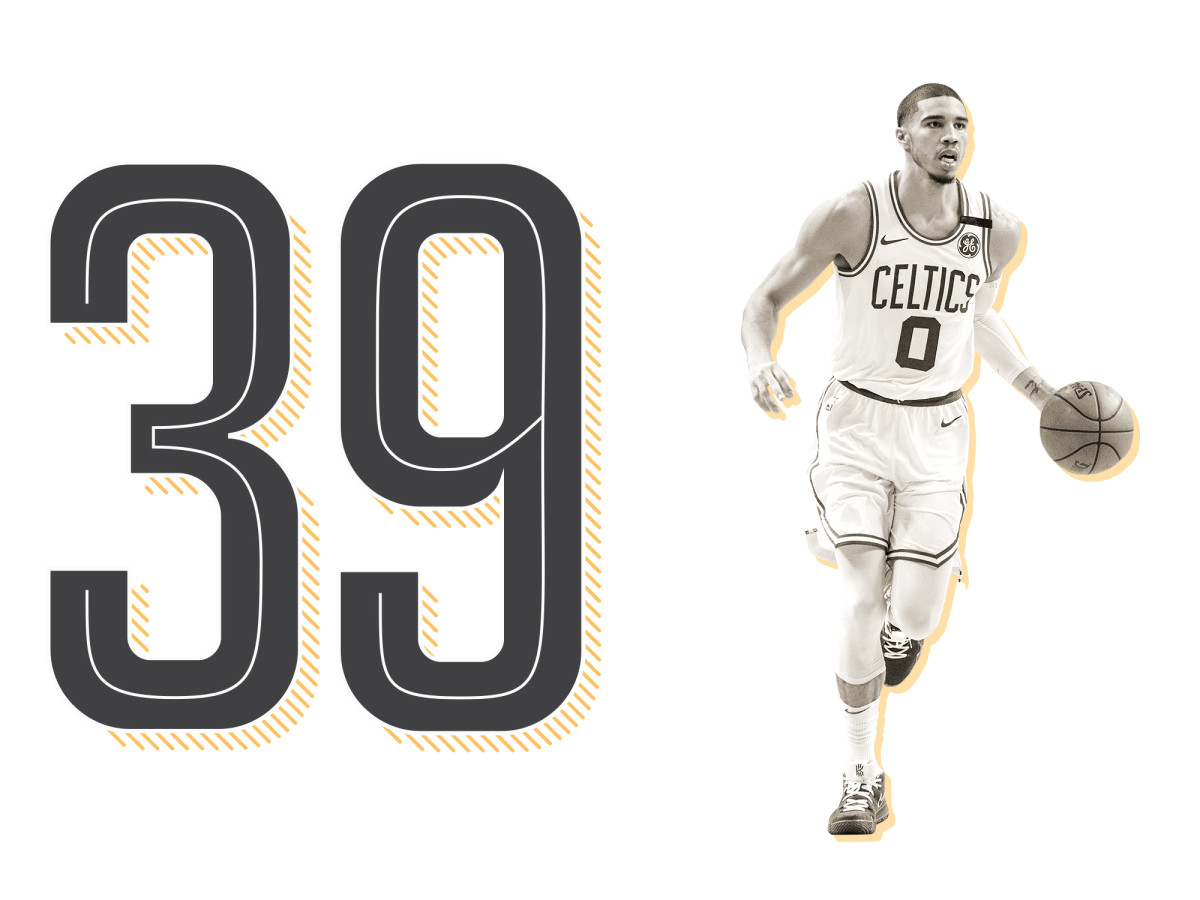
Jayson Tatum
Boston Celtics
The Boston media spent months comparing Tatum (13.9 PPG, 5 RPG) to NBA legends and predicting a decade’s worth of All-Star appearances for the rookie forward, and then a funny thing happened in the playoffs: He somehow exceeded the hype. Tatum scored 20 points in a Game 7 win over Milwaukee. He easily outdueled 2018 Rookie of the Year Ben Simmons, scoring 20+ points in all five second-round games. And, most impressively of all, he played a leading role in pushing Cleveland to Game 7 in the East finals, where he famously dunked on and chest-bumped LeBron James. Suddenly, the entire global basketball community was gushing like Tommy Heinsohn over Tatum’s poise, polish and gumption.
Tatum, 20, possesses all the fundamental elements to become a star wing. He has an effortless shooting stroke, nailing a preposterous 43.4% of his threes as a rookie. He knows a good shot from a bad shot, and he can create quality looks off the dribble and with an array of turnaround moves. He has excellent footwork and pacing. He isn’t reckless or selfish with the ball. He’s quick, long, smart and committed defensively. The biggest question at this point seems to be how quickly Tatum will reach his ceiling in Boston, given that the returns of Kyrie Irving and Gordon Hayward could potentially cut into his touches and shots. Regardless, this much seems clear: Tatum is too skilled to be buried, even on a budding superteam. — BG
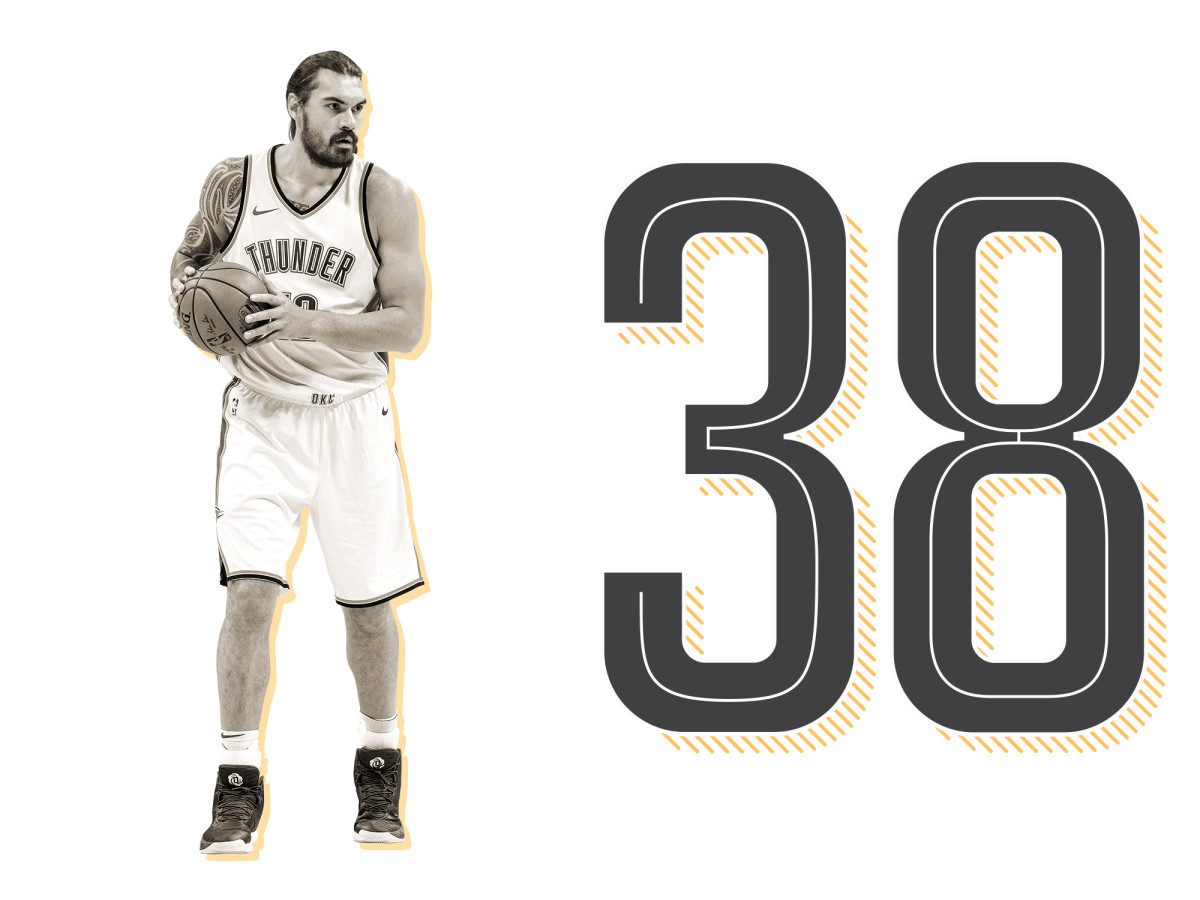
Steven Adams
Oklahoma City Thunder
Adams (13.9 PPG, 9.0 RPG) played the third-most minutes of any center in the league last season because 1) he tends to stay healthy, and 2) he can’t be played off the floor. Any attempt to weed out Adams all but fails before it starts. Small ball is no real deterrent. Adams can hold his own on the perimeter to the point that he isn’t easily exploited. Meanwhile, some poor, undersized center is left to contend with one of the strongest players in the league. If Adams can politely nudge opposing centers out of the way when necessary, what hope does a power forward masquerading as a center really have?
The real payoff for that strength comes on offense, where the Thunder grabbed 31.6% of their own misses with Adams on the floor last season, per NBA.com. This is an offense unto itself. Adams may not be scoring all that much, but his efforts renew possessions and redeem low shooting percentages. Solvency comes easy when a team is allowed to take a mulligan on nearly a third of its misses, and potentially more when no true center is around to box Adams out.
There’s just no working around the fact that Adams is a proper giant. He can wipe out a guard with a screen and bulldoze a big with a roll. Players of that size aren’t supposed to move around the floor so easily, and yet here is Adams, gliding through contact after teaching himself how. You might not consider Adams a standout athlete, but he’s made himself into one. — RM
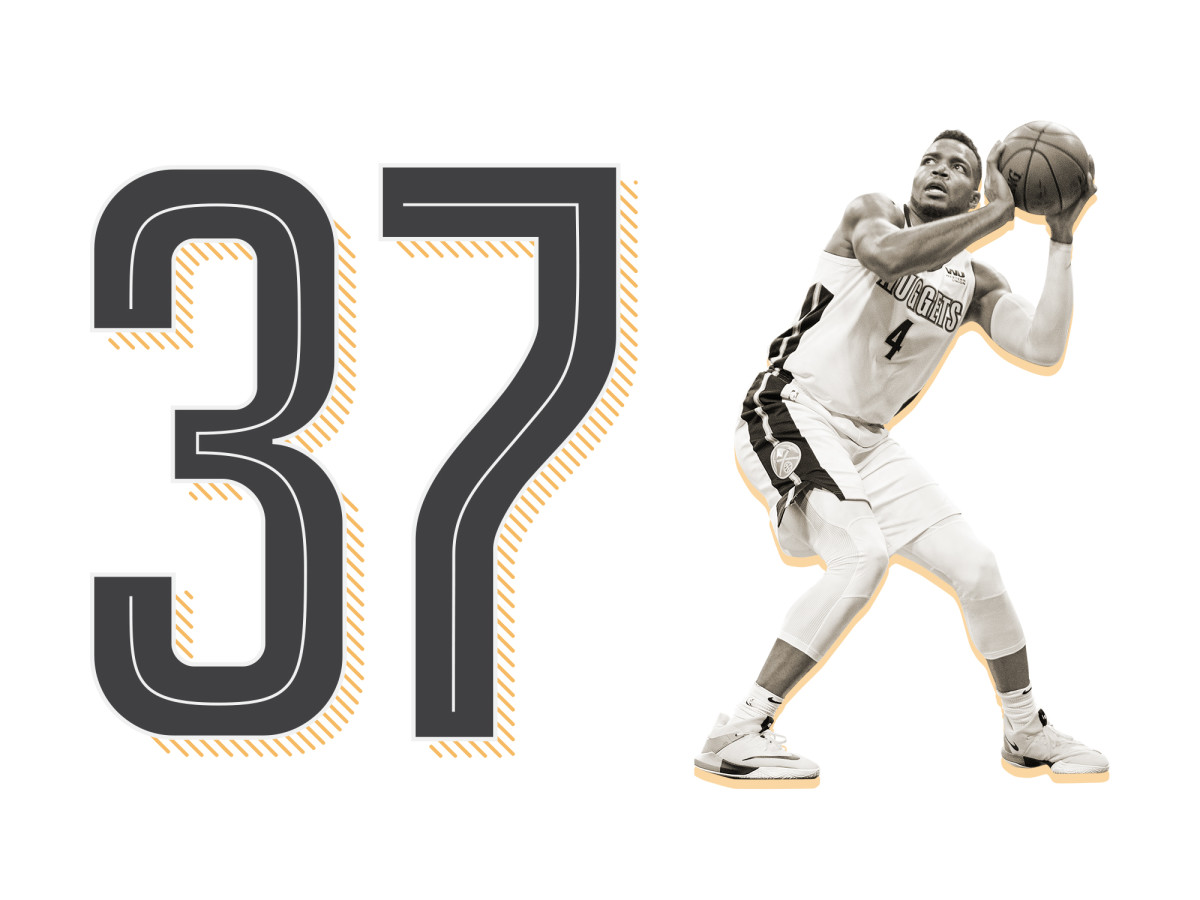
Paul Millsap
Denver Nuggets
Denver’s bold, expensive off-season play for Millsap (14.6 PPG, 6.4 RPG, 2.8 APG) had fizzled by Thanksgiving due to a wrist injury that sidelined the four-time All-Star forward for more than half of last season. Although Millsap posted his worst individual numbers in nearly a decade and the Nuggets failed to reach the playoffs for the fifth straight year, there were some promising signs. For starters, Denver posted a +4.1 net rating with Millsap on the court—equivalent to the league’s No. 6 ranking—and he made the Nuggets more efficient on both sides. Perhaps most importantly, Millsap and Nikola Jokic posted a strong +8 net rating in nearly 900 minutes together, providing convincing evidence that the frontcourt pairing will work well in 2018-19 if healthy.
The 33-year-old Millsap has entered the decline stage of a typical age curve, yet his role flexibility should help soften the blow. Thanks to his unselfish nature and capable three-point shooting, he doesn’t need to dominate the ball to be a helpful offensive player. His willingness to shift down to a complementary role—something some former All-Stars reject outright—provides room for the Nuggets’ young backcourt to blossom. Plus, his savvy, workmanlike and versatile defensive game provides cover for the multiple minus defenders that surround him in the starting lineup. If the Nuggets vault into the playoffs as some projection models expect, Millsap’s fingerprints will be all over the rise even if he is overshadowed by his flashier teammates. — BG
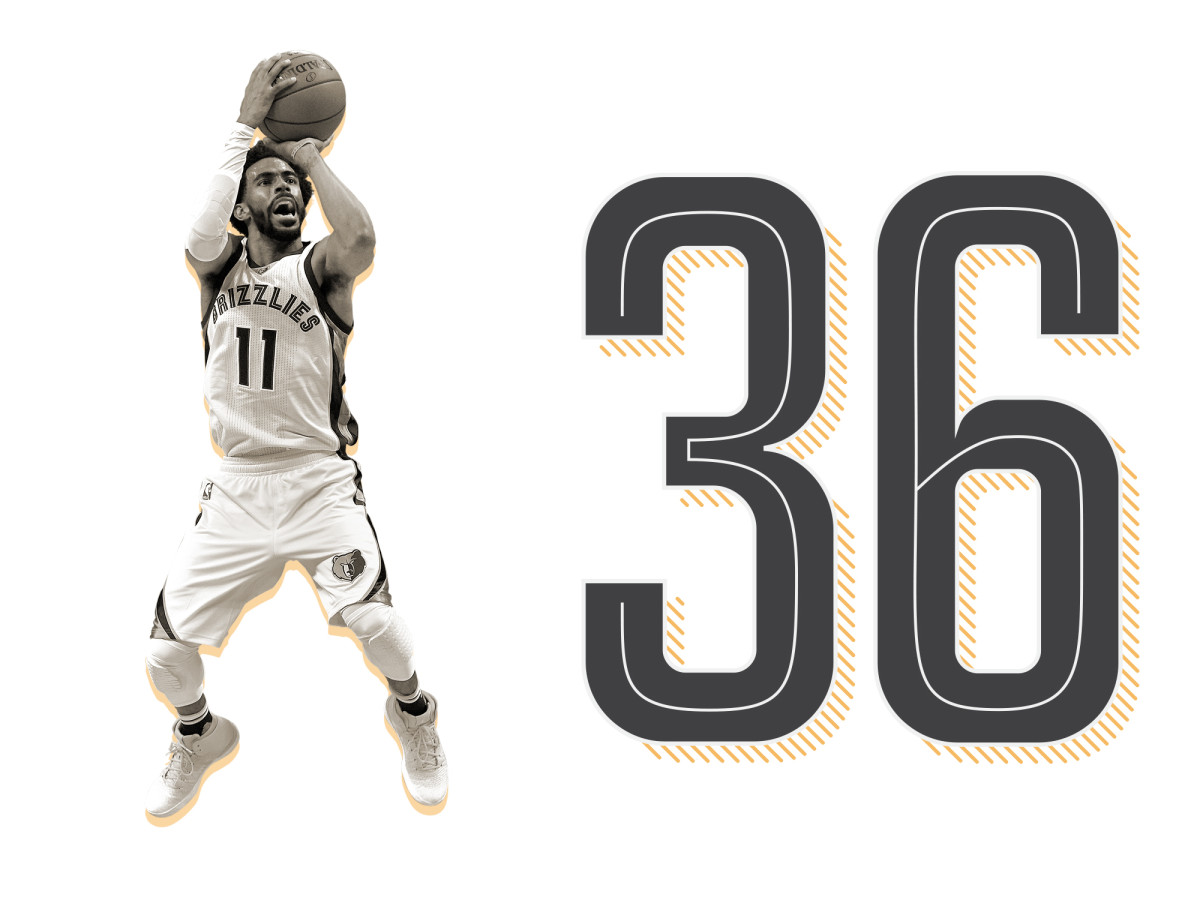
Mike Conley
Memphis Grizzlies
Were there no concern for injury, Conley—a two-way, All-Star-level guard—would rank far better than he does here. To actually follow through on that ranking, however, would require rationalizing away the 109 games that Conley missed over the past three years. There is no single, chronic injury at work but an assortment of seemingly unrelated issues. The latest was a bone intrusion in his left heel, addressed through surgery back in January. Conley is as resilient as athletes come, but his resilience is also tested more often than most. Any predictive ranking must account for that, particularly with Conley now in his early 30s.
This disclaimer is made with the full knowledge that a healthy Conley is a freaking terror. Very few point guards can match his creative depth; Conley has the handle and quickness to go anywhere he wants on the floor, not to mention the skill and touch to score when he gets there. Conley’s game is setups on setups on setups. What looks like an actual move—and would be in lesser hands—is really just prologue, scripted to set expectations for the sole purpose of defying them. By the time Conley’s defender realizes they’re stuck in the blender, it’s already too late.
There’s no weak hand to shade, and no range at which you can give Conley space. The last time we saw Conley really do his thing, he was bombing away from beyond the arc with the frequency of Kyrie Irving, Donovan Mitchell, and Devin Booker—all while hitting better than 40%. His array of runners is the envy of the league. Some scoring option is always available to him, though Conley is perfectly willing to move the ball and defer to the offense. The most dangerous moment in guarding Conley comes then: At the moment of exhale, before it clicks that he only gave up the ball to get it back on a dribble hand-off. — RM
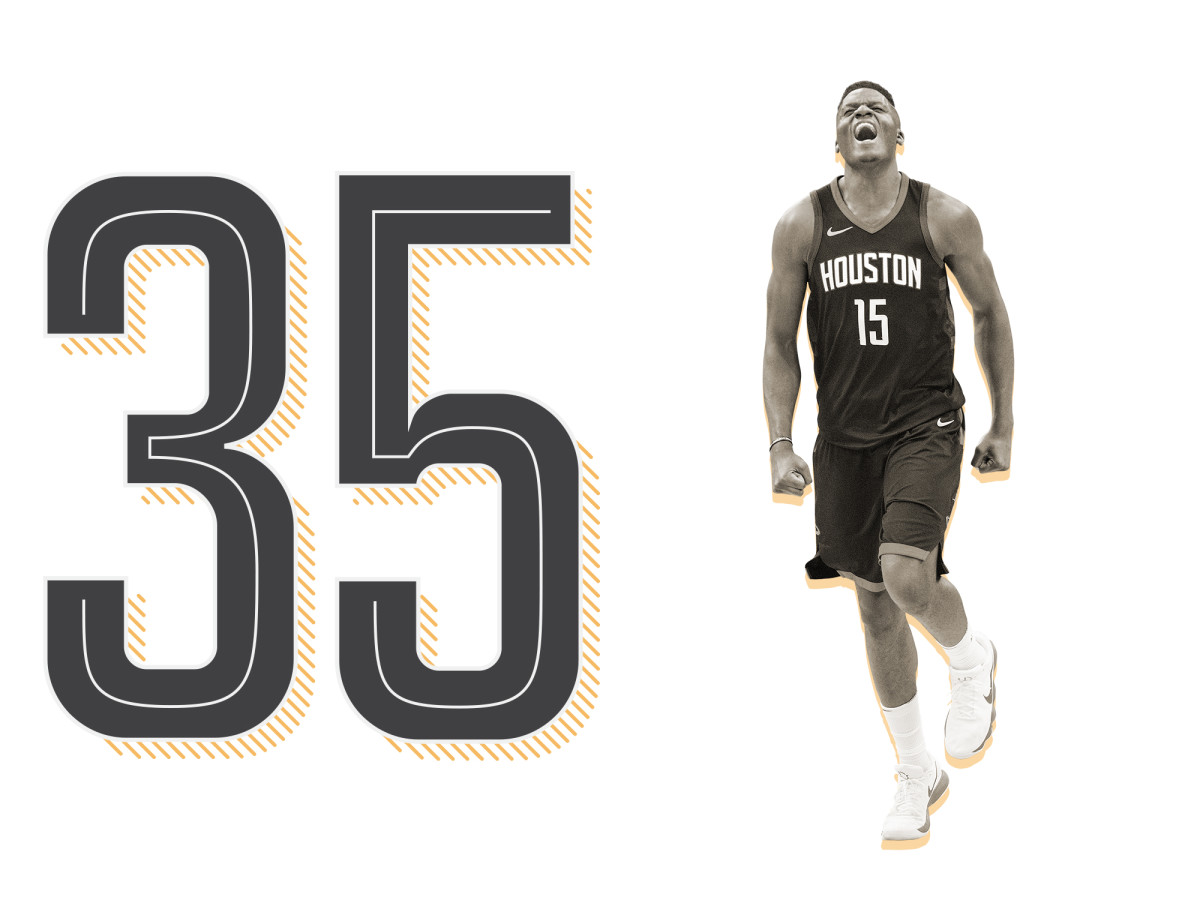
Clint Capela
Houston Rockets
As one of the NBA’s top young centers, it’s no surprise that Capela (13.9 PPG, 10.8 RPG, 1.9 BPG) has buttered his bread in the basket area: He shot a league-high 65.2% thanks to a parade of lobs, defended a league-high 588 shots from within six feet, and ranked eighth with 42 double-doubles. Unlike many of his positional counterparts, though, the 24-year-old Capela has found numerous ways to inject mobility into possessions. He doesn’t camp on the block looking for post-up opportunities, and he covers ground from end to end like few players his size. Even when Houston goes to its slow-down half-court isolation mode, Capela darts through space to set high screens and knifes through multiple bodies to chase offensive rebounds.
In the West finals, Capela’s unique combination of length, agility and activity made him surprisingly resilient against the Warriors. Houston’s two favorite lineups against Golden State both featured Capela instead of a small-ball five, and together the groups were a net-positive over the seven-game series. He can’t play-make or shoot the three like Draymond Green, but Capela represents a new archetype for a modern title contender: a rim-running, screen-setting, alley-ooping, glass-crashing and shot-blocking center who can show and switch against all five positions without getting embarrassed. Houston, understanding Capela’s rare skill profile, wisely inked him to a five-year, $90 million deal in late July. — BG
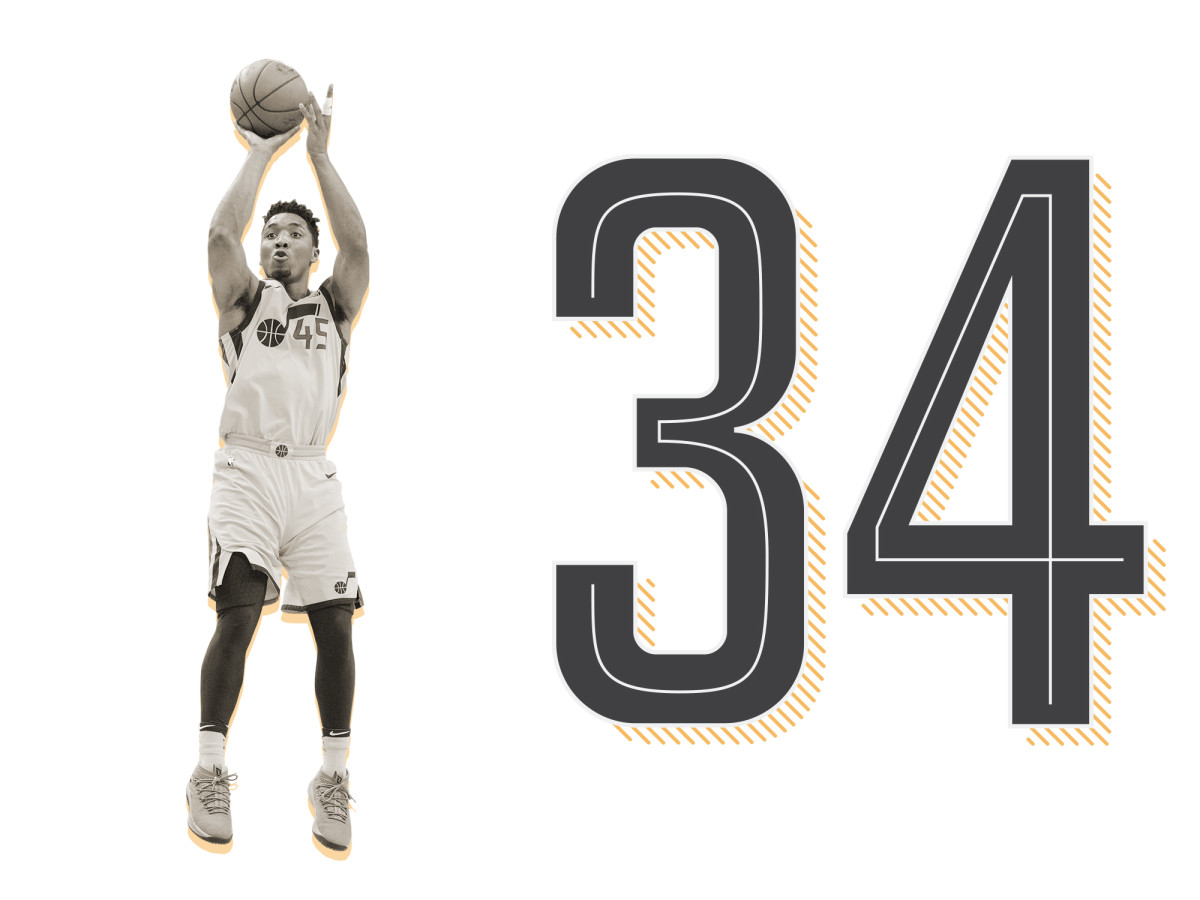
Donovan Mitchell
Utah Jazz
His game has drawn endless comparisons to Dwyane Wade and his marketability is straight from the Damian Lillard playbook, but the recent star that Mitchell (20.5 PPG, 3.7 RPG, 3.7 APG) most embodied down the stretch was a young Derrick Rose. The unadulterated calm and confidence. The willingness to sacrifice life and limb to get to the rim. The savior scoring role on a roster built for defense. The ability to get veteran teammates to buy in—fully and eagerly—to everything he was selling. The measured responses to stunning triumphs. The euphoric embrace from his home crowd.
Such lofty comparisons are appropriate for Mitchell, who became just the third rookie guard to average 20+ PPG since 1990. The 22-year-old guard kept raising the bar as he led Utah past Oklahoma City in the first round: 28 points in Game 2 to steal homecourt advantage, 33 points in Game 4 to take a 3-1 lead, and then 38 points in Game 6 to send Russell Westbrook packing. While the Rockets were able to dissect the Jazz in round two, Mitchell’s postseason debut made it clear that he’s set up for major success. His next steps—improving as a three-point shooter, getting to the line more frequently, and growing as a facilitator—are refinements rather than quantum leaps. If Rose was Chicago’s first superstar of the post-Jordan era, Mitchell might very well become Utah’s most beloved and decorated player since Stockton and Malone. — BG
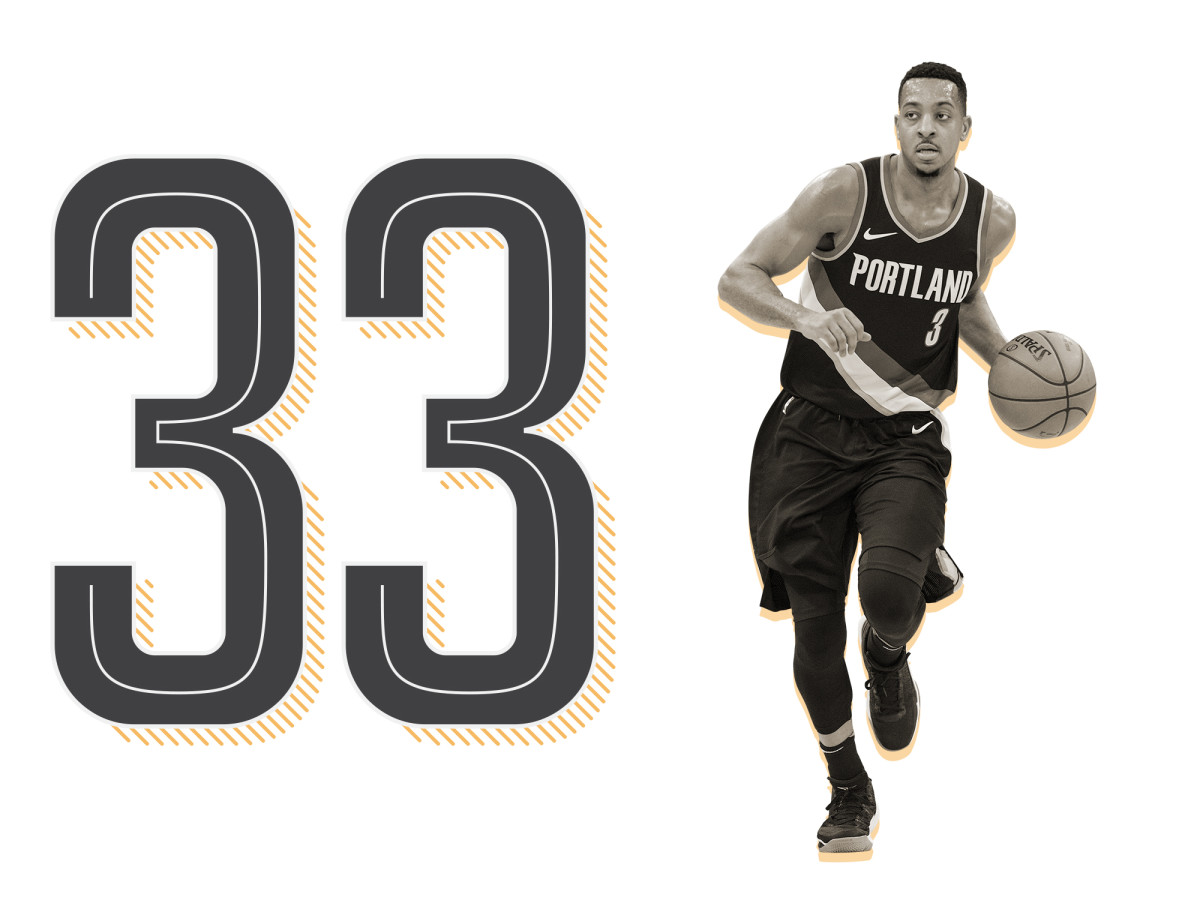
CJ McCollum
Portland Trail Blazers
When a Twitter heckler requested that he stay focused on advancing in the playoffs rather than talking trash about the Warriors, McCollum (21.4 PPG, 4 RPG, 3.4 APG) responded by unleashing a plaintive wail that inspired tribute t-shirts: “I’m trying Jennifer.” The viral comeback was doubly honest, as it reflected McCollum’s dedication to his craft and acknowledged Portland’s painful back-to-back first-round sweeps. Indeed, there can be no questioning the 2016 Most Improved Player’s commitment: McCollum has missed just five total games over the past three seasons, he’s forged a successful and non-combative star partnership with Damian Lillard, and he was a rare bright spot for the Blazers in the 2018 playoffs.
In many ways, McCollum, 26, has developed into an ideal No. 2 scoring option: he can create a shot, he can run the offense for a bench-heavy lineup, he can attack mismatches, he can shoot the three, he can draw attention when he’s off the ball, and he has a good feel for when to defer versus when to take over. Despite this, Portland’s hard ceiling has led observers to wonder whether he would be better suited to running his own team or whether Lillard would be better off paired with a bigger, longer and more defensive-minded partner. Here’s a more compelling hypothetical: How far could Lillard and McCollum go together if GM Neil Olshey ever gave them a league-average supporting cast? Chances are, the Jennifers of the world would need to find new material. — BG
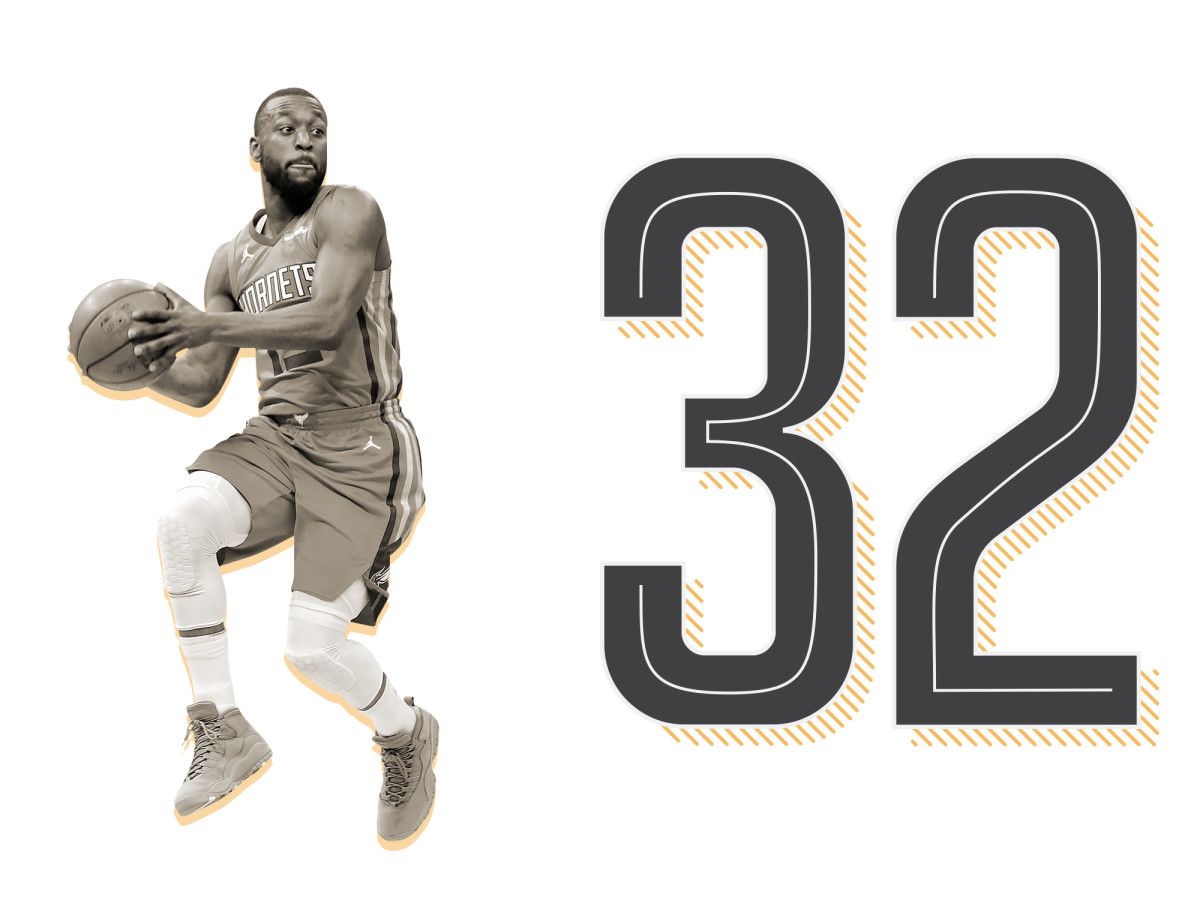
Kemba Walker
Charlotte Hornets
Before you hold Charlotte’s poor performance against Walker, note that the Hornets were actually a winning team whenever he was on the floor. In those minutes, Charlotte outscored their opponents by 3.5 points per 100 possessions, according to NBA.com—a comparable margin to that of the 55-27 Celtics. Walker (22.1 PPG, 3.1 RPG, 5.6 APG) was a star in all matters he could actually control. Holding him accountable for a disastrous backup point guard rotation would be akin to blaming him for concession prices or parking availability.
If anything, Walker had a valiant year. His play was the saving grace of an undermanned roster, which he led without making a fuss. Even when he was featured in trade rumors of the team owner’s own making, Walker went out of his way to express loyalty to the city and organization that brought him into the NBA. When he had every right to be frustrated, Walker just went to work.
It’s easy to play for a teammate like that. Walker digs in, as is evident through his continued self-improvement. The subtle refinement of his off-the-dribble game has made Walker a better creator and the transformation of his jumper has made him a bigger threat; together, that combination has cinched his reputation as one of the most prolific pull-up jumpshooters in the league. Walker created about as many unassisted threes last season as anyone not named James Harden. Opponents, now wise to this, are tempted to overreact. The more dangerous Walker becomes, the better the opportunities for his teammates that result. It’s only the most obvious way that Walker makes the players around him better. — RM
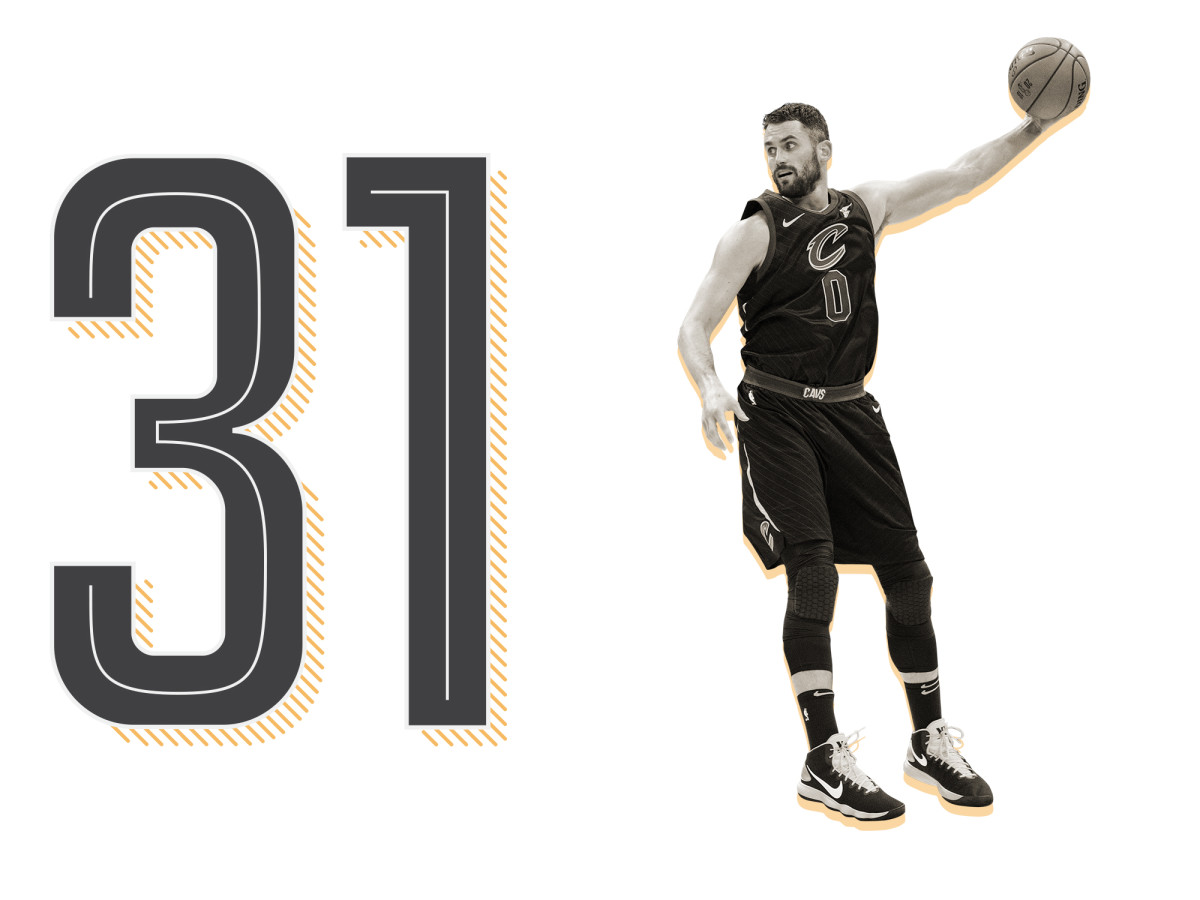
Kevin Love
Cleveland Cavaliers
Let’s establish, first, what Love (17.6 PPG, 9.3 RPG) is not. Love is not a helpful defender. One stop—no matter how crucial—doesn’t overwrite hours of film in which Love has been targeted and exploited. Love is not a primary scorer for a playoff-caliber team. The memory of Minnesota Love isn’t just five years old, but a relic of a different time altogether. Even if he could tap back into that version of himself, today’s defenses are better schooled in tracking Princeton-style movement and more aware of Love’s limitations. Love, though, is not just a role player. The cost of playing alongside LeBron James is the reduction of your game to its most basic elements. That got the Cavs to four straight Finals but reduced Love to a standstill shooter in the process.
Love can make that work (he rated as one of the most efficient spot-up shooters in the league last season, per Synergy Sports), but not only that. The great casualty of his move to Cleveland was the opportunity to make plays. When the Cavs put the ball in Love’s hands, they did so with the intention that he get buckets rather than run offense. It’s an important distinction. Love doesn’t really have the handle or the post game to manufacture shots on command. But letting him read the action for an offense that actually moves could work to the benefit of all involved. Love, even through the simplest implementation, is a star who can create real problems for opposing bigs. The only question is how far his team wants to go to maximize what he does best. — RM
30-11
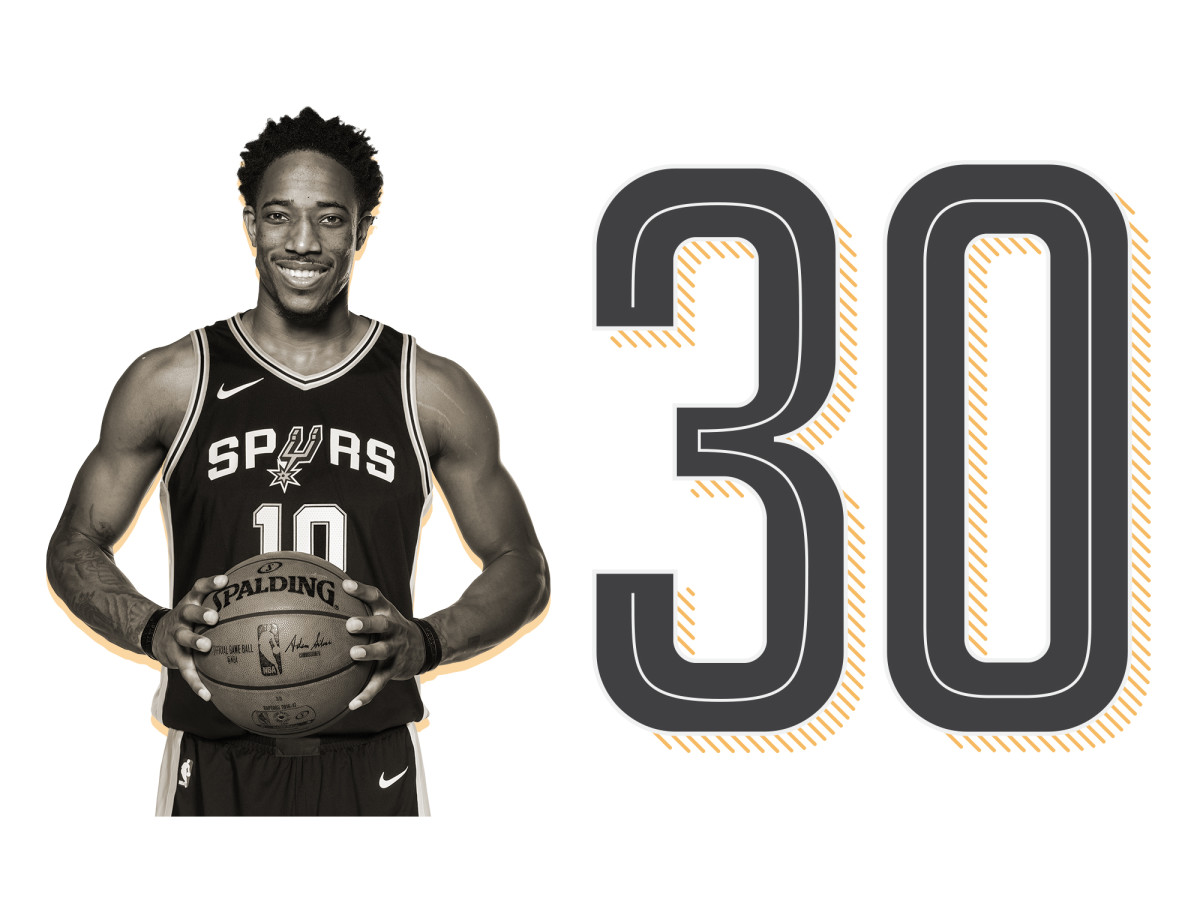
DeMar DeRozan
San Antonio Spurs
DeRozan (23.0 PPG, 3.9 RPG, 5.2 APG) made an earnest effort to reformat his game last season that, in the end, didn’t mean much. Encouraging as it was for DeRozan to venture beyond the arc in the regular season, he bailed on the notion of even attempting a three-pointer in the playoffs—after missing 13 straight. The free-flowing style of the Raptor offense encouraged DeRozan to move the ball until it didn’t; once the system clammed up in the second round, so, too, did DeRozan’s passing. There is more to DeRozan than how he performed against LeBron James and the Cavs. That said, the end of that series (also the end of DeRozan’s Raptors career) was especially vivid: a Game 3 benching followed by a Game 4 ejection, giving way to a sweep, a trade, and the end of an era.
The lesson of the Raptors is that a franchise could easily build a playoff team around DeRozan. It’s building a championship team that’s the trouble—in part because a seven-game series airs out DeRozan’s every liability. In that setting, his defense becomes catastrophic, as was the case against the Cavs. Free throws are harder to come by. The same moves that worked for DeRozan throughout the regular season become tougher to pull off against carefully tailored defenses. And when his scoring game stalls, DeRozan—who doesn’t really cut and doesn’t trust his own three-point shooting—has no real way to contribute.
I say all this only to illustrate the differences between the two DeMars. One is a rock: a steadying influence through a long regular season. The other is not, until he proves otherwise. — RM
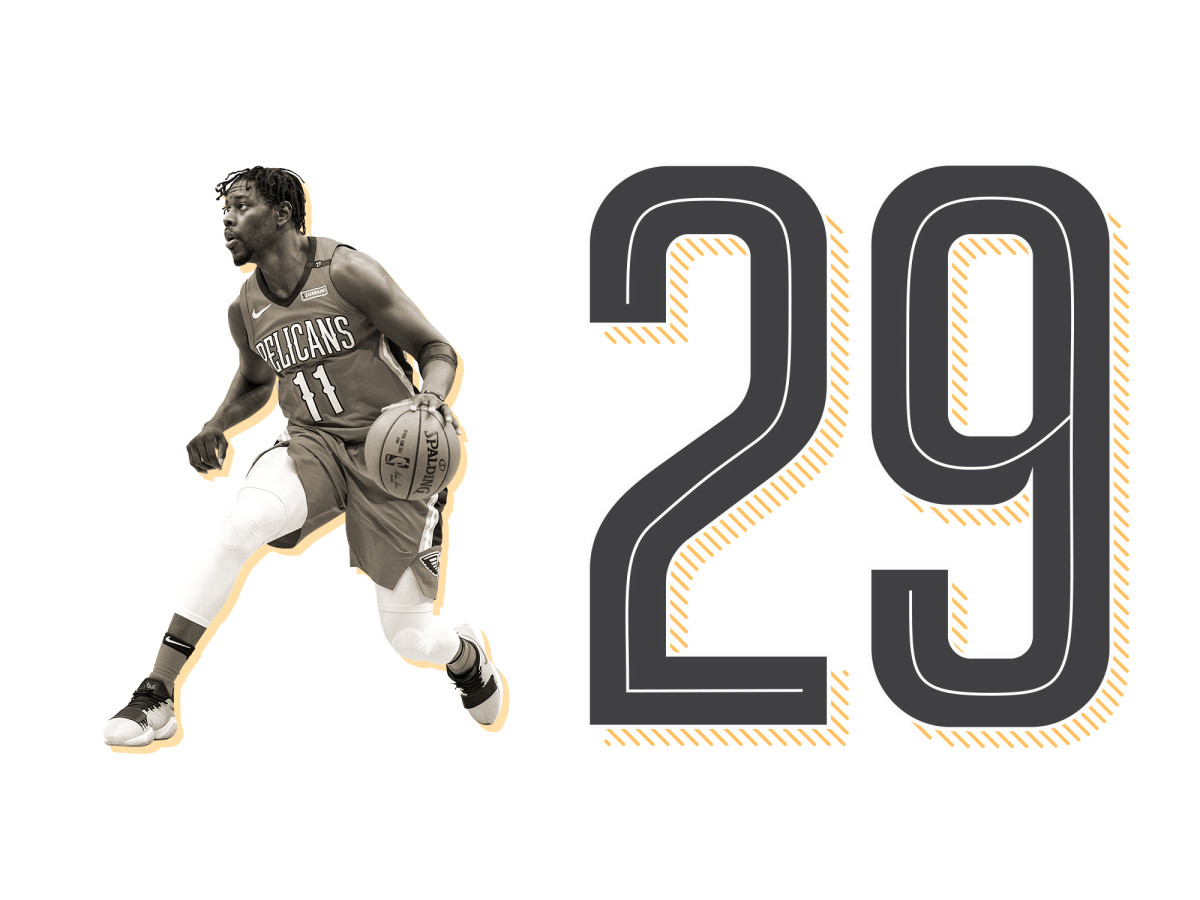
Jrue Holiday
New Orleans Pelicans
It would come as no surprise if Damian Lillard still jolts awake in the dead of night, the memory of Holiday’s playoff defense still fresh in his mind. There are defenders who try hard, who play smart, and who put on a good show. Holiday (19.0 PPG, 4.5 RPG, 6.0 APG) cuts straight through everything to deny a scorer that which he holds dear. It doesn’t take him long to figure out where his opponent wants the ball, and once he does, he shuts down most every lifeline leading there.
Holiday is one of the NBA’s best defensive players. The usual limitations regarding point guards don’t really apply; he’s tall (a listed 6’4”), he’s long (his wingspan, at the time of his drafting, was measured at 6’7”), and he’s too strong to be pushed around. That gave New Orleans the flexibility to move Holiday between perimeter assignments as needed. Against the Warriors, for example, Holiday was the Pelicans’ best shot at defending Stephen Curry, Klay Thompson, and Kevin Durant.
It’s a wonder where he finds the energy. Holiday works a double shift under a huge minutes load: first as a defensive stopper, then as one of the leaders of an offense. New Orleans brought in another point guard (Rajon Rondo) to help Holiday manage, though functionally his role wasn’t all that different; New Orleans was still at its best when Holiday was able to direct traffic, and his production held regardless of whether Rondo was on the floor with him. Holiday is a universal complement. Play him at either guard spot and in almost any capacity. His game knows no bad fit. — RM
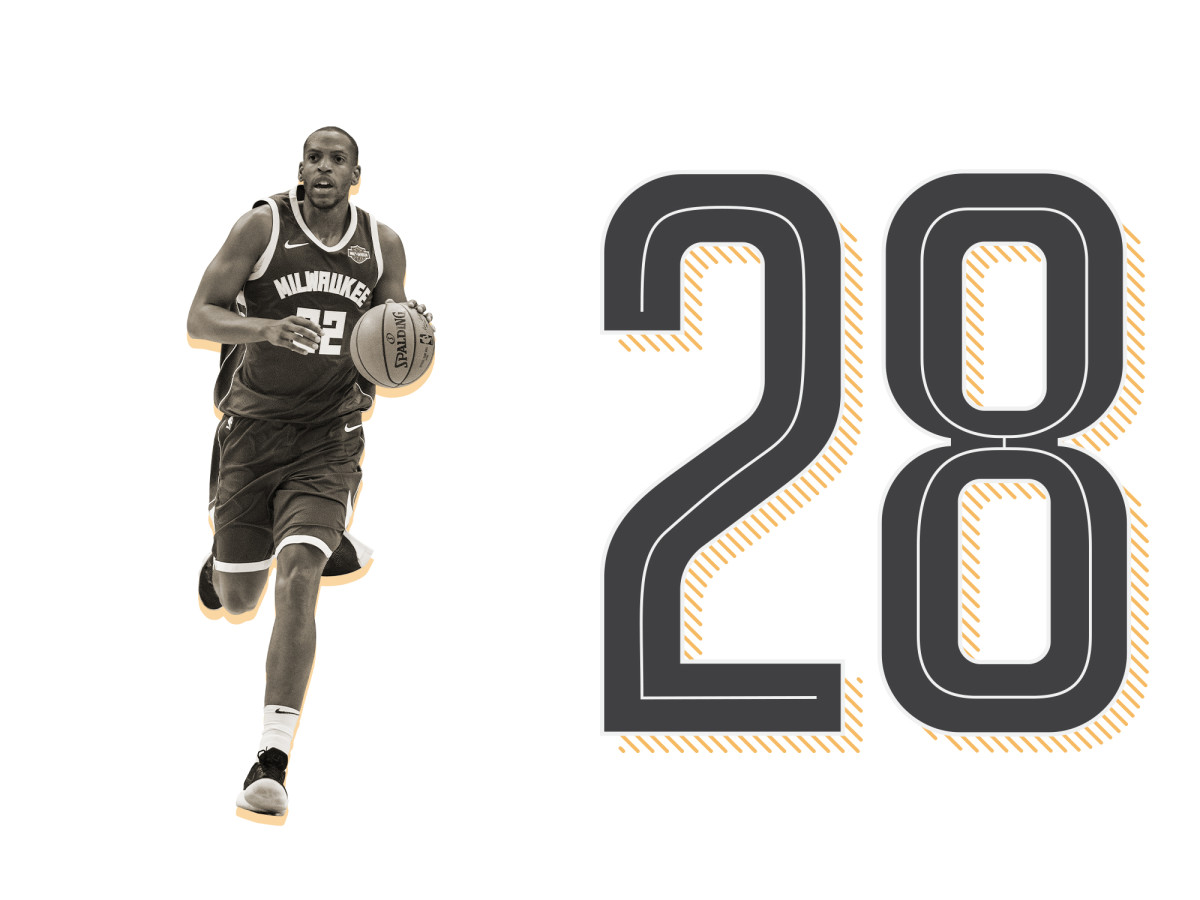
Khris Middleton
Milwaukee Bucks
After a hamstring injury cost him most of the 2016-17 season, Middleton (20.1 PPG, 5.2 RPG, 4.0 APG) bounced back better than even his most optimistic supporters could have hoped. The versatile 27-year-old wing posted career-highs in scoring, rebounds, assists, PER, True Shooting % and Win Shares while playing all 82 games and logging nearly 3,000 minutes. Milwaukee’s season saw all sorts of ups and downs, but the Giannis Antetokounmpo/Middleton pairing was reliable and successful throughout. The duo crested during a first-round series against Boston, when Antetokounmpo left Brad Stevens shaking his head with multiple 30-point games and a scorching-hot Middleton posted a playoff-best 71.9 TS%.
Middleton, much like Paul George, is ideally suited to a No. 2 role, and his completely transferrable game could complement everyone from Antetokounmpo to James Harden to Anthony Davis. Offensively, he can shoot the three, create a shot, and generate high-percentage scoring opportunities by beating help defense with the pass. Defensively, he can switch seamlessly through multiple positions and handle lead assignments thanks to his quickness and length. The Bucks’ next step under new coach Mike Budenholzer is clear: Construct a five-man offensive system that reduces the need for Antetokounmpo and Middleton to grind out isolation half-court buckets. With a little more structural help and a little less one-on-one, the understated Middleton might finally achieve the recognition and postseason success that has long eluded him. — BG
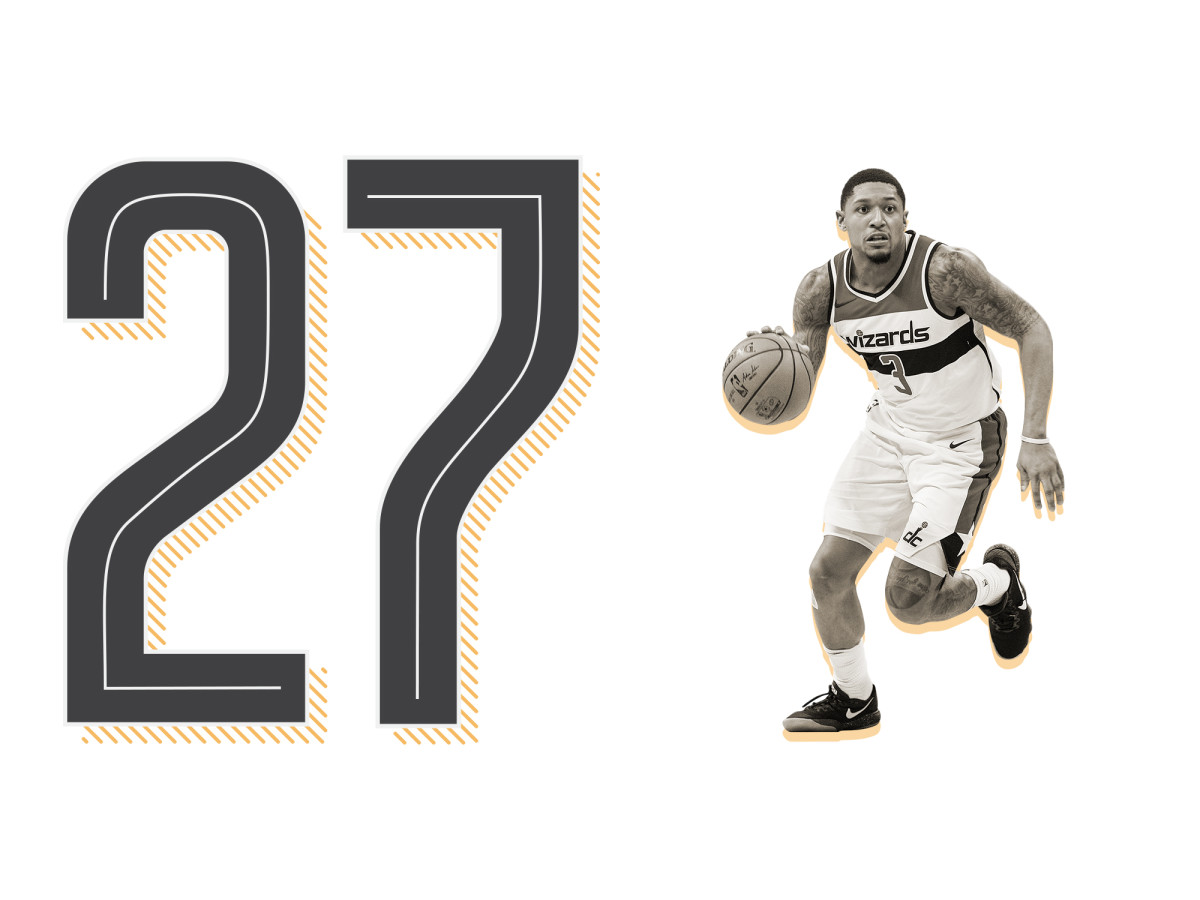
Bradley Beal
Washington Wizards
This was a stretch season for Beal (22.6 PPG, 4.4 RPG, 4.5 APG), who not only played all 82 games for the first time in his career but went half that time without John Wall. The experience was illuminating. We saw Beal run even more pick-and-roll than usual, approaching each with a new disposition. Taking over the responsibility for an offense can’t help but change a player. Even though Beal will always see the game as a scorer first, he was more patient when it came to reading the floor and letting his options develop. The lesson, contrary to the extreme reaction at the time, was not that the Wizards are better off without Wall. It was that the Wizards are better off without Wall dominating the offense, which Beal could do more to help orchestrate.
Every year, Beal’s handle gets a little tighter. His crossovers these days aren’t quite so unruly, which allows him to work in straighter lines. The more direct Beal’s game is, the better; he’s so good at slamming on the brakes—only to pull-up for a jumper or pivot into one—that any momentum he generates works to his advantage. Beal’s touch is natural, but his moves are earned. You can see the patterns in his footwork that would only materialize through repetition, as he sorts out how to attack out of any situation and at any angle. Maybe the most underrated part of Beal’s game is the sheer accessibility of his scoring. No matter where he’s positioned, there’s always a way through. — RM
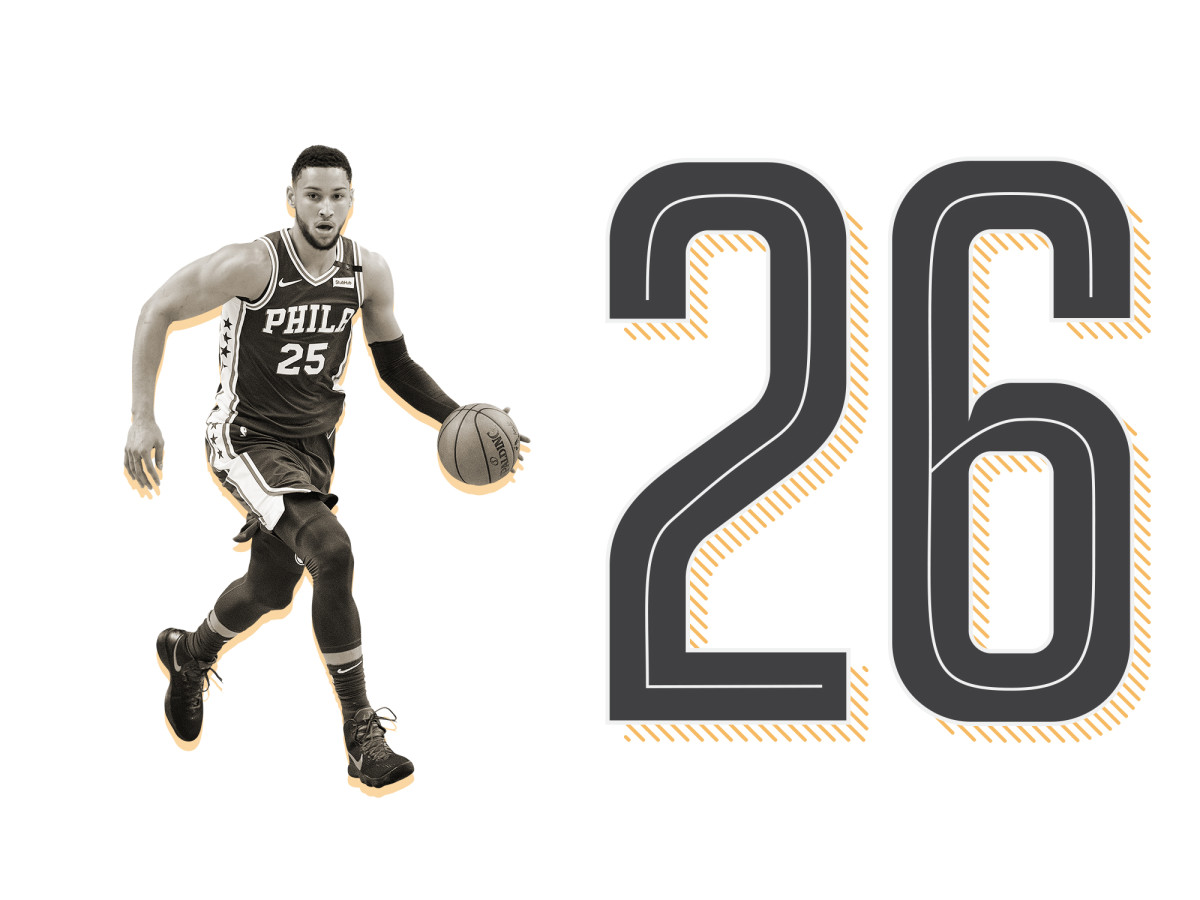
Ben Simmons
Philadelphia 76ers
Although Simmons (15.8 PPG, 8.1 RPG, 8.2 APG) is only 22 years old, he has already provided convincing answers to most of the pre-draft questions that surfaced in 2016. He’s not a point guard? Simmons was the lead ball-handler for one of the league’s most devastating five-man lineups, claiming 2018 Rookie of the Year honors and joining John Wall as the only rookies to average 15+ PPG and 8+ APG during the last 20 years. He has a questionable motor? Simmons came out of the gate as a clear plus defender—ranking 35th league-wide in Real Plus-Minus—while also carrying Philadelphia to eight straight wins without Joel Embiid to close the season. He won’t be able to bully his way to the hoop against NBA-caliber defenders like he did in college and high school? Simmons’s shot distribution chart looks like it belongs to an elite center, as he hit 74.4% of his shots in the basket area and took nearly half of his attempts from within three feet.
There was, of course, one knock that did stick: his total lack of shooting. Despite playing more than 2,700 minutes, Simmons attempted just 11 three-pointers and didn’t make any. Among established star-level perimeter players, there really isn’t a modern comparison for that degree of perimeter futility, although John Wall, Giannis Antetokounmpo, and DeMar DeRozan all struggled mightily early in their careers. Philadelphia’s second-round series loss to Boston proved that Simmons can’t always work around his Achilles heel. Without a jumper to extend the defense, the Australian point forward was held in check, stymied by the Celtics’ interior bodies and forced into more turnovers than the Sixers could stomach. Yet focusing only on his uneven play against Boston would be misrepresentative of a spectacular rookie season: Simmons is one of the NBA’s brightest young lights, and he appears poised to make his All-Star Game debut in 2019. — BG
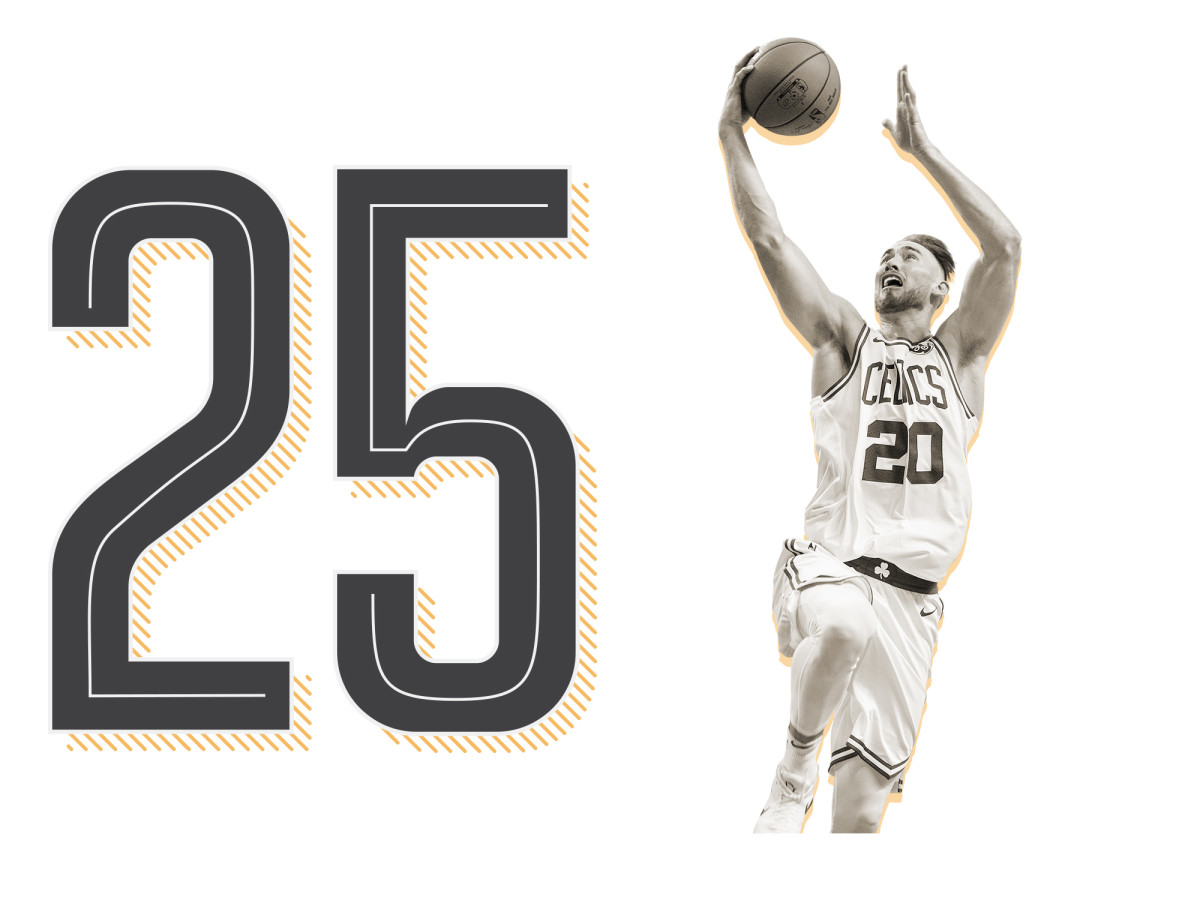
Gordon Hayward
Boston Celtics
This ranking takes a relatively conservative view on Hayward, who suffered gruesome, compounding leg injuries five minutes into his first game of the 2017-18 season. Should Hayward look just as good as he did before those injuries (or better), a spot in the top 20 could be entirely reasonable. It just can’t be guaranteed—not after Hayward was immobilized, reduced to shooting from a chair, and categorically ruled out even as the Celtics played late into May. A full, uncomplicated recovery can’t always be taken on faith.
What’s more certain is Hayward’s skill level. It’s probably for the best if he isn’t his team’s leading scorer, though all other options are on the table. His game is deeply agreeable. More fluid systems could lean on Hayward to read his surroundings and make plays, while a more scripted offense could fall back on his ability to cut and curl. Hayward has made himself into the kind of wing who can consistently hit difficult shots; years of working off the ball have led him to make the most of tight windows, while a stronger frame helps to absorb contact in the middle of a runner or jumper.
He’ll be great for the Celtics because he’d be great pretty much anywhere. Two-way wings create possibilities. They don’t necessitate playing any certain way, but they make it easier to adapt—particularly when, like Hayward, they can guard well across three positions. There isn’t an offense Hayward can’t better or a defense he can’t execute. His game is all options. — RM
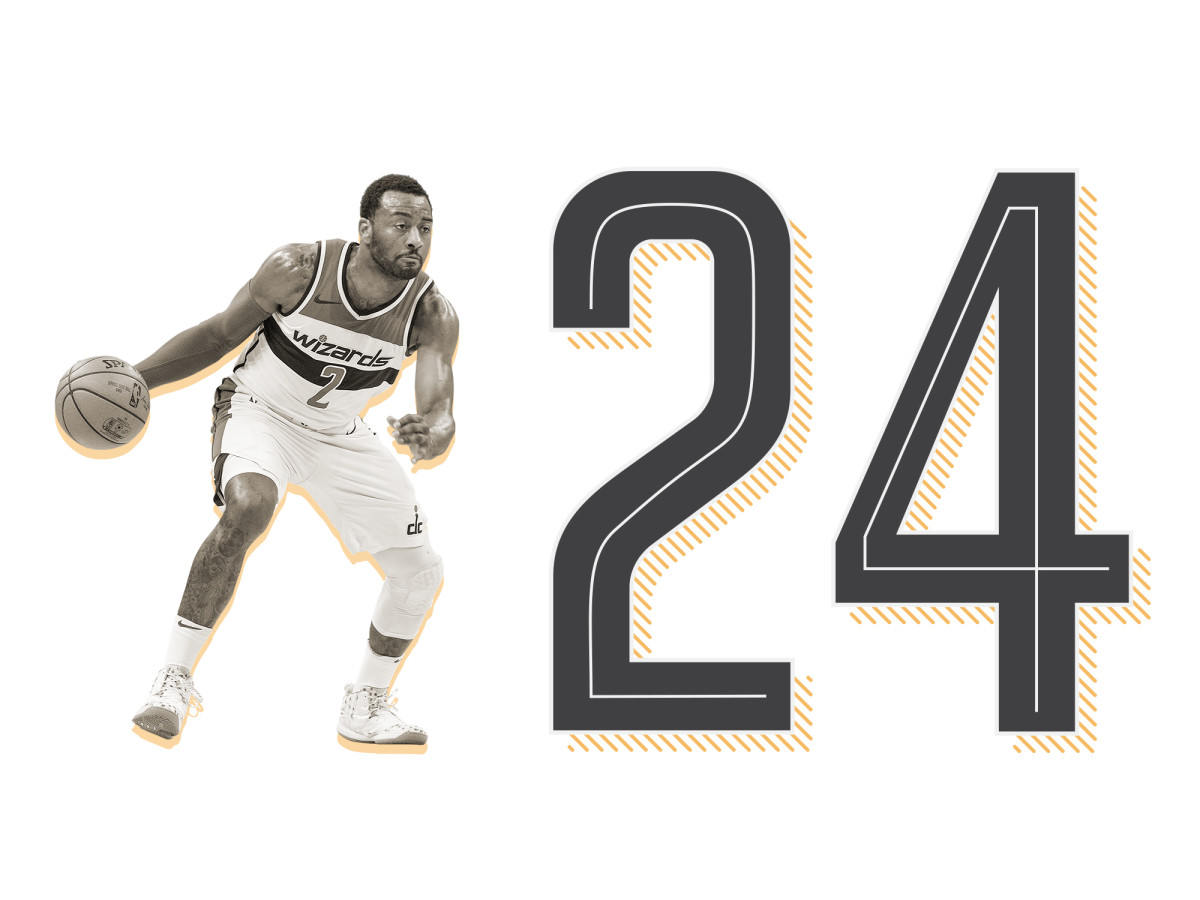
John Wall
Washington Wizards
As always, Wall (19.4 PPG, 3.7 RPG, 9.6 APG) has paid careful attention to the perception of his standing relative to his peers, noting in an August interview with NBA Sports Washington that “a lot of guys don’t talk about me being a top-five point guard.” Although SI.com ranked Wall as the fifth-best point guard and 13th overall player at this time last year, it’s impossible to argue that he lived up to that billing. The five-time All-Star missed half the season due to injury, ranked outside the top 45 by PER, Win Shares, Real Plus-Minus and WARP, and was quickly bounced in the first round of the playoffs. At 28, Wall has never led a 50-win team, he’s led just one top-10 offense, and he’s won just three total playoff series during his eight-year career. That body of work doesn’t compare—at all—to the likes of Stephen Curry, Chris Paul and Russell Westbrook.
If Wall returns to full health and 20/10 production, he belongs in the mix for a top-five spot with the next tier of point guards: Damian Lillard, Kyrie Irving and Kyle Lowry. But regaining his footing in that conversation requires more than just flashing his incredible athleticism, maintaining his improved three-point percentage, and recommitting himself on the defensive end. Wall spent a good portion of last year sniping with Marcin Gortat, and his ball-dominant approach briefly led critics to wonder if Washington was better off without him when he was injured. If Wall can make meaningful strides as an inclusive and empowering leader both on and off the court, the Wizards are far more likely to reach their playoff ceiling. When that happens, he won’t need to waste his time and energy fighting for respect. He’ll get his due. — BG
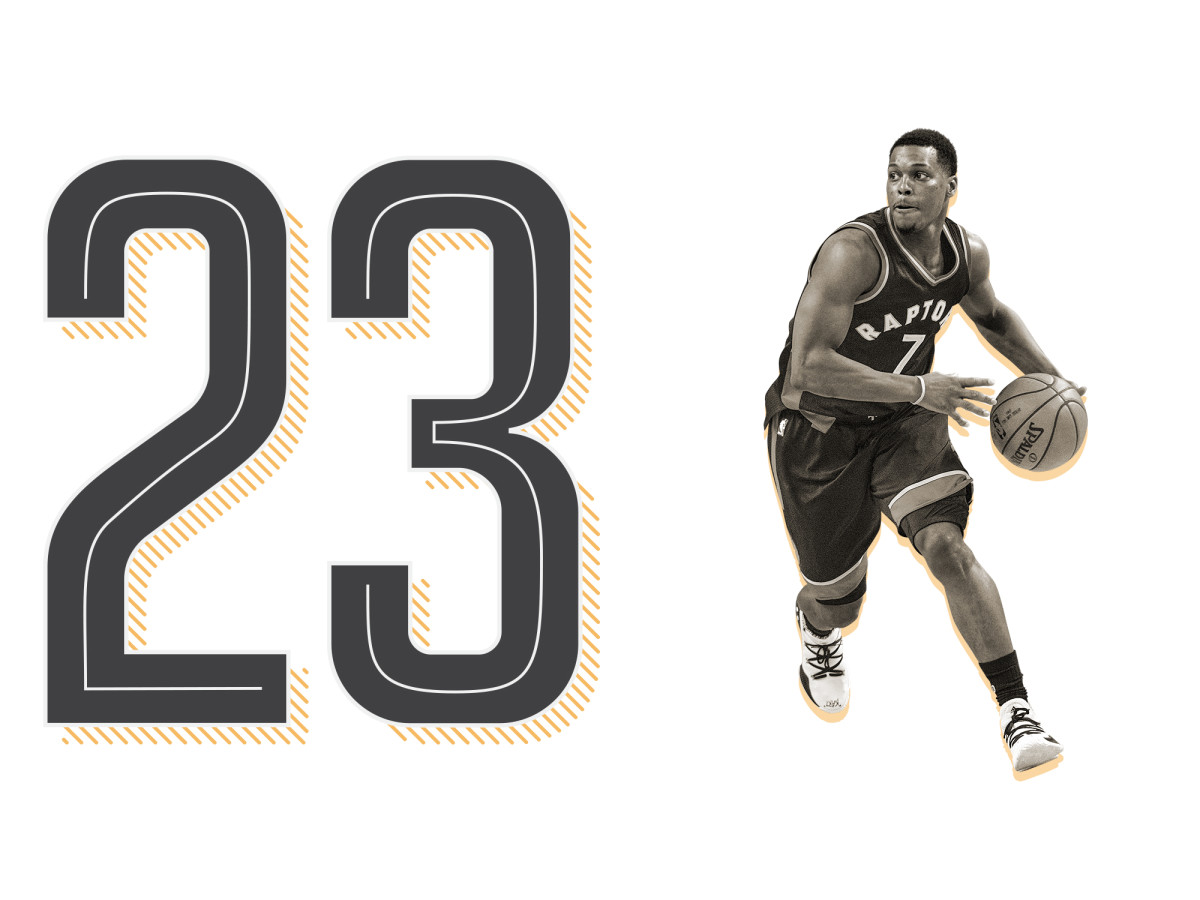
Kyle Lowry
Toronto Raptors
Kudos to Lowry (16.2 PPG, 5.6 RPG, 6.9 APG), the sole remaining survivor in Toronto’s triumvirate of blame. With Dwane Casey and DeMar DeRozan both gone following another humiliating loss to LeBron James, it’s worth taking a moment to recognize what the coach and his star guards accomplished together: five straight seasons with 48+ wins, the five winningest seasons in franchise history, five playoff appearances, four playoff series victories, and a trip to the East finals. During Lowry’s six-year tenure in Toronto, the Raptors have won 297 games, the most of any Eastern Conference team. Now, at age 32, Lowry will plunge forward with a rookie coach and a rehabilitated Kawhi Leonard in search of his first trip to the Finals.
Although Lowry’s individual numbers diminished last season, the fall-off was mostly attributable to a more careful management of his minutes rather than a dramatic change in his ability. The four-time All-Star logged five fewer minutes per game during the regular season, a substantial strategic adjustment that helped him play 78 games and turn in easily the most efficient postseason of his career. While Lowry remains a strong outside shooter and a dynamic all-around offensive player, his age might be starting to show on the other end. He led the league with 37 drawn charges in 2017-18, but his impact stats weren’t quite as impressive as in recent years. This much is clear: No one benefits more from Leonard’s arrival than Lowry, who gets to move to a shotgun role alongside an MVP-level champion at the exact moment his own window as an elite point guard was starting to close. — BG
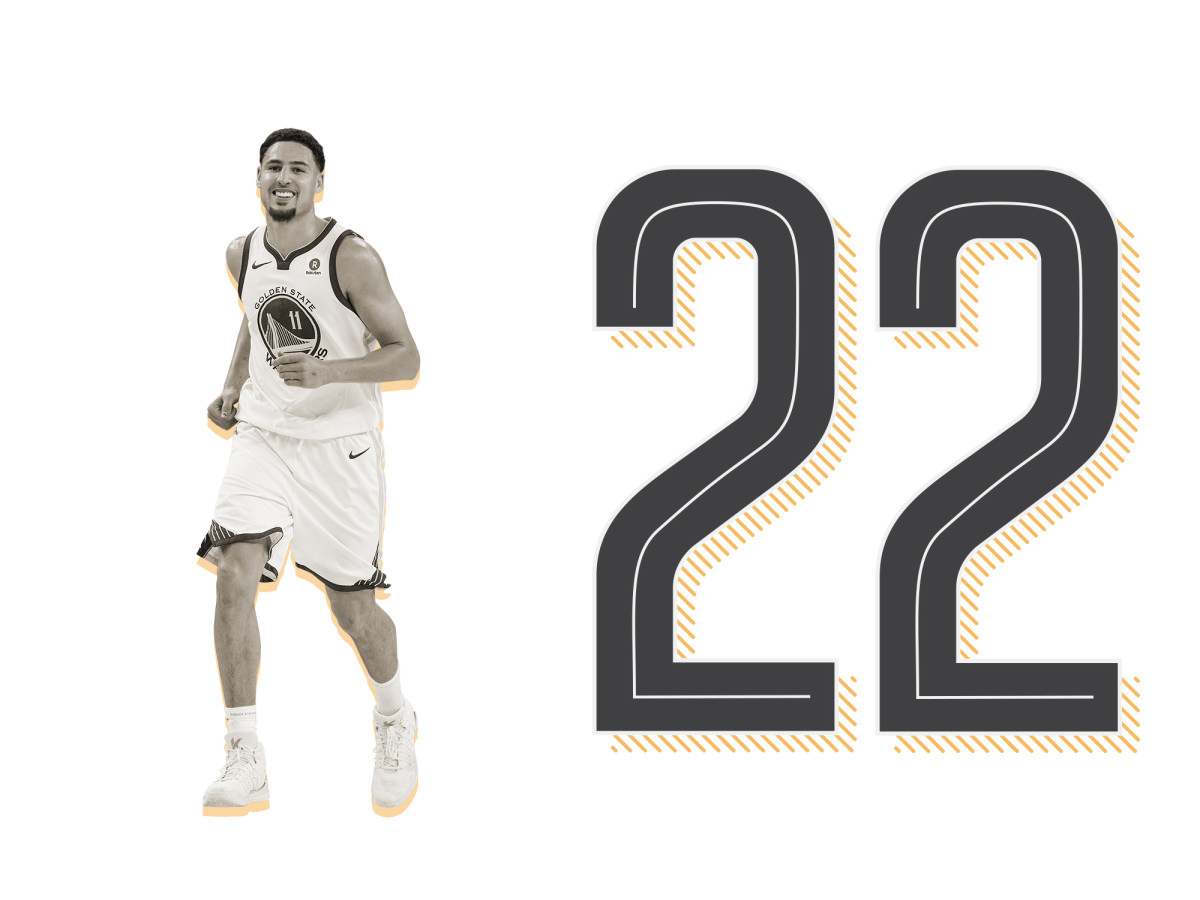
Klay Thompson
Golden State Warriors
Pondering Thompson (20 PPG, 3.8 RPG, 2.5 APG) in a vacuum is a far more enriching mental exercise than assessing his play with the Warriors because he is the definition of a known quantity. The 28-year-old sharpshooter has produced nearly identical numbers for four straight seasons now, ranking among the NBA’s deadliest three-point marksmen and its most respected perimeter defenders.
Although a fluky thumb injury caused him to miss a career-high nine games in 2017-18, Thompson was as lethal as ever during the postseason run to Golden State’s third title in four years. His personal highlight: draining nine three-pointers in a do-or-die Game 6 in the West finals, a season-saving explosion that mirrored his epic Game 6 against the Thunder two years earlier.
When listing off the reasons that the Warriors are “unfair,” don’t forget that their third option is a stone-cold sniper with a quick trigger who also happens to love grinding out defensive possessions against star wings.
Place Thompson on a team with average talent and a need for him to play a leading role, and there’s no telling exactly how things would turn out. His limitations as an off-the-dribble creator and a playmaker for others would show through quickly, and his efficiency would surely dip with lower-percentage looks. How hard would he need to work to get open without Stephen Curry and Kevin Durant? Would his occasional streakiness be held against him more often if he was the No. 1 option? Would his pressure defense be held in the same regard if Draymond Green wasn’t behind him to play clean up? These are intriguing questions, but they will remain hypotheticals for the foreseeable future thanks to Thompson’s willingness to sacrifice in Ginobili-like fashion. Here in reality, he’s bound to keep swishing threes and stacking rings in his perfect role with the champs. — BG
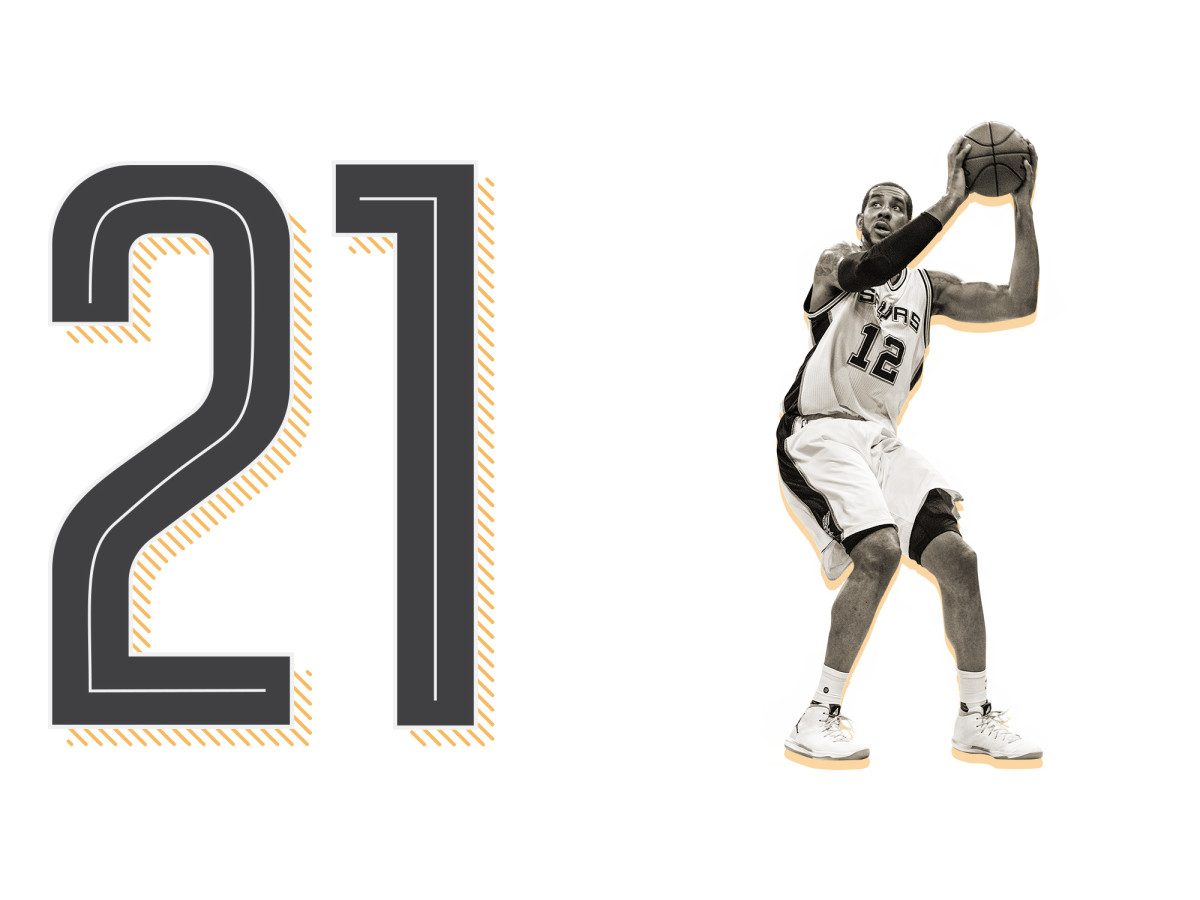
LaMarcus Aldridge
San Antonio Spurs
Aldridge (23.1 PPG, 8.5 RPG, 2.0 APG) returns after a genuinely remarkable season, in which he reconciled with the Spurs, staved off decline, and played every bit to an All-NBA standard. San Antonio’s offense was solvent solely because of him. All the ball movement was cute, but 20 seconds of good intentions often ended in Aldridge bailing his teammates out. A lack of shooting in the lineup left Aldridge the space of a broom closet. He responded with arguably his best season to date, anchoring a 47-win team in the process.
It’s less than ideal to rely on Aldridge in that way, but—as the Spurs proved—it’s really not the worst thing in the world. When he’s comfortable, Aldridge is tough to deny. His usual array of shots is easily manufactured, even in the face of attentive defense. Those opponents who can cause problems for Aldridge’s face-up game won’t generally have much impact on his back-to-the-basket play. There’s only so much that can be done to challenge the release of a 6’11” shooter from all angles.
Some regression could be in order. Aldridge wasn’t unusually accurate from any range last season in a way that would raise alarm, but he is a 33-year-old with more than a decade of star-level usage. That hurts his case in a top-25 field that is otherwise quite young—full of players either in the thick of their primes or with their best years still to come. Aldridge is on the other side. The question is not whether his numbers hold but for how long. — RM
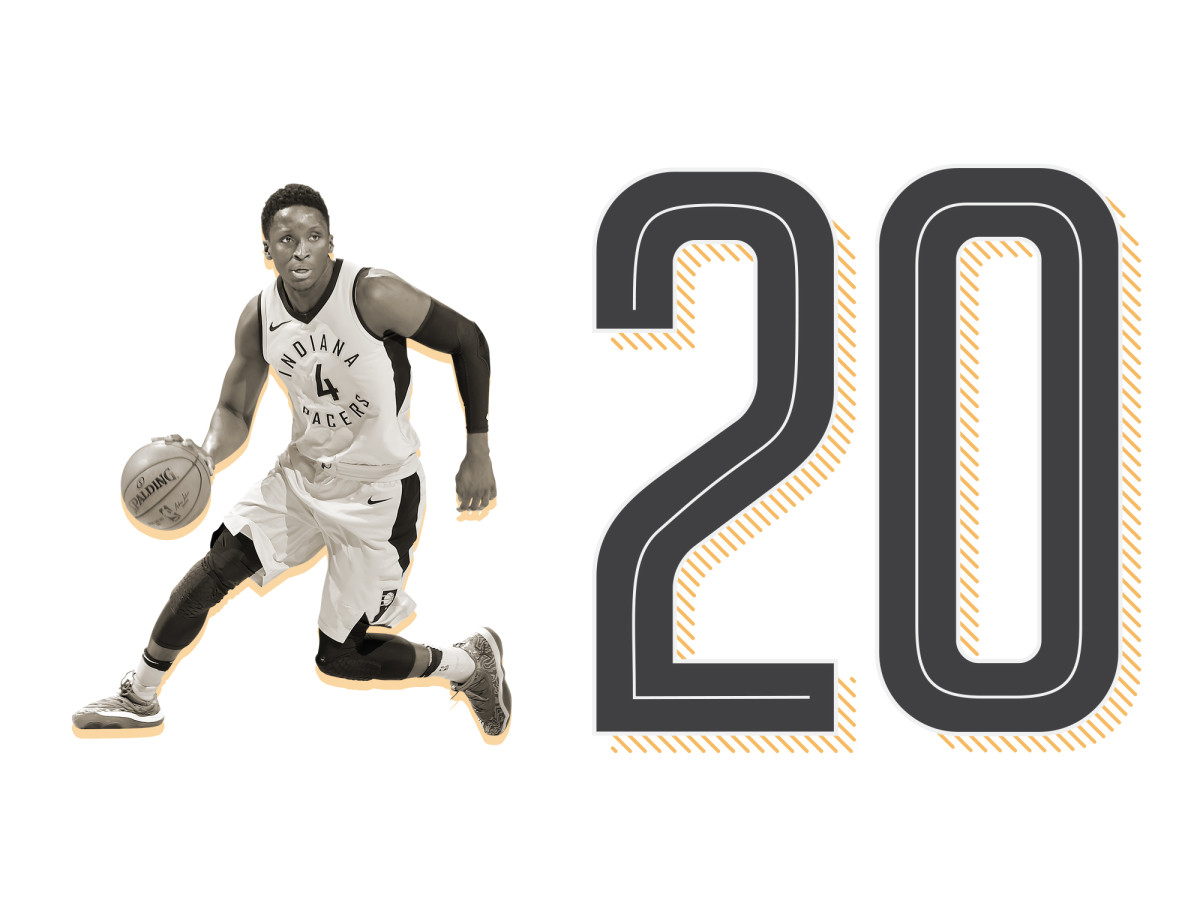
Victor Oladipo
Indiana Pacers
Before last season, Oladipo (23.1 PPG, 5.2 RPG, 4.3 APG) barely needed a trophy case: the 2013 No. 2 pick’s unspectacular career was highlighted by a second-place finish in the 2015 Slam Dunk Contest, an $84 million extension that many observers felt was too generous, and a front-row seat for Russell Westbrook shooting 34 times in an elimination-game defeat. Now? Oladipo has enough hardware to start a personal shrine after earning Most Improved Player, All-Star, All-NBA Third Team and All-Defensive First Team honors in one of the great mid-career breakouts in recent memory.
The 26-year-old scoring guard displayed numerous improvements following a trade from Oklahoma City to Indiana: he shot the three at a career-high rate, he worked in a more reliable off-the-dribble jumper, he attacked the rim with greater purpose, and he committed to becoming a disruptive defender on a nightly basis. Importantly, Oladipo also settled in as a late-game option, ranking fourth in clutch scoring and leading the pesky, overachieving Pacers to a 24-17 record in games that were within five points in the last five minutes. Perhaps the best way to gauge Oladipo’s value came when he was sidelined for seven games: Indiana went 0-7 and lost by an average of 14 points. The East’s No. 5 seed could have been mistaken for the Suns or Grizzlies without its franchise player.
This ranking reflects a degree of skepticism that Oladipo’s sensational season—he ranked sixth in Real Plus-Minus, 11th in WARP and 19th in PER—is his new normal. However, his explosiveness, buy-in, and two-way impact should keep him in the All-Star conversation, even if he sustains natural regression or falters a bit under enhanced expectations. — BG
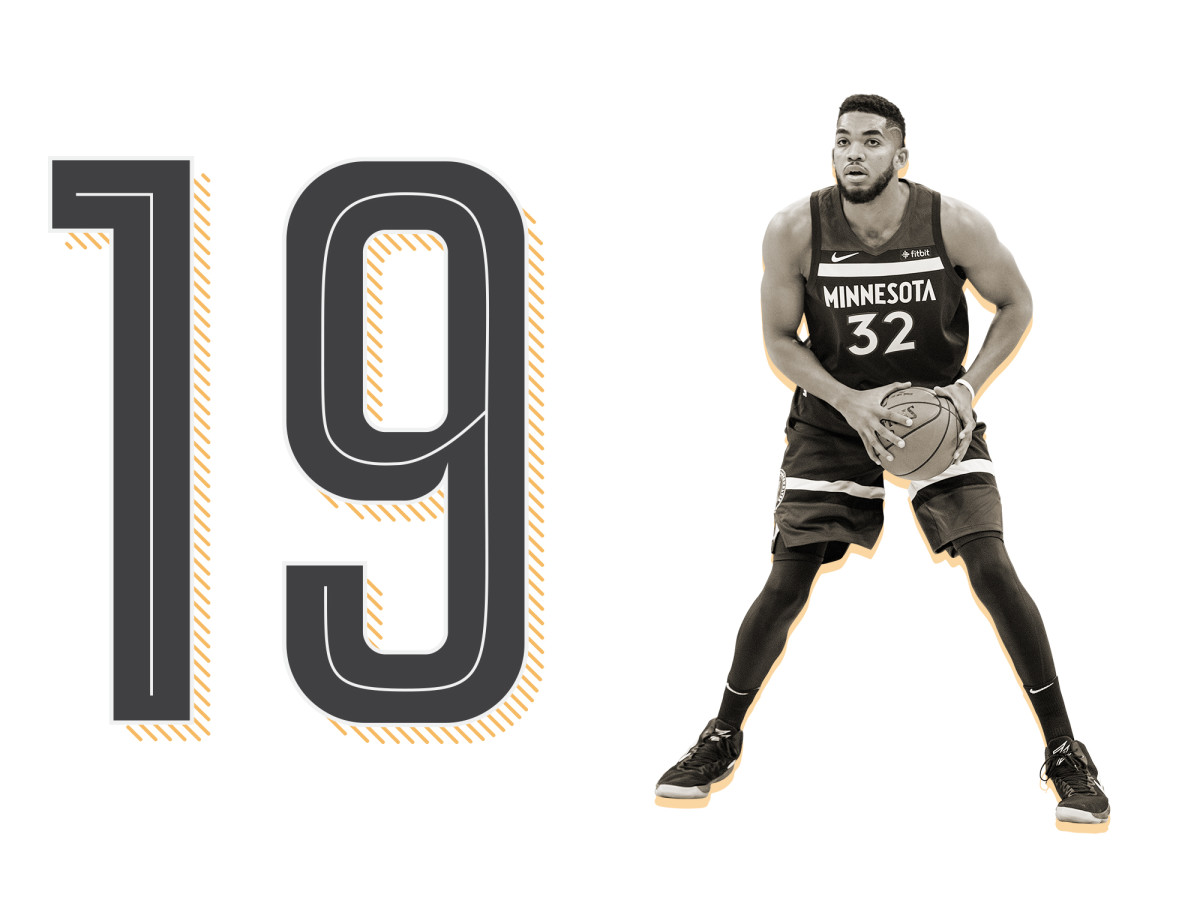
Karl-Anthony Towns,
Minnesota Timberwolves
Towns (21.3 PPG, 12.3 RPG, 2.4 APG) has every tool at his disposal, every advantage one could hope for. If only he had full command of them. Scoring comes easy; Towns is one of the few genuinely dominant post players left, though in his spare time he moonlights as a 42.1% three-point shooter and one of the quickest-driving centers in the league. It’s the combination of those skills that makes Towns’s occasional disappearances—as in the first few games of Minnesota’s lone playoff series—all the more mystifying. In those moments, he looked every bit a 22-year-old.
For as much as Towns can do, there’s still a lot he hasn’t quite figured out. Defense seems to elude him—an issue made all the more glaring by his position. When a young guard takes a bad angle or gives up on a play, there are multiple levels of defensive infrastructure to bail him out. Not so for centers, who are asked to make split-second decisions and cover tons of ground with no safety net. Mastering the rhythms of team defense is as difficult as any part of NBA life. Towns, though, is still striving for competence.
He’ll get there. In the meantime, the Wolves will have to settle for his unbelievable efficiency, his strong rebounding, and his matchup-detonating versatility. The thrill with Towns is knowing that this is only the beginning. If some part of his game hasn’t quite crystallized, check back in a few months. — RM
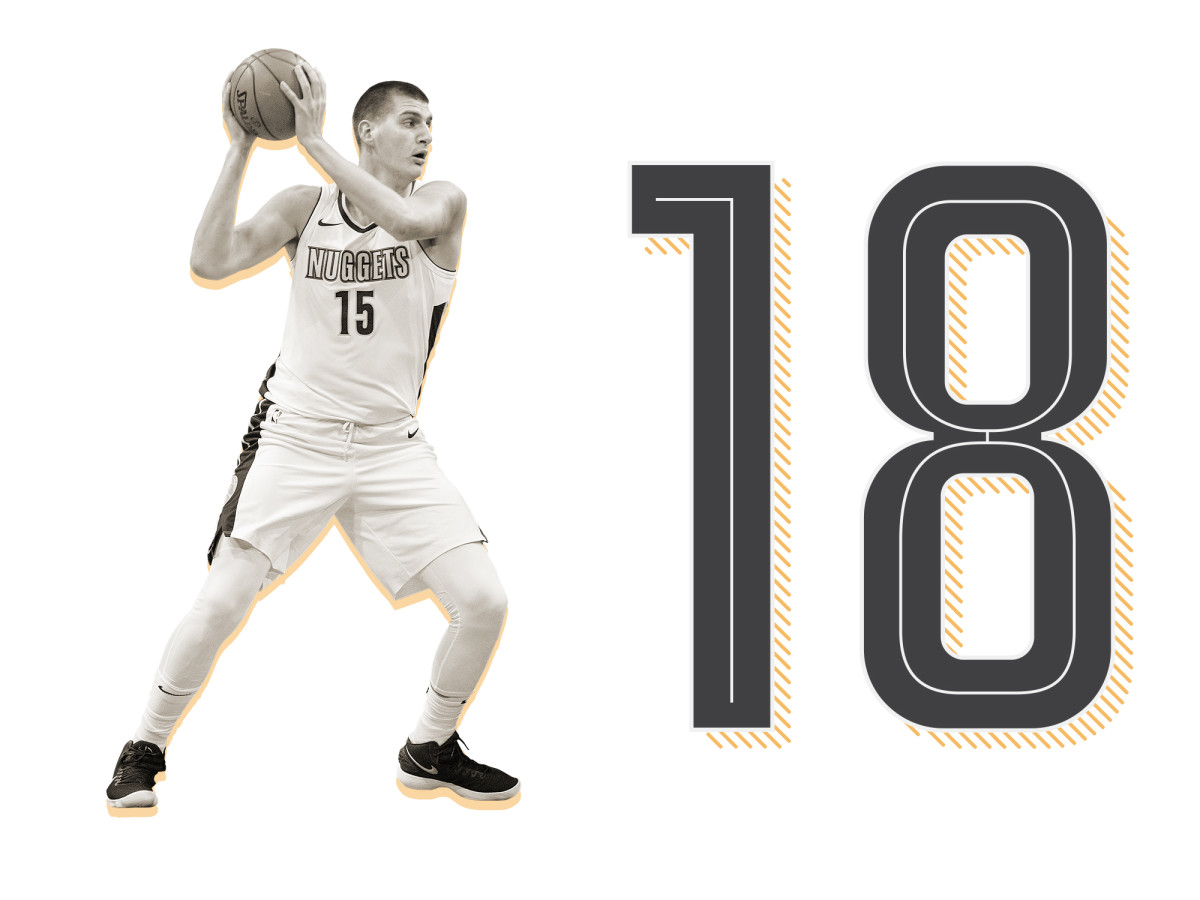
Nikola Jokic
Denver Nuggets
Jokic (18.5 PPG, 10.7 RPG, 6.1 APG) has the Midas touch, where every pass that leaves his hand fosters some golden opportunity. He’ll find a cutter well beyond the bounds of typical offense. A shooter will have a cross-court pass from Jokic drop straight into his shooting pocket, synced perfectly to an opponent’s rotation. The degree to which Jokic makes his teammates better is genuinely staggering. If you can shoot or move or score at all, his vision will all but guarantee a career year. Hell, Denver’s equipment manager probably goes on to have a productive day whenever Jokic hands over his jersey for laundry or his shoes for storage. It’s uncanny.
That rising tide reflects especially well on Jokic for the purposes of this exercise. If we assume that every player on our list is surrounded by fairly average teammates as a sort of vacuum test, Jokic is among the most likely to elevate them. A middling role player will rarely look so good as when Jokic is force-feeding them points. This was a key point of separation between Jokic and Karl-Anthony Towns in the determination of their rankings. Both rebound well, space the floor, and score at similar rates. Neither is much of a defender. Jokic, though, averaged more assists per game than any other center in the three-point era, and has the receipts to prove his passing’s effect. One could easily prefer Towns as a matter of taste, though Jokic might do slightly more for an offense at this point in their careers. — RM
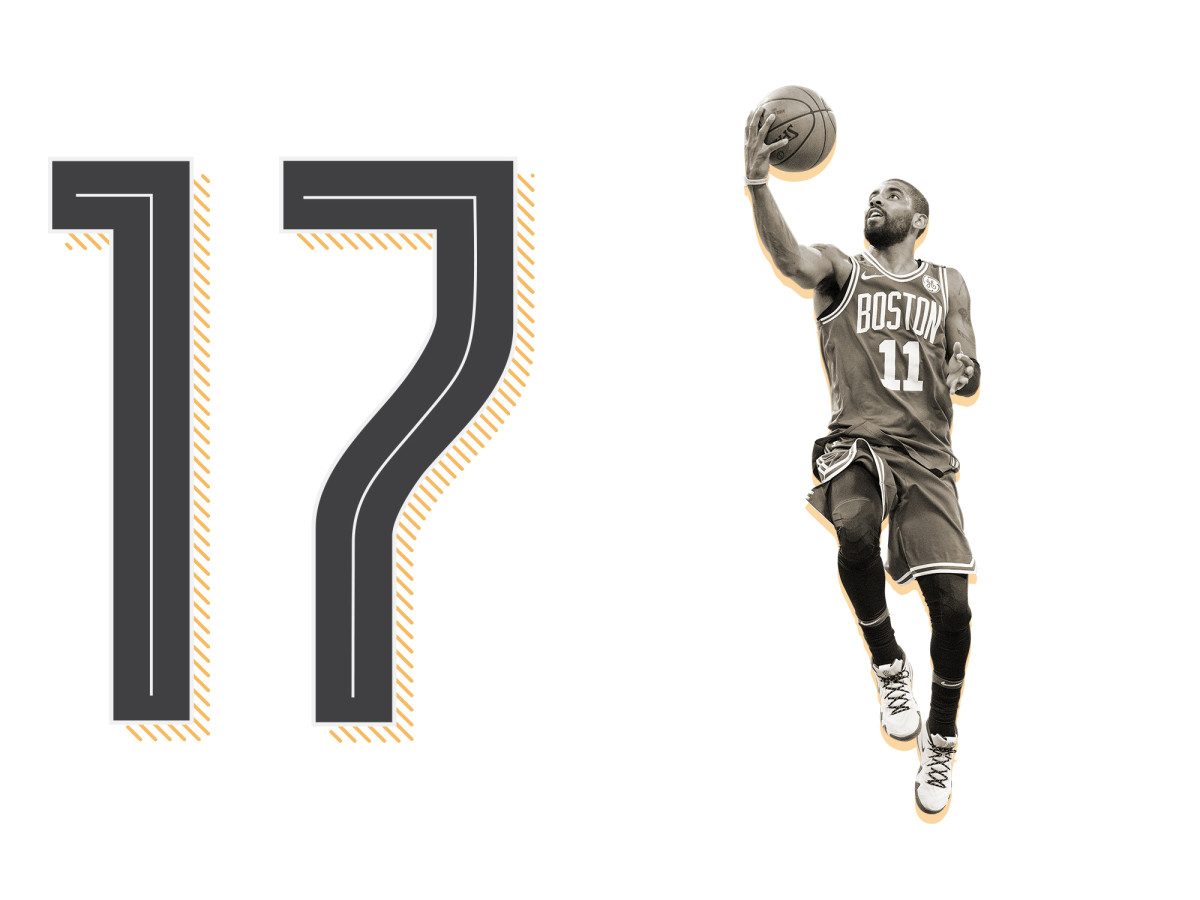
Kyrie Irving
Boston Celtics
Irving (24.4 PPG, 3.8 RPG, 5.1 APG) spent his first season with the Celtics in effortless synchronicity, right up until the deflating moment that knee complications brought it to a premature end. The five-time All-Star point guard was quick on the ball, flirting with the first 50/40/90 season of his career and thriving in space as the lead playmaker in a well-balanced attack. He was quick as a professional, landing himself on a premier franchise and a budding superteam after foreseeing Cleveland’s demise and the shifting tides in the East. And he was quick to dispel numerous criticisms that had built up during his Cavaliers tenure. Throughout a brilliant 16-game winning streak, Irving proved that he could thrive as an alpha rather than as a sidekick, that he could balance his scoring and distributing without rubbing his co-stars the wrong way, that he could be the major personality on a winning team despite his quirks, and that he could play big minutes on an elite defense.
Unfortunately, the 26-year-old Irving’s substantial personal progress, a postseason date with former teammate LeBron James, and a likely trip to the Finals all went poof when he was lost for the season in mid-March. Irving has now missed 21% of his team’s regular-season games during his seven-year career, and another injury this season would complicate his 2019 free agency. As the former No. 1 pick progresses through his prime, health clearly represents the last major hurdle separating him from an annual spot on the All-NBA teams and a consensus “Top 10” reputation. —BG
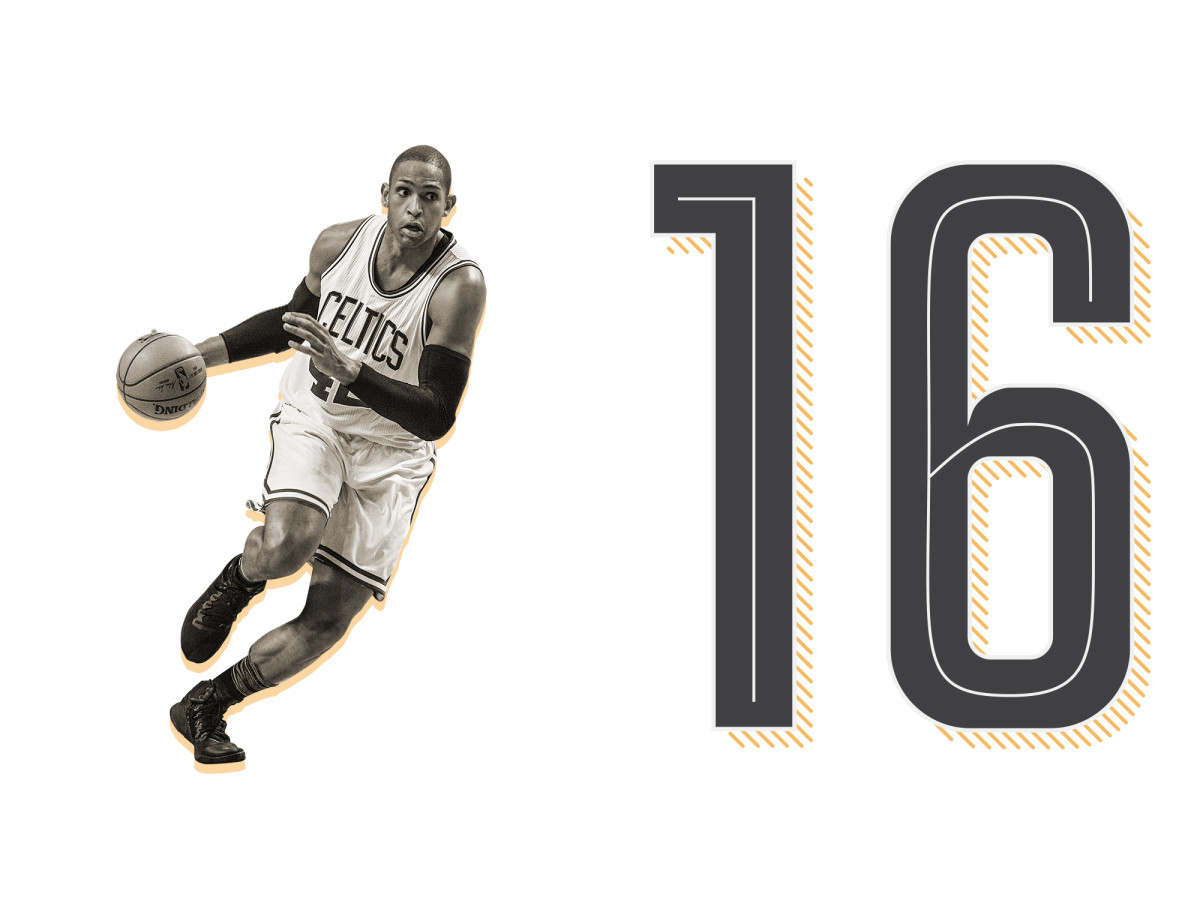
Al Horford
Boston Celtics
Horford (12.9 PPG, 7.4 RPG, 4.7 APG) is a patron saint of the Top 100, in that he embodies so many of the attributes we tend to value highly. He plays both sides of the ball without condition, and in a way that makes everyone around him better. His game is both reliable enough to anchor a team and versatile enough to allow for changes on the fly. He fits the modern game. Nothing in Horford’s style or skill set would make him a target in a playoff series. If anything, his incredible basketball literacy would poke holes in an opponent’s game plan in real time. The way he plays upholds a standard and the way he carries himself can establish a culture. Horford exudes a winning effect. He was one of the most important players in the entire league last season, and this ranking reflects that.
At the same time, evaluating the future of any 32-year-old deserves some caution—as does isolating the value of any one, particular Celtic. Horford could be at his absolute best in Boston, if only because the organization seems to value him fully. Yet even if he were playing with lesser teammates for a lesser coach, Horford would invariably raise the level of execution. He’s too smart not to. If his influence didn’t bear out through his own individual defense, it would in the way he directs traffic. Even if he wasn’t in a position to make plays, Horford would intuitively screen or space the floor for others.
From an impact perspective, Horford is only a few degrees removed from Draymond Green. Both rank among the league’s best defensive players (Horford, for what it’s worth, led the top defense overall) and augment high-functioning offenses with their playmaking. And each, in his own way, has made himself completely indispensable to one of the best teams in the league. The Celtics were forced to do without their two biggest stars last season. They marched all the way to the Eastern Conference finals regardless—because their most valuable player was still in uniform. — RM
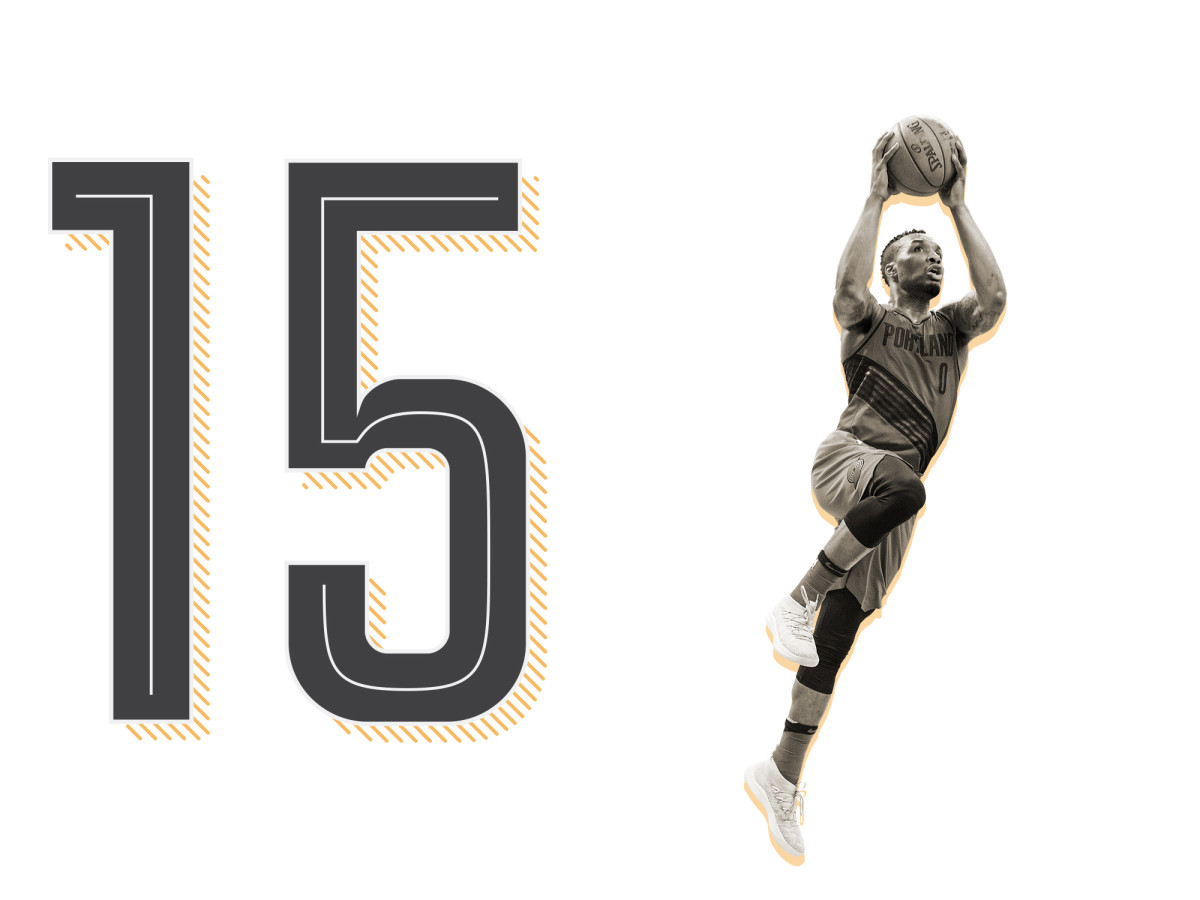
Damian Lillard
Portland Trail Blazers
After years of griping about his All-Star snubs, Lillard (26.9 PPG, 4.5 RPG, 6.6 APG) backed into a far better honor: The 2018 All-NBA First Team. For once, the murky voting criteria—stats, winning, name recognition, narrative—coalesced in his favor. The 28-year-old point guard was healthier than Stephen Curry, Chris Paul and Jimmy Butler, and his Blazers were steadier and more functional than Russell Westbrook’s Thunder. His statistical portfolio was impeccable: He ranked top five in scoring, top 10 in clutch points, top 10 in PER, Win Shares and WARP, and top 15 in Real Plus-Minus. And Lillard had a compelling story too: He was a highly-respected offensive weapon, an improved defender, and the unquestioned leader of an overachieving No. 3 seed.
By the time Lillard’s well-deserved moment in the sun was announced in May, Portland was smarting from an embarrassing first-round sweep against New Orleans. Although that series exposed Lillard’s struggles in the face of a physical trapping defense, it was a more damning indictment of his weak supporting cast.
Kyrie Irving might be a better and more exciting ball-handler than Lillard, but he’s had consistent health problems and likely wouldn’t fare much better when surrounded by lineups with two or three holes. Kyle Lowry might be more imposing and experienced than Lillard, but he’s had his own postseason struggles despite much deeper rosters around him. John Wall might be faster and more explosive than Lillard, but his shot selection and questionable leadership are unavoidable concerns. In this tier of imperfect star point guards, Lillard seems to possess the most dependable strengths and the most manageable flaws. — BG
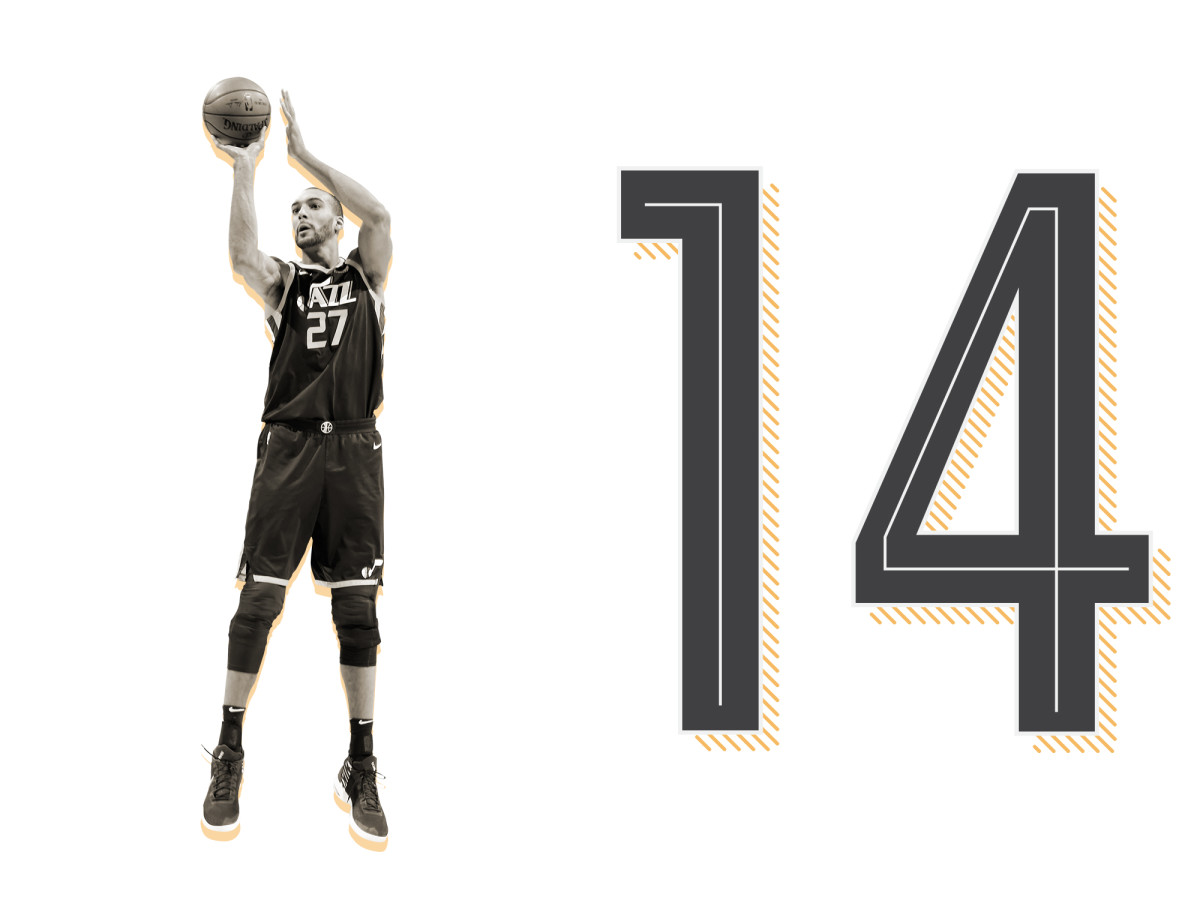
Rudy Gobert
Utah Jazz
Gobert (13.5 PPG, 10.7 RPG, 2.3 BPG) is so imposing that he actually changes the psychology of a game. Opponents with the ball in hand turn their focus inward; you can see confident players talk themselves out of shots they would ordinarily love to take, all for fear of Gobert swatting them away. Many teams will go to amazing lengths to pull Gobert away from the basket—challenging him laterally rather than vertically—but there’s only so much you can do to separate from a 7’1” shot-blocker with Gobert’s instincts. An incredible number of plays will always be in his reach.
His presence provides a sense of order, a way of life. Utah orients its entire defense around Gobert, knowing that he’ll not only influence a ton of shots himself, but give teammates license to apply their own pressure. This has a constricting effect. Passing lanes are tighter. Driving lanes are contested. It’s difficult to even work through your offense against Gobert and the Jazz, much less score. Defenders are emboldened at every turn, channeling Gobert’s confidence. Gobert plays with the sureness of a player who knows exactly what he is. There are no misconceptions to his game—no indulgent post-ups or rash dribble moves. Just no-frills, highly efficient offense predicated on putting as little space between him and the rim as possible. Cutting off his access to the basket is easier said than done; even last season’s Rockets, who switched as capably as any team in the league, couldn’t entirely deny Gobert’s rolls, cuts, and put-backs. There are some things you can never take away from a seven-footer when he’s wholly committed to playing his game. — RM
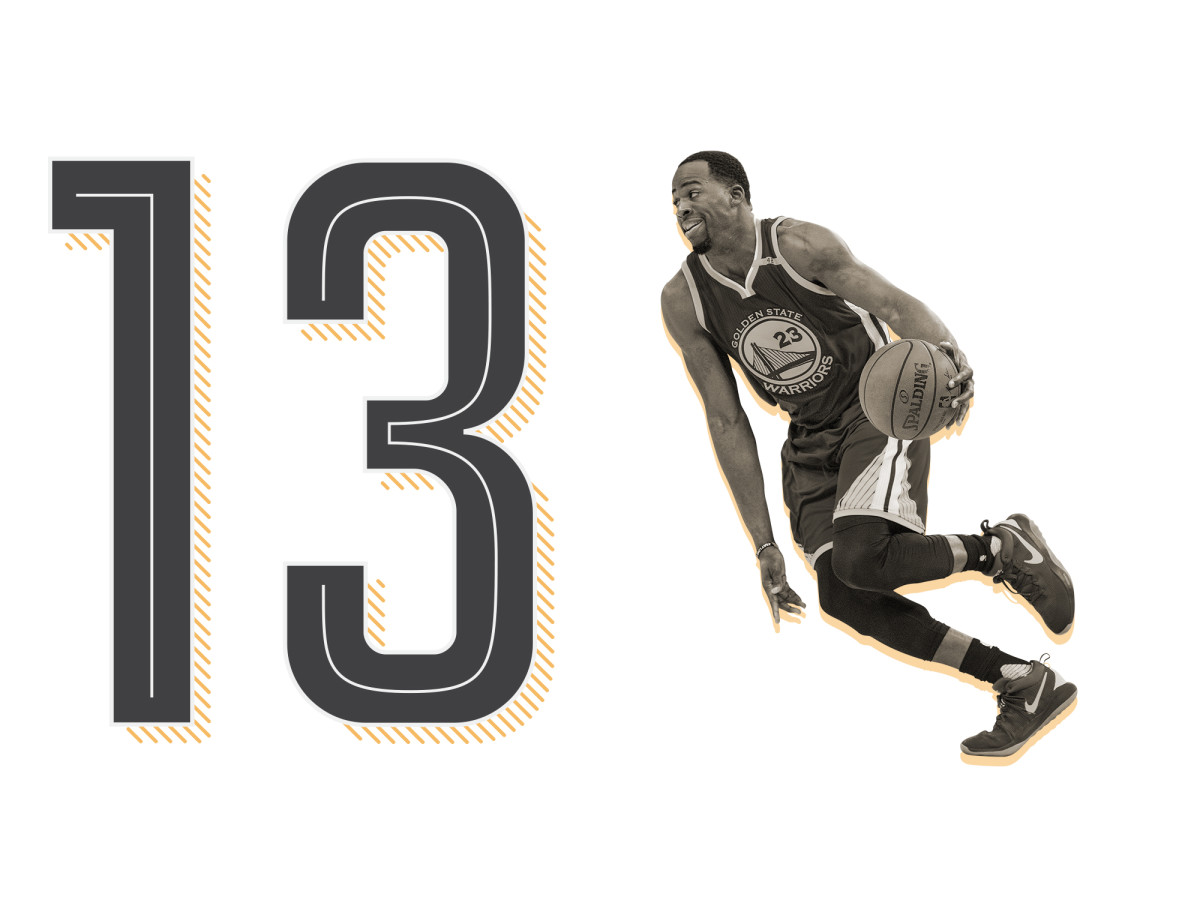
Draymond Green
Golden State Warriors
“There are 82-game players, then there are 16-game players.” The Athletic reported that bit of wisdom was delivered by Green (11 PPG, 7.6 RPG, 7.3 APG) to Golden State’s front office as draft advice, but the distinction helps explain the versatile power forward’s evolution as he continues through his prime. Now, more than ever, the 28-year-old Green is a 16-game player: a dynamic defensive mastermind who saves his best work for the playoffs.
During the Warriors’ third title run, Green played a key role in defending LaMarcus Aldridge and Anthony Davis while offering constant help on the likes of James Harden, Chris Paul and LeBron James. He led Golden State in minutes, rebounds, assists, blocks, and steals during the playoffs. His absurd 99.5 defensive rating was a major reason the champs skated through Stephen Curry’s absence, survived Kevin Durant’s choppy stretches in the West finals, and swept James out of Cleveland in the Finals. And despite being listed at 6’7”, Green led the NBA by defending 158 shots from within six feet during the playoffs. He allowed just 54.4% on those shots, a postseason rim-protection rate that’s comparable to long-armed shot-blockers like Davis and Clint Capela.
Green’s offensive utility has slipped slightly over the last two years: his three-point shooting has regressed, and his pick-and-roll playmaking has taken a backseat to accommodate Durant’s arrival. Regardless, he’s a skilled and willing passer who would be able to function as a quality secondary playmaker even if he wasn’t surrounded by All-Stars on all sides. The eye test and his impact stats agree that Green has learned to dial back his effort level in the regular season, and that’s a luxury he wouldn’t have on most teams. Then again, Green’s postseason prowess and leadership during big moments are major reasons why Golden State can get away with coasting in the first place. — BG
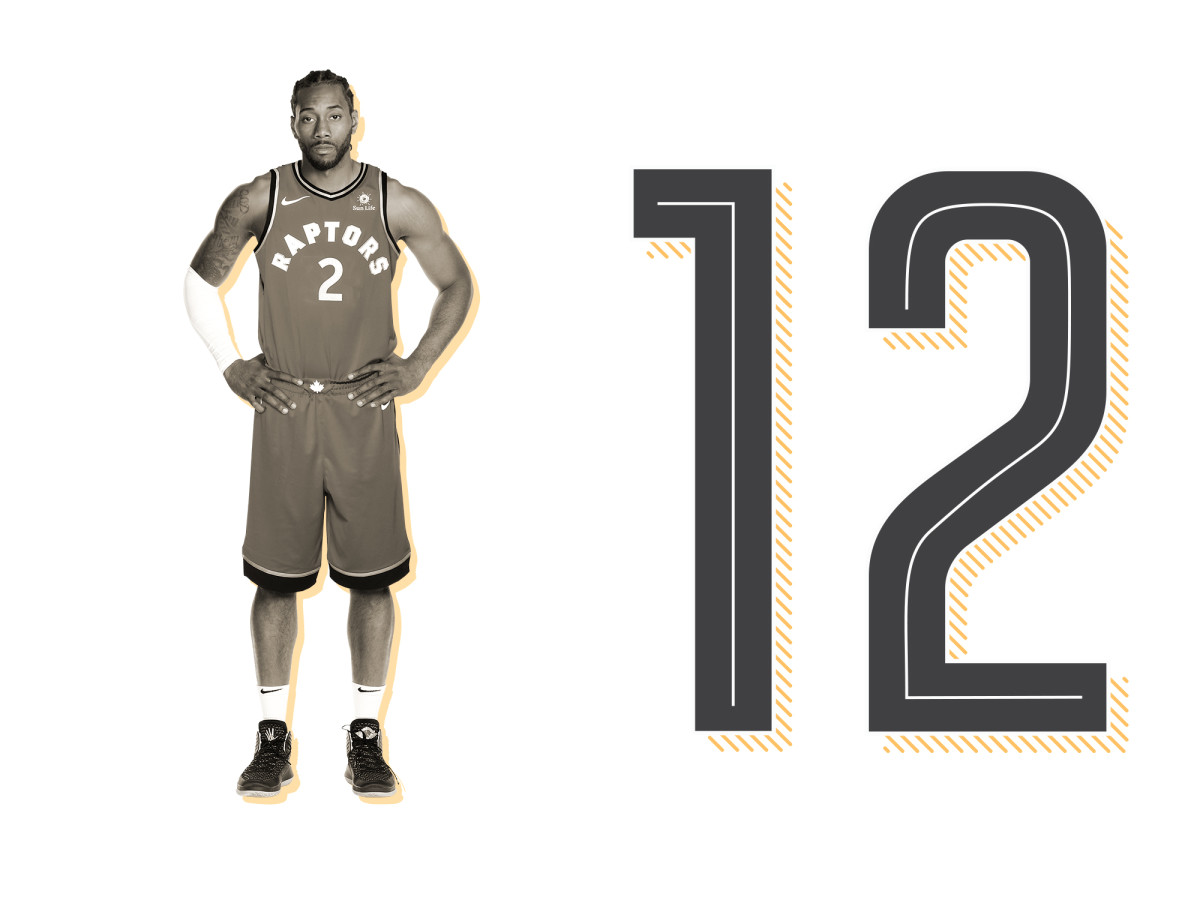
Kawhi Leonard
Toronto Raptors
Leonard (16.2 PPG, 4.7 RPG, 2.3 APG) ranked fourth on last year’s SI.com Top 100 because he possesses so many of the qualities this list aims to celebrate and appreciate: he boasts a complete and refined game, his presence makes his team better on both ends, his scoring game is multi-dimensional and efficient, he’s a premier perimeter defender, he’s a proven playoff performer, he’s painstakingly worked to eliminate his weaknesses, and his game would easily mesh with any cast of teammates. Leonard is a perennial MVP candidate, he’s the best player in Raptors history even though he hasn’t played a game yet, and he would be the best teammate LeBron James has ever had if he joins the Lakers next summer. In short, he was a 20+ points per game scorer and very nearly a 50/40/90 shooter in the same year he won 2016 Defensive Player of the Year. That is the definition of immense value on the hardwood.
Clearly, there’s a major “but…” coming now. But, at this moment in his career, Leonard finds himself needing to reestablish a quality that is essential to leadership and winning: reliability. This is a question of both health and demeanor. After playing just nine games last season, the 27-year-old Leonard has now missed 27% of his team’s regular-season games during his career. To make matters worse, he behaved in reprehensible fashion for a max-level franchise player throughout his injury absence, drawing soft rebukes and subliminal digs from his legendary coach and teammates.
Regardless of what happened behind closed doors or on the training table, Leonard is solely responsible for months of poor communication, for his ill-fated “Spur for life” press conference, and for the distracting “Uncle Dennis” chatter. He’s solely responsible for leaving his teammates up in the air about his availability in the run-up to the playoffs and for staying away from the Spurs during the postseason. LeBron James, Kevin Durant, Stephen Curry, and Anthony Davis would never behave like Leonard did because they understand and accept that being an A-list superstar requires comporting oneself like a chief executive.
While James’s move to L.A. will garner 1,000 times more attention, Leonard’s arrival in Toronto is nearly as intriguing and arguably more influential on the 2019 title picture. Will Leonard take James’s place as the East’s best player and lead the Raptors to the Finals after so many postseason heartbreaks? Or, will Leonard’s silence and loud free-agency rumors doom Toronto like they did San Antonio? How will he adjust to life under a rookie head coach after seven years with Gregg Popovich? Will a potential Hall of Fame career that launched with such promise—a Finals MVP at age 22—get back on track or derail further? — BG
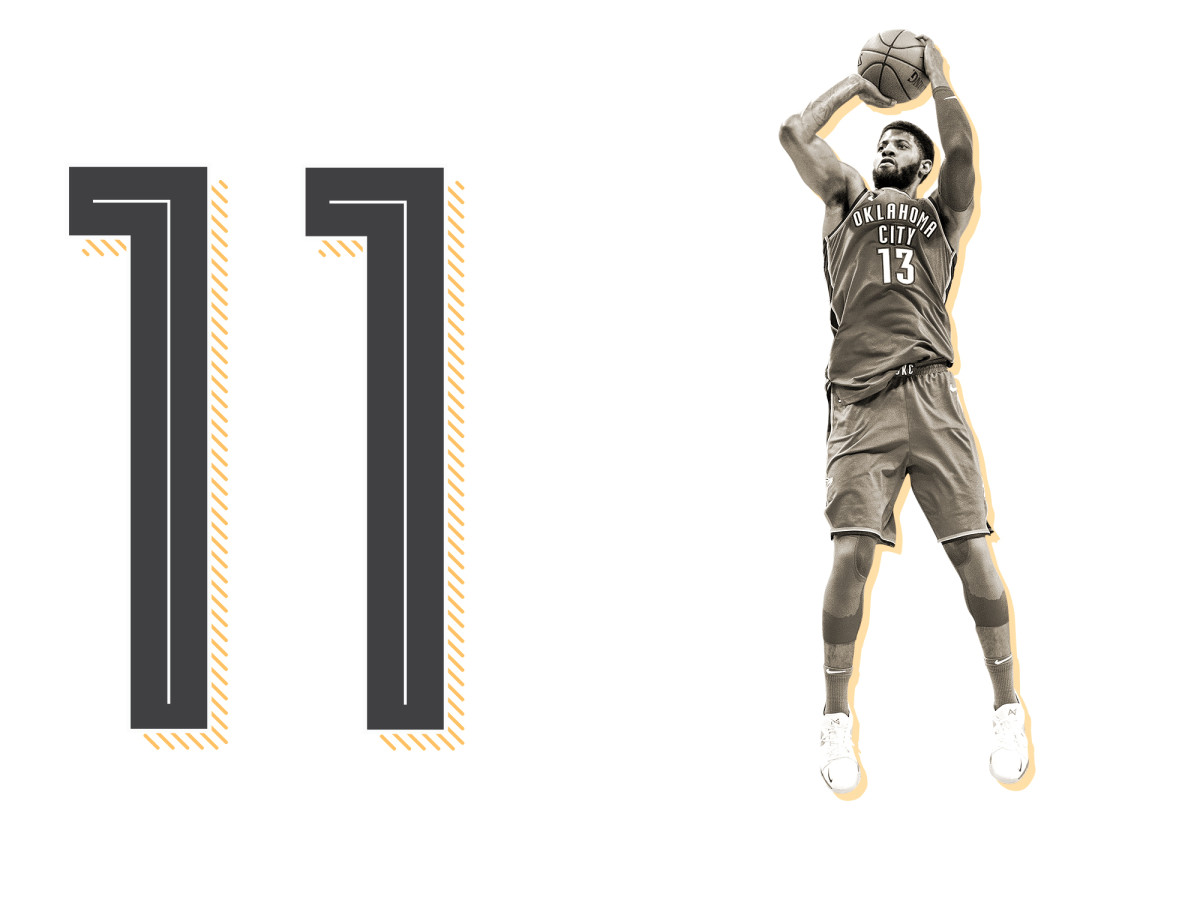
Paul George
Oklahoma City Thunder
George (21.9 PPG, 5.7 RPG, 3.3 APG) is a great shooter in a league that runs on shooting, a choice defender for some of the most difficult matchups, and a flexible star at a time when amassing talent is the only real way to compete. Indiana gave George the opportunity to lead a team of his own, which only led him to relish a day he didn’t have to. He is a star built for these times—both fully capable of taking a team over the top and fully aware of how much help it takes to win.
Playing in Oklahoma City works for him. George does his best work when he doesn’t have to handle the ball on every possession, which is never really a problem with Russell Westbrook around. Both operate in ways that make the other’s job easier: Westbrook’s shot creation is a relief to George, who can do more of his work off the ball. Meanwhile, George is enough of a draw that a defense can’t just load up against Westbrook’s drives. One pushes, the other pulls.
In truth, George could have that kind of basketball relationship with any number of stars around the league. Good fits come naturally when a scorer of George’s caliber doubles as an elite spot-up shooter. All sorts of lineups make sense when George can defend the best player across three positions. Any rotation can work when you know that George, who is perennially among the league leaders in minutes played, can handle a massive workload. If anything, George made the balance of playing between Westbrook and Carmelo Anthony look easier than it was. George’s greatest talent—among many—may be how easily he covers up the seams. — RM
10-1
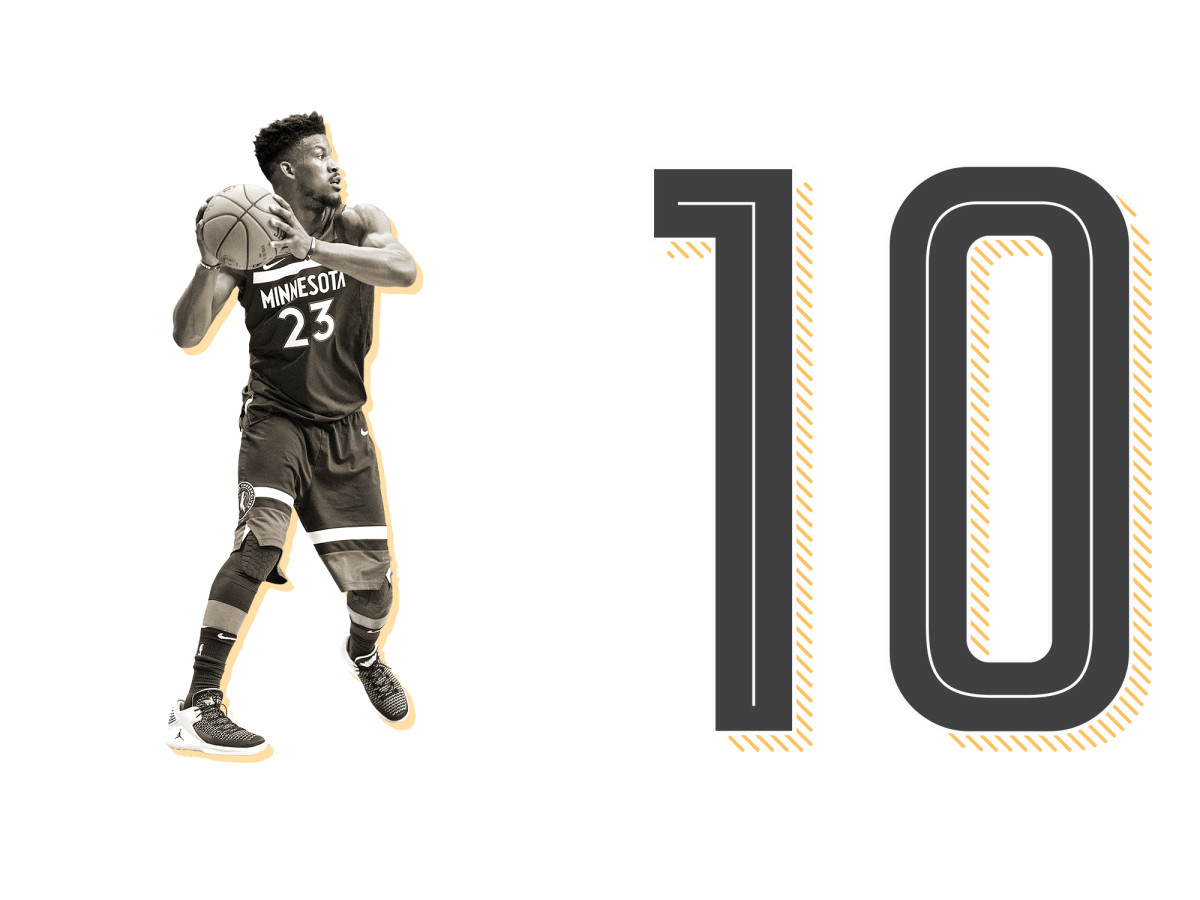
Jimmy Butler
Minnesota Timberwolves
New conference, new organization, new teammates, same Butler (22.2 PPG, 5.3 RPG, 4.9 APG). A stunning 2017 Draft-day trade to Minnesota placed the relentless 28-year-old wing in the savior role for a franchise that hadn’t made the postseason since 2004. He promptly delivered on the playoff mandate, earning his fourth All-Star selection in addition to All-NBA Third Team and All-Defensive Second Team honors. In terms of measurable impact, few superstars have rivaled Butler in recent years: he ranked fourth in Real Plus-Minus, he played a leading role in lifting Minnesota’s offensive rating to fourth in the NBA, his presence on the court swung Minnesota’s net rating by a whopping 12.8 points, and his team nearly fell to pieces when he missed more than a month with a late-season knee injury.
Butler, like Russell Westbrook, predicates his game on force of will. When he arrived in Minnesota, there was hope that he would pair with Andrew Wiggins to form one of the league’s top perimeter duos. Instead, the two wings emerged in sharp contrast: If Wiggins’s empty minutes were a watery broth, Butler’s were a chunky stew. Butler seeks out the heavy lifting, whether it’s drawing contact to force his way to the foul line, hawking the opposition’s best player, or taking control of the offense late in close games. His methods work—to a point. With Butler on the court, the Timberwolves were tracking to the West’s No. 3 seed, going 37-22 (a 51-win clip). Without him, they went 10-13 (a 36-win pace) and certainly would have been lottery-bound.
But turning over a franchise to Butler is a bargain with strings attached. His all-gas, no-brakes style of play has caused him to miss an average of 15 games over the past five years, and his biting impatience with his teammates has generated problematic headlines in Chicago and Minnesota. The former role player has completely rewired himself as an alpha scorer since his breakout 2014-15 season, but there are real questions about how far he can carry a team in the playoffs. Butler has advanced in the postseason just once since rising to stardom, and he will need to make it through the regular season unscathed from a health standpoint if he wants to win a series in the West.
Comparing Butler and Paul George is annually one of this list’s toughest calls, given their quality two-way games and similar accomplishments. While Butler is a more effective No. 1 option thanks to his punishing style and playmaking ability, George is the superior outside shooter, fits more cleanly alongside star players as an elite No. 2, and has enjoyed better health. Ultimately, the quality of Butler’s minutes won out: he beat out George in PER, Win Shares, Real Plus-Minus and WARP while playing a more central role in his team’s success. If Butler’s injury issues resurface, though, he will be headed for a tumble in next year’s rankings. — BG
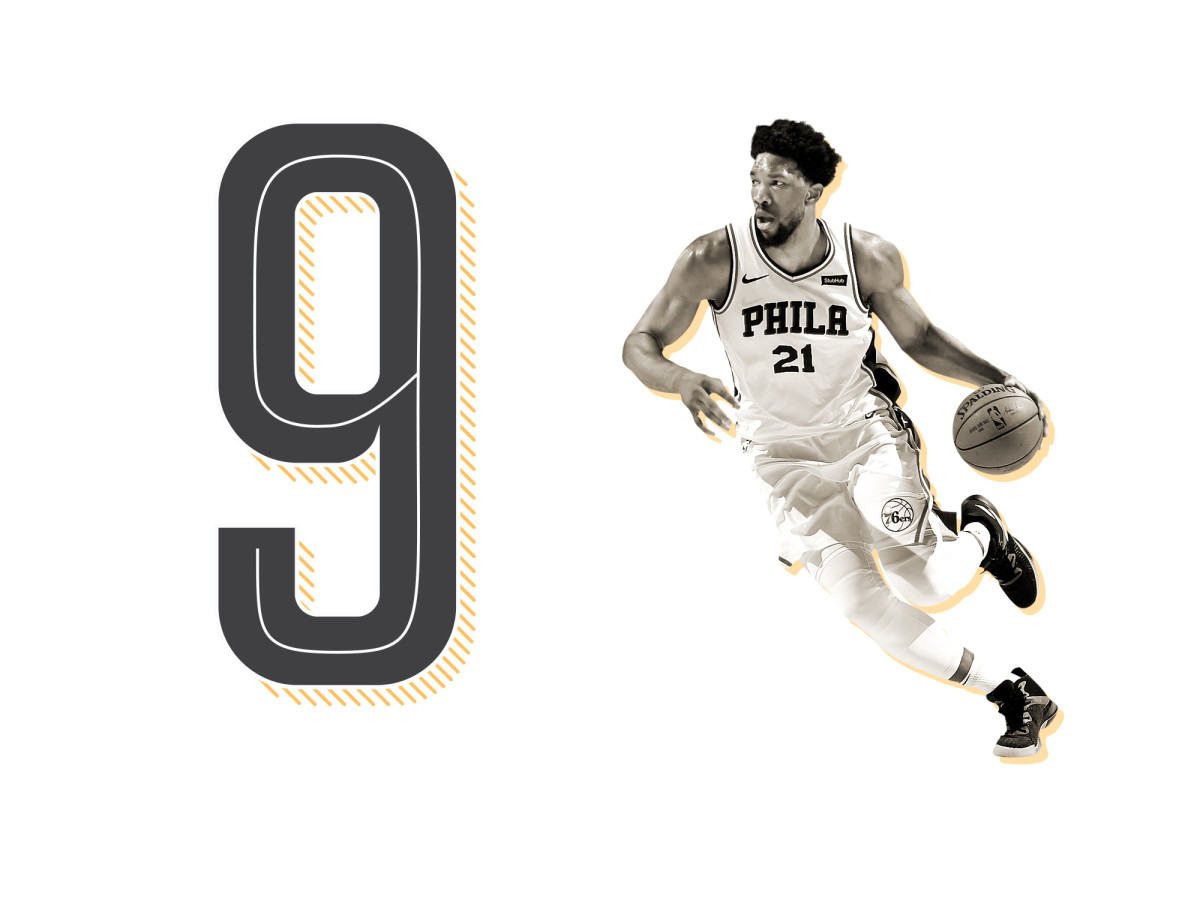
Joel Embiid
Philadelphia 76ers
It’s rare to see a player already in the running for Defensive Player of the Year developing at such a rapid rate. Embiid (22.9 PPG, 11.0 RPG, 3.2 APG) is a sponge. The nuances of professional play are still so new to him, yet instinct guides Embiid to positions of particular impact. He has a natural aptitude for rotation, which involves reading the floor and timing out plays as they progress. Opponents are terrified of him, which buys Embiid time; players take such a wide berth around him and use so many pump fakes that Embiid has a longer window than most to get where he needs to go. Even at this stage, he all but guarantees an elite defense. Imagine how good Embiid could be when he actually knows what he’s doing.
It’s that trajectory that makes Embiid, who stands to improve more than any other player in our Top 10, so difficult to rank. Anthony Davis and Giannis Antetokounmpo could add to their games, but not so much as a center with limited experienced in organized basketball set to play his third NBA season. There are still noticeable hitches in Embiid’s game that could be ironed out, from the way he deals with double teams to his gutsy shot selection his carelessness with the ball. Embiid is a thoroughly dominant work in progress, which should come as a terrifying prospect to the rest of the league. There are few players capable of credibly guarding Embiid as it is. Things could really take a turn as his play elevates; we’re not far from Eastern Conference contenders stocking some big-bodied “Embiid stopper” by necessity.
The caveat to all this, of course, is Embiid’s health. We have yet to see him play more than 63 games in a season, which came in what was easily Embiid’s healthiest campaign to date. It helps his case that so many other top players (Kawhi Leonard, Chris Paul, and Jimmy Butler, in particular) tend to miss between 15 and 20 games on average. Their own injury histories work as an equalizer. There’s more worry with Embiid because of his size and the chronic nature of his injuries, but this lists forecasts for a single season based off the healthiest Embiid has ever been. Allow, at least, for the possibility that the Sixers can be cautious with Embiid and still have him in uniform for around 65 games. — RM
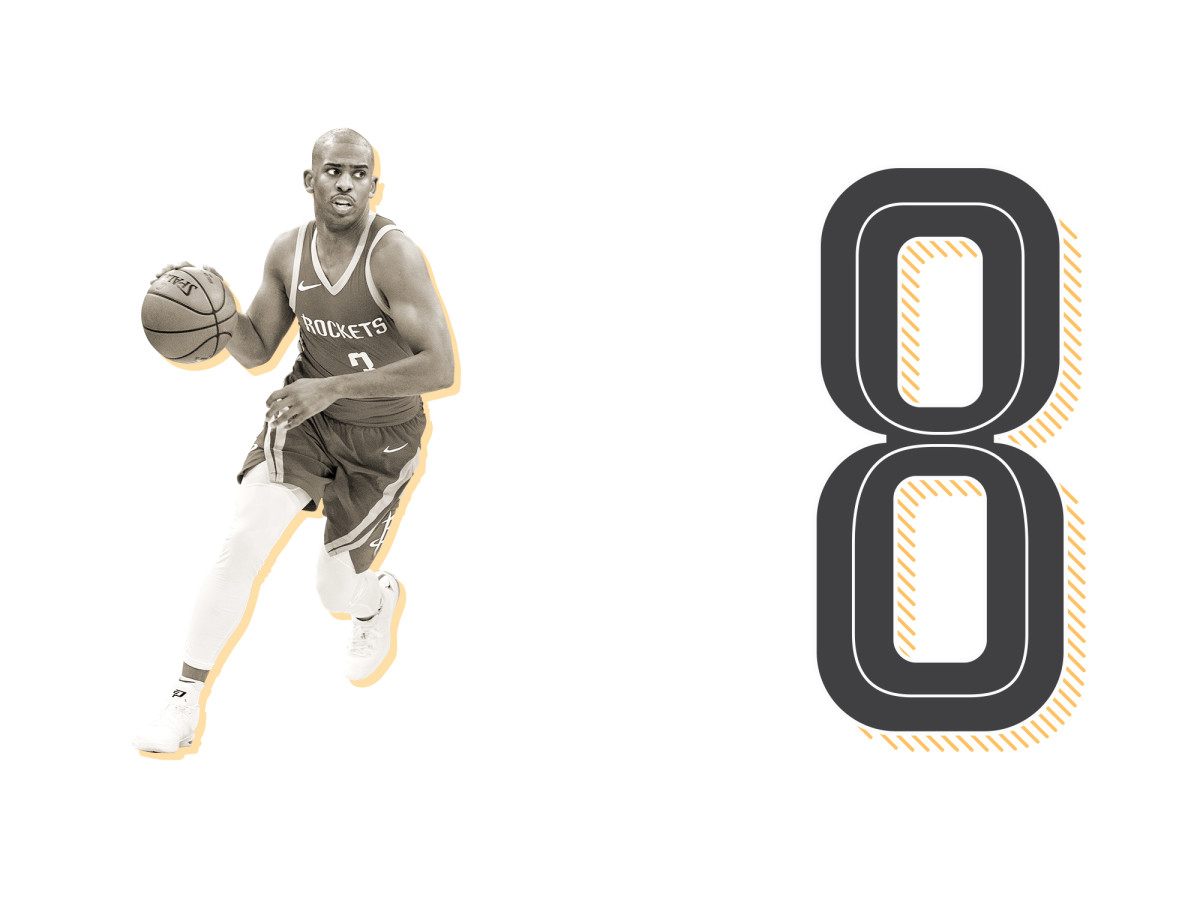
Chris Paul
Houston Rockets
The implicit framing of the Top 100 is this: Who are the players who really matter in the games that matter most? Paul (18.6 PPG, 5.4 RPG, 7.9 APG) jumps near the top of the list—not because he happens to play for one of the best teams in the league, but because he’s exactly the kind of player you want involved when your season is on the line. Houston knows this well, having built a 3-2 series lead against the Warriors thanks to Paul’s gutsy play and then having dropped the last two games of the series in his absence. On the one hand, Paul’s tendency to pick up injuries clearly works against him. On the other, Paul is still operating at such an incredible level that some missed time is tolerable. You make do when a player is operating this close to an MVP level, even if he misses 24 games along the way.
Paul earns this standing with the way he picks apart opponents. What a miserable thing it must be to step up, as a big man, against one of Paul’s pick-and-rolls. React to any of Paul’s feints and he’ll rock back into an easy mid-range jumper. Try to play it cool and he’ll drive past you, winding around the court in search of any vulnerability. Paul is such a high-level passer and defender that his one-on-one brilliance somehow went unnoticed. No more. Houston’s offense reached its historic heights in part because Paul can almost always get his, a genuine rarity among guards his size. Even though he plays alongside another great passer in James Harden, only 15% of Paul’s field goals last season were assisted.
It was because of that creative strength that the Rockets could stagger the minutes of their two best players, overwhelming opponents with 48 minutes of offensive pressure. Paul’s approach is quite different than Harden’s, but he runs similar lineups to great effect. For one, he scored as much on a per-minute basis as at any point in his career—even while barely getting to the rim or the free throw line. More important is that Paul always seems to know which levers to pull for the best possible result. Houston’s system relies on Paul ability to generate offense for himself, but he’s always at his most comfortable orchestrating for others—guiding his teammates into scoring positions and mismatches that best fit the moment.
There’s no real substitute for that level of situational awareness, which enables Paul to function effectively in any lineup and in any style. There is no matchup on earth that could play him off the court, or even make him a mark. Target Paul at your own risk. This is a guard who can hang with Kevin Durant on the block in a pinch, and who can go shimmy for shimmy with Steph Curry. No matter the challenge, Paul is game to compete. — RM
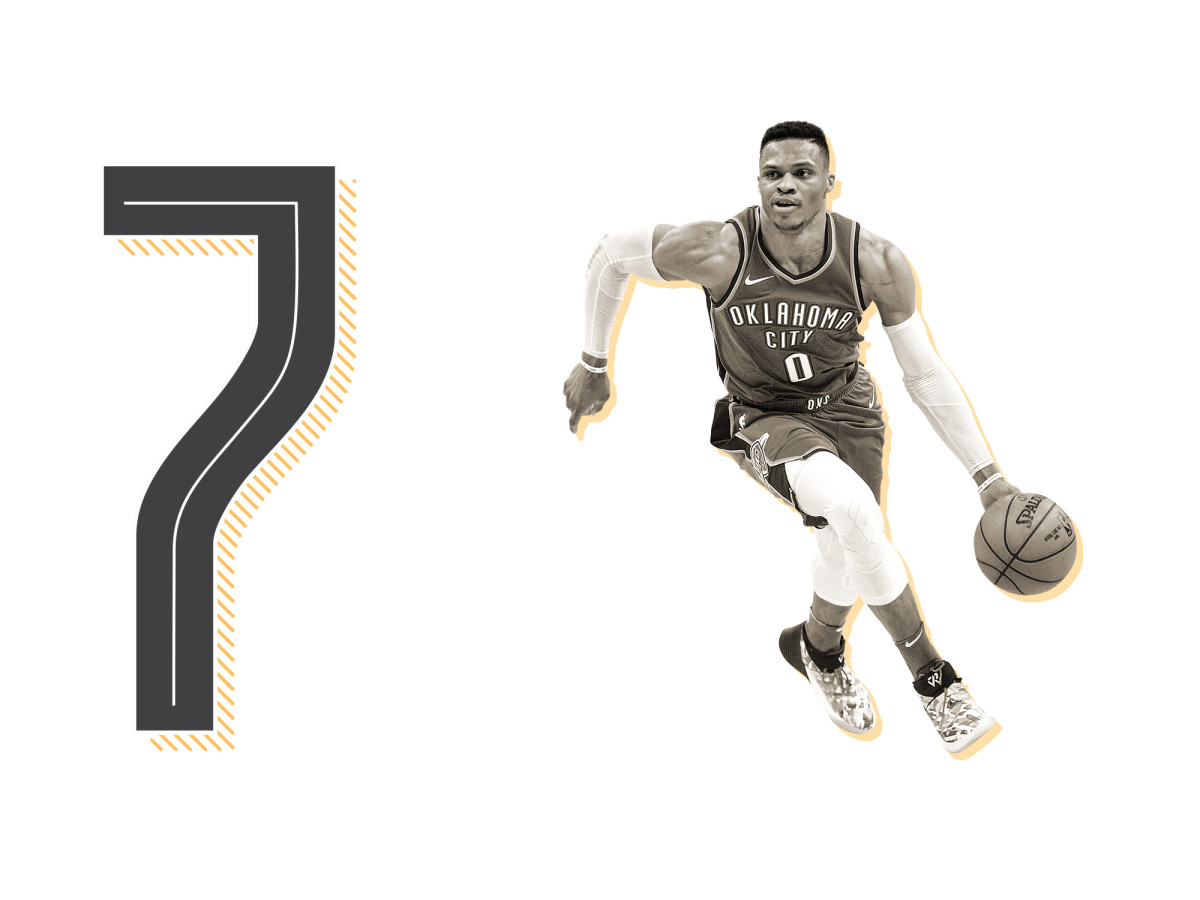
Russell Westbrook
Oklahoma City Thunder
Note: Westbrook’s rank was determined before the announcement of his most recent knee surgery.
Say what you will about Westbrook, but the man shows up. When his team’s season is on the brink, Westbrook will take every damn shot necessary to keep things afloat. While other players awkwardly feel out the dynamic of a playoff series, Westbrook charges in, forcing everyone on the court to respond to him. It’s almost incomprehensible that someone who drives as hard as Westbrook could be as healthy as he’s been prior to undergoing knee surgery this week. Durability is a skill in itself, and Westbrook—even as his legend grows—doesn’t get nearly enough credit for his availability in the wake of hard fouls, harder falls, and freaking dents in the side of his face.
Simply employing Westbrook gives a team an unquestionable identity. No superstar in the league brings such consistent effort; although there are plenty of faults to find in Westbrook’s approach, you could never accuse him of coasting. Teammates tend to follow suit, giving the entire outfit a relentless, combative style. If you’re not ready to play, Westbrook will run you off the court. It’s perfectly understandable why some stars would pace themselves for the playoffs, though there’s value in a player like Westbrook bringing force to every game of the regular season.
There remains some debate, however, as to what far-reaching effects Westbrook’s style might have on a roster. For any one player to dominate so many of his team’s possessions must come at a cost. Westbrook is similar to LeBron in that way. Playing alongside either can be a great gig for a specialist. The more narrow your game, the more Westbrook can do for you. Dynamic players, however, don’t always have the easiest time fitting in. Westbrook takes up so much oxygen that he makes it hard for other players to really blossom. It’s not exactly a coincidence that the Thunder never really seem to know how to function without him. Westbrook is such a force of game and personality that he becomes completely integral. If his team struggles without him, it’s in part because he made it that way.
The good with Westbrook far outweighs the bad, but with his style comes a certain ceiling. Playoff teams can turn his ferocity against him. Defense still seems like an exhibition to Westbrook, a battle between players rather than teams. Patience—the primary currency of postseason problem solving—isn’t exactly his strong suit. And it’s all because Westbrook, for better or worse, only knows one way to play. — RM
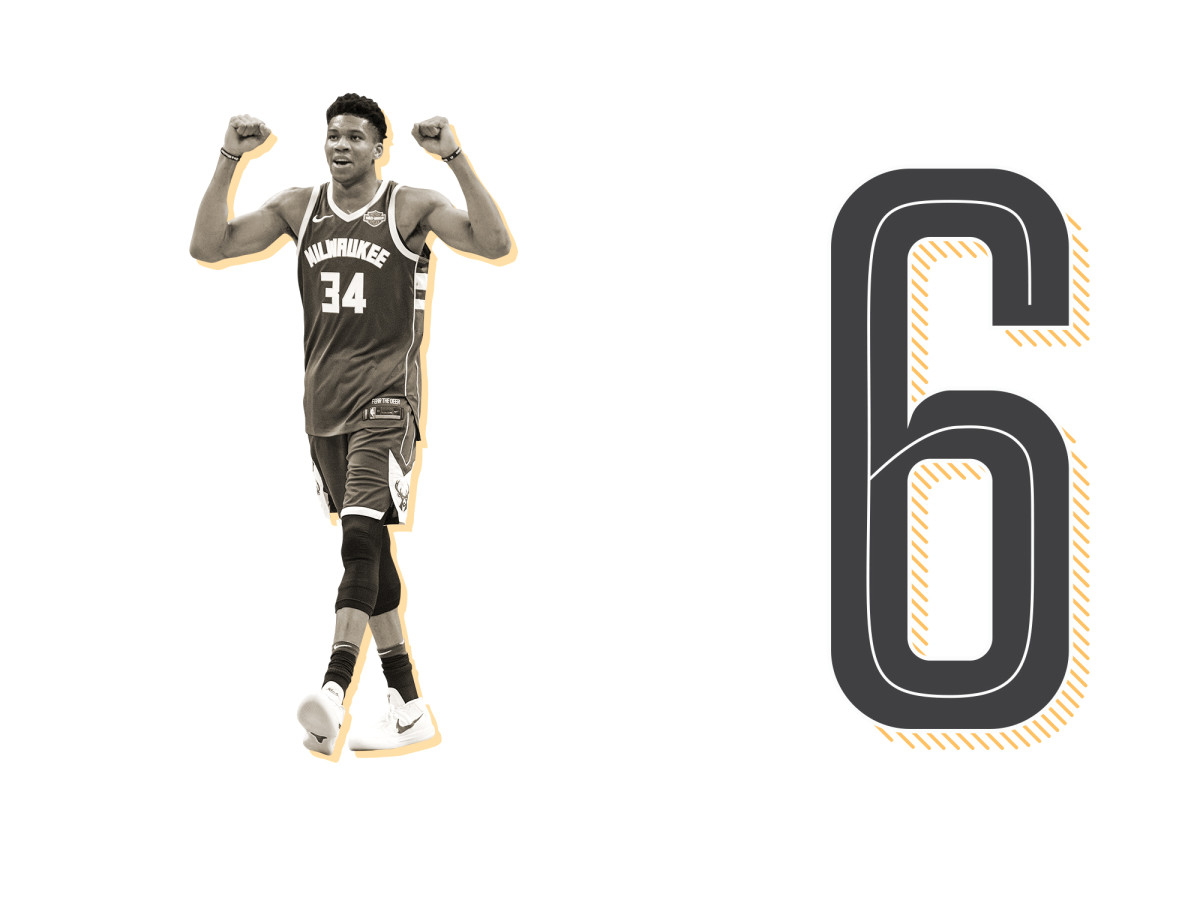
Giannis Antetokounmpo
Milwaukee Bucks
It’s easy to get distracted by Milwaukee's lack of playoff progress or lose sight of the big picture after watching his impossible highlights for three years, so here’s a simple, zoomed-out reminder: Antetokounmpo (26.9 PPG, 10 RPG, 4.8 APG) is the best story in basketball. At 18, he was a nobody whose Greek league games were captured only on grainy video. At 19, he was drafted outside the lottery and spent his rookie season looking lost. By 22, he had cracked the All-Star and All-NBA teams and was named Most Improved Player. Now, at 23, Antetokounmpo is a certified global sensation, finishing sixth in 2018 MVP voting, drawing nearly as many All-Star votes as LeBron James, earning a signature shoe deal from Nike, and getting the full feature treatment from 60 Minutes.
The longer one marinates on Antetokounmpo’s impossible rise, the more it feels like he’s won the NBA version of Powerball four times in a row. There is one major difference: Antetokounmpo’s extreme good fortune has been supplemented by extreme diligence to his craft. Step by step, Antetokounmpo has built himself into an alpha scorer by honing his ball-handling skills, committing to an attack mentality, living on the free-throw line, learning how to use his length to generate high-quality looks around the basket, and adding strength so that he can finish over and through anyone in the league. Indeed, nearly half of Antetokounmpo’s shot attempts last season came from within three feet, and he finished more than 75% of them. “He’s impossible to guard,” Celtics coach Brad Stevens said during the playoffs, with evident admiration and a shake of his head.
It’s only going to get worse for Stevens and his fellow coaches. Antetokounmpo’s feel as a playmaker has room to improve, as does Milwaukee’s spacing around him. The Bucks ranked seventh in offense last season, and they have the potential to be a top-three unit during Antetokounmpo’s prime years if they can consistently surround him with four shooters and get him loose in the open court more often. Of course, there’s also the persistent hope that Antetokounmpo can extend his range, which at present includes a passable mid-range game and limited three-point proficiency. Antetokounmpo with a trustworthy jumper would be a whole new flavor of impossible.
In both his offensive strengths and limitations, Antetokounmpo somewhat resembles the man behind him on this list, Russell Westbrook. Although the Thunder’s point guard has gaudier individual stats and significantly more playoff success, Antetokounmpo is the more complete player thanks to his defensive impact and versatility. At this point, Westbrook’s massive offensive role comes packaged with major compromises in consistency and discipline on the other end. Not so for Antetokounmpo, who switches comfortably through four positions, competes hard on the defensive glass, and contests shots in the basket area more effectively than many starting centers. The bet here is that Antetokounmpo’s sharp ascent will continue with a 2019 postseason breakthrough, turning what is now a tight debate between him and Westbrook into a much easier call by next September. — BG
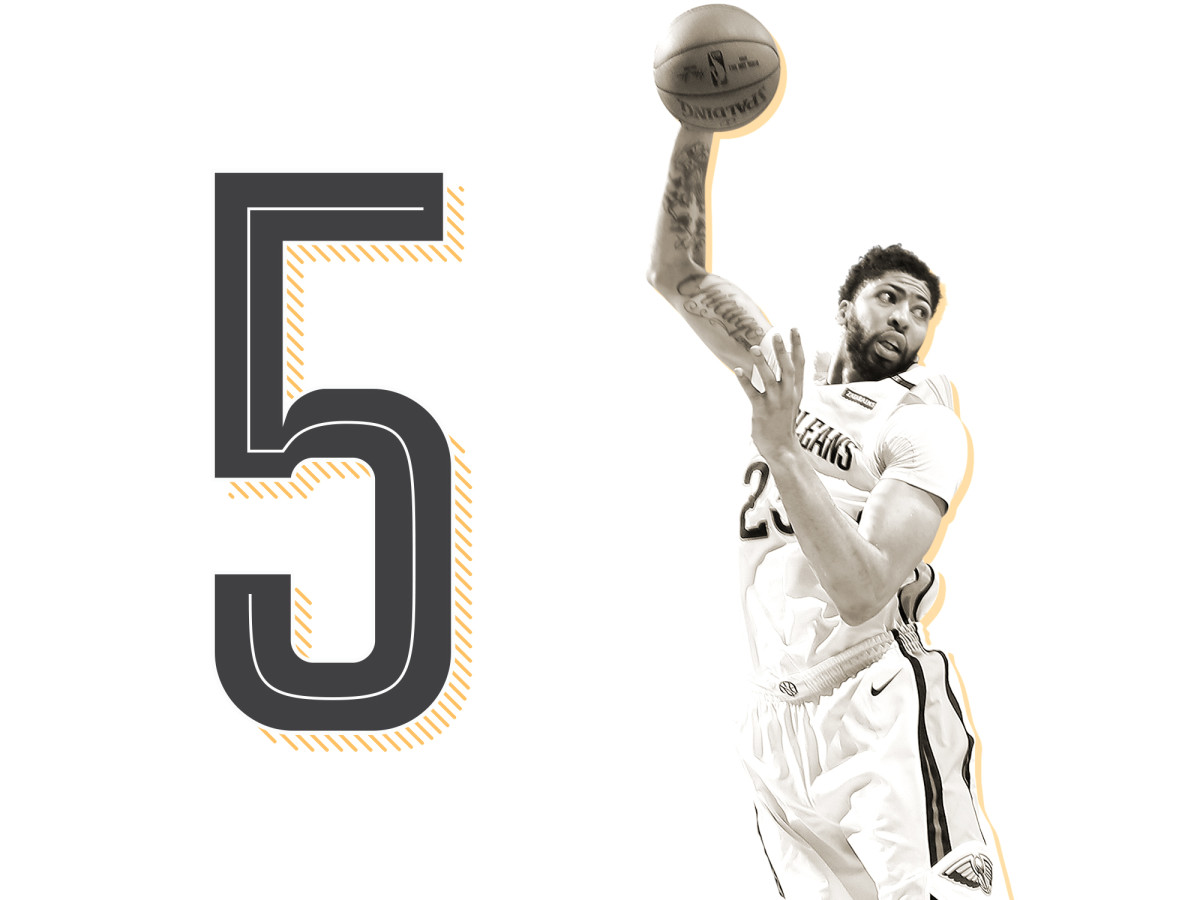
Anthony Davis
New Orleans Pelicans
There’s a case to be made for Davis (28.1 PPG, 11.1 RPG, 2.3 APG) as the third- or fourth-best player in the league, and it goes like this: No other player—not LeBron James, not Kevin Durant, not anyone—is so consistently dominant on both sides of the ball. Davis could win Defensive Player of the Year while leading the league in scoring. He could be the captain of a top-five offense, the anchor of a top-five defense, or both. We’re nearing the pantheon days of Davis’s career—the beginning of his entry as an all-time great player, beginning with his MVP candidacy in the season to come.
The pushback is largely a matter of respecting accomplishment. Stephen Curry and James Harden not only have all the markers of elite play, but a deeper superstar body of work and the postseason receipts to validate it. You don’t wave off two of the best offensive players in NBA history just because Davis is better than he’s ever been. A certain level of respect is owed—particularly when both Curry and Harden do so much to make their teammates’ lives easier.
If there is any slight against Davis, it’s that his position makes it hard for him to touch as many possessions as a player like Curry or Harden. Guards who can initiate offense will always be slightly more accessible. Passing gives both a direct means of influencing a play’s outcome, to say nothing of the gravity they exert idly. Davis doesn’t really have that in his game, and that’s fine; allowing others to handle the ball frees Davis of the responsibility, allowing him to instead use his speed to its greatest advantage. Opposing bigs are at a loss when they’re forced to chase Davis, a 6’10” gazelle, around staggered screens to contest his jumper. You can use Davis in all the ways you’d use a high-scoring wing, save that he also has the face-up game to rule the mid-post and the finishing ability to dominate out of the pick-and-roll. There is very little on a basketball court that Davis can’t do.
Part of what makes Davis so widely useful is that his shots are so difficult to contest. There aren’t many players who can meet Davis at the rim and make any kind of difference. When he goes to the block, he can’t be pushed around. Davis is taller and stronger than most of the players who guard him, and he understands how to put space between himself and his defender. How can one even combat that? To guard Davis is, really, to be at his mercy. You could transplant his skill set to any roster in the league and find room for him to thrive. Any coach running any system could build its concepts around Davis. His stardom is situation agnostic, and completely undeniable. — RM
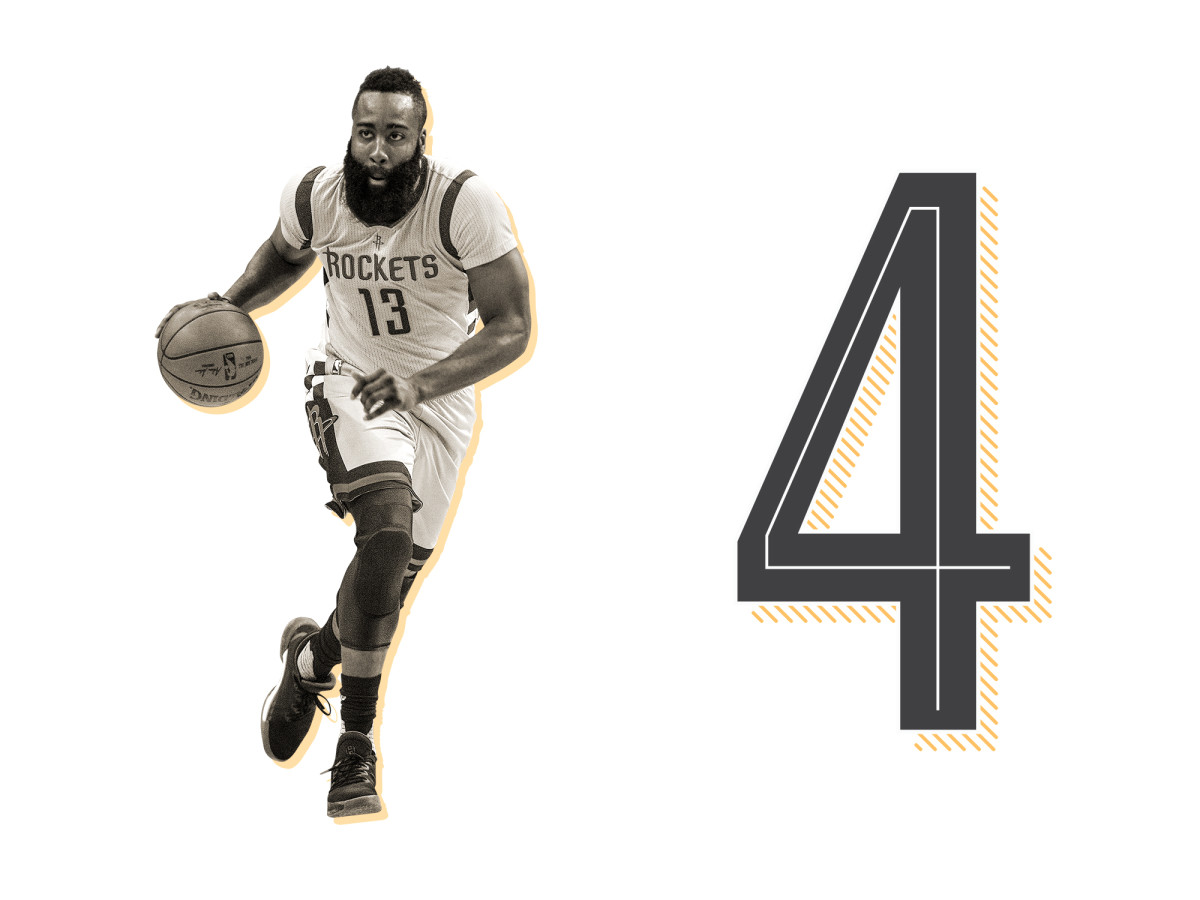
James Harden
Houston Rockets
The signature moment of his first MVP campaign came in late-February, when Harden (30.4 PPG, 5.4 RPG, 8.8 APG) set up one of his trademark step-back threes with a between-the-legs dribble that sent Wesley Johnson to the floor. While the Clippers forward scrambled to collect his limbs like he had just lost a game of “Twister,” Harden paused, relaxed his shoulders, and spun the ball while looking at his latest helpless victim. His body language screamed: “What are you doing down there?” Harden then proceeded to drain the three to complete the most emasculating highlight of the season.
Harden has been an All-NBA level player and one of the league’s premier scoring threats for years now, but last season saw the 29-year-old guard at his most diabolical. With a new superstar playmaking partner, shooters on all sides, and an excellent lob finisher in the middle, Harden had everything he needed to carve up defenses with his ultra-efficient diet of threes, free throws and lay-ups. He tortured defenders like Johnson in isolation with his methodical crossovers, alternating between his hop-back jumpers, gliding runners, whizzing crosscourt passes and soft-touch alley-oops.
When the dust settled, Harden ranked first in scoring, first in PER, first in Win Shares, first in free throws made, first in three-pointers made, second in Real Plus-Minus, and second in WARP. He led the league with 11 40-point games, four 50-point games and a 60-point game. Meanwhile, his Rockets set a franchise-record with a league-best 65 wins, ranking first in point differential and second in offensive efficiency while missing their first Finals trip since 1995 by one win. That breadth of high-level achievement is only possible when a methodically-constructed machine has years to address its weaker links and fine-tune its output.
A full and fair review of the Rockets’ 2018 postseason would note that they breezed through the Timberwolves and Jazz as Harden, who had three 40-point games in the postseason, and Chris Paul took turns wreaking havoc. Additionally, Houston gutted out a pair of tight wins over Golden State in the West finals, with Harden scoring 30 points on the road in Game 4 to right the ship after an ugly blowout.
For most observers, though, those accomplishments—which represented clear progress from previous postseason runs—were easily forgotten in the wake of Houston’s disastrous Game 7 collapse. Harden’s critics now had “Houston missed 27 straight threes” to add next to “2-11 in Game 6 against San Antonio” and the other demerits on his uneven postseason résumé.
Although their agonizing Game 7 meltdown was impossible to explain, Harden and the Rockets left this season with proof that their approach was good enough to win a title. They pushed the Stephen Curry/Kevin Durant Warriors much harder than any other playoff opponent had over the past two years, and Harden performed with greater ease, stability and effect against Golden State’s defense than he had in the 2015 West finals. LeBron James has a higher basketball IQ and displays greater consistency in the playoffs than Harden, Durant is a more complete two-way player, and Curry is one of the few stars in league history whose individual offense can translate to more efficient team play. Those three aside, Harden has fashioned himself into basketball’s most dangerous weapon. — BG
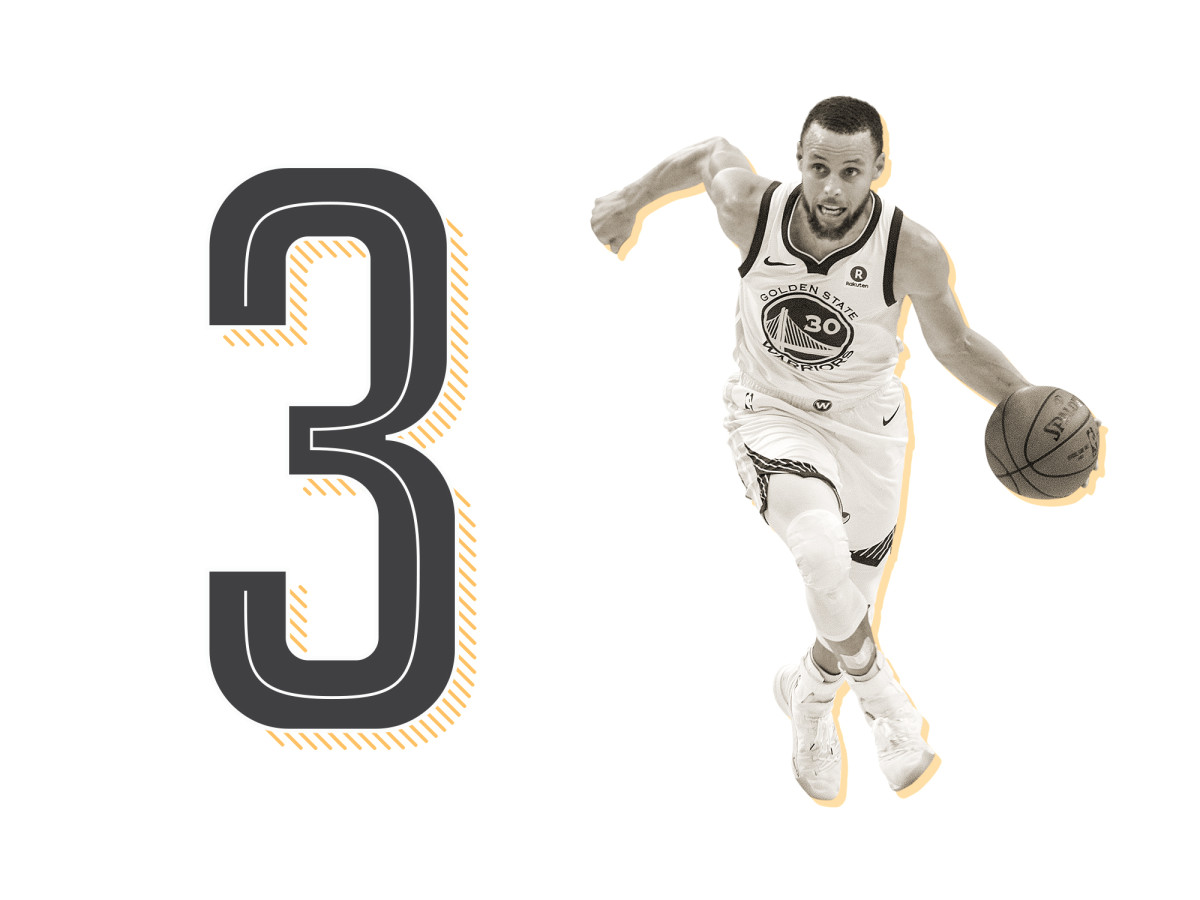
Stephen Curry
Golden State Warriors
You know the standards with Curry (26.4 PPG, 5.1 RPG, 6.1 APG) are well and truly out of control when a 50-40-90 championship season is met with a collective yawn. This is just par for the course when you’re the superstar at the heart of one of the greatest teams of all time, not to mention the very reason for that team’s existence. Kevin Durant would not have come to the Warriors if not for Curry. It was the environment that Curry had helped foster that enticed Durant in the first place, and it was Curry’s willingness to accommodate Durant that sealed the deal. A dynastic team was born because Curry is exceptional even among superstars.
When Curry has been on the court during the Steve Kerr era, the Warriors are 244-45 (.844)—a perpetual 69-win pace. That’s four straight years of winning more than players like Harden or Davis ever have, all while the Warriors shuffled through centers, retooled their bench, and dealt with Kerr’s extended absence. Curry isn’t solely responsible for that success, but he is driving it. One can develop a deep appreciation for Curry by watching how the Warriors play without him; there’s too much talent in Golden State for things to turn disastrous, but Curry’s absence reveals all the subtle ways in which he makes championship play look easy. For starters, even a well-drawn offense doesn’t have the same juice without Curry’s involvement. The other Warriors move and screen and pass, but in the end so many of their sets are split cuts and fury, signifying nothing.
It’s Curry that takes a good thing and makes it special. Every action that Golden State runs comes with implicit threat of Curry’s three-point shooting. When he doesn’t have the ball in his hands, he’s curling in a way so that he could possibly receive it. Most defenses still don’t know what to do with themselves. You can try to deny him, but Curry is quick to set a screen whenever he feels cornered—a simple action that can immediately throw the defense into disarray. Should any other defender help to contain him, Golden State will reverse course to find the open man as quickly as possible. Curry and the Warriors are a great match of player and system, but again: it’s the particulars in Curry’s game that make it viable. The entire ecosystem is predicated on the idea that a player doesn’t need to dominate the ball to dominate a game. Curry took that noble idea and elevated it beyond any reasonable expectation. — RM

Kevin Durant
Golden State Warriors
During the premiere of his new barbershop talk show, LeBron James marveled to Snoop Dogg about the rapper’s uncanny ability to maintain his popularity through reinvention for more than 20 years. That particular skill has eluded Durant (26.4 PPG, 6.8 RPG, 5.4 APG), James’s biggest on-court rival, even as the 29-year-old Warriors forward has reached the apex of his Hall of Fame career. Branded a snake and a bandwagoner for leaving Oklahoma City to join Golden State in 2016, Durant has struggled to shake those labels despite winning two titles, making two iconic three-pointers in the Finals, and claiming two Finals MVPs.
Indeed, the relative ease of Durant’s two Finals victories over James has only hardened the resentment. Instead of receiving the relief and validation that rings usually convey to superstars, Durant can’t seem to escape the “asterisk” talk, Superteam envy, and accusations of sensitivity. He’s tried a little bit of everything—donating millions to charity, appearing in commercials for tech companies, criticizing the president, launching a YouTube channel, speaking candidly in multiple long-form podcast interviews, taking the high road by giving intentionally bland press conferences, forsaking the high road by responding directly to his critics and opponents on Twitter—and yet his image is as polarized as ever.
This is all a terrible shame. Durant is playing the best basketball of his career and some of the best basketball the NBA has ever seen. Even as Golden State coasted through a lackluster regular season, Durant performed like an MVP candidate, placing in the top 10 by PER, Win Shares and WARP, nearly shooting 50/40/90 for the NBA’s No. 1 offense, and ranking fifth in blocks while garnering some early-season Defensive Player of the Year buzz. When Stephen Curry was sidelined due to injury, Durant ramped up his offensive initiation and playmaking duties. The results weren’t always pretty, but Golden State scored more than enough when it mattered, going 5-1 without Curry to open the postseason.
In the West finals, Durant was cast as the scapegoat for Golden State’s choppy offensive execution, with critics blaming his isolation looks for interrupting Curry’s free-flowing style. This was a truly uncomfortable place to be—stuck between a beloved franchise icon and his adoring fanbase—yet Durant responded with 34 points in a Game 7 road win over Houston. The opportunity to get defensive, check out and pick a new team in free agency was right there on a platter in late May. Instead, he collected himself and eliminated James for the second straight June, scoring 43 points in a Game 3 road win and finishing off the sweep with his first career postseason triple-double.
The flak that rained down during the Rockets series resulted from two years of pent-up anger. Durant’s ball-stopping and off shooting nights were the first serious signs of vulnerability since the Hamptons 5 formed, and a Houston upset could have had cataclysmic off-season ramifications for Golden State. Durant brushed aside the growing mob by continuing to be the unguardable scoring machine he’s been for most of his career. The Rockets, who admitted to an “obsession” with the Warriors, had no chance at stopping him or even keeping him away from his favorite spots. They were left hoping Durant would miss. Same for the Cavaliers, who had even less of a chance given their weaker perimeter personnel.
Sure, Durant on the Warriors is unfair. But Durant—with his determination, focus, length, smooth stroke, solid handle, high release point, deep range, hesi pull-up jimbos, well-honed fakes, ability to hit turnarounds over either shoulder, and killer late-game mentality—is unfair, period.
For the sixth time in this list’s six-year history, Durant finished second to James. In truth, he did everything he needed to do to stake a strong claim to the No. 1 spot. James, thanks to a magnificent postseason run, just did everything he needed to do to hold Durant at bay one more time. — BG
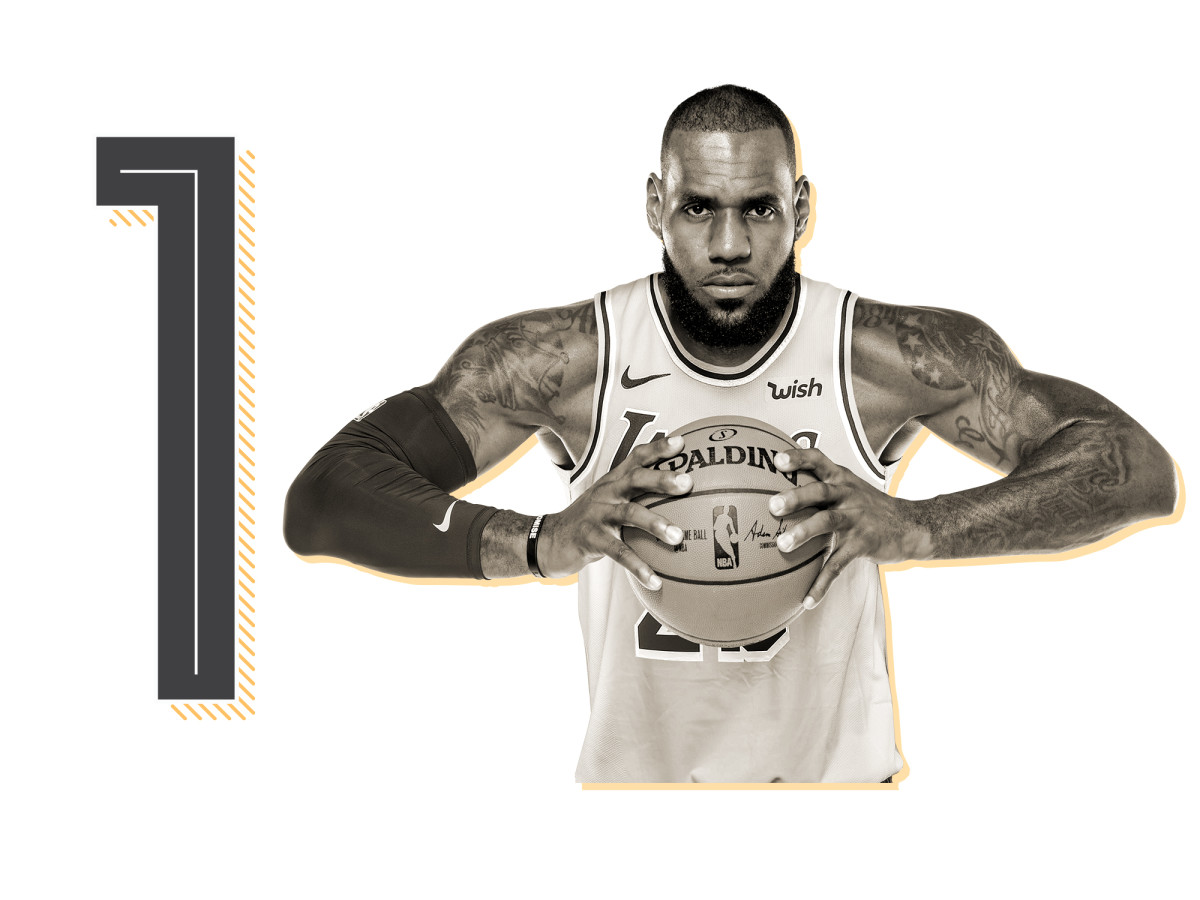
LeBron James
Los Angeles Lakers
As James (27.5 PPG, 8.6 RPG, 9.1 APG) has waded into political and social justice issues, expanded his philanthropic endeavors, launched a budding entertainment empire, and positioned himself as one of the country’s most visible fathers, he’s taken to wearing and sharing a new motto: “More than an athlete.” The 14-time All-Star and aspiring billionaire knows the financial and emotional power of catchy slogans and hashtags— from “Just do it” to “Strive for Greatness” to “Kid from Akron”—and this latest entry will serve him well as he prepares to shift out of his prime and grow his net worth in L.A.
Make no mistake: James is more than an athlete, but he’s still the NBA’s most outstanding, most valuable and most awe-inspiring athlete. He shook the league by leaving the Cavaliers for a four-year, $154 million contract with the Lakers in July, he helped open a public school in his hometown, he will sell untold warehouses full of yellow No. 23 jerseys, and he will dominate headlines, magazine covers and trending topics all season long. But when the term “celebrity athlete” is used to describe him, the emphasis should remain on the second word rather than the first. His immense basketball intelligence, extraordinary skill, unprecedented longevity as an elite player, and capacity for raising his game in the postseason and in late-game moments demand it.
Basketball historians will look back in 20 years and lament the fact that James, now 33, has just four MVPs to show for his decade-plus of dominance. Last season was another potential MVP that got away; While James Harden was a worthy winner, James had a strong case too. He played all 82 games, led the league in minutes, and carried Cleveland to 50 wins despite two roster overhauls and multiple long-term injuries to his fellow starters. Individually, he ranked in the top-three in PER, Win Shares and WARP. Although he downshifted his night-to-night effort on defense, he was the determining factor between wins and losses as often as anyone in the game. James led Cleveland to a 30-15 record in games that were decided by five points or fewer in the final five minutes, and he ranked first league-wide in clutch points, second in clutch plus-minus, third in clutch assists, and fourth in clutch rebounds.
Before a flat ending against a clearly superior opponent, James’s 2018 postseason was a mini-movie. He led the playoffs in PER, Win Shares, minutes, points, shots, free throws and assists, compiling averages of 34.0 PPG, 9.1 RPG, 9.0 APG. During 22 games, he tallied eight 40-point games, four triple-doubles, multiple buzzer-beating game-winners, his first full 48-minute playoff game since he was 21 years old, and the first 50-point game in the Finals since Michael Jordan in 1993.
Those two months of basketball featured raw emotion when he jumped on the scorer’s table after drilling a three to beat the Pacers. They featured exquisite skill when he nailed a running banker to beat the Raptors. They featured remarkable will when he posted 35 points, 15 rebounds and nine assists on the road to outlast the Celtics in Game 7. And they featured perhaps the most visible agony of his career when his Game 1 for the ages was undone by J.R. Smith’s blunder.
James tops this list, for the sixth time in its six-year history, because there’s no other active player who could match all the achievements listed above. And because there’s only one other basketball player in history who had the capacity to strike all the chords listed above. Like Michael Jordan before him, James the athlete will eventually be eclipsed by his own legend. But as he prepares to lead a new team of prospects and misfits in a fame-obsessed metropolis, it’s clear that time hasn’t yet come. — BG
